From the vineyards of Franconia to the first foothills of the Bavarian Alps, the Romantic Road is a lovely trail that meanders among the most authentic and historic German towns for approximately 400 kilometres.
It is the most renowned and valued itinerary in Germany and whether we are foreigners or native Germans, we all have the same feeling: an impression of going back in time to discover the rich history of that region and its culture. All of that is pleasantly accompanied by landscapes which change over the crossed territories: vineyards, countryside, meadows, forests, and to conclude marvellously the journey, the Bavarian mountains.
From Lower Franconia in Würtzburg to the south of Bavaria in Füssen, gateway to the prestigious castles of Ludwig II of Bavaria, let yourself be guided by one of the most charming roads in Europe.
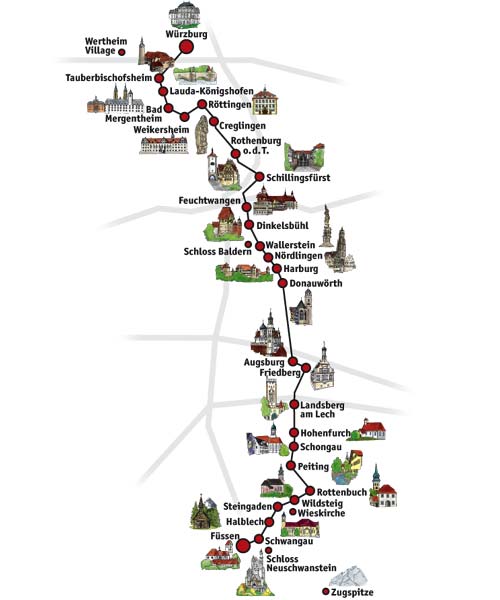
WÜRZBURG (KM 0)
The Romantic Route starts in the university town of Würzburg on the Main. Surrounded by vineyards, the first impression it gives me is one of an open and green city like Freiburg im Breisgau. It is very pleasant to walk along the river and to rest there for a few moments.
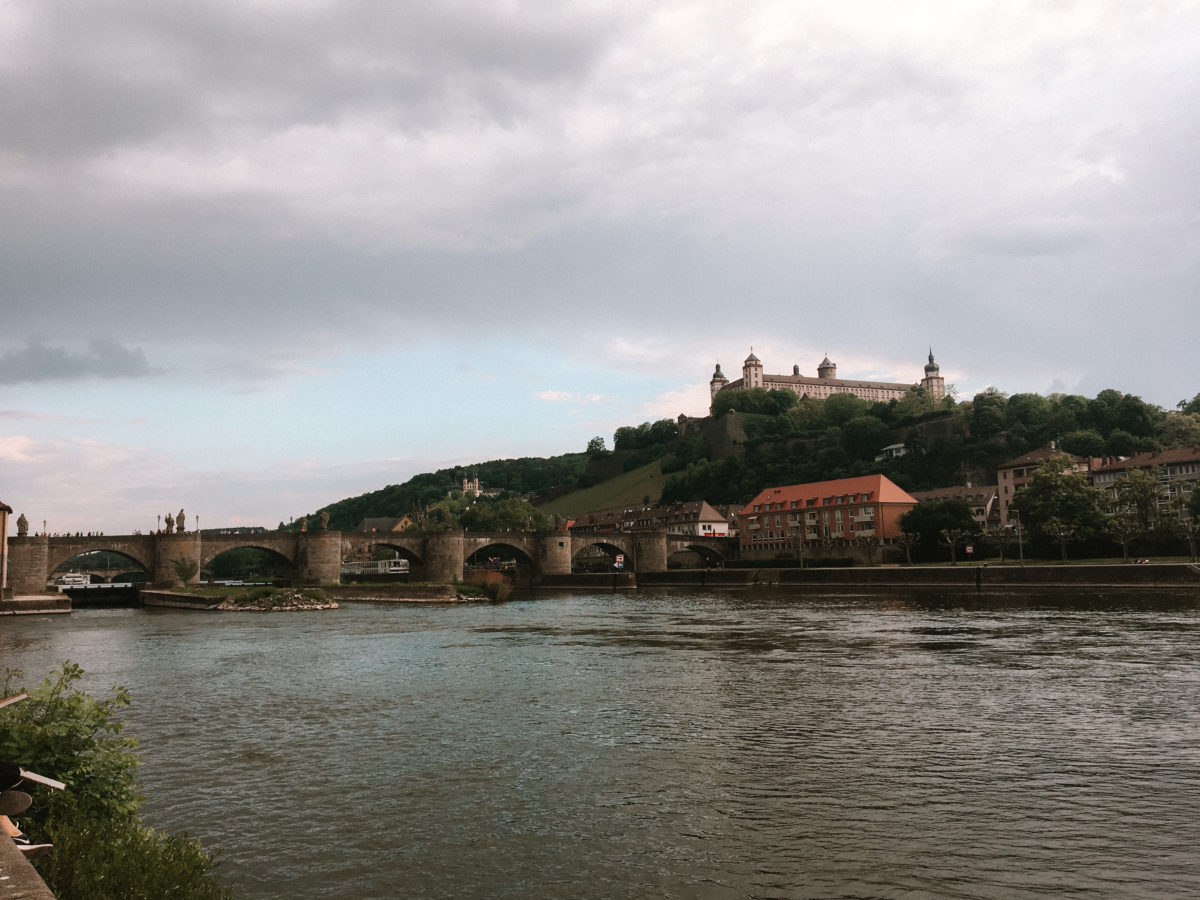
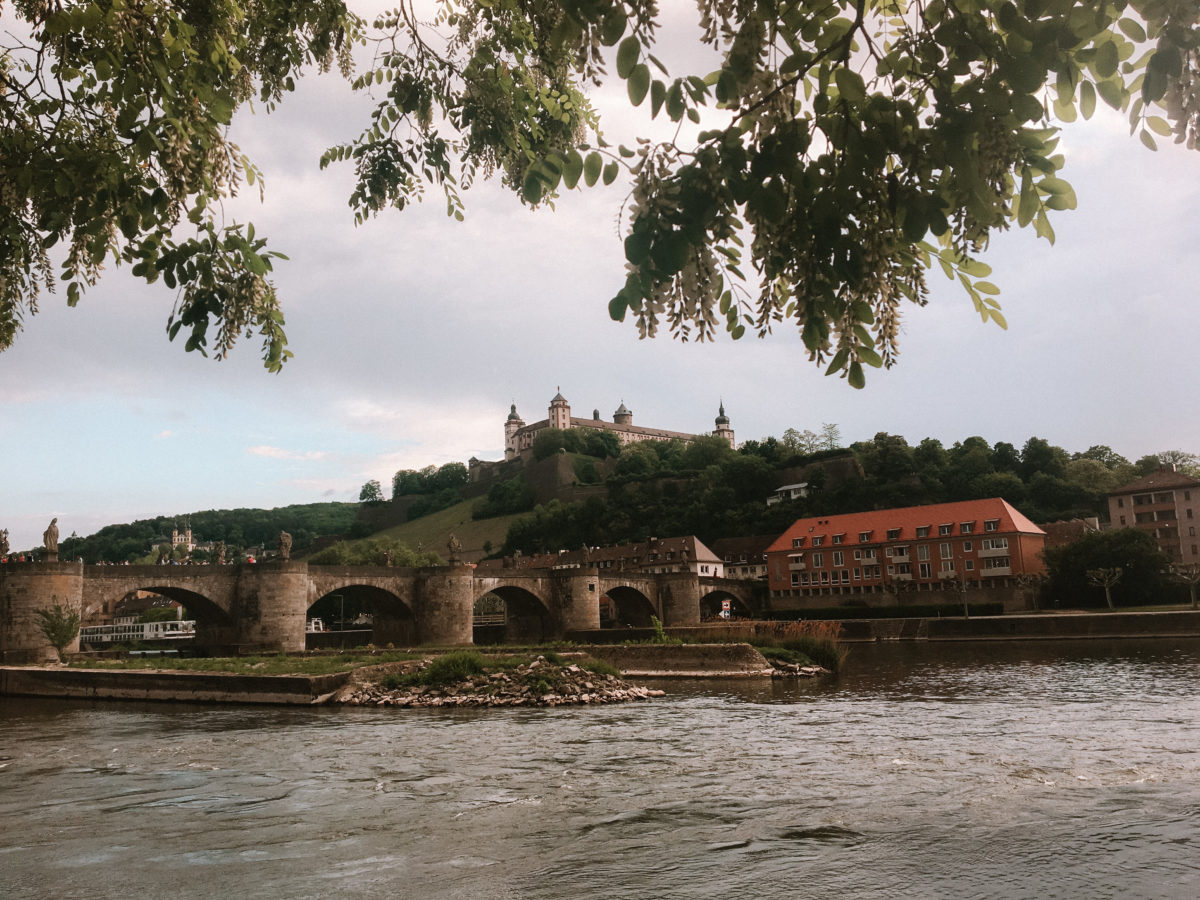
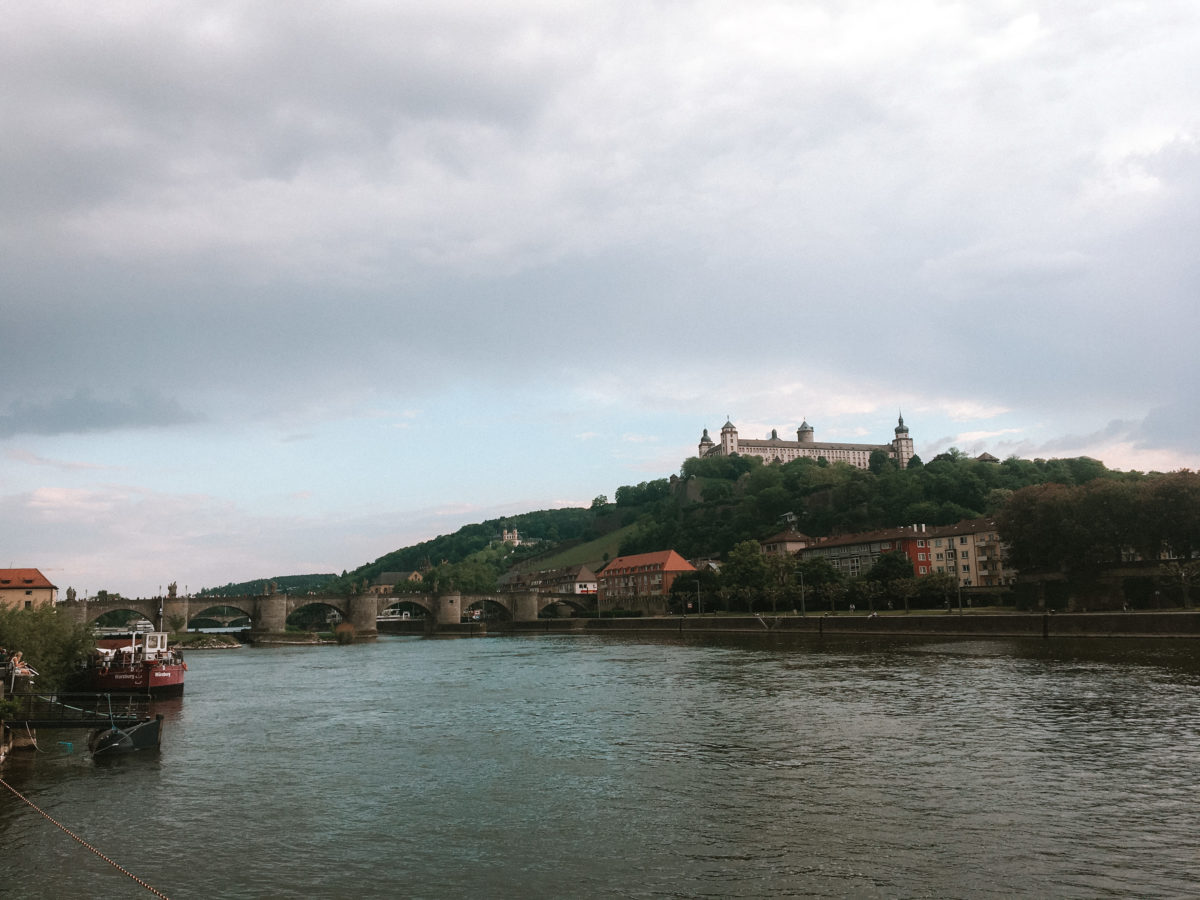
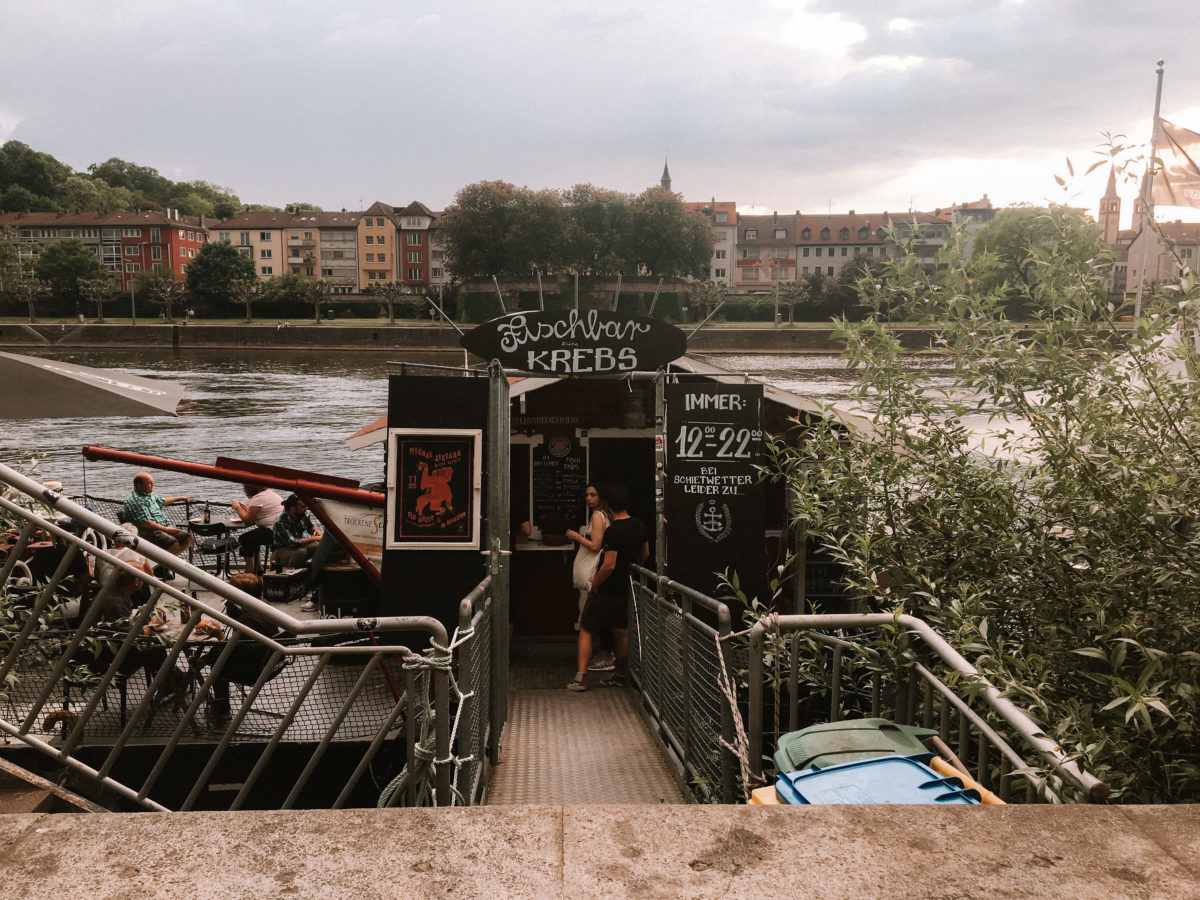
Besides, at the beginning of the evening, it is the meeting place for young people to taste a good beer. Yet, in this region, it is the wine that takes primacy over a good pint. Rather used to the excellent German beer, I tasted the Franconian wine and it was a real delight for the taste buds. Directly at the entrance of the Alte Mainbrücke bridge, which looks a lot like Prague’s Charles Bridge, two shops offer tastings of local wines: a real open-air aperitif. In addition, many wineries offer tours in the surrounding area with wine tasting: for more information, please ask at the city’s tourist office.
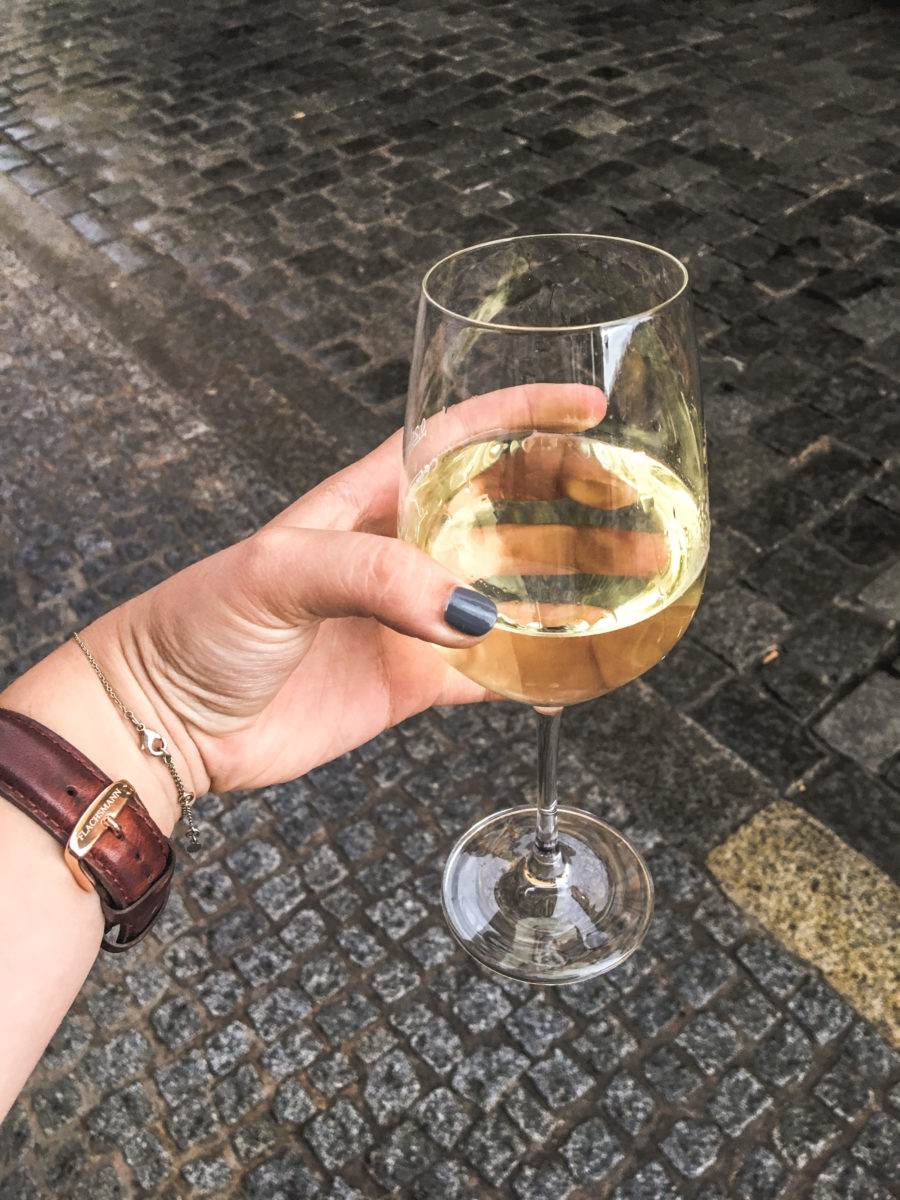
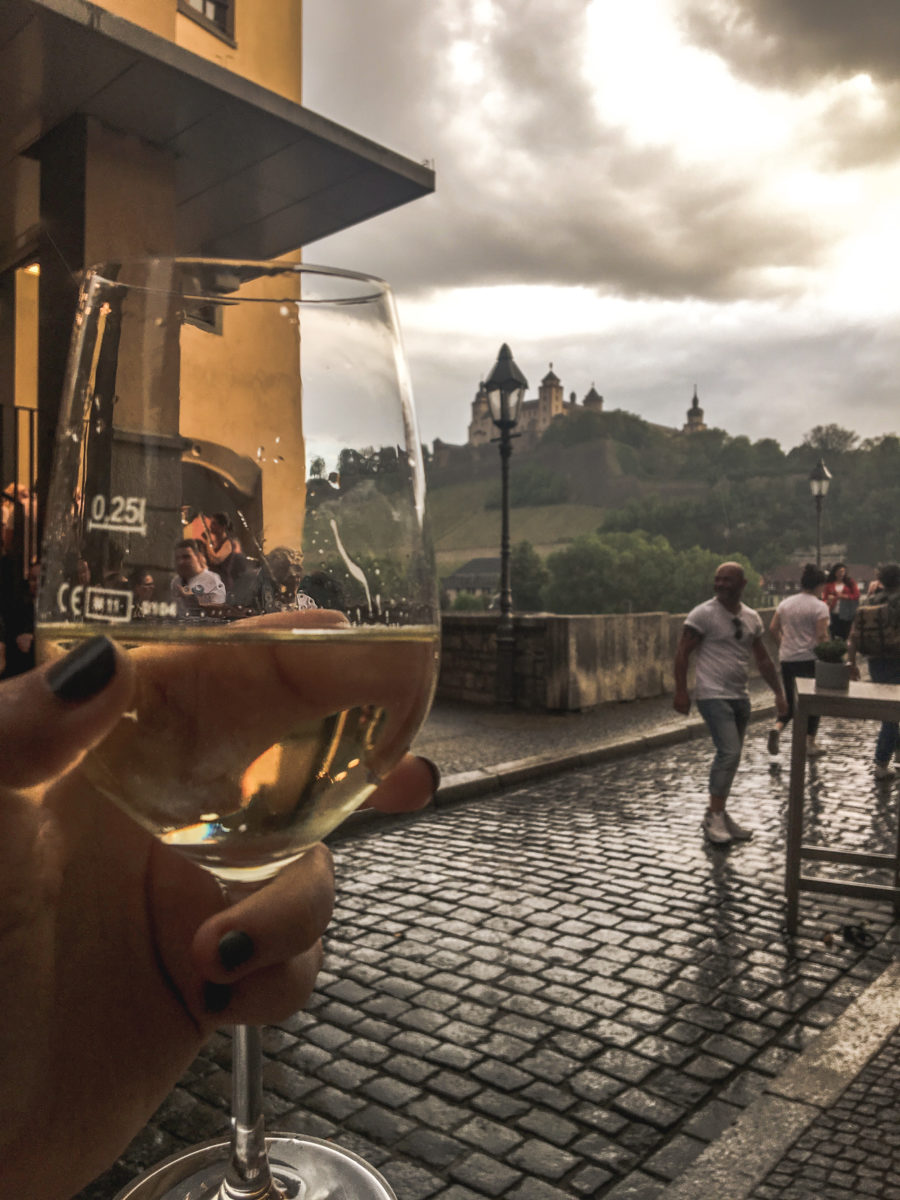
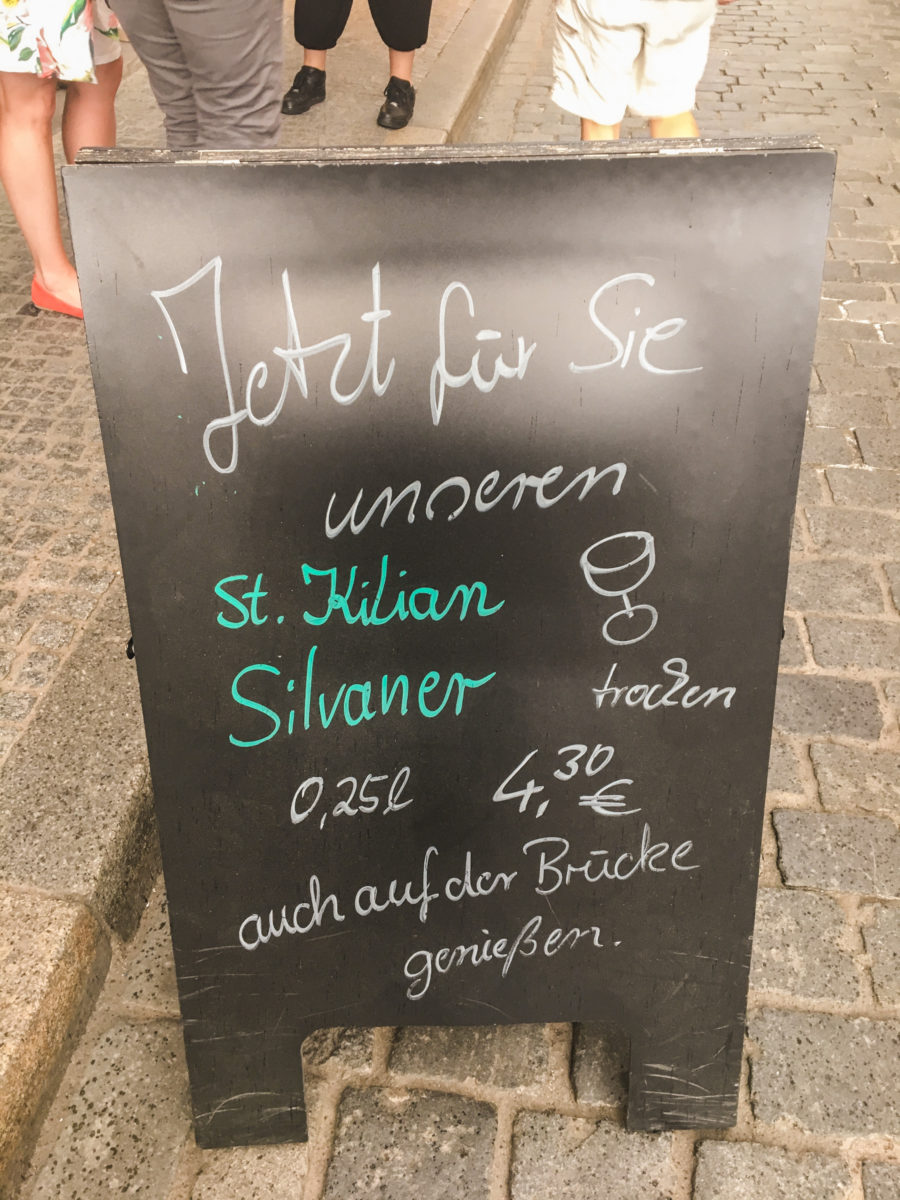
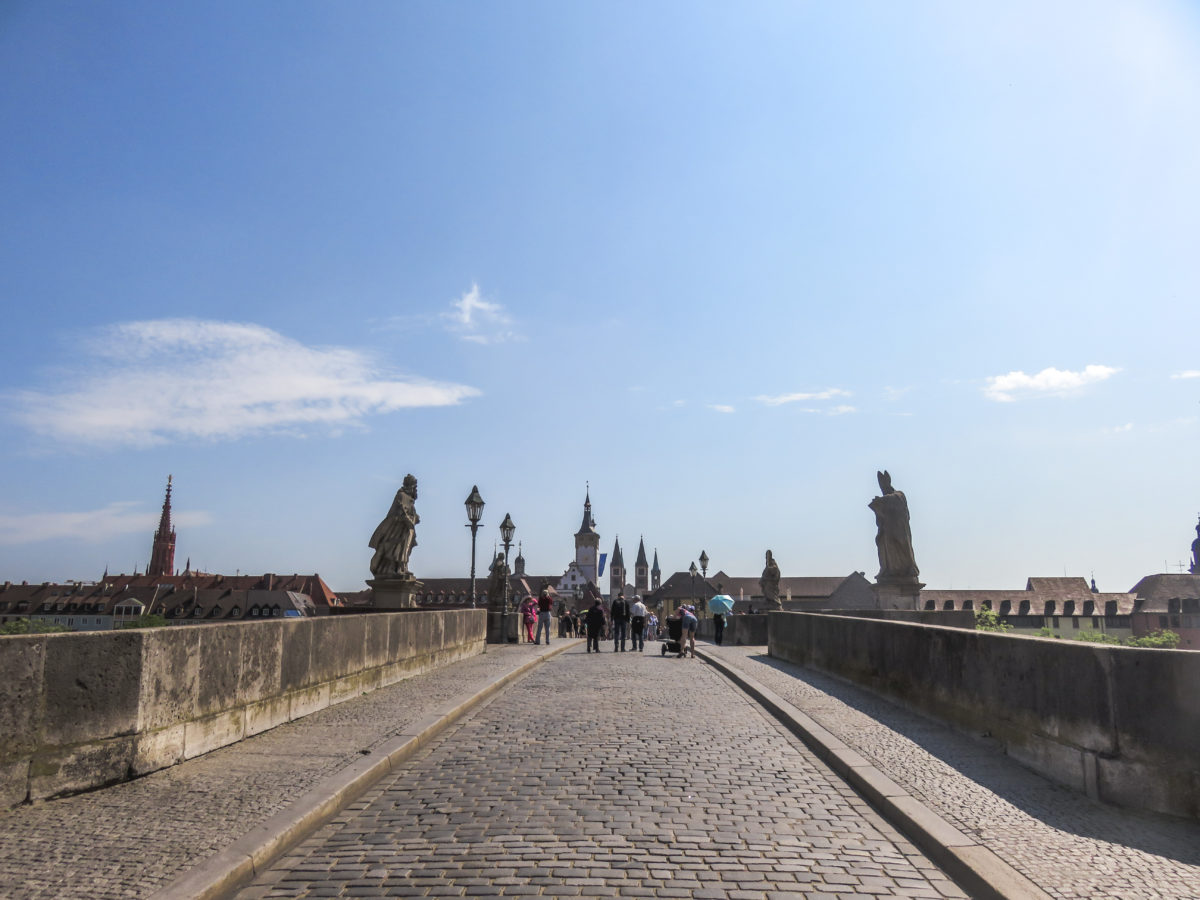
Similar to Bratislava, the city is dominated by a fortress above the river Main. We reach it by crossing the Alte Marienbrücke with its baroque statues of saints and then by taking one of the two routes marked on the city signs. This bridge was built between 1473 and 1543 in place of a Roman bridge which was destroyed.
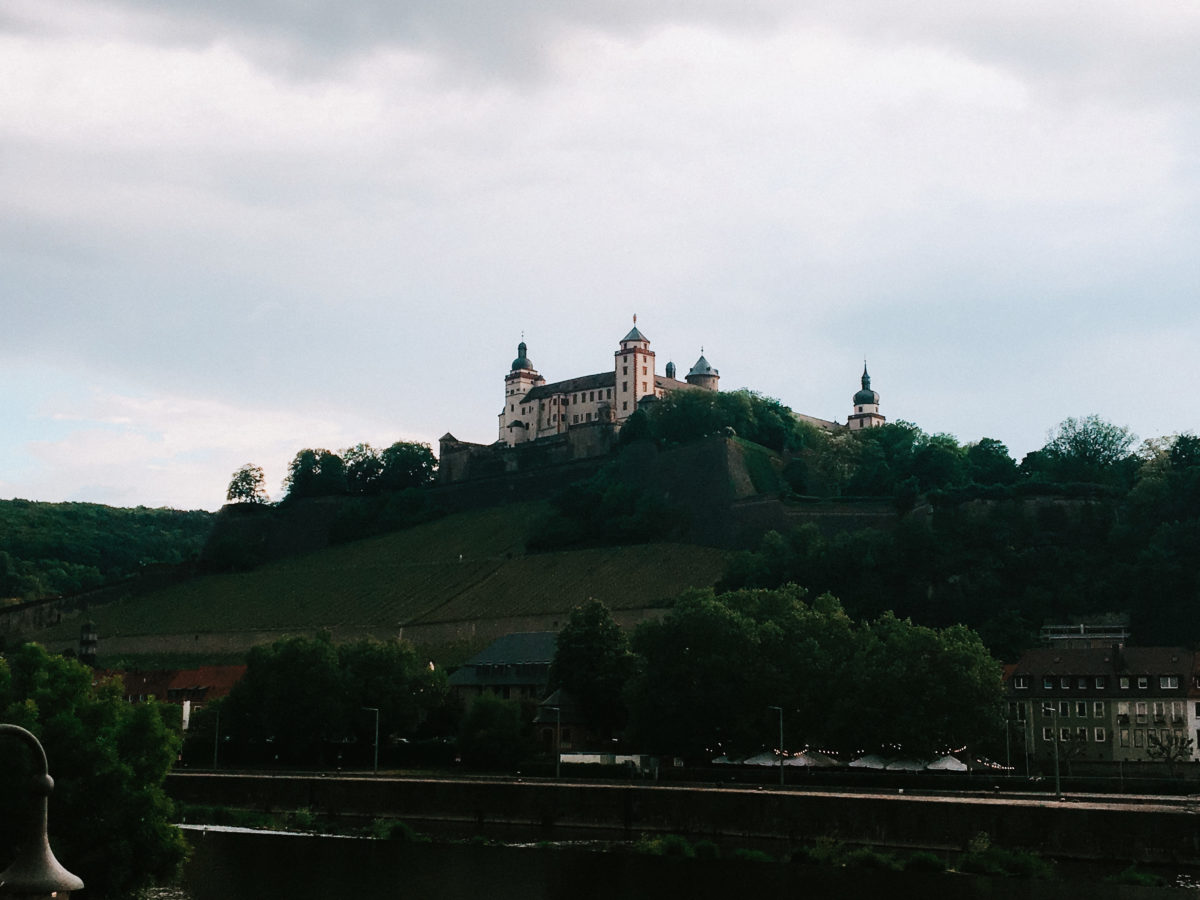
I chose the one that crosses the vineyards under the citadel. Unfortunately, I didn’t have much time to visit the entire fortress or to climb to the top to see the view of the city, however, under a welcome sun, the beginning of the route to the middle of the vineyards is quite charming and already allows a nice view of Würzburg.
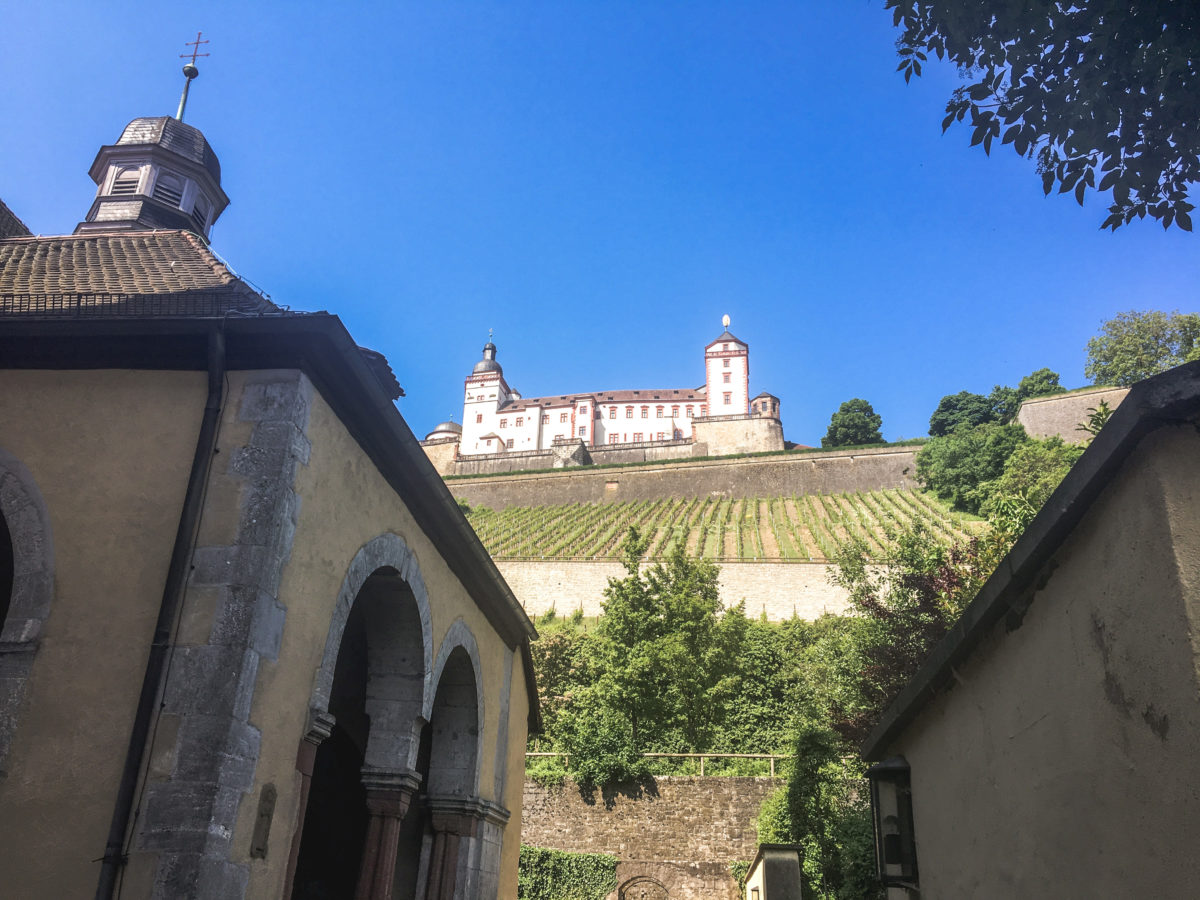
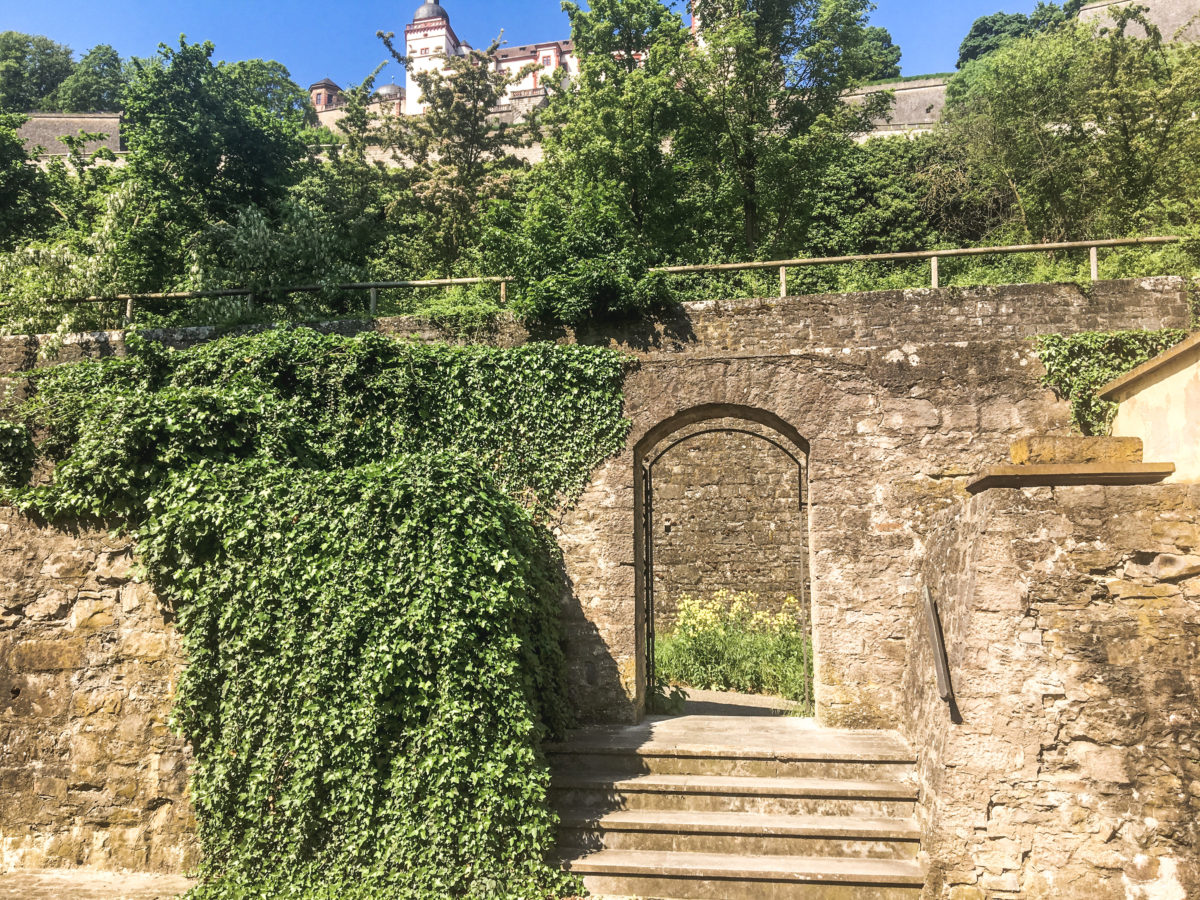
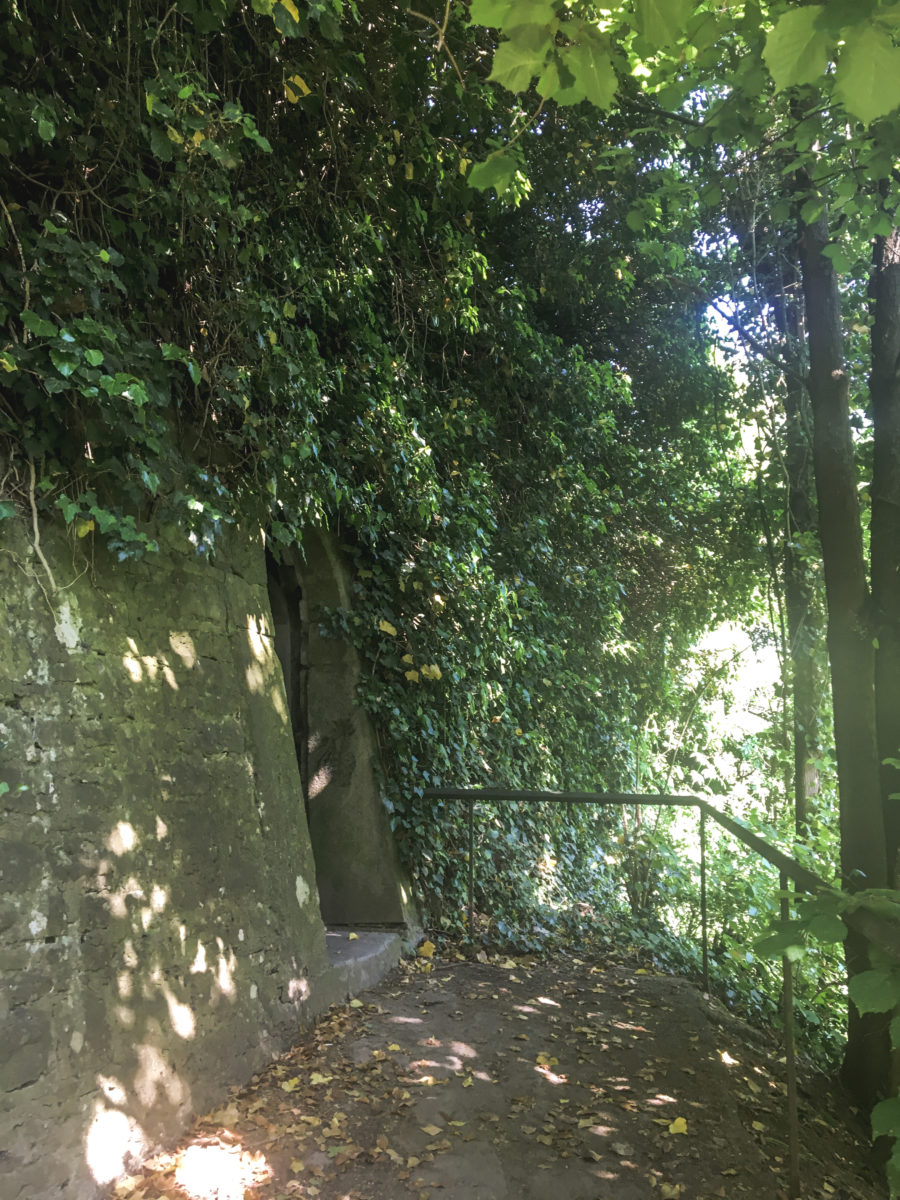
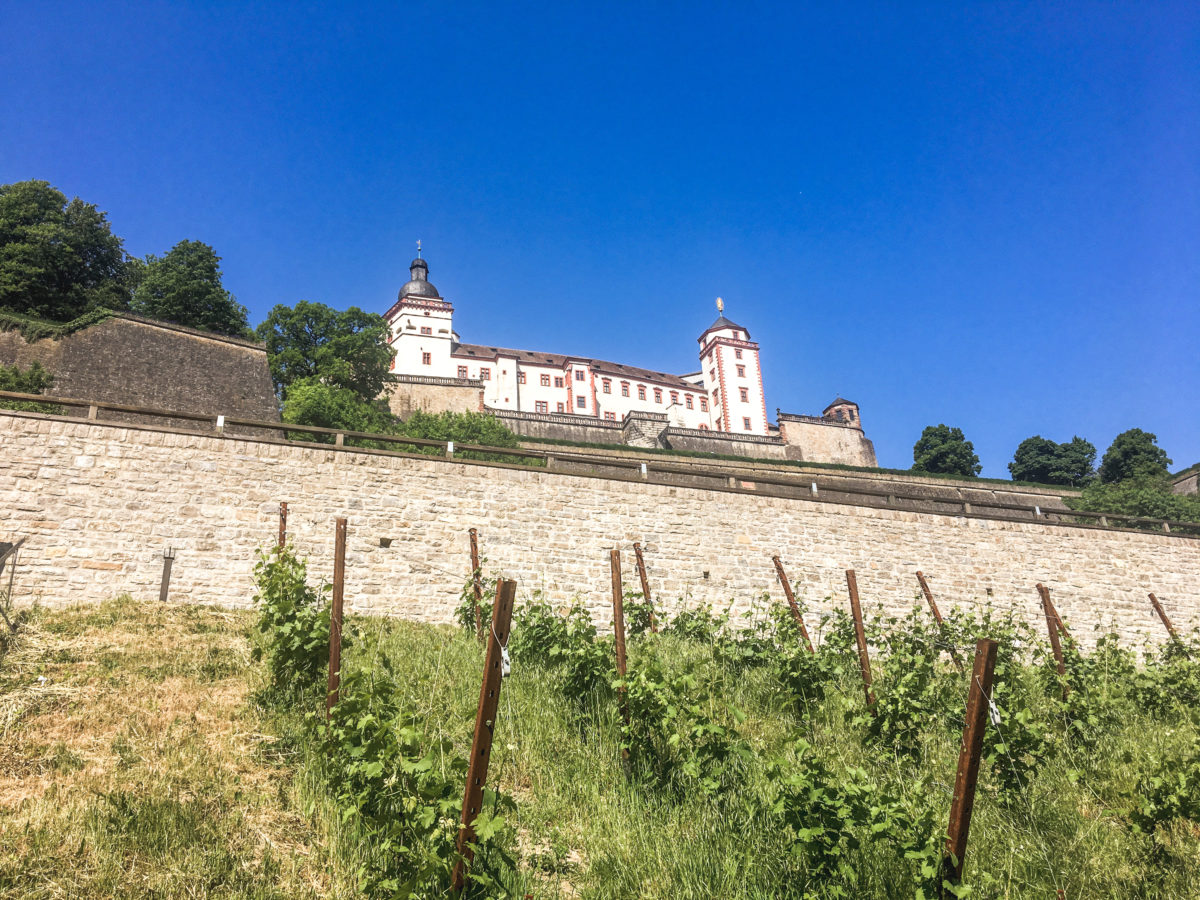

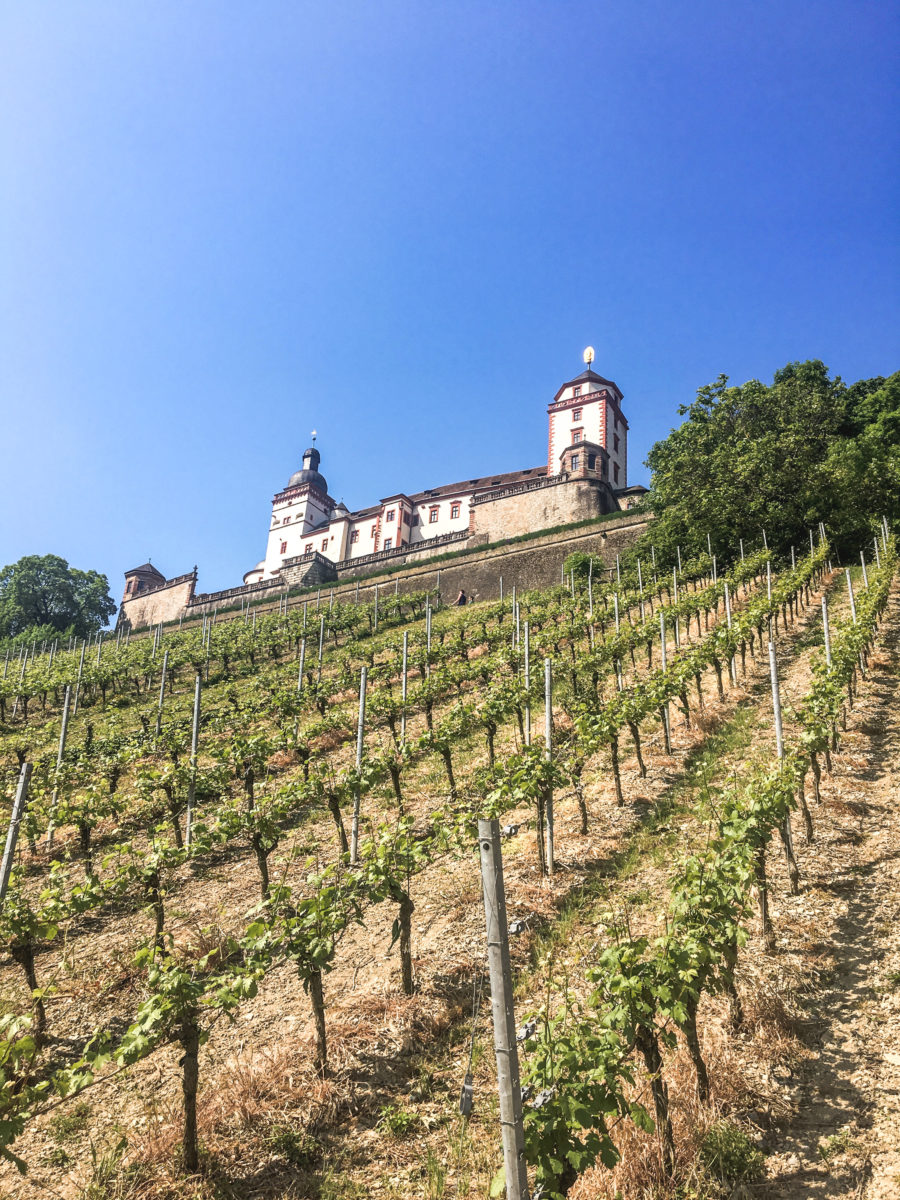
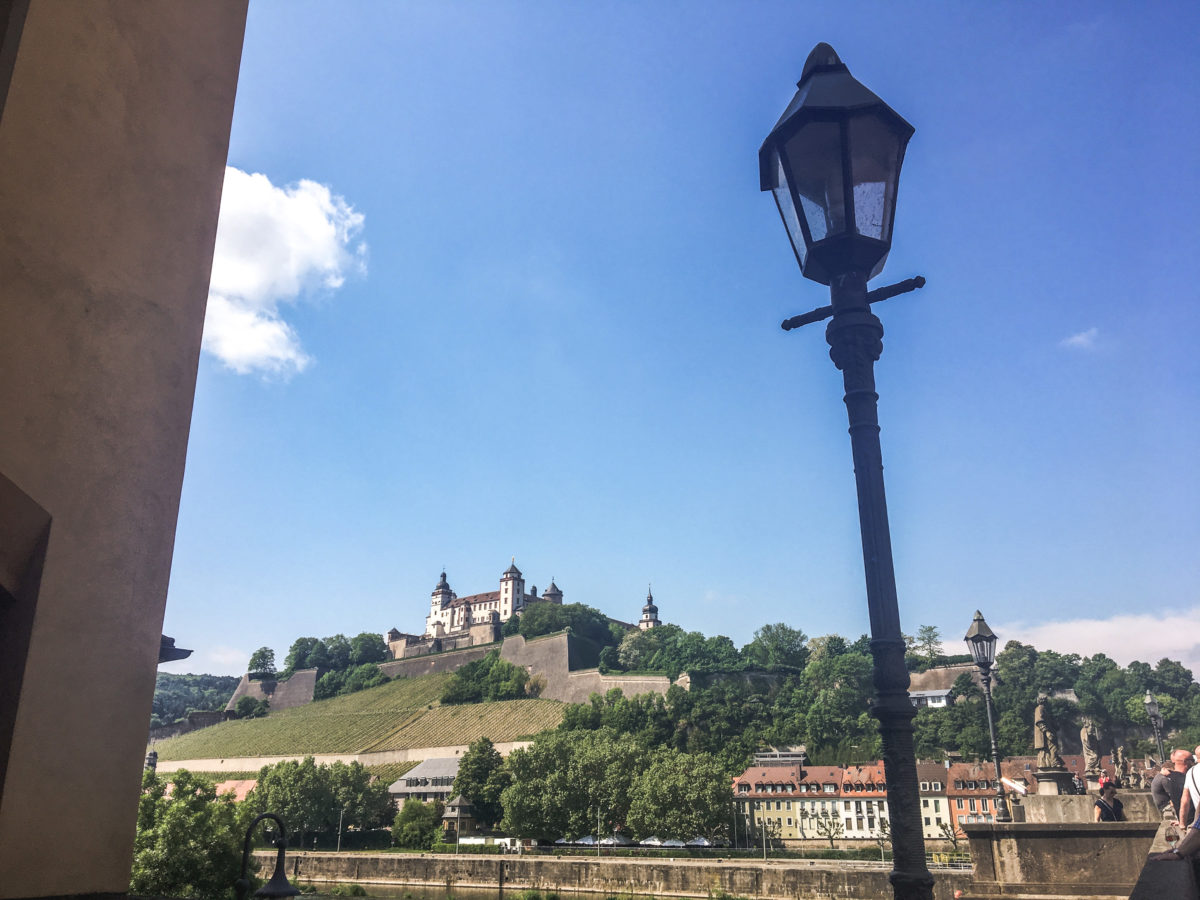
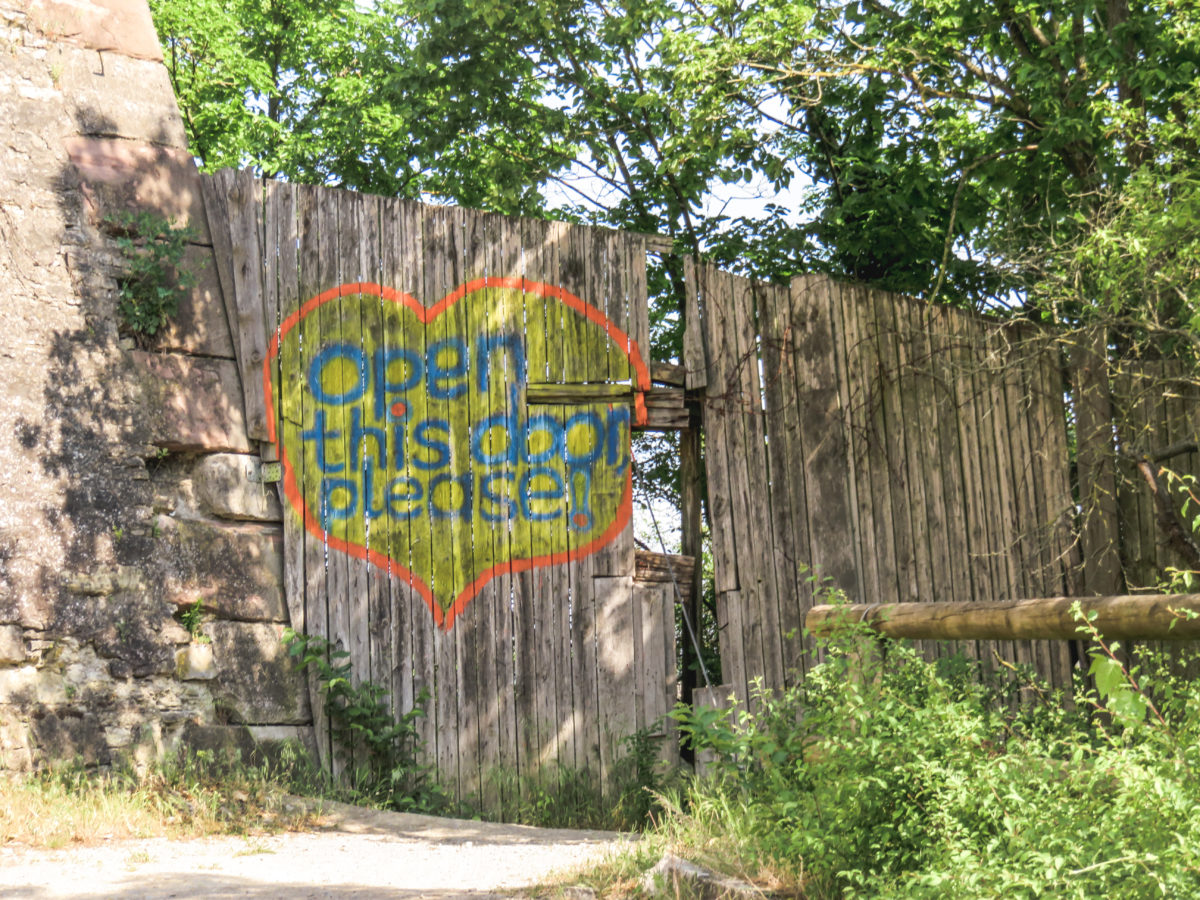
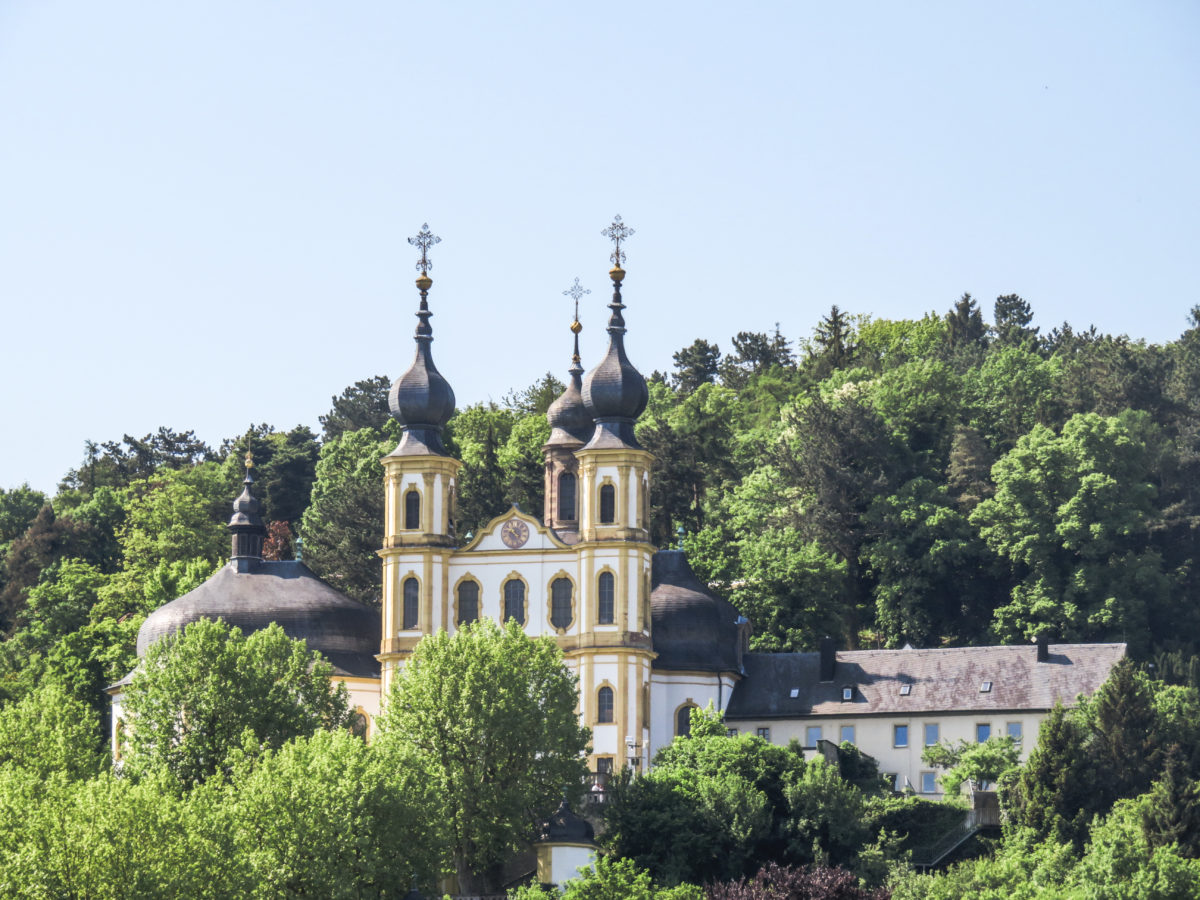
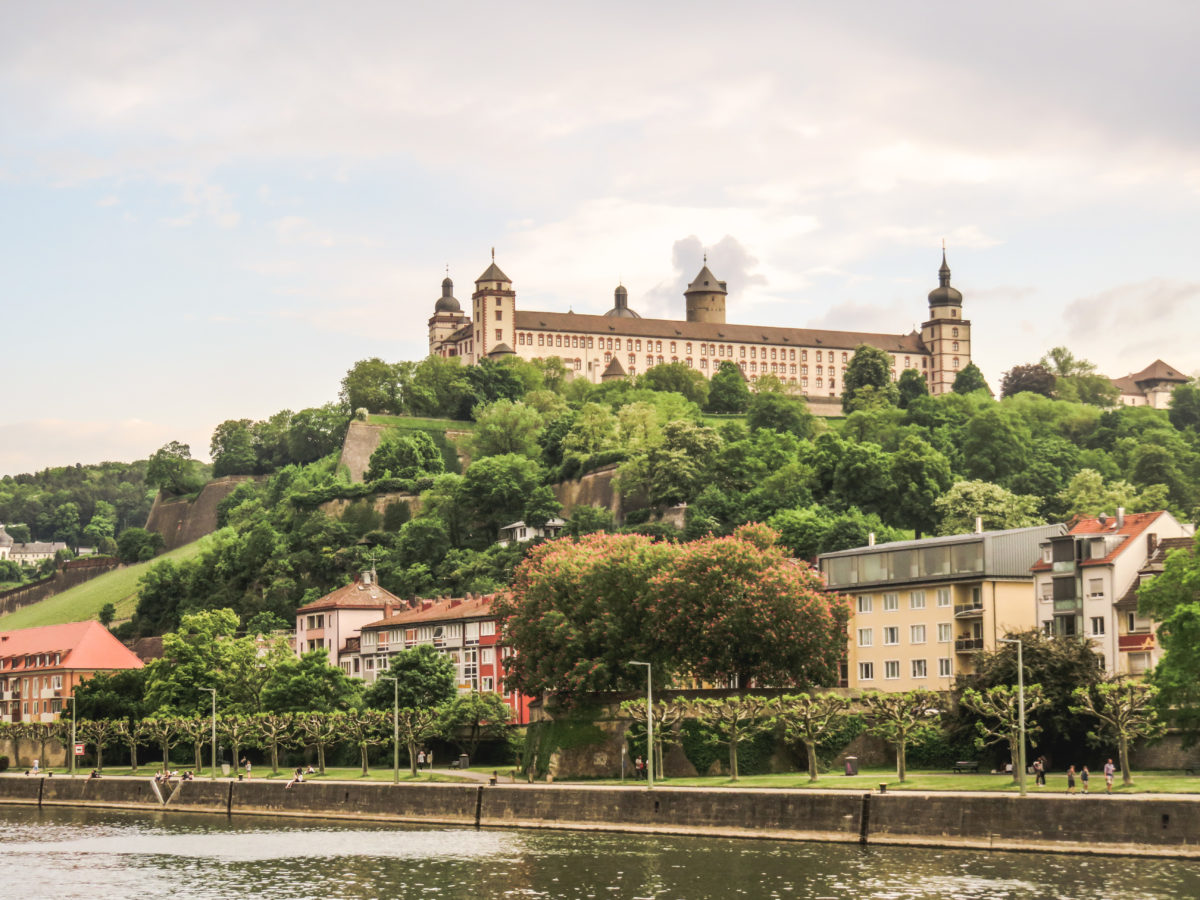
The Old Town can be visited quickly if you don’t take a more in-depth tour of the churches or monuments. Würzburg’s curiosity is its Residenz (Residence), the most representative work of Baroque art in southern Germany and a UNESCO World Heritage Site since 1981. First of all, I absolutely wanted to visit the Residenz because of what I had heard about this place and especially because of the huge fresco by Giovanni Battista Tiepolo representing a tribute to the four continents known at that time when it was created in the castle around 1752. However, after having seen some pictures of the place on the internet, this visit did not seem so important to me and I preferred to quietly enjoy the alleys of the Old Town to stroll around before going back to the car for the next stage.
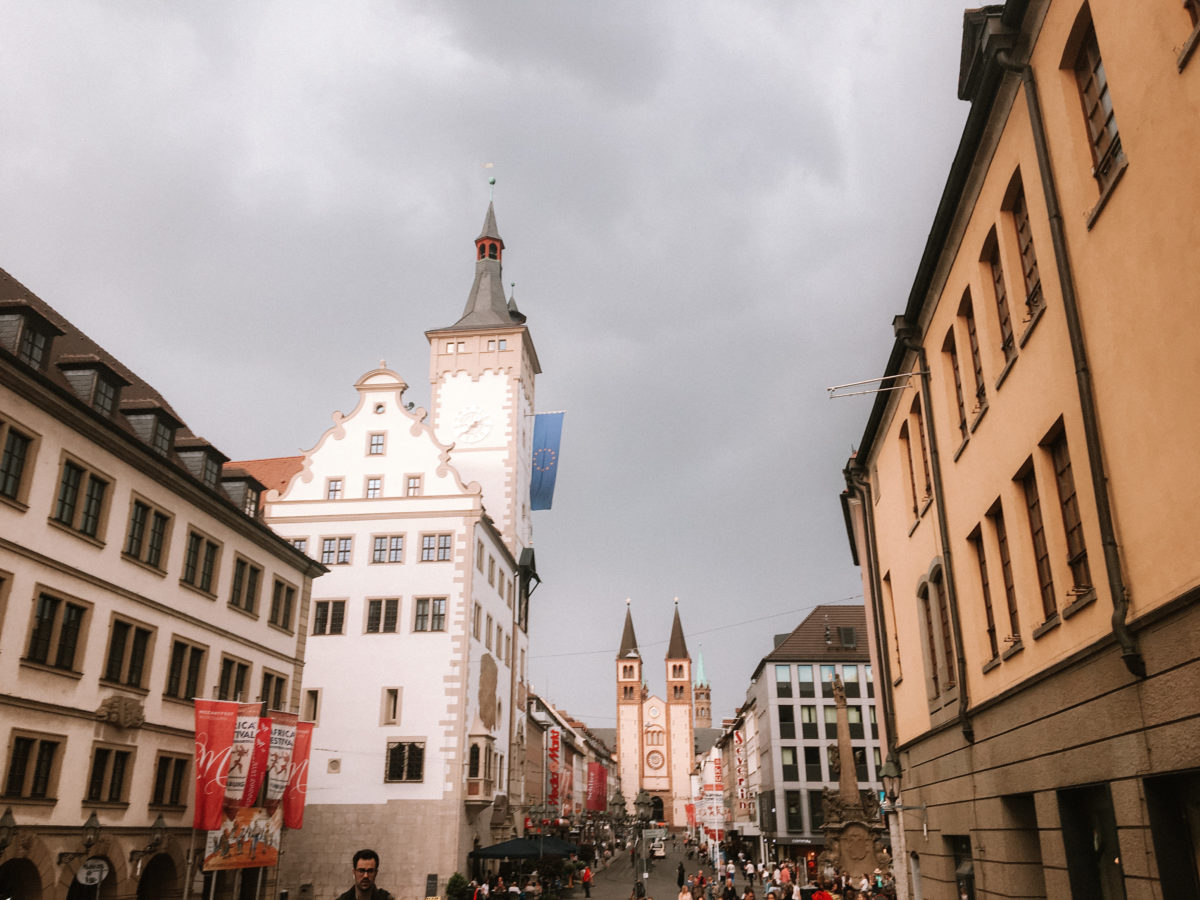
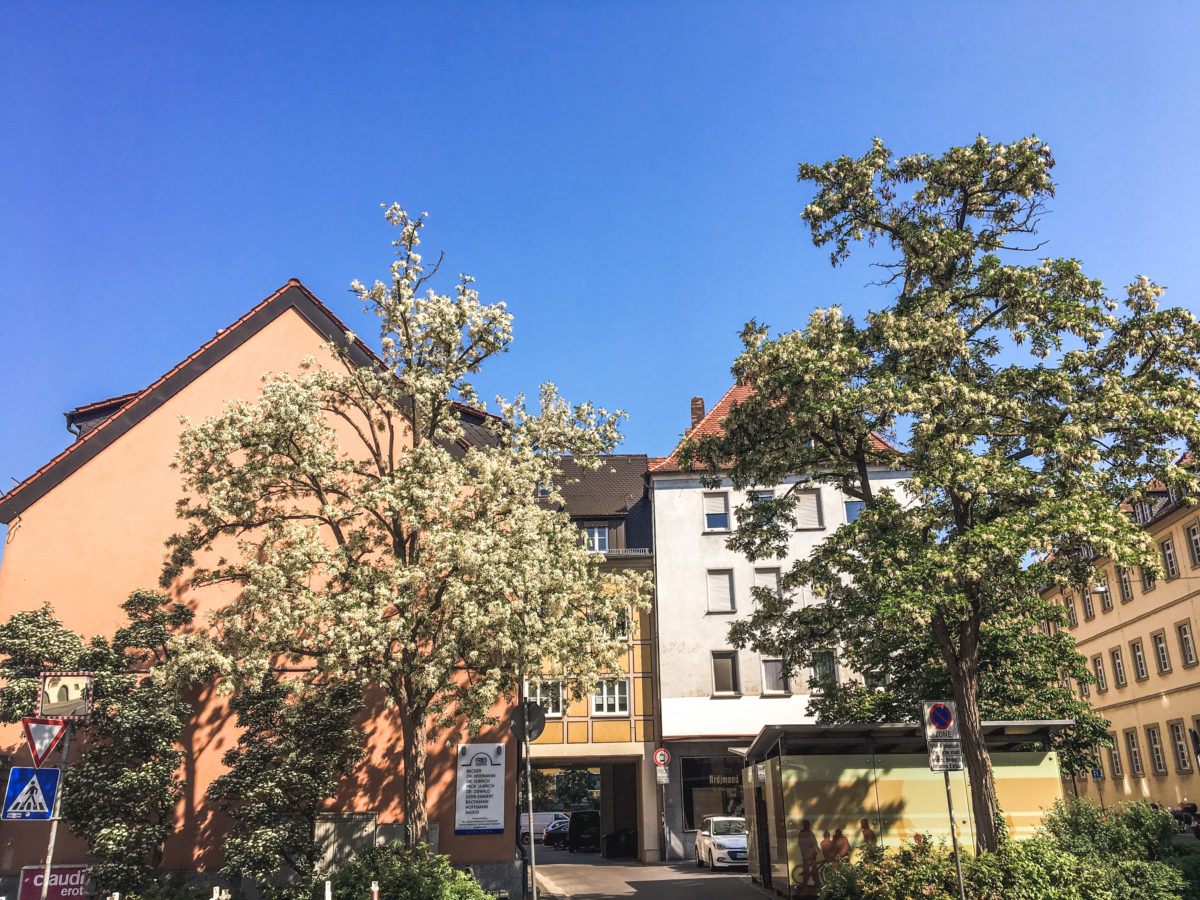
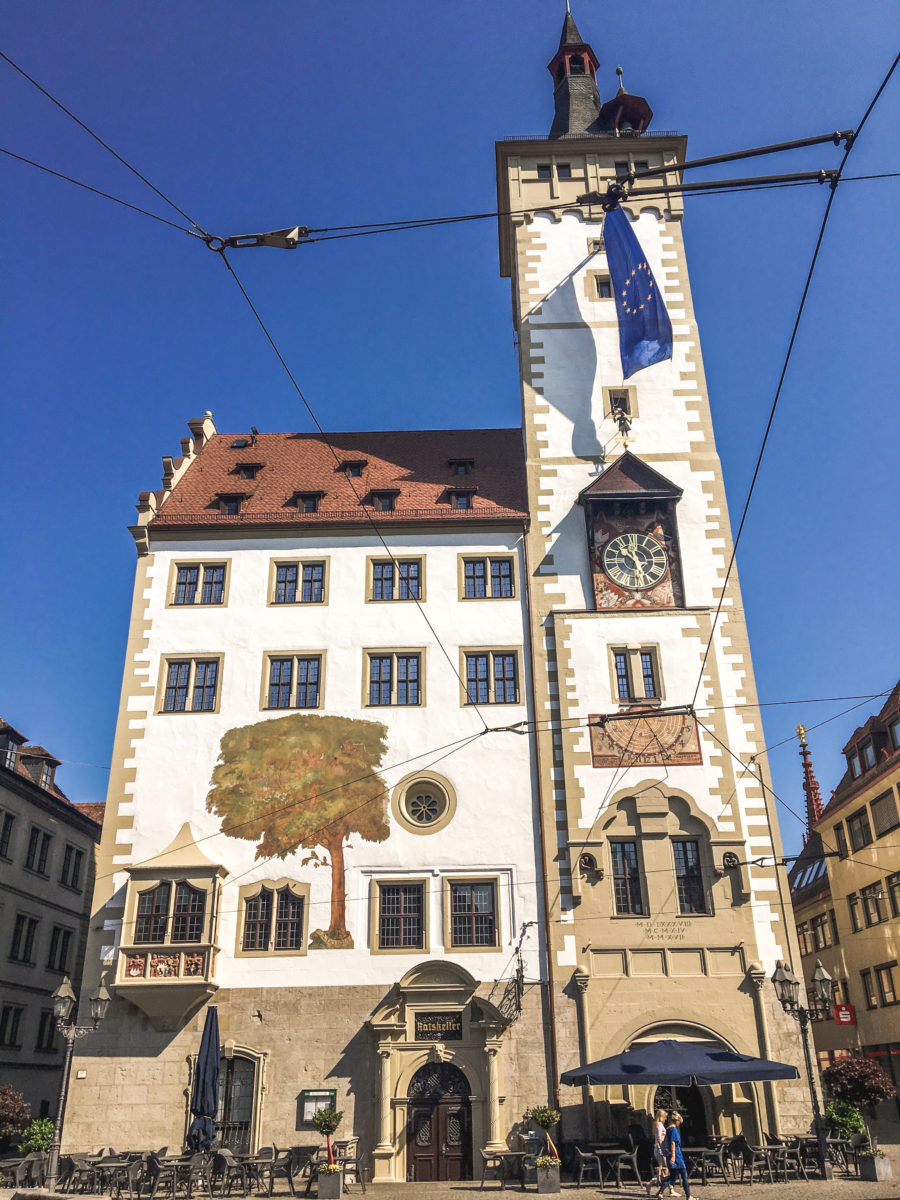


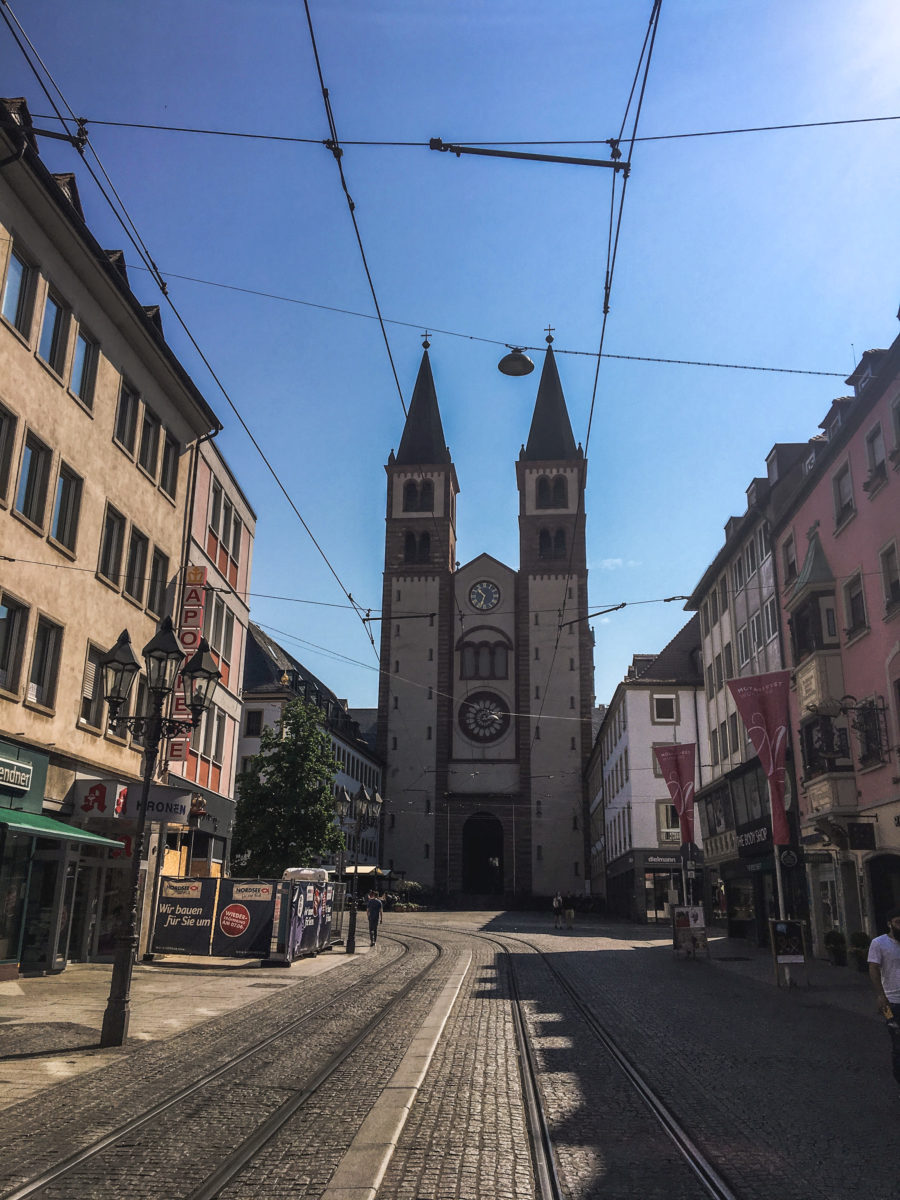
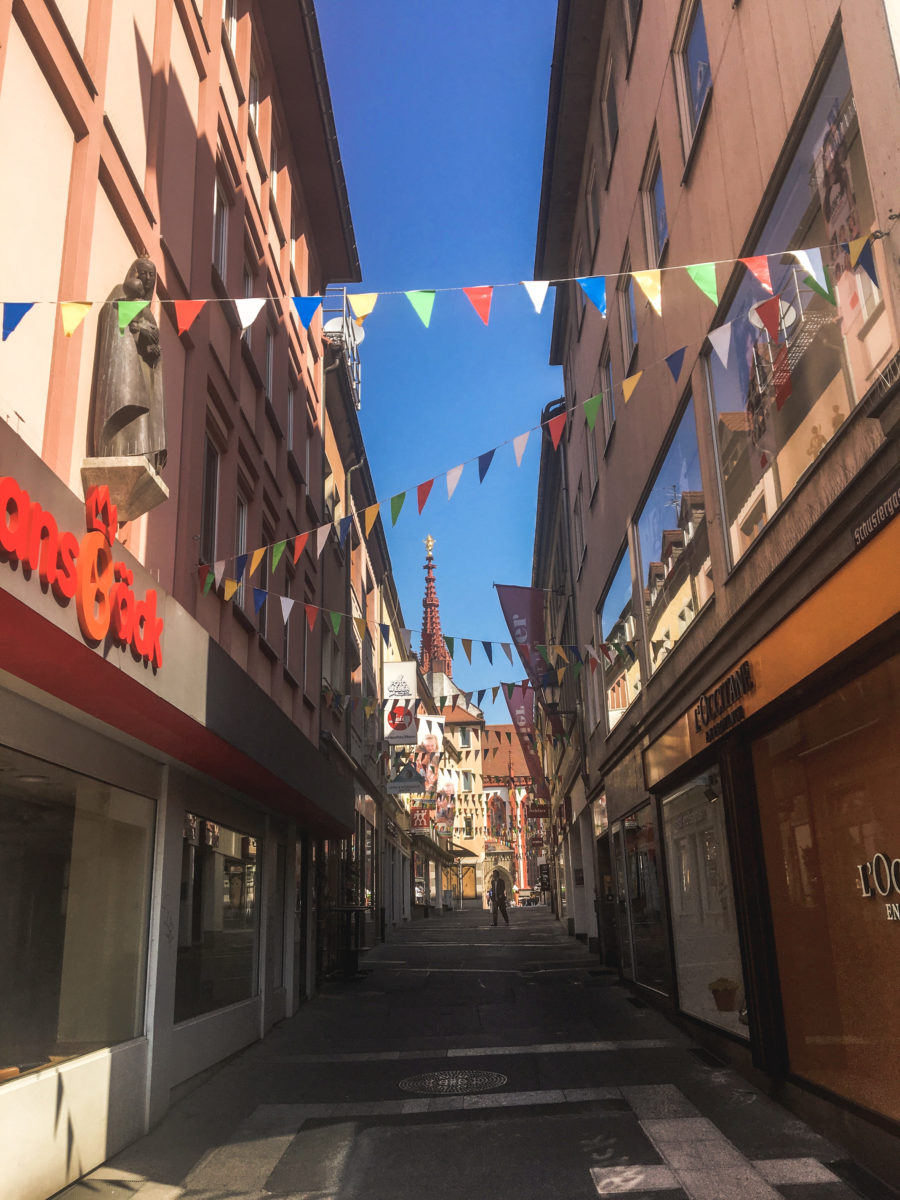
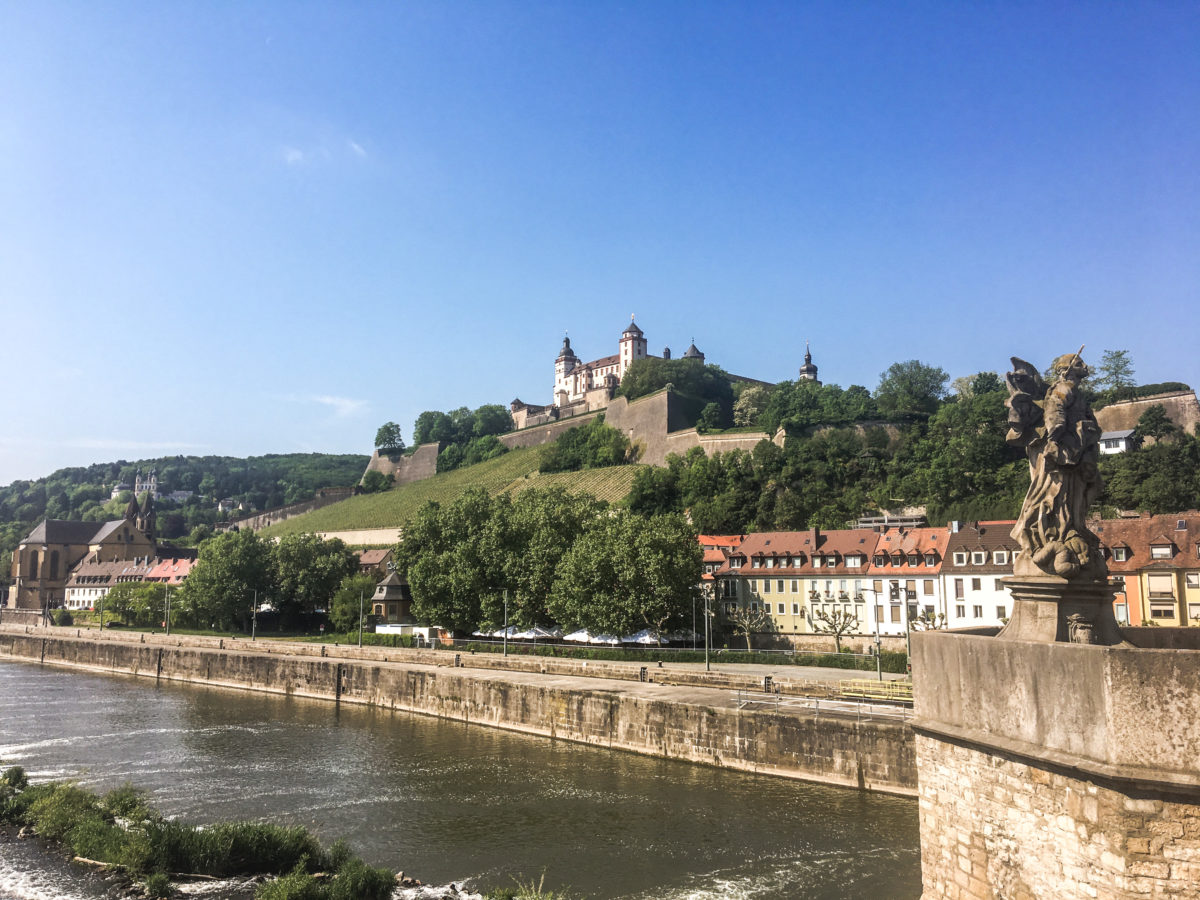
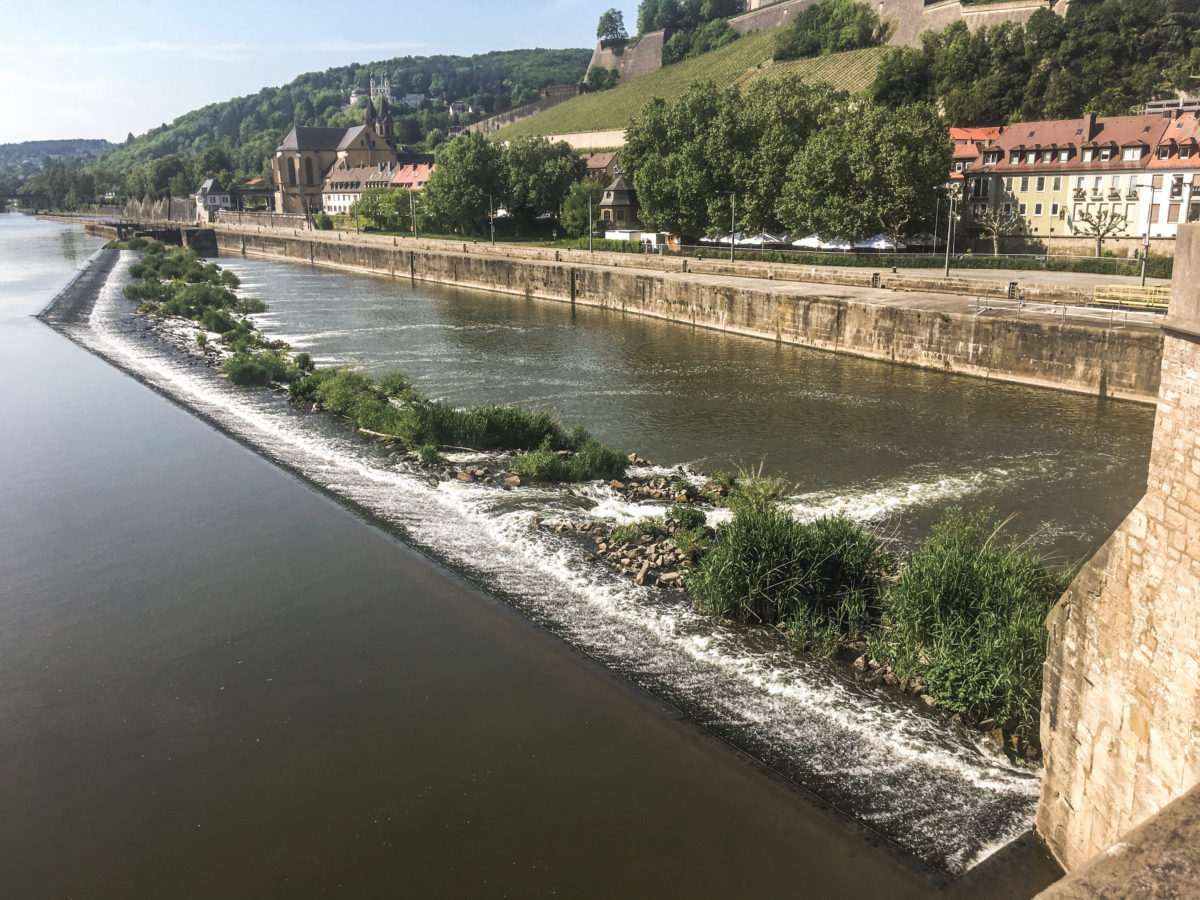
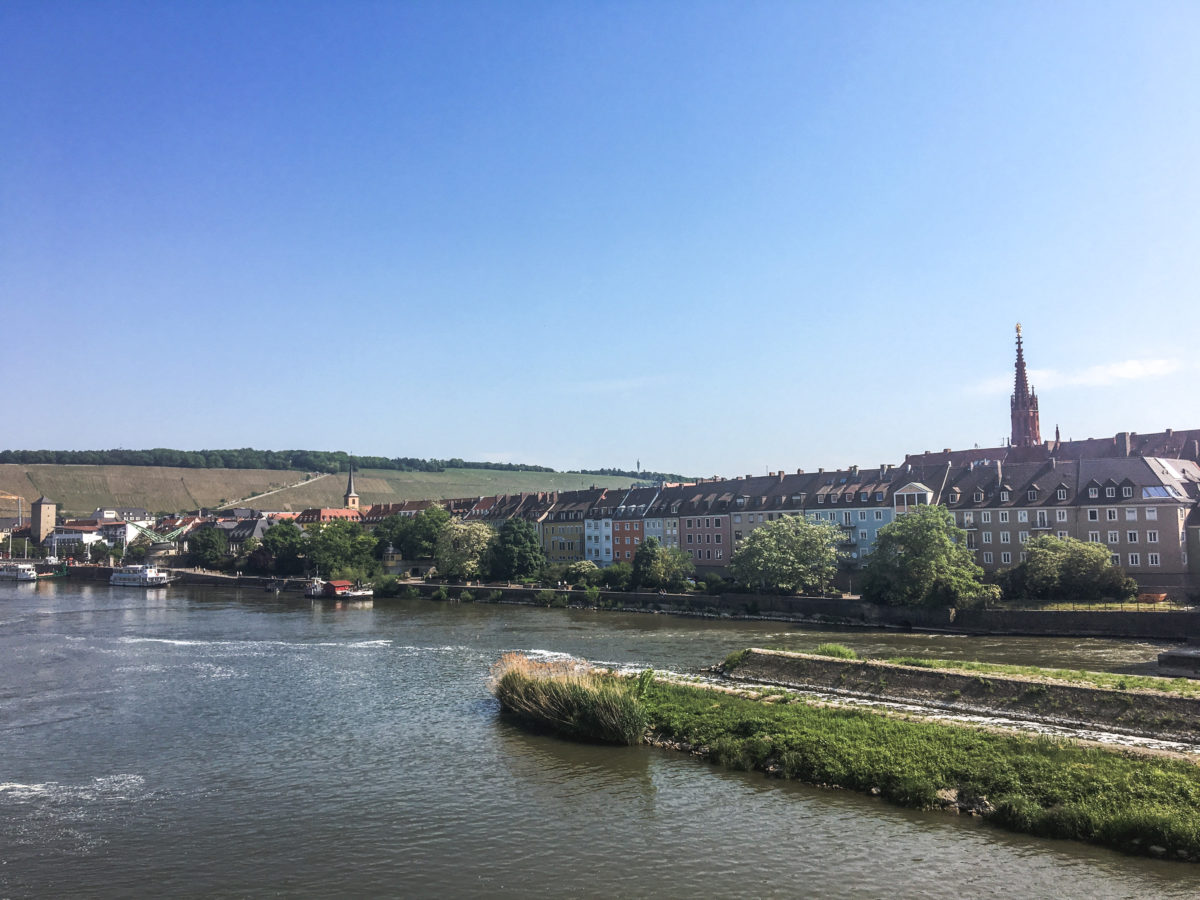

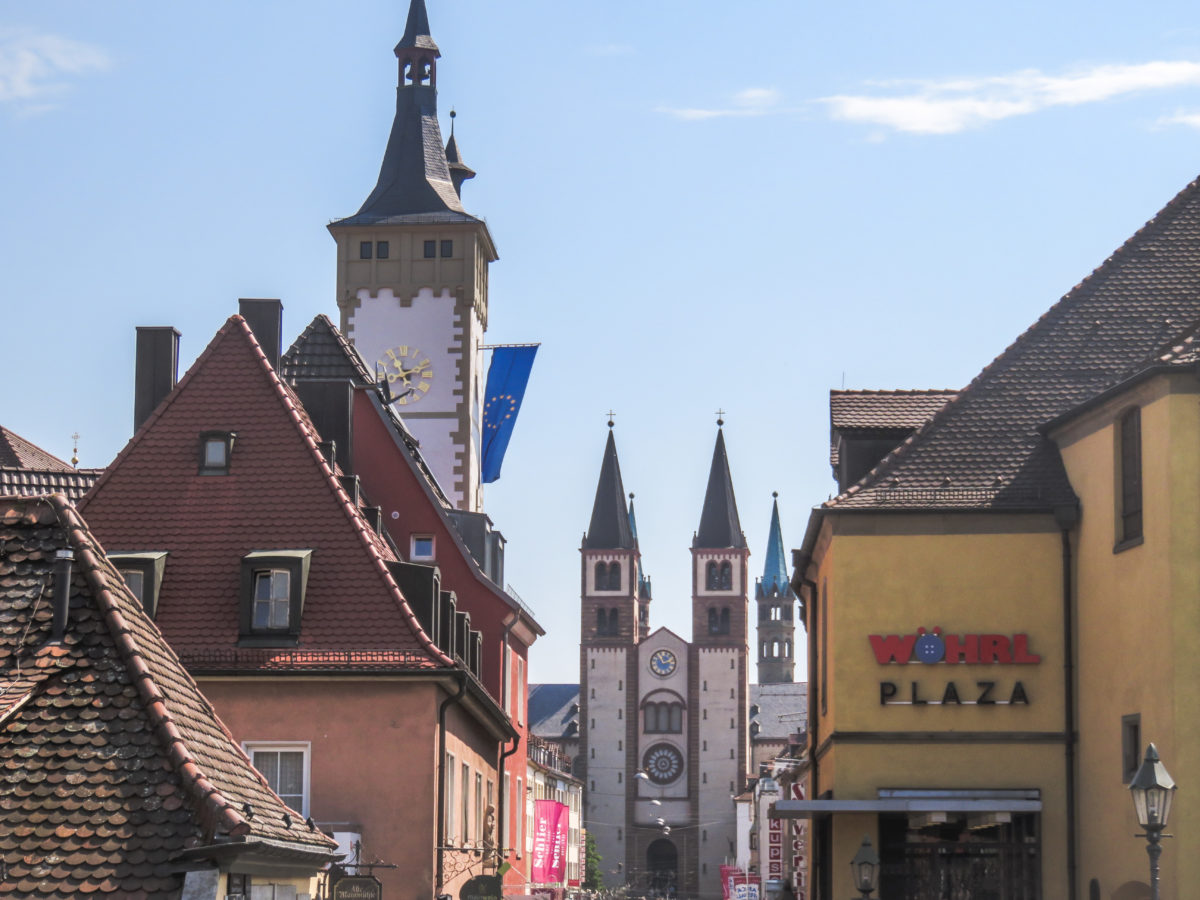
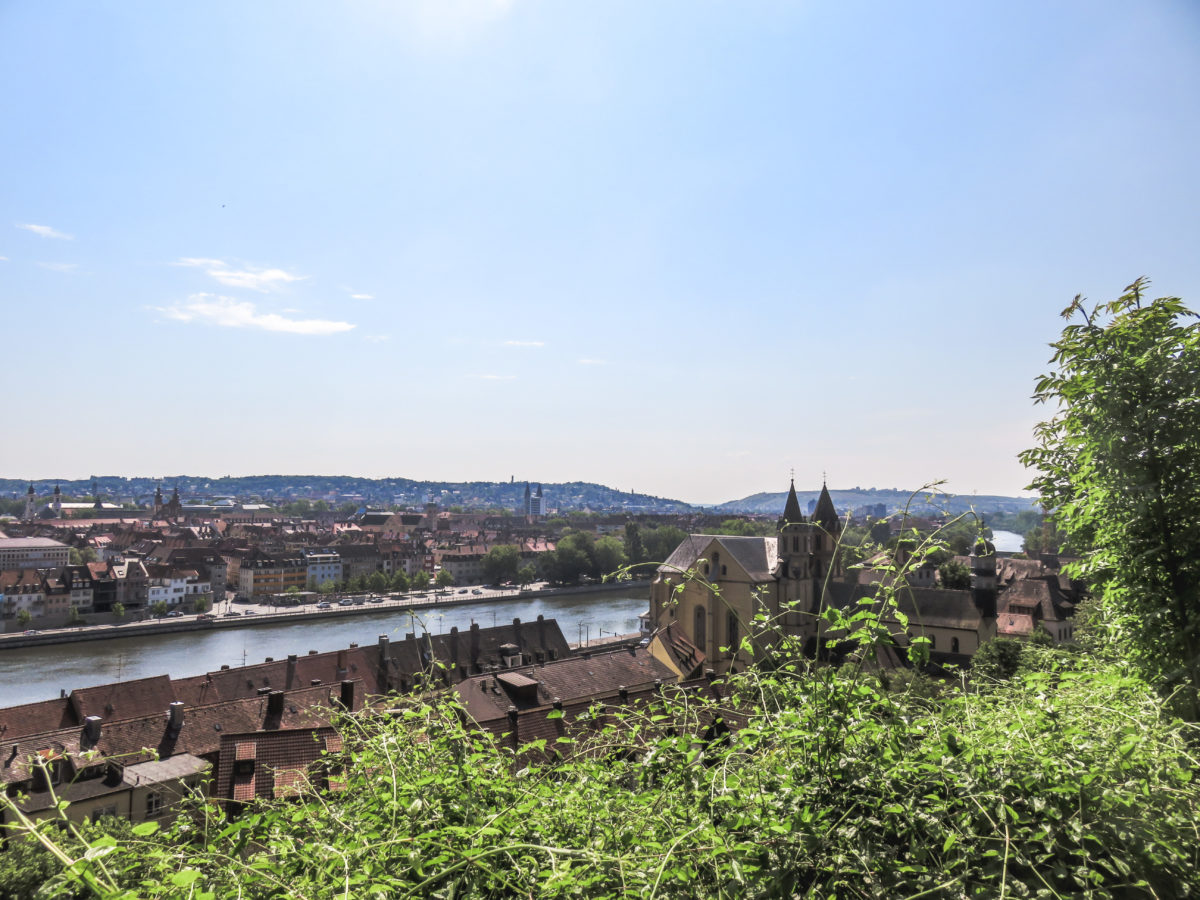
FROM WÜRZBURG TO ROTHENBURG OB DER TAUBER – 98 KILOMETRES
It was no easy task to find the Romantic Road from Würzburg since the city is an important axis of the southern German road network. As the GPS did not know the route, it always sent us by faster roads to reach our next stopover, Rothenburg ob der Tauber. After a few kilometres, we finally saw the famous sign “Romantische Strasse” which will be our leitmotif for the following days.
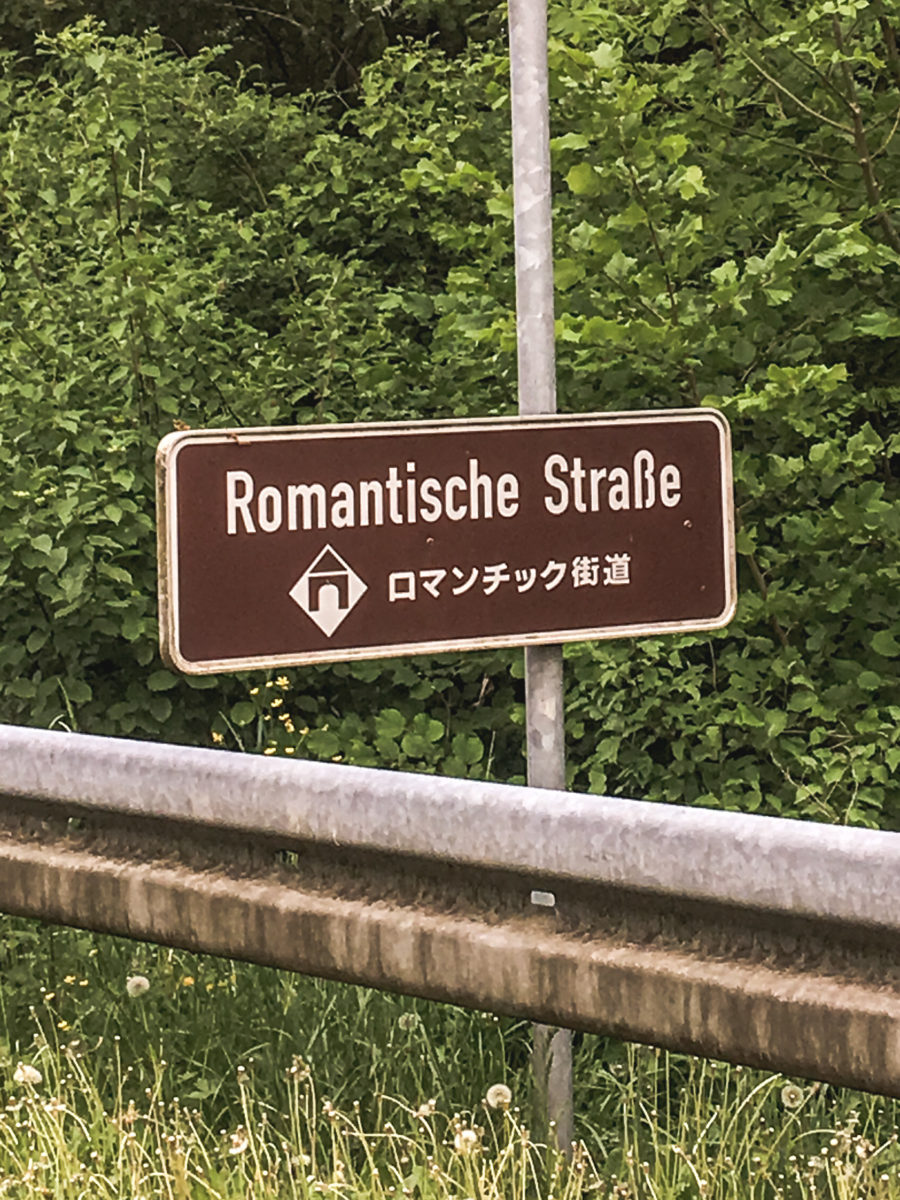
We drove through the towns of Tauberbischofsheim and Bad Mergentheim without stopping. We had dinner in the famous village of Röttingen, right opposite the baroque town hall. Röttingen is a popular destination for visitors because of its historic town centre surrounded by a city wall and seven watchtowers. In 1953, the town was voted “Germany’s First European City”, which is perhaps a little hard to believe nowadays, as the village is so quiet and small. However, it owes its fine reputation to the Franconian Festival in Röttingen and its incredible sundial trail: a 2-kilometre long walk dotted with 25 unique pieces that can only be found in the “City of Sundials”.
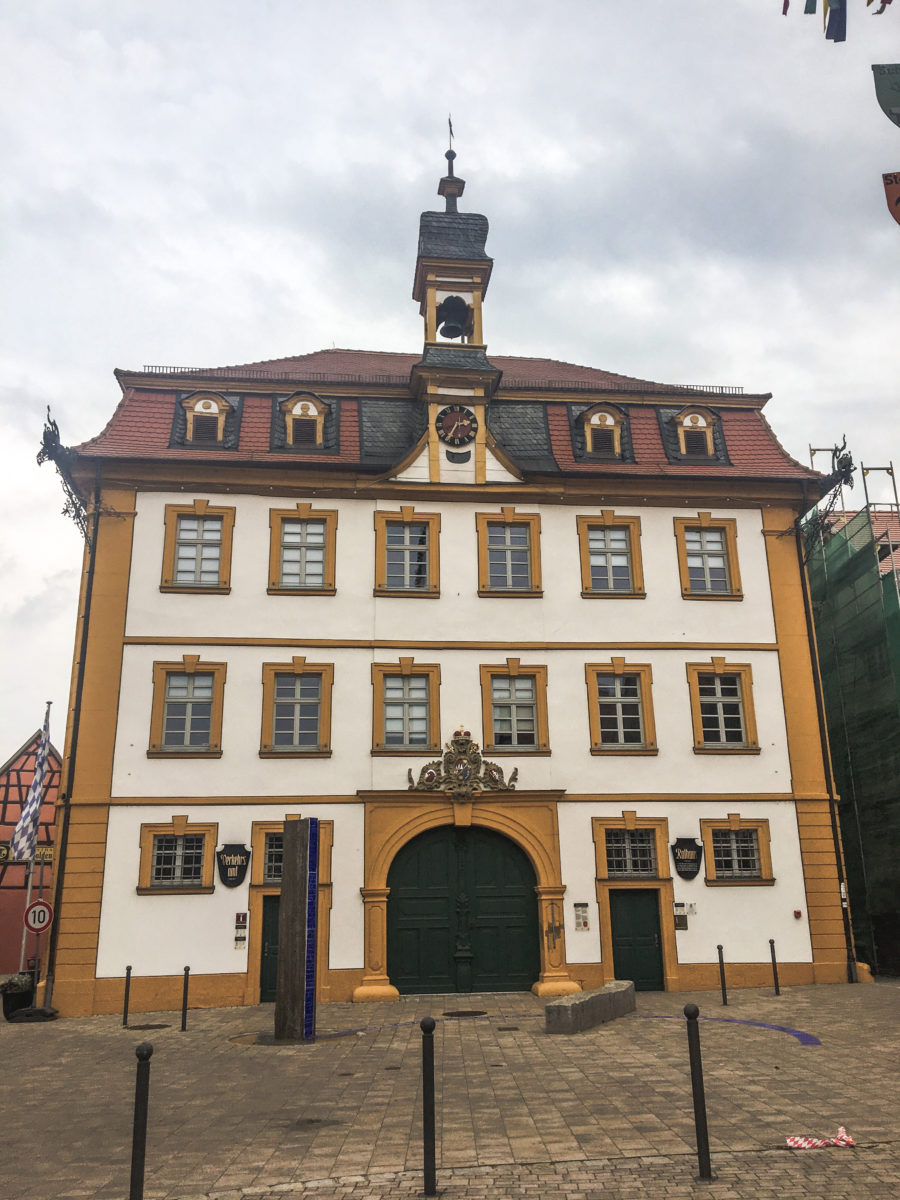
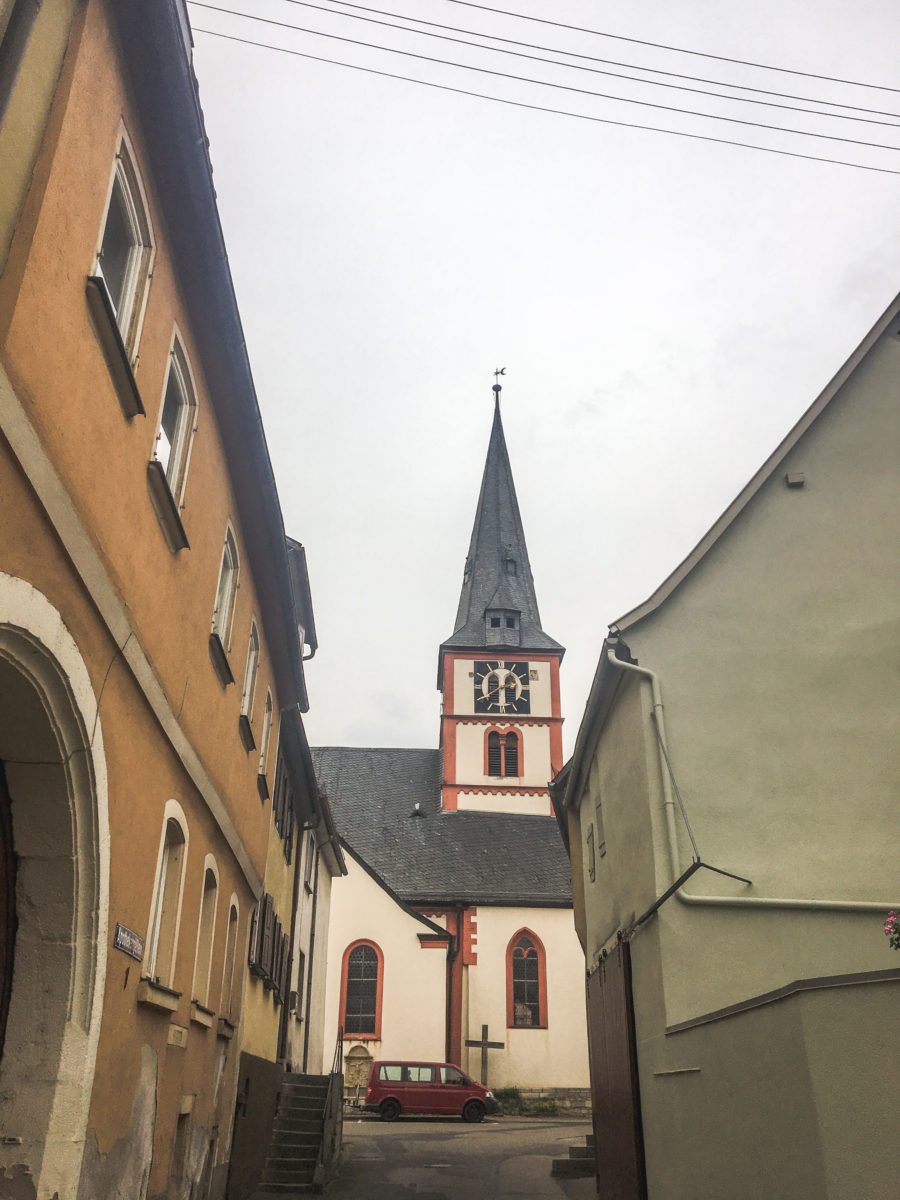
We set off again and discovered Creglingen, a town famous for the altarpiece of St. Mary in the evangelical Herrgottskirche, a wooden work by Tilman Riemenschneider, one of the most prolific sculptors of the Middle Ages. We didn’t stop, as we were in quite a hurry to arrive in Rothenburg ob der Tauber, the stop I was most eagerly awaiting.
ROTHENBURG OB DER TAUBER (KM 98)
Purely and simply romantic, where the Middle Ages remained alive, Rothenburg ob der Tauber is one of Germany’s leading sights with its historical past, its originality and its postcard-like half-timbered houses.

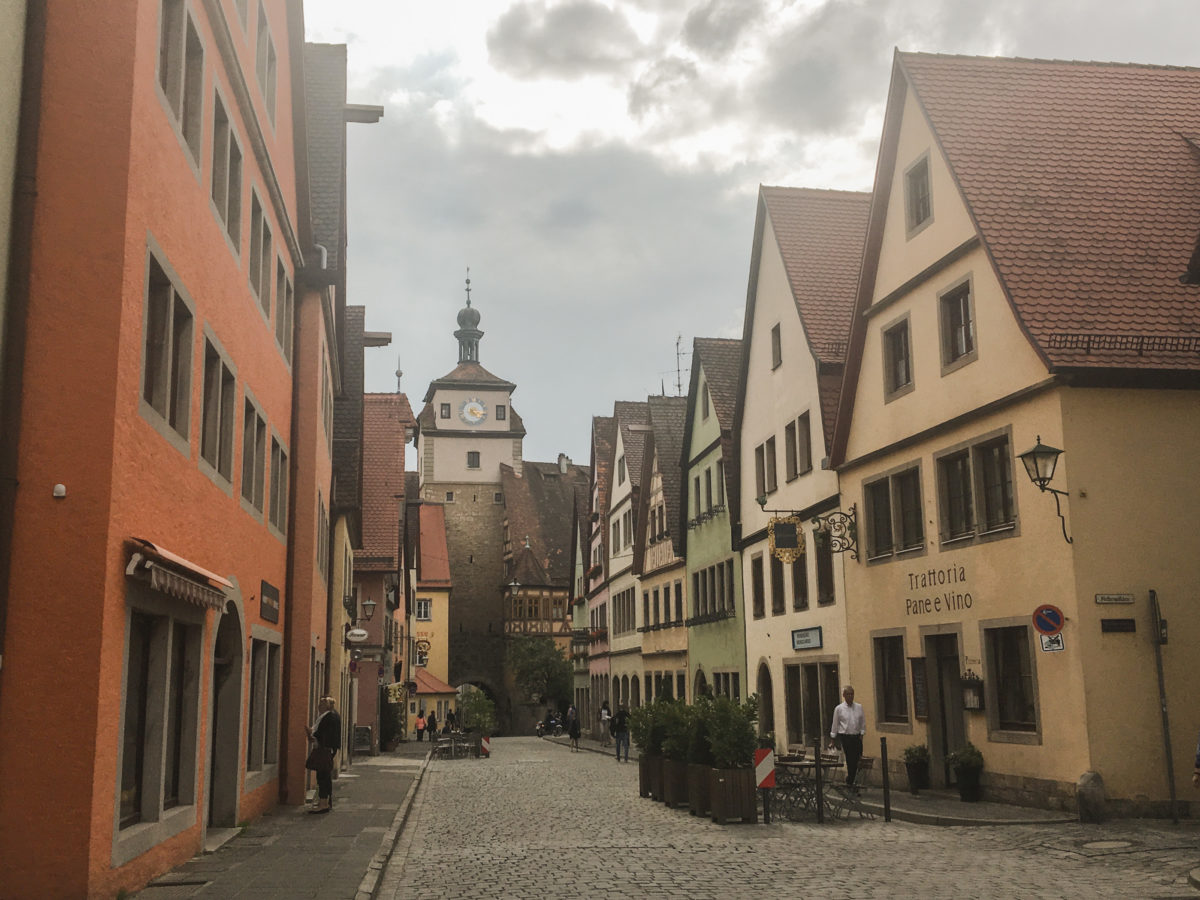
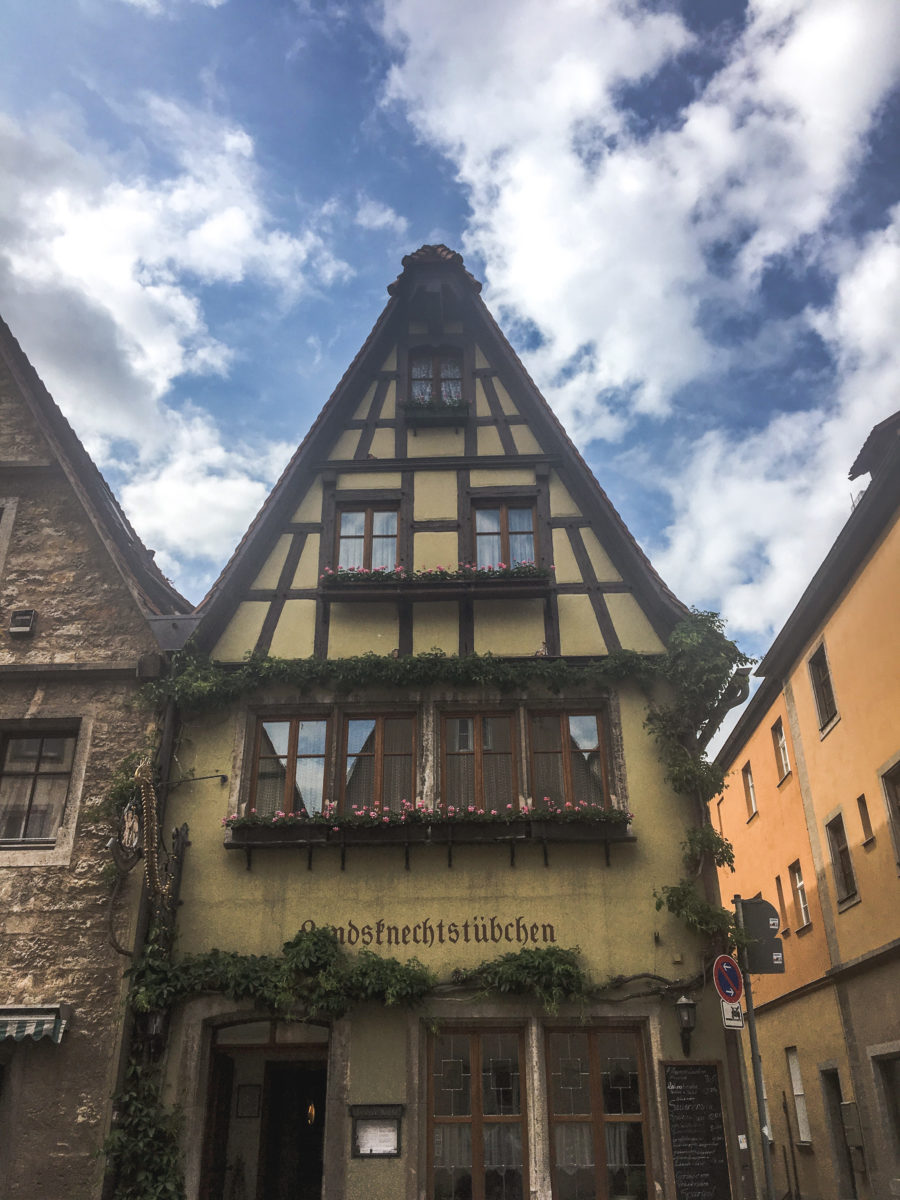
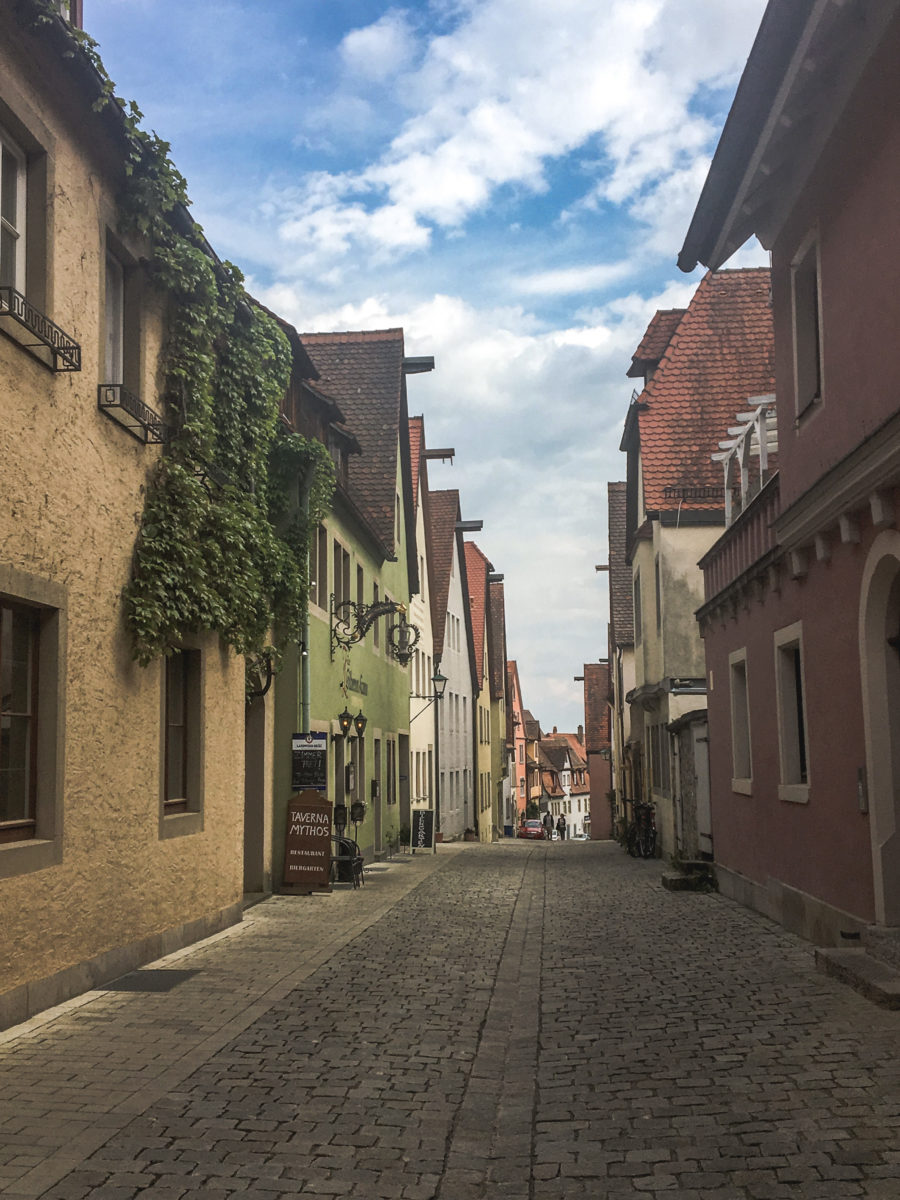
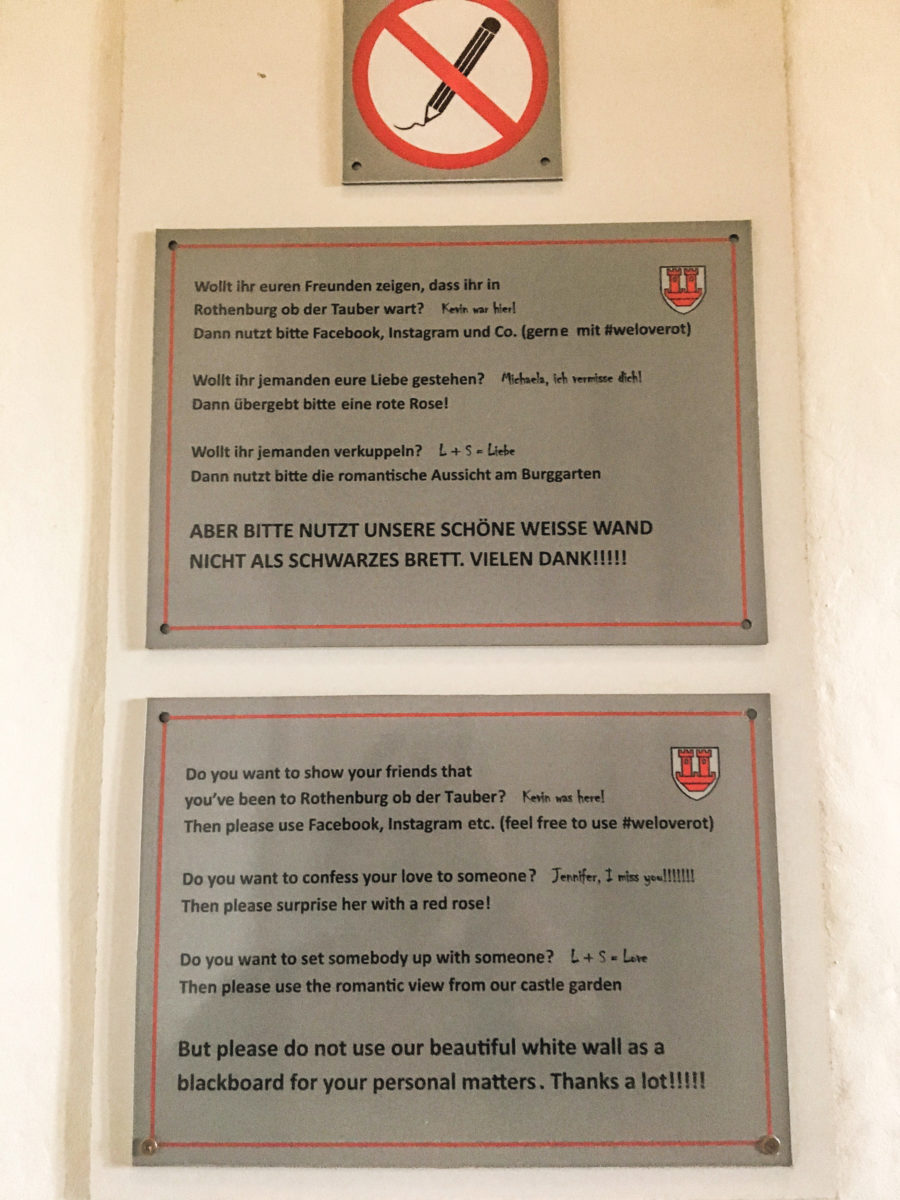

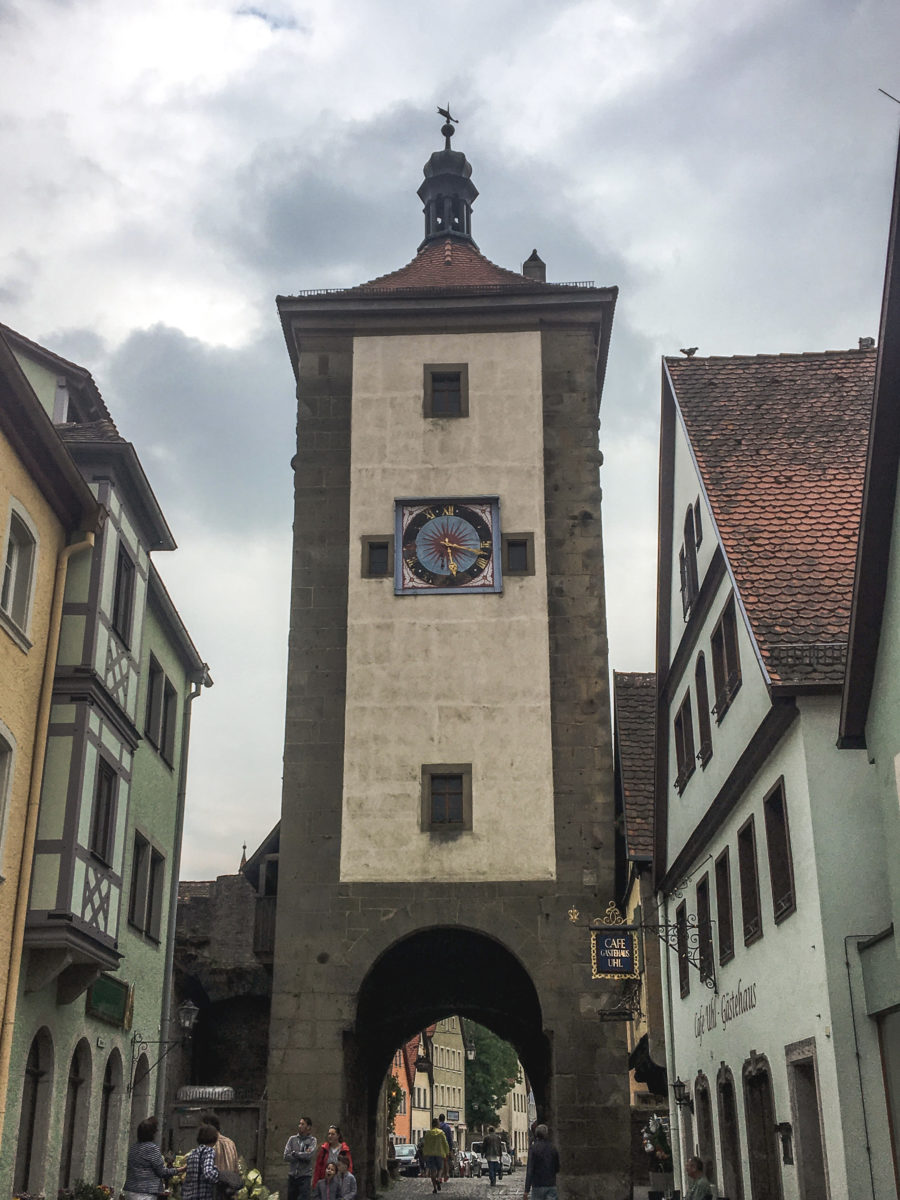
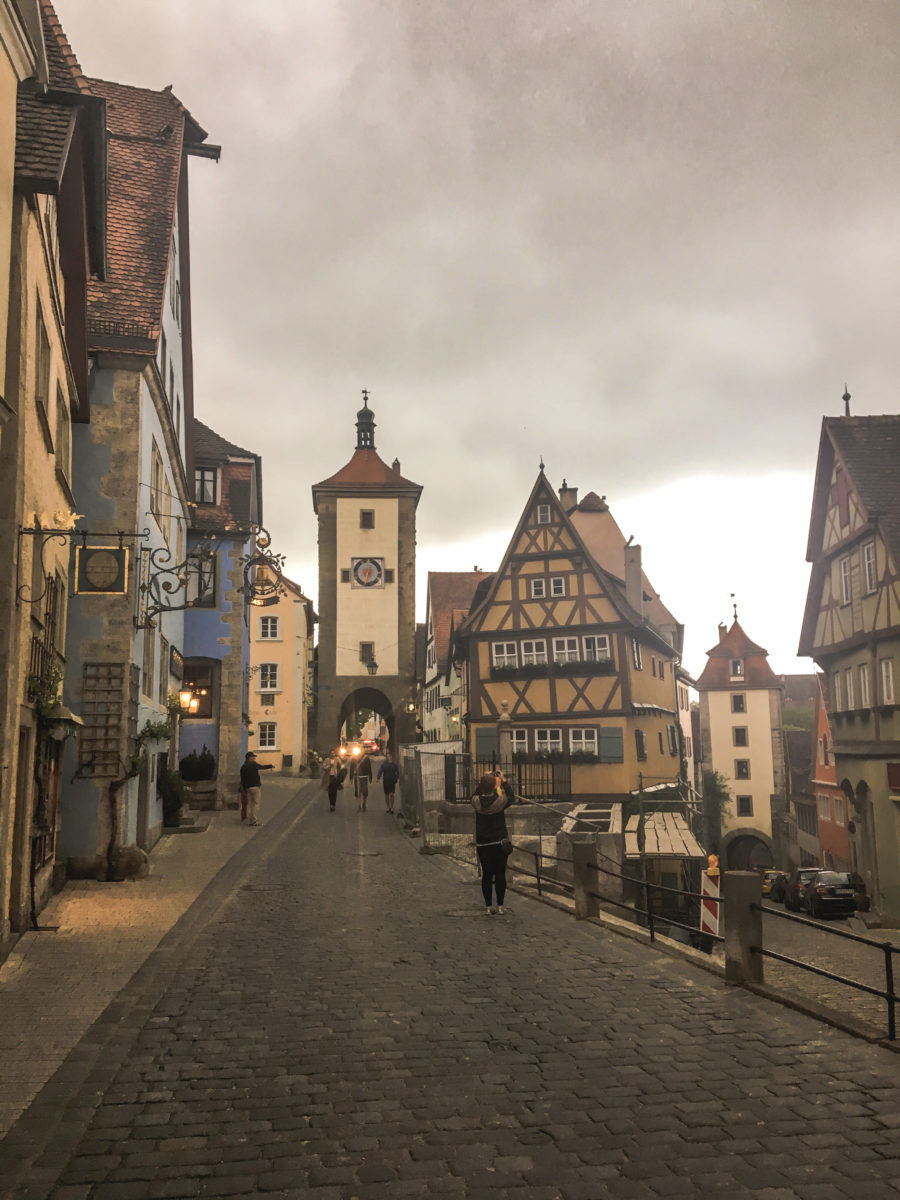
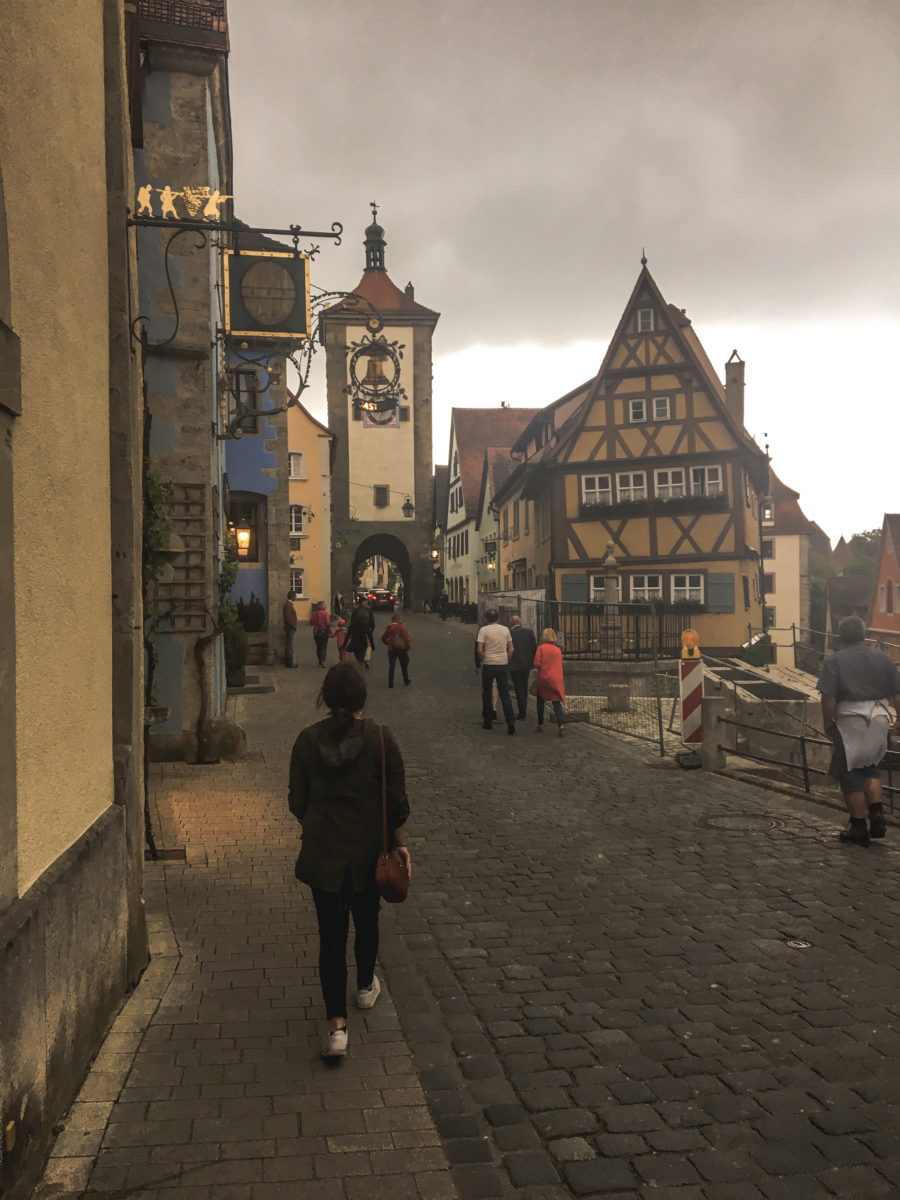
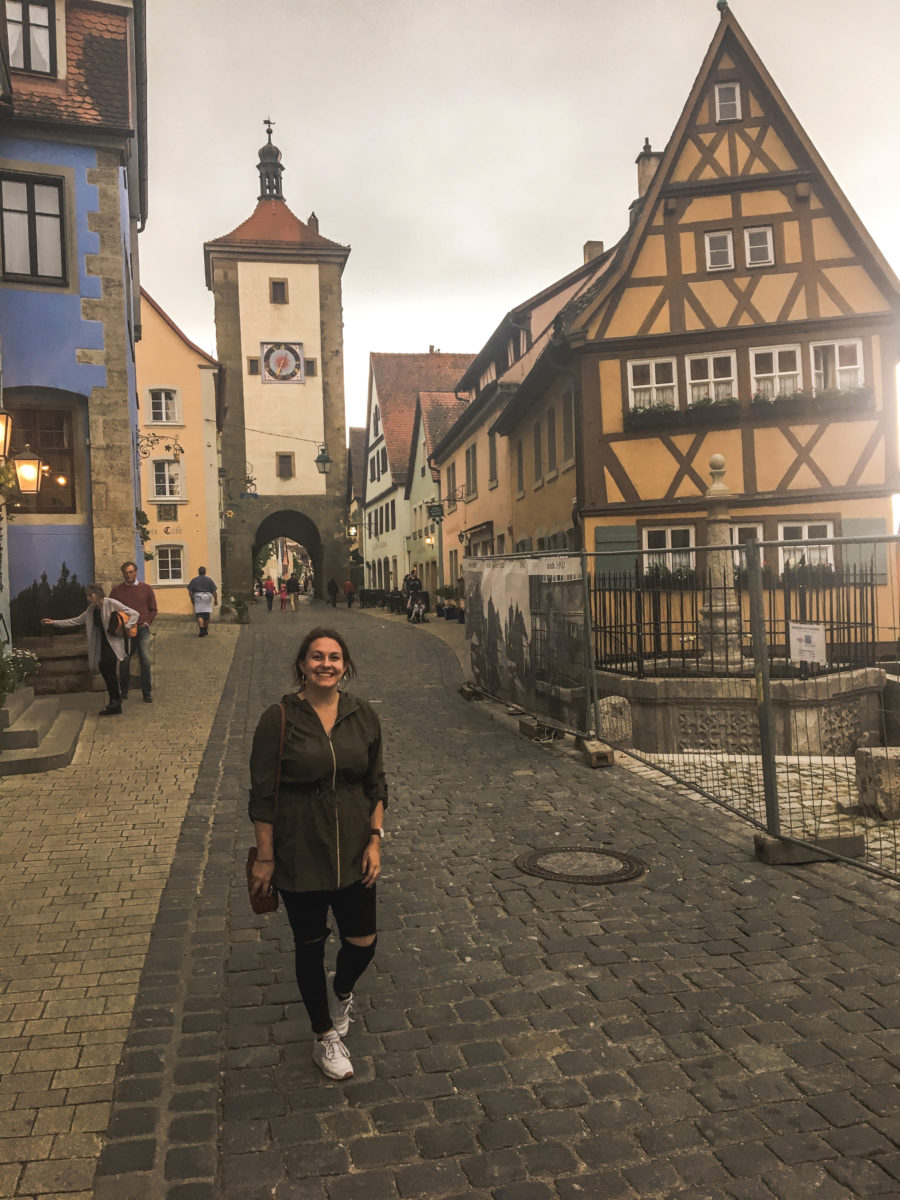
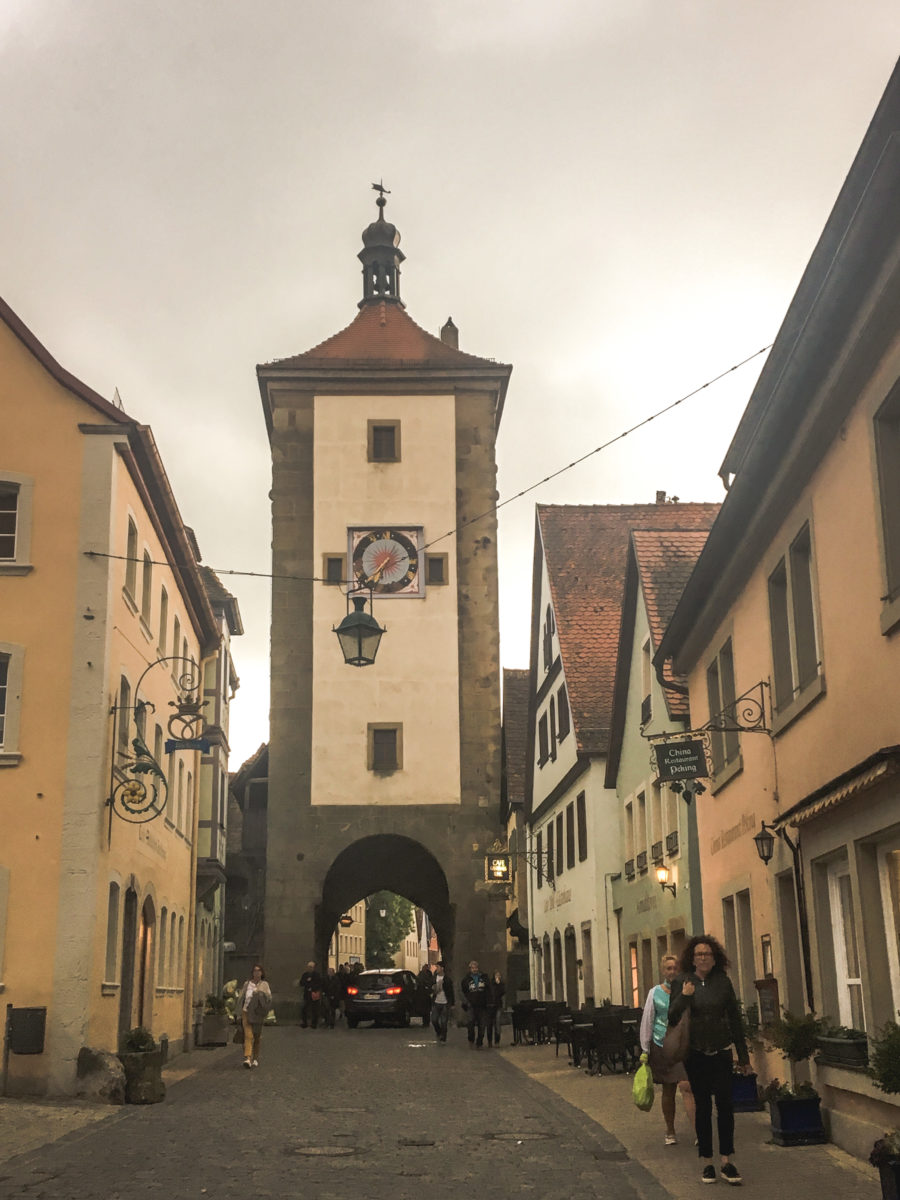
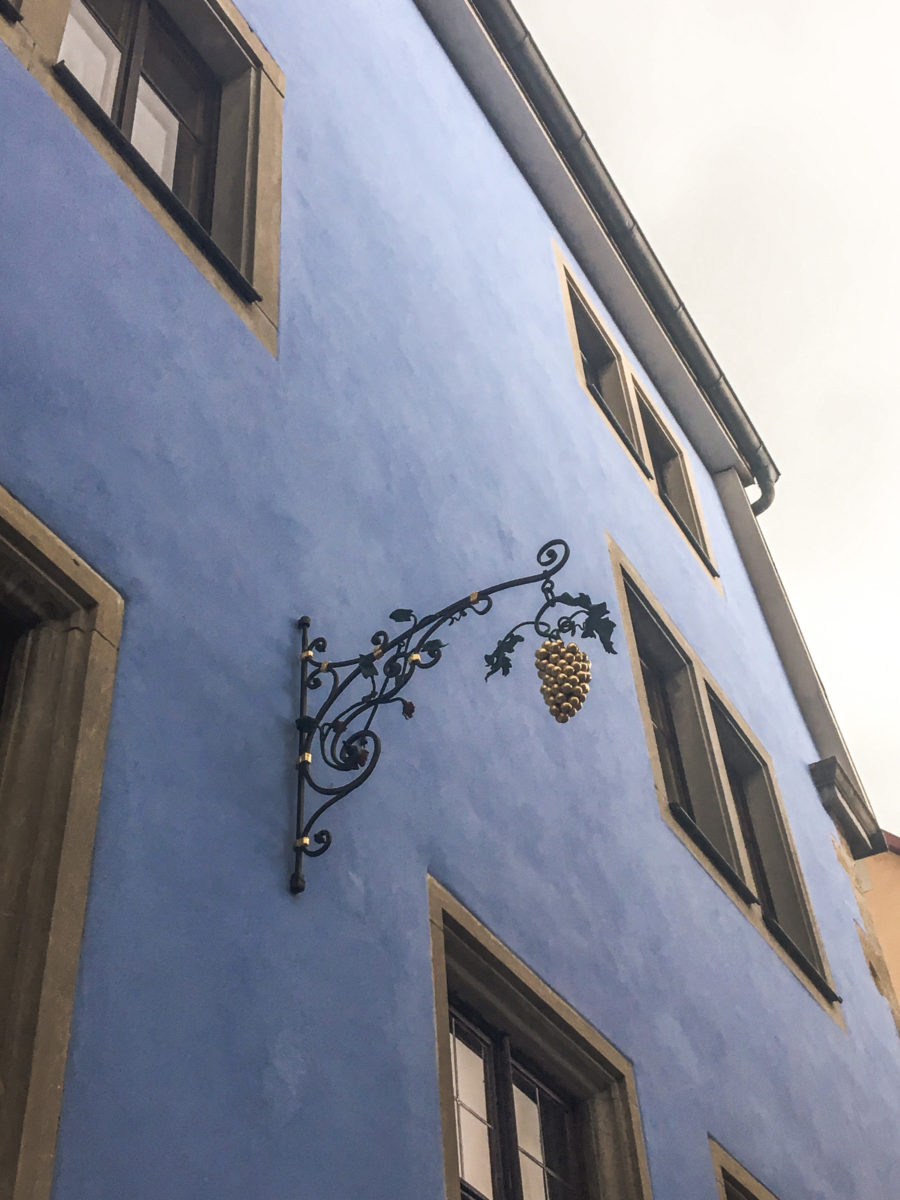
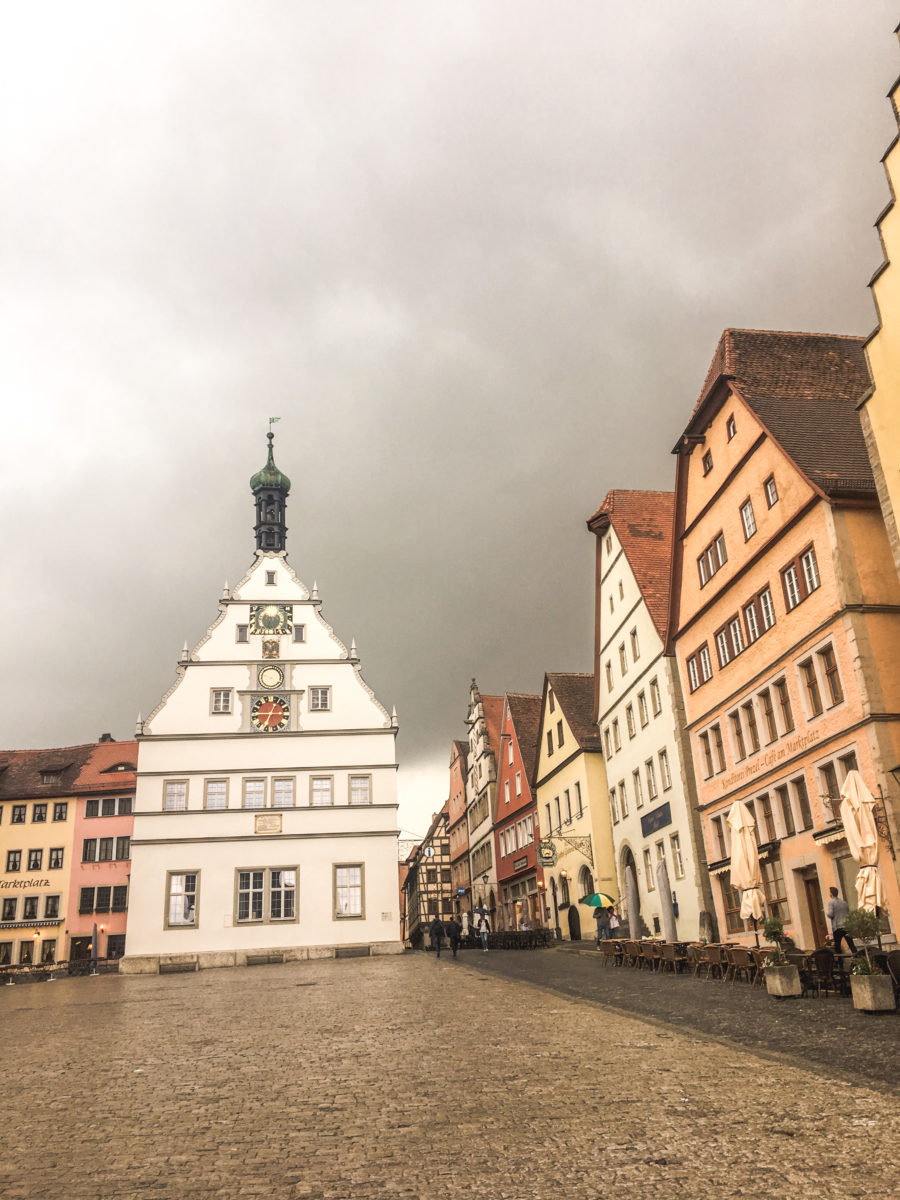

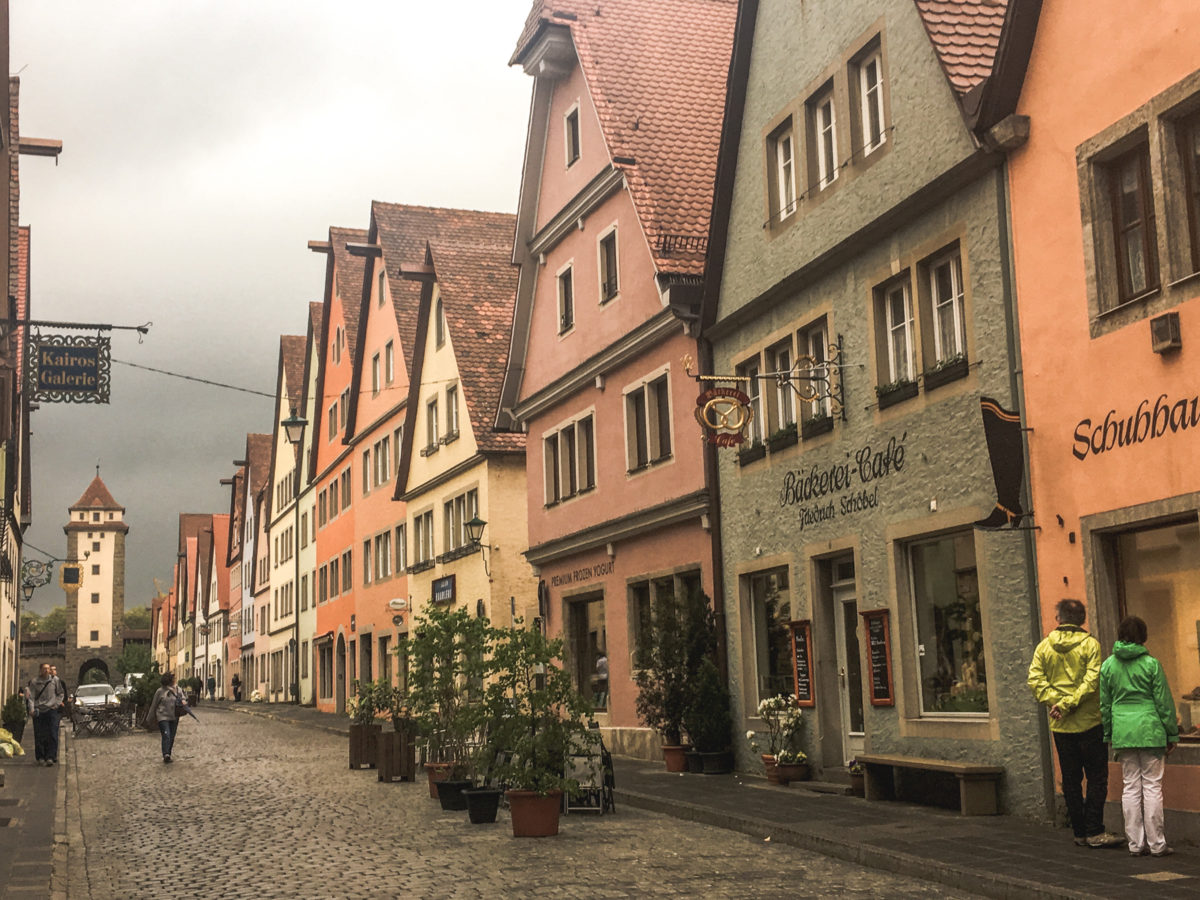

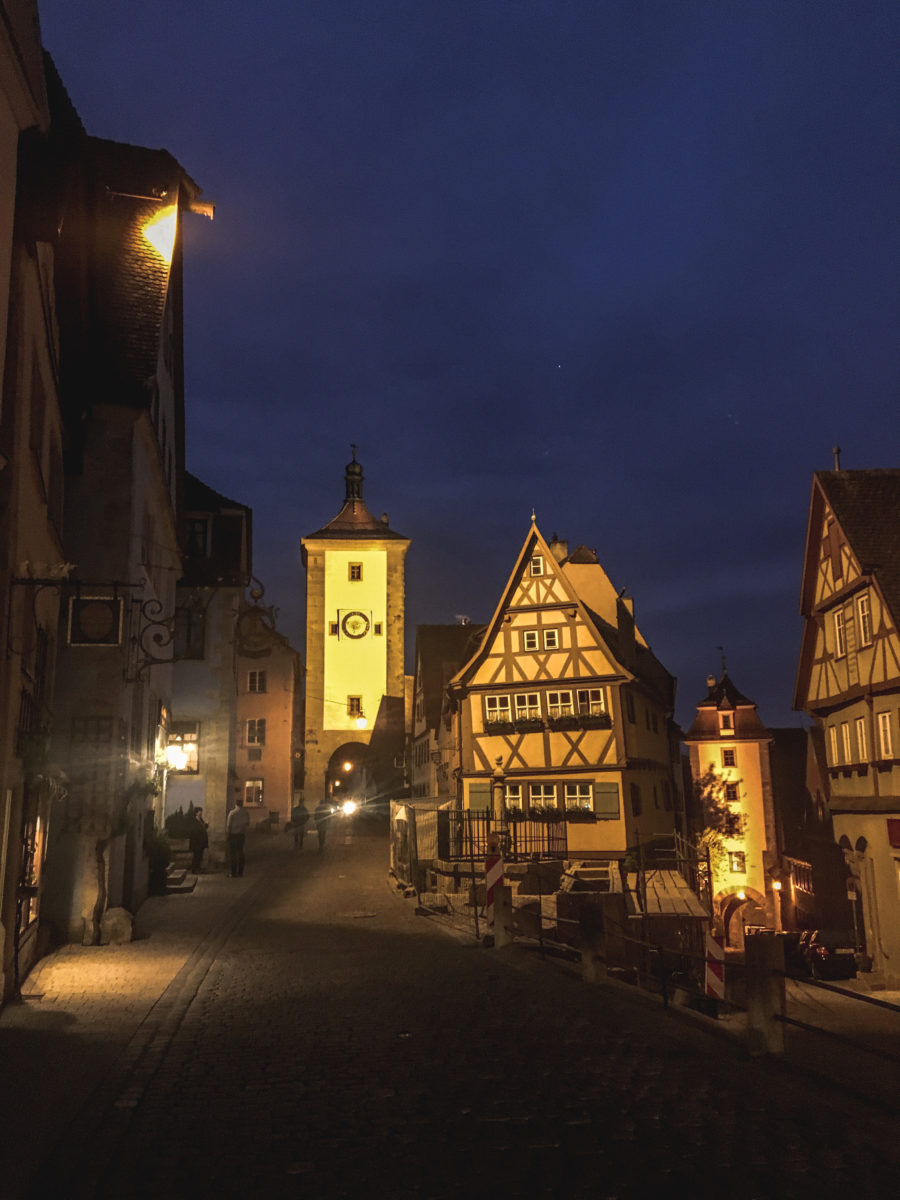
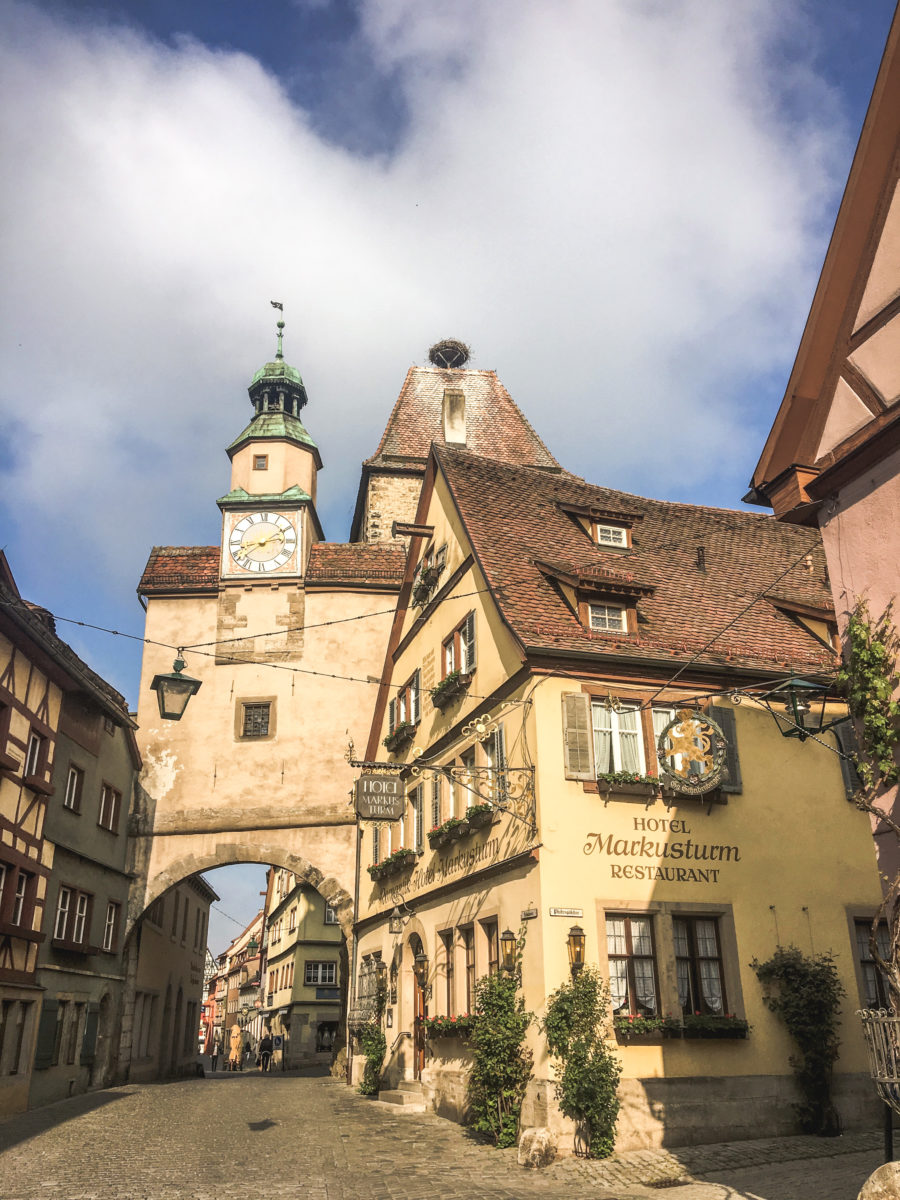
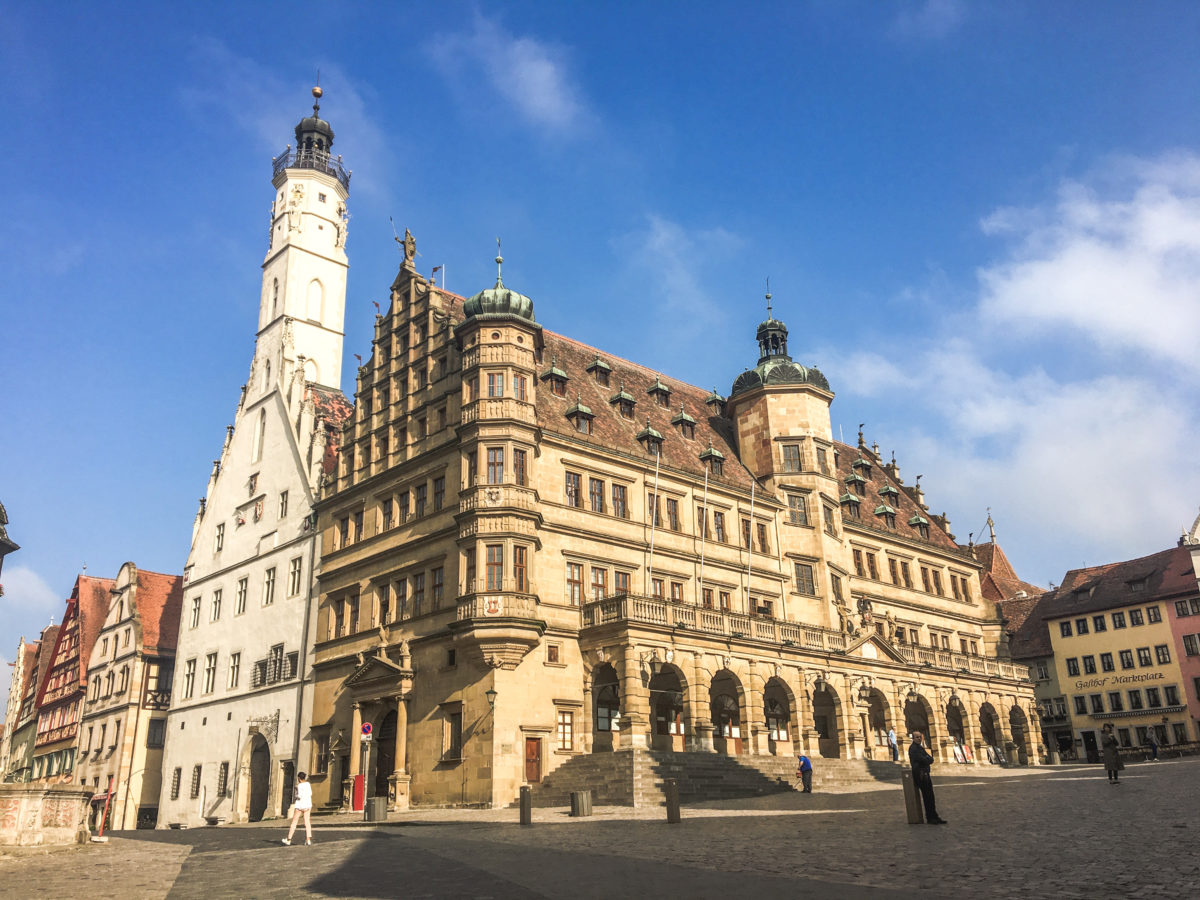
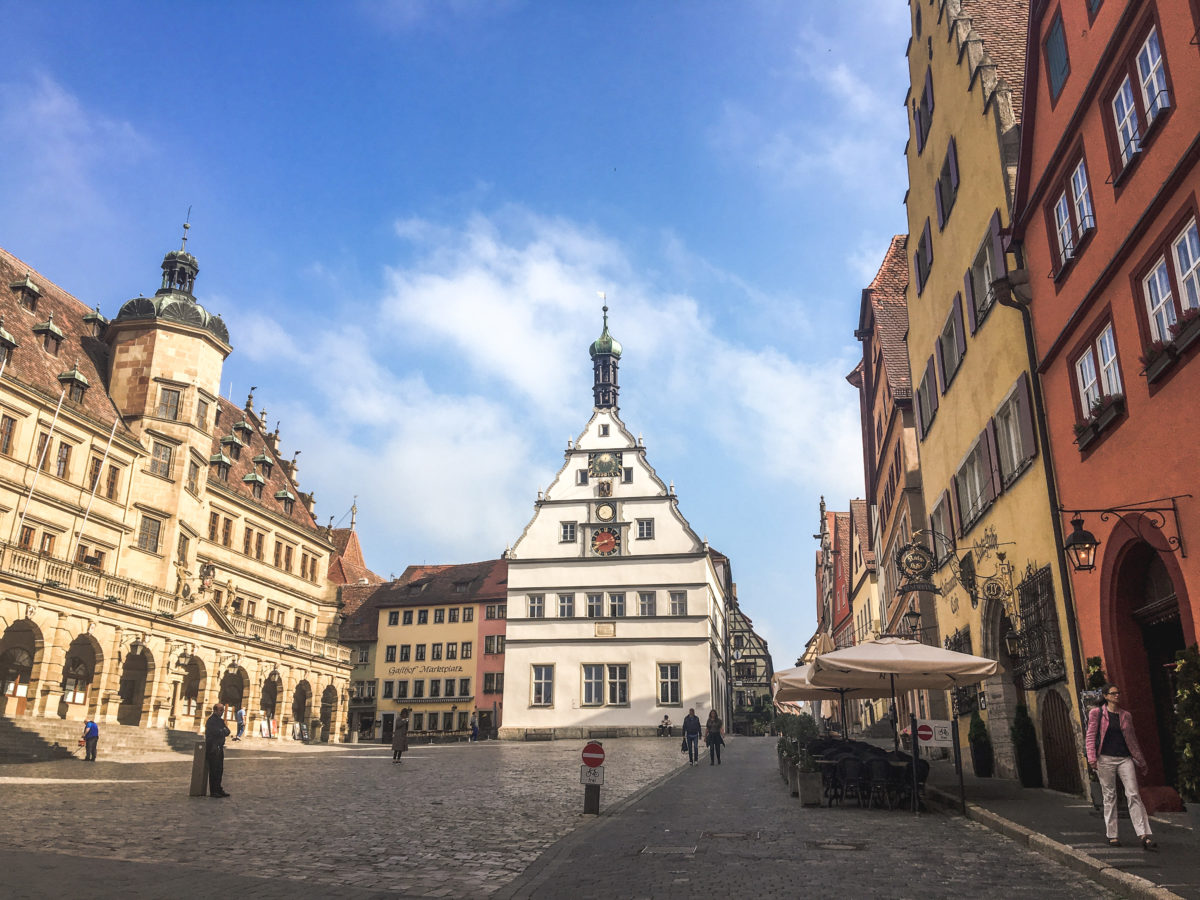
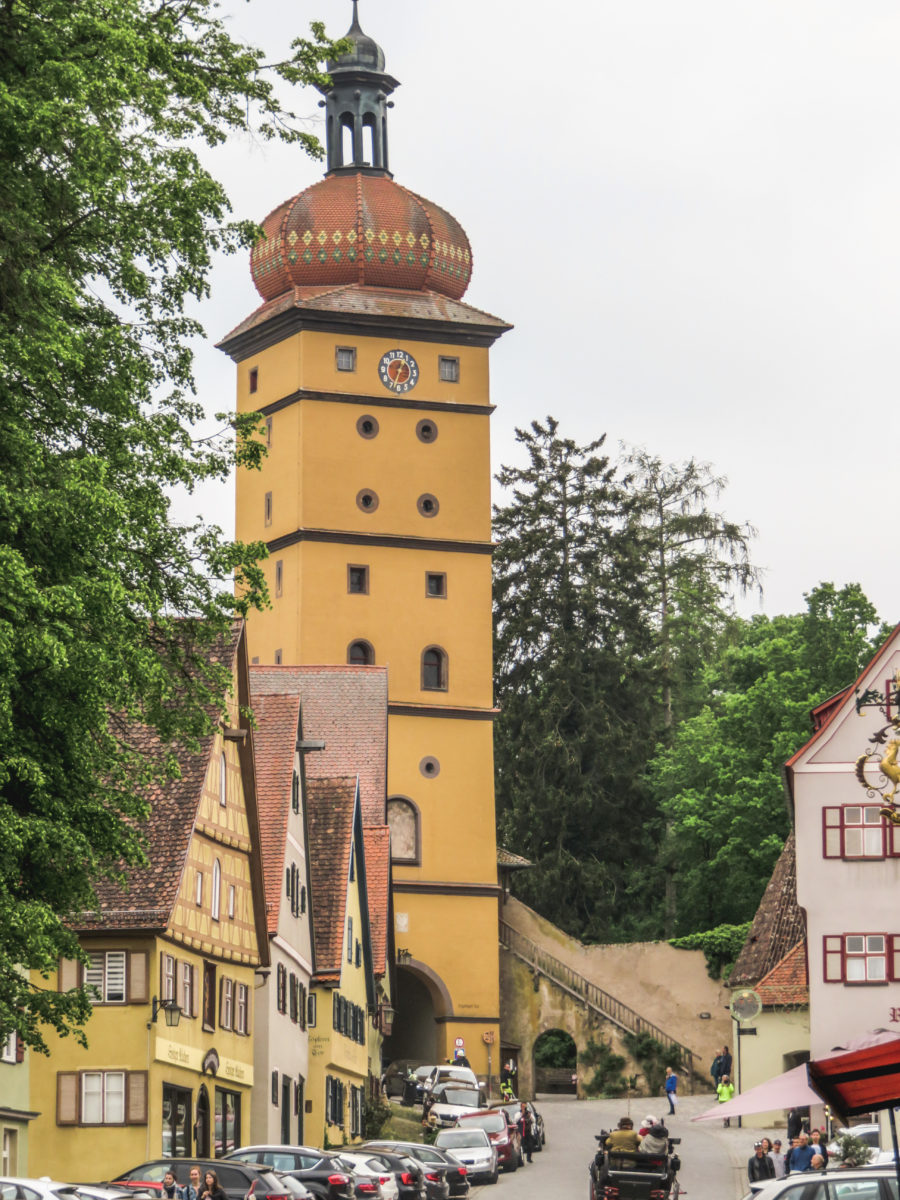
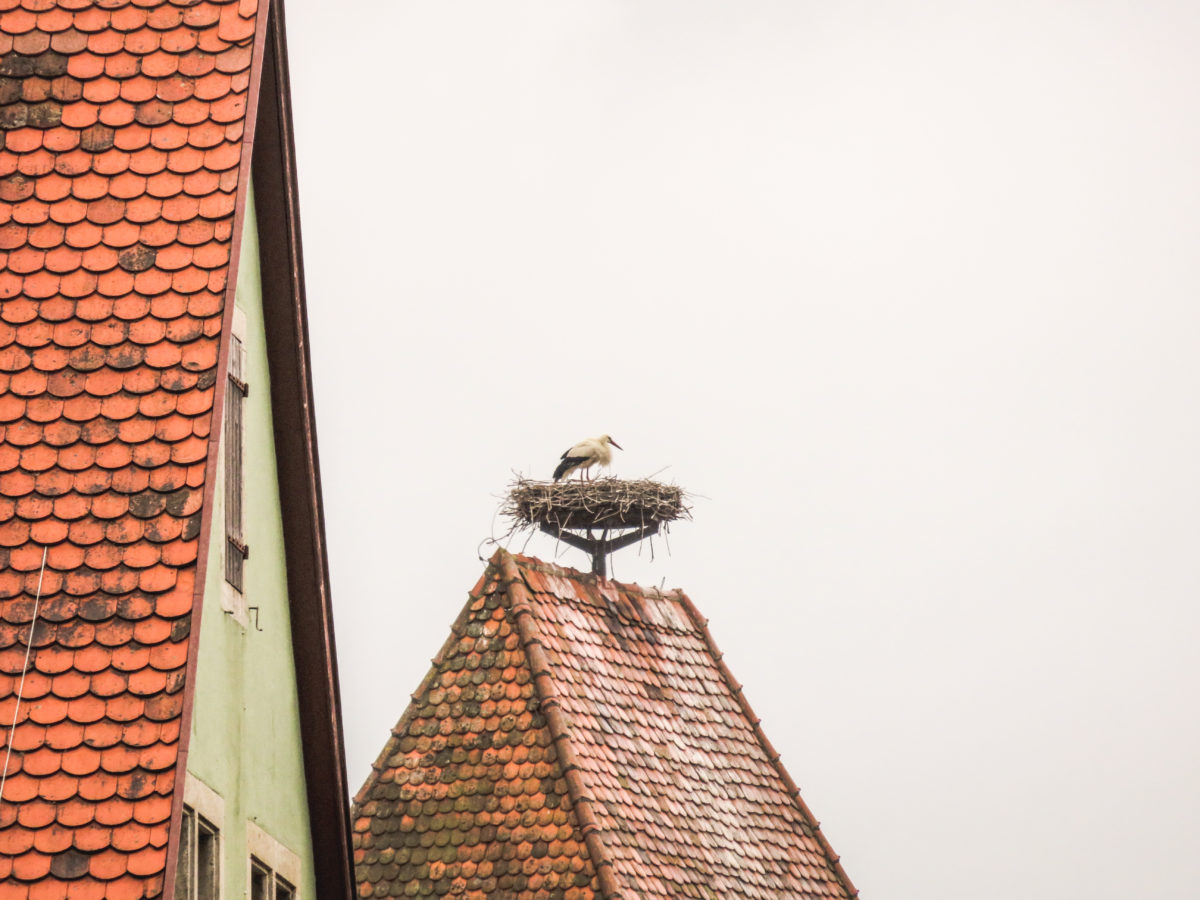
The city is particularly well known and appreciated for its surrounding walls with 42 towers that are still accessible today. Sheltered by these high fortifications, a journey back in time takes place where, like a valiant guard, I imagined myself protecting my city from invaders. Every evening, the night watchman leads the visitors through the maze of cobbled streets and ramparts for a guided tour that seems authentic and exciting; “seems” because a welcoming restaurant made us forget this interesting escapade and instead quench our thirst and hunger.
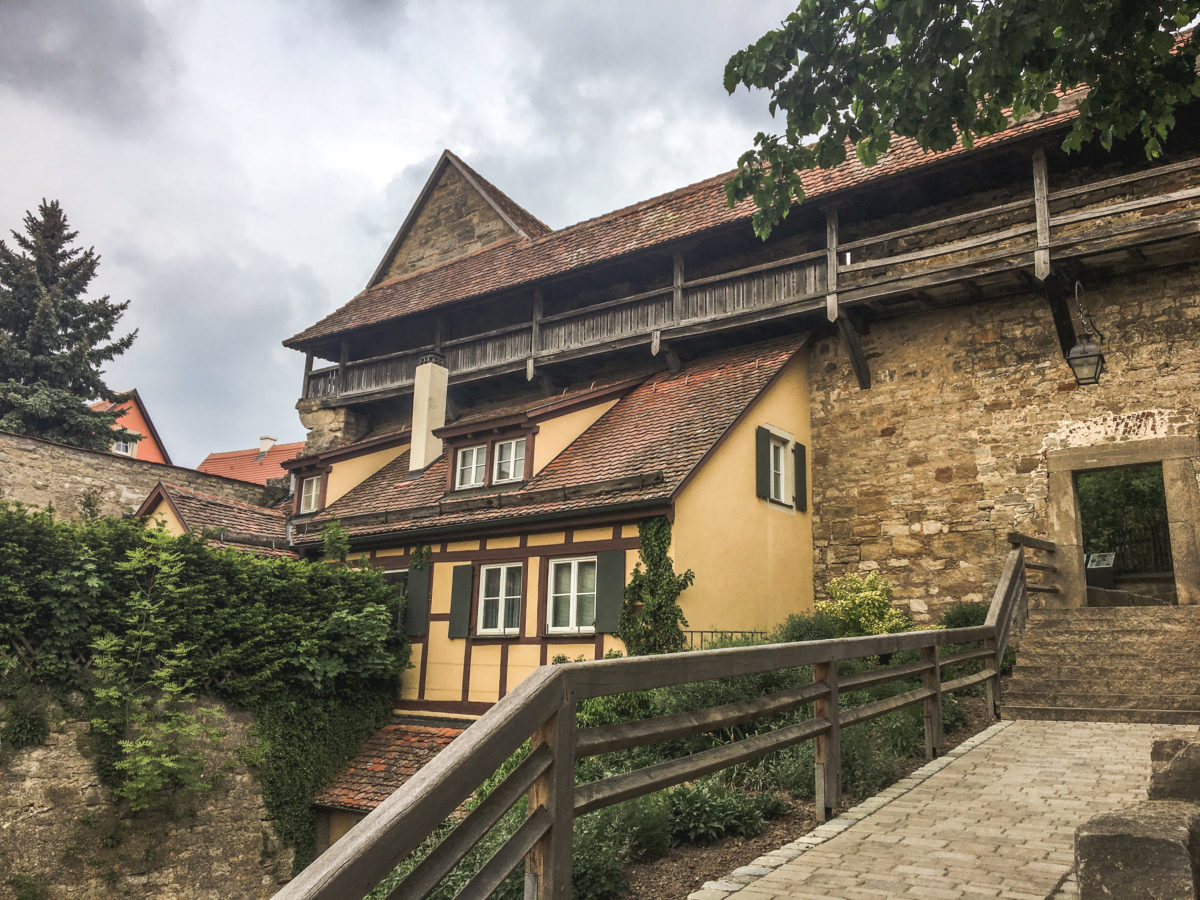
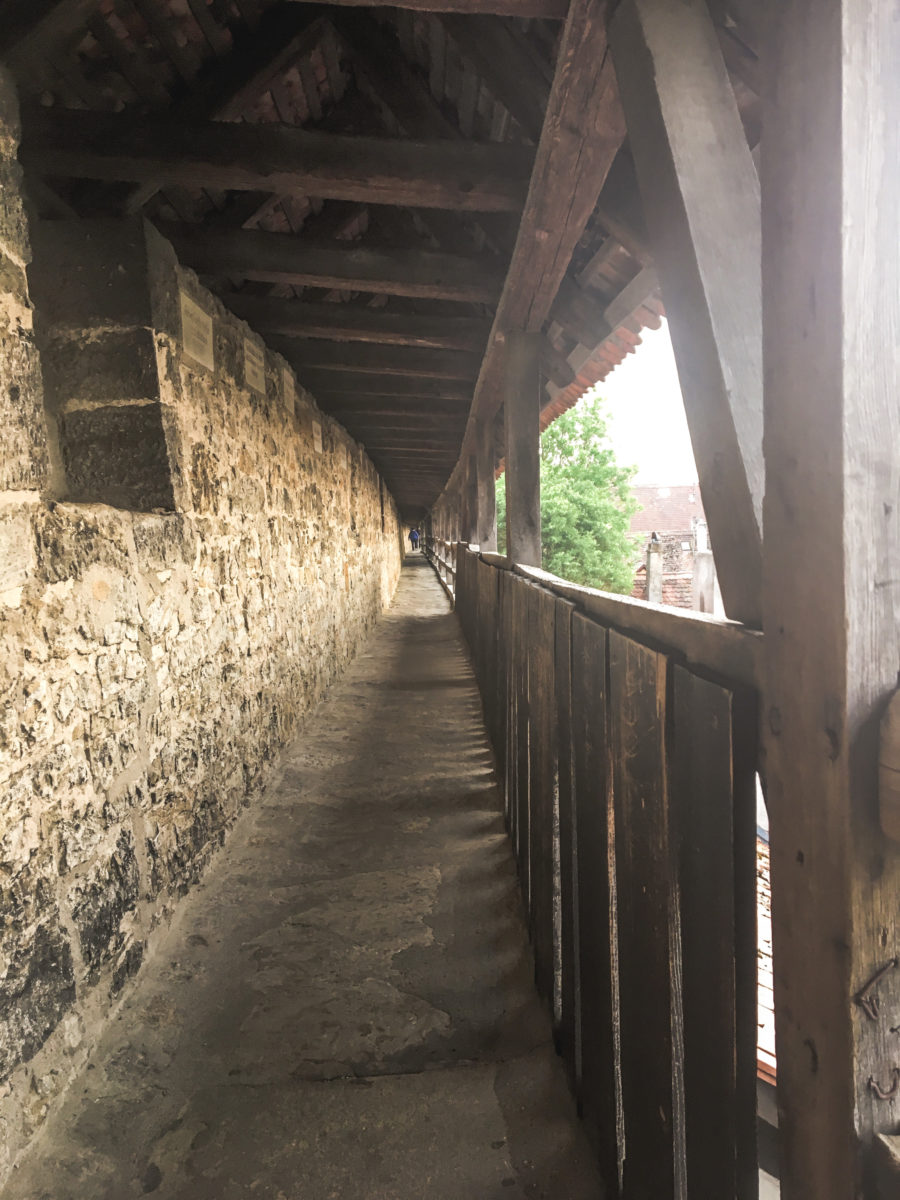
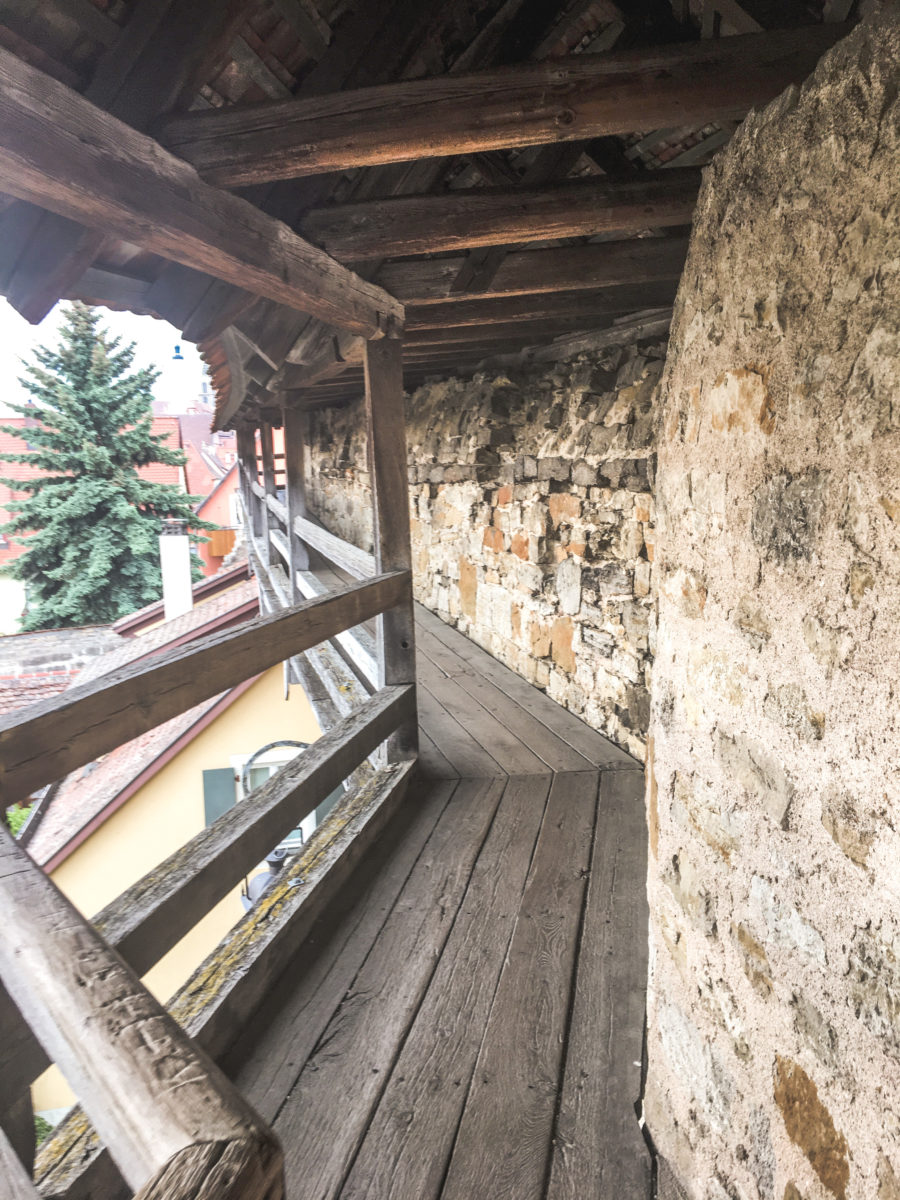
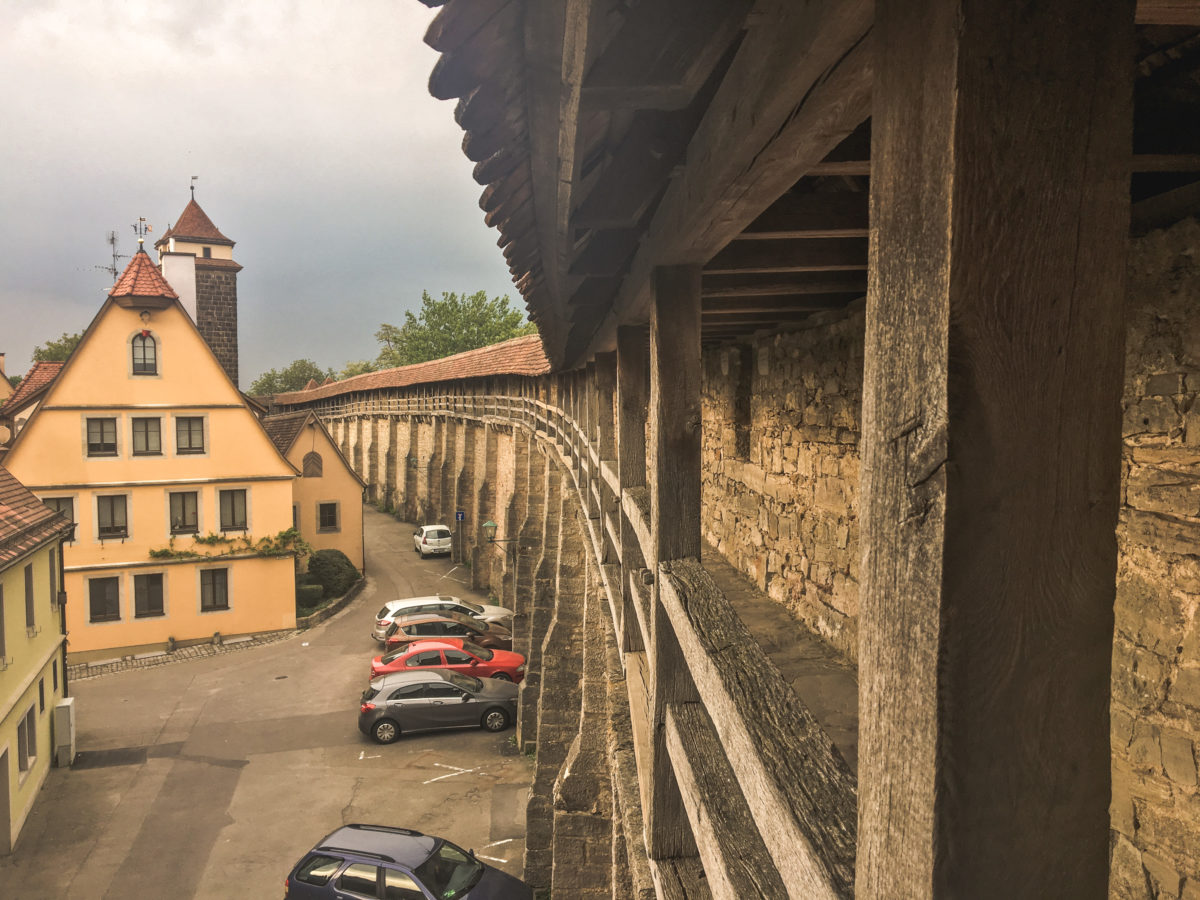
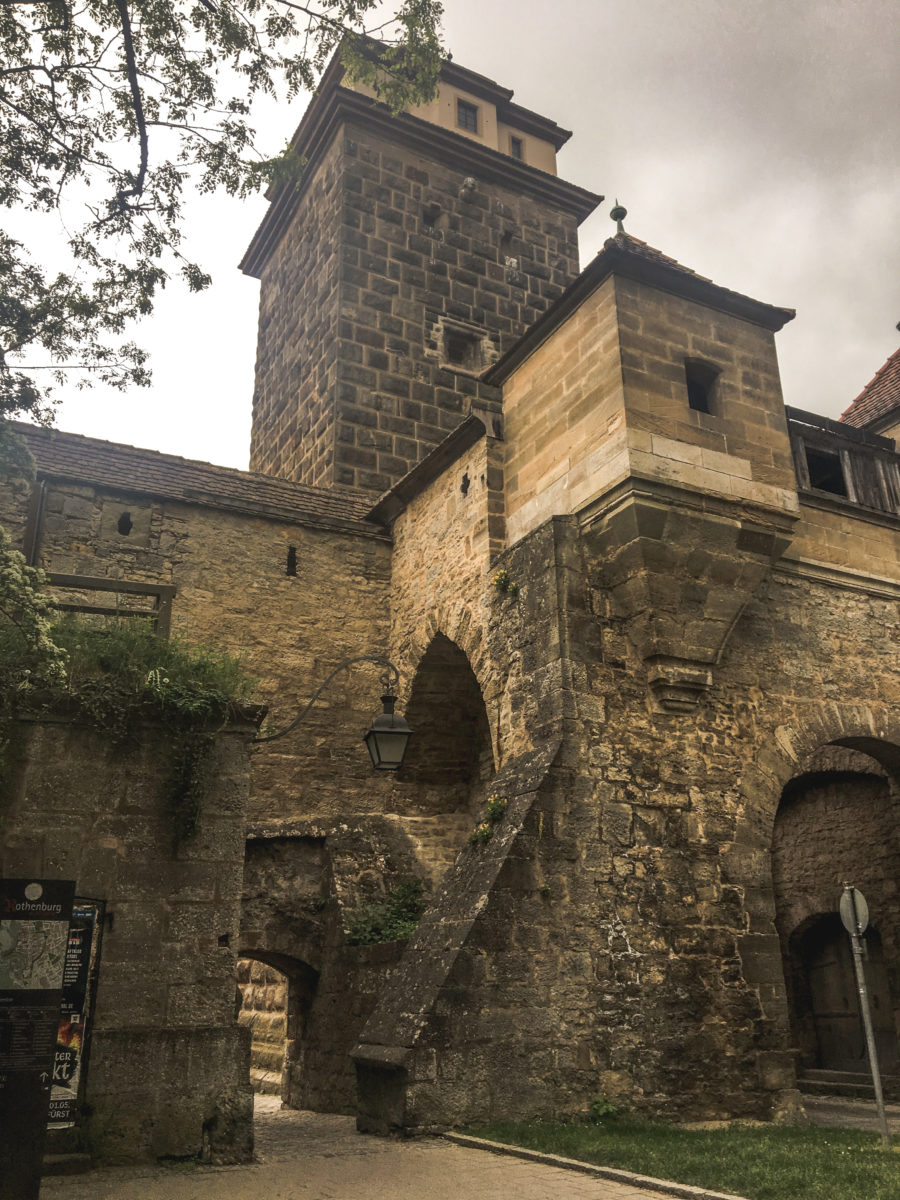
I strongly recommend that you climb up into the campanile of the town hall where the view is breathtaking. Also, a little fright is not really welcome before the aperitif, but the last wave of stairs is steep and quite narrow. Unfortunately, this is not accessible to everyone. Only 3 euros are charged for the climb and for a small exhibition listing the chronology of the city and then, the view is well worth it.
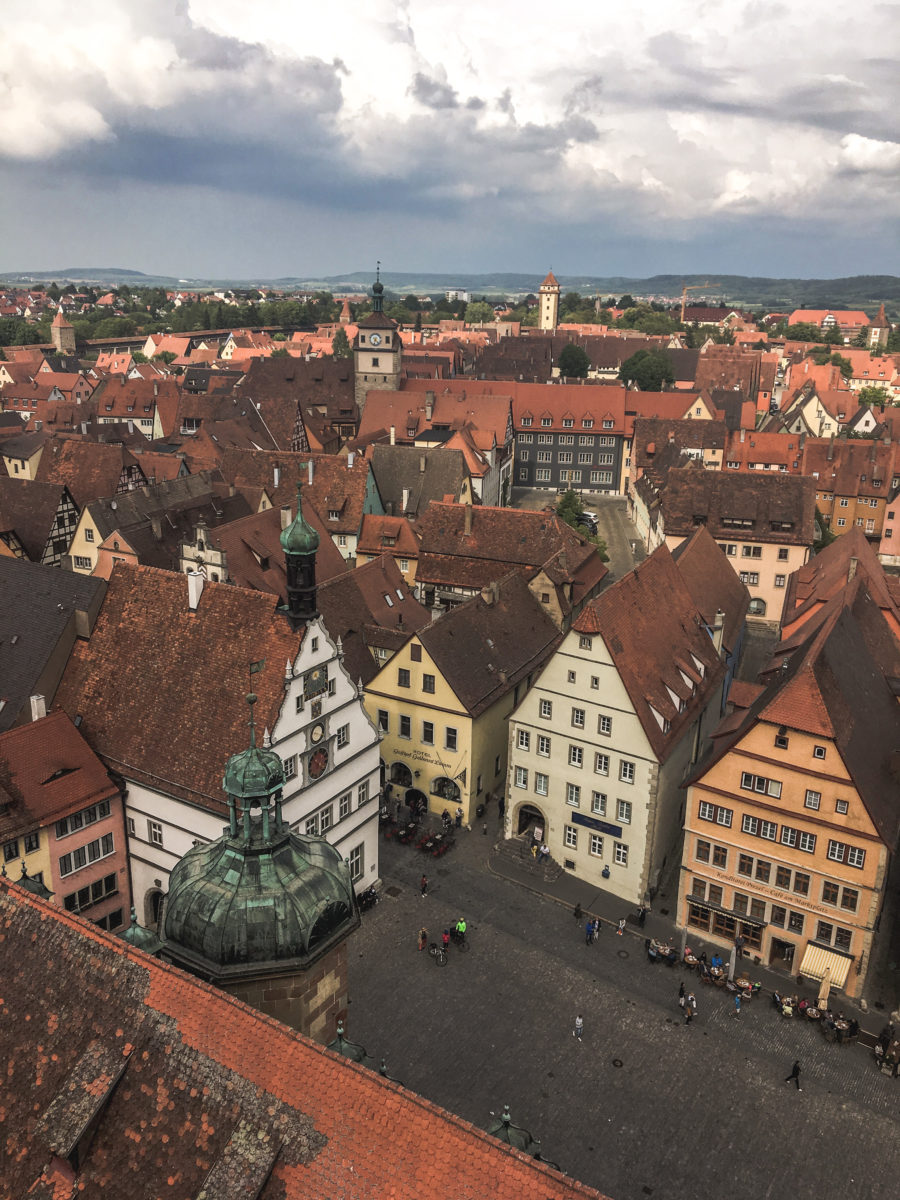
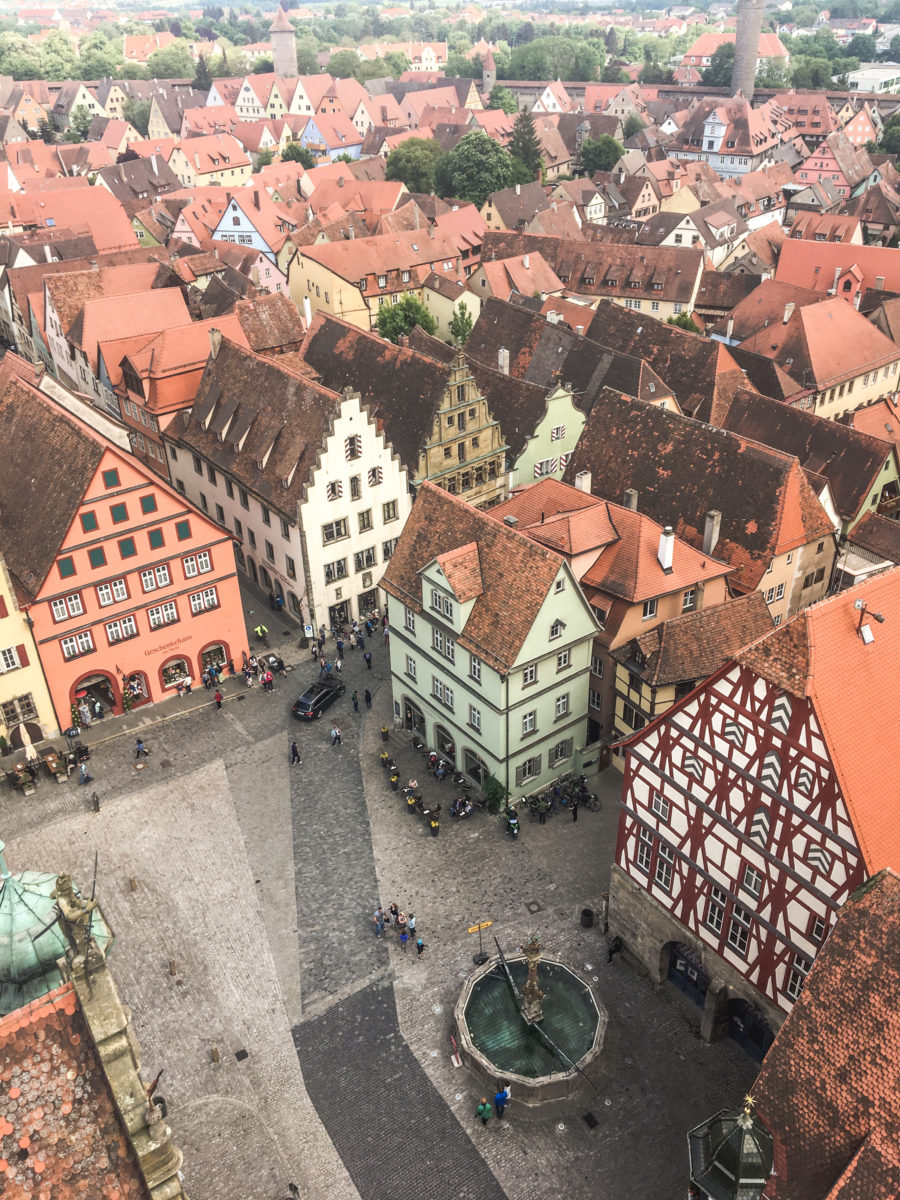

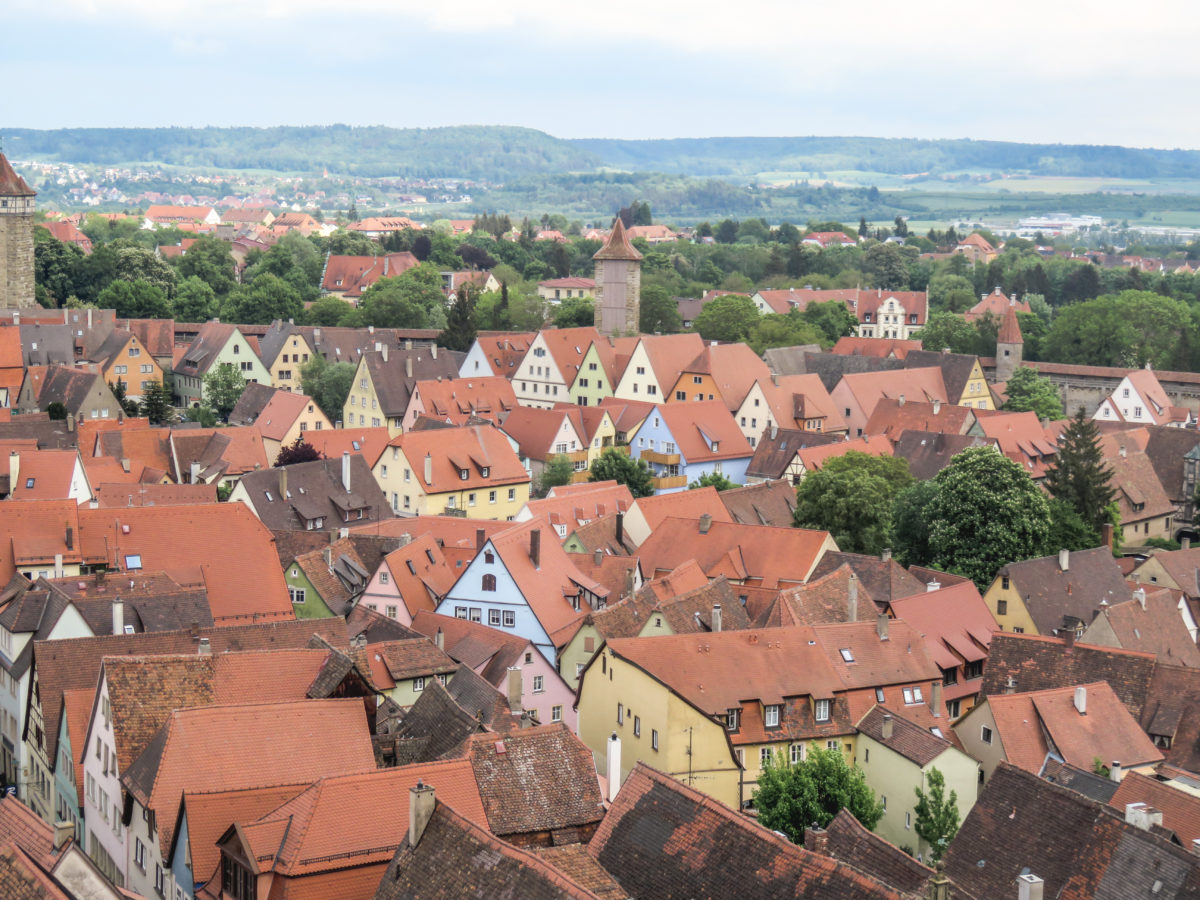
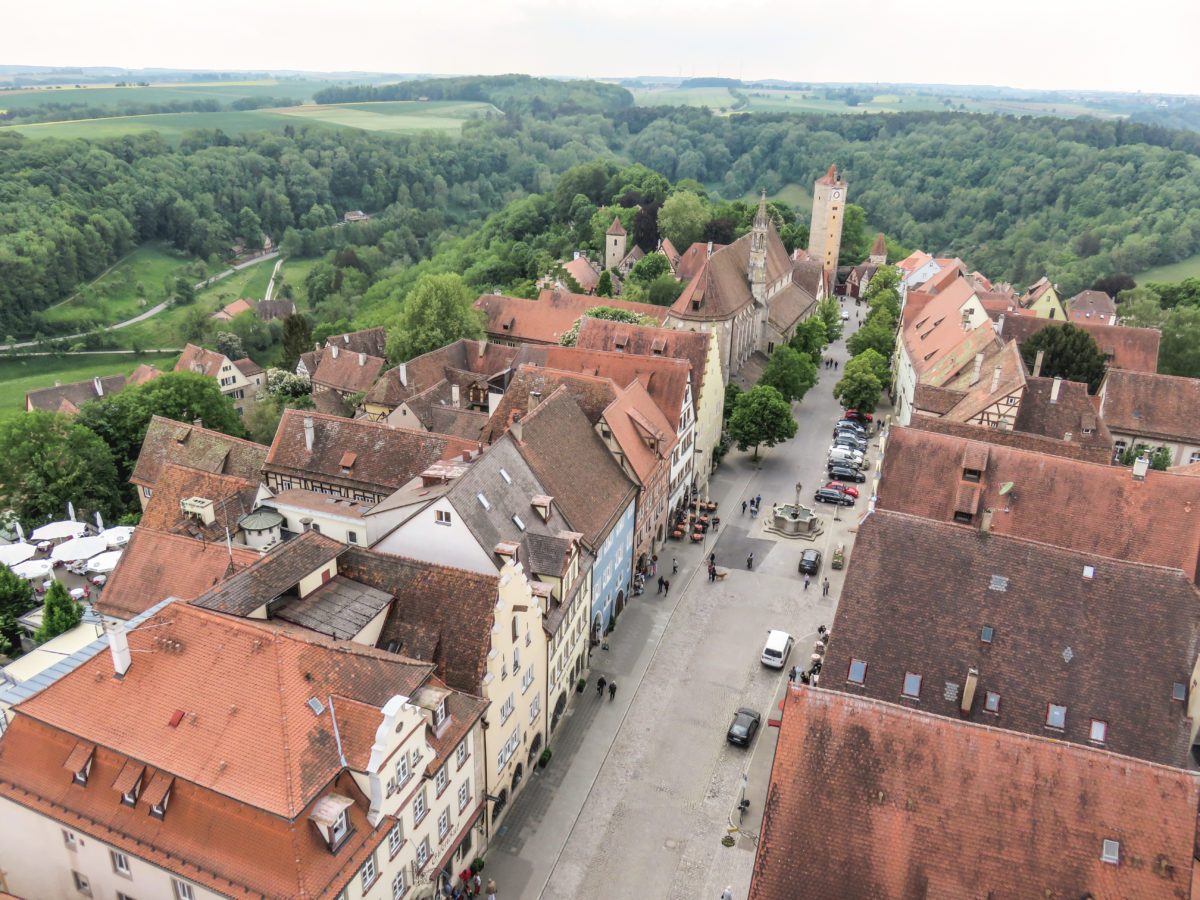

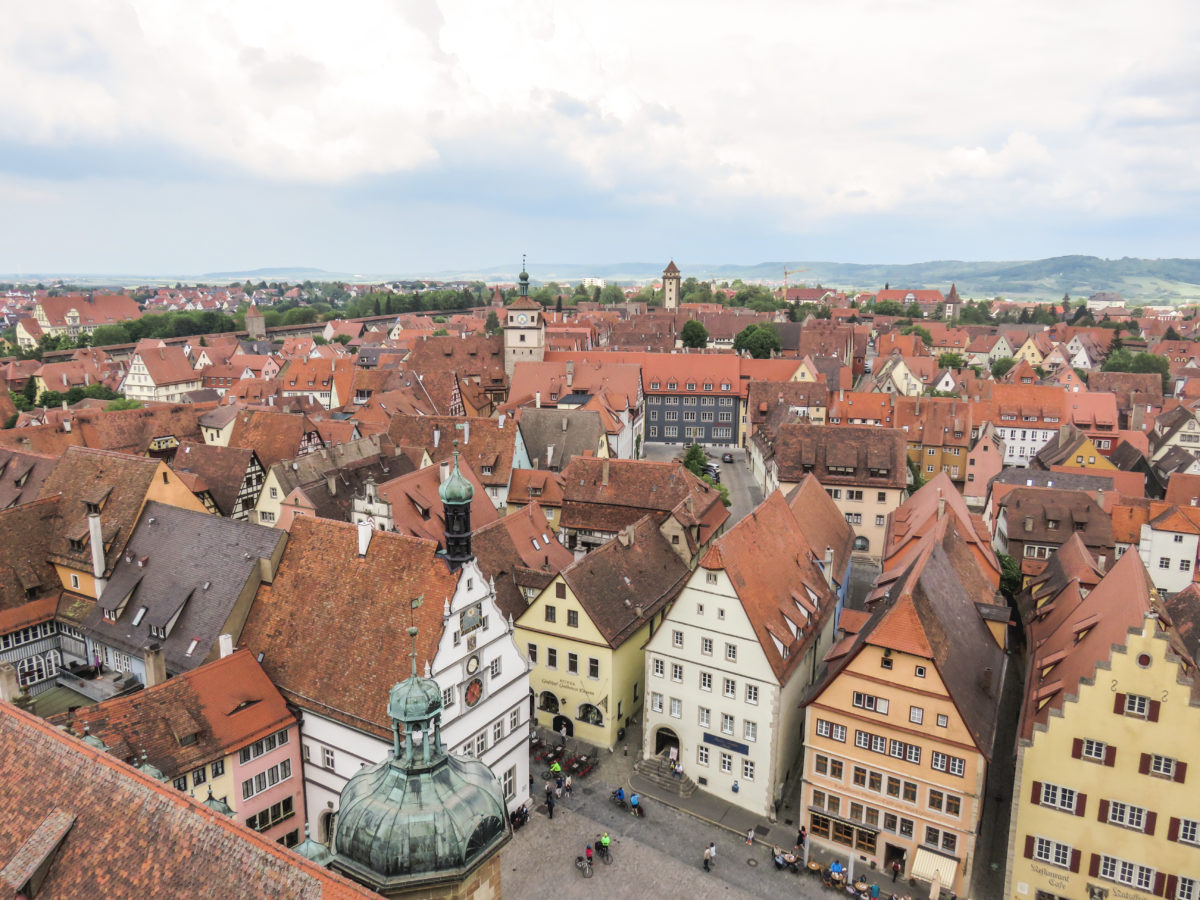
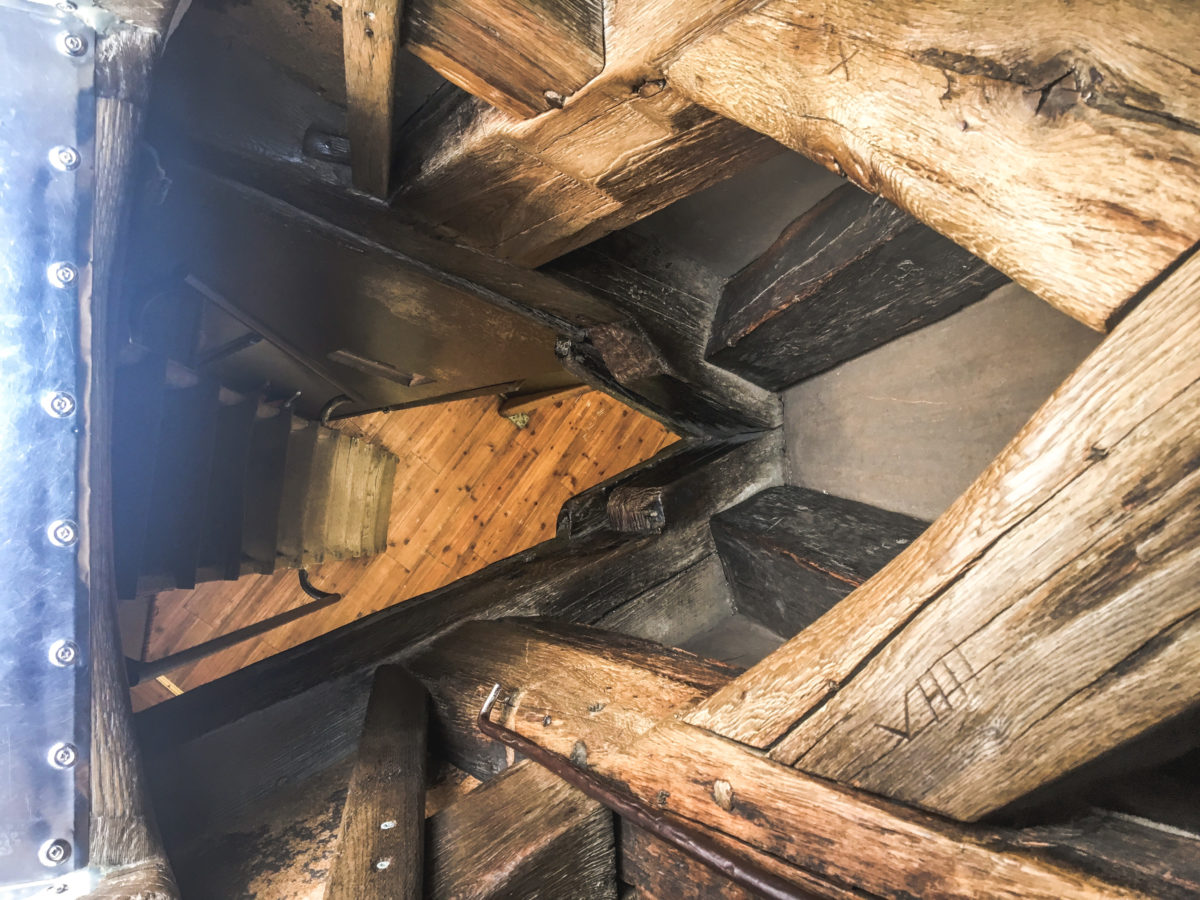
steep the last stairs
It was really from this village that I realised how old the region was. Of course, the houses look old, but what struck me were the inscriptions on each of them. The function of the house is written on the front, so you can’t go wrong: bakery, optician or restaurant. This phenomenon is very common in more rural Germany, but also in German-speaking areas since it is not trivial to discover the functions of the houses in small villages in German-speaking Switzerland as well. Often calligraphed in pretty lettering, this gives a charm to the place.
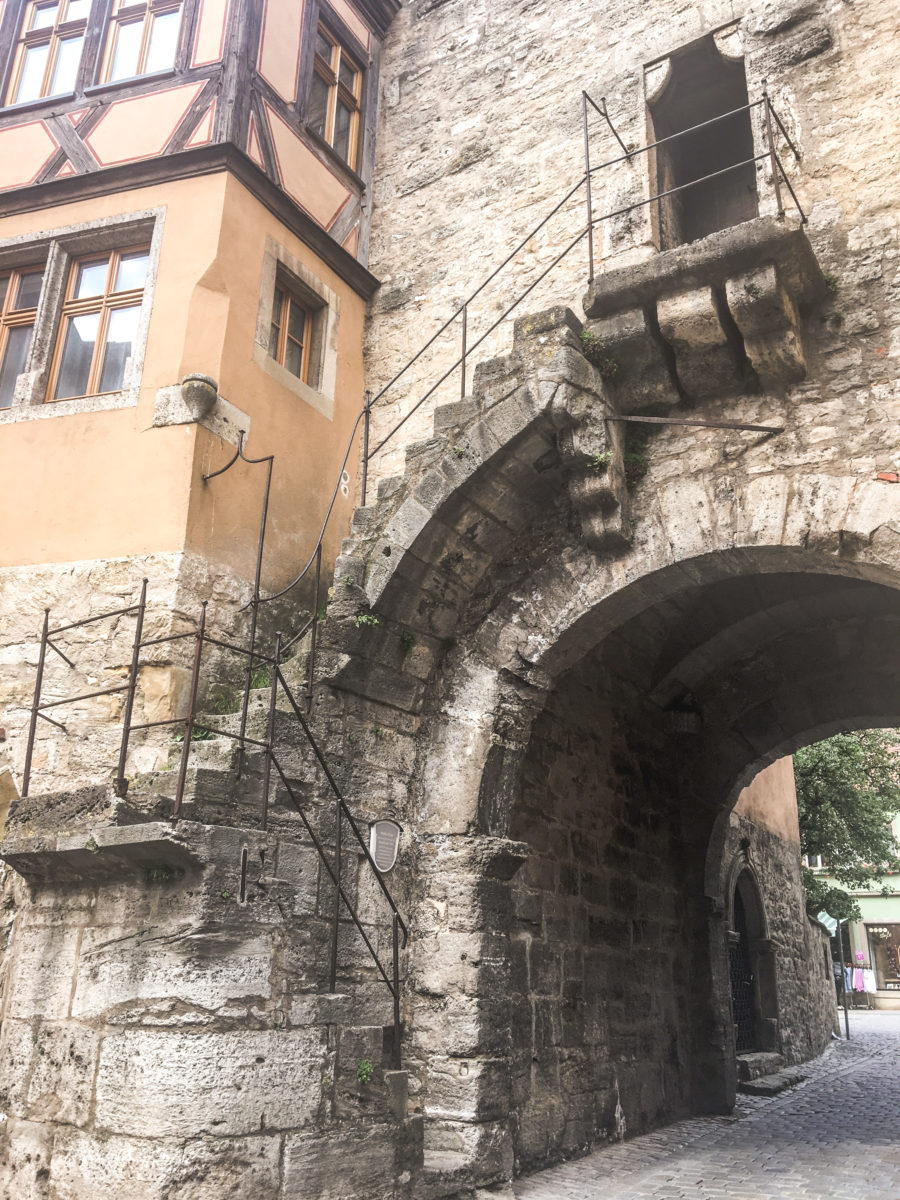
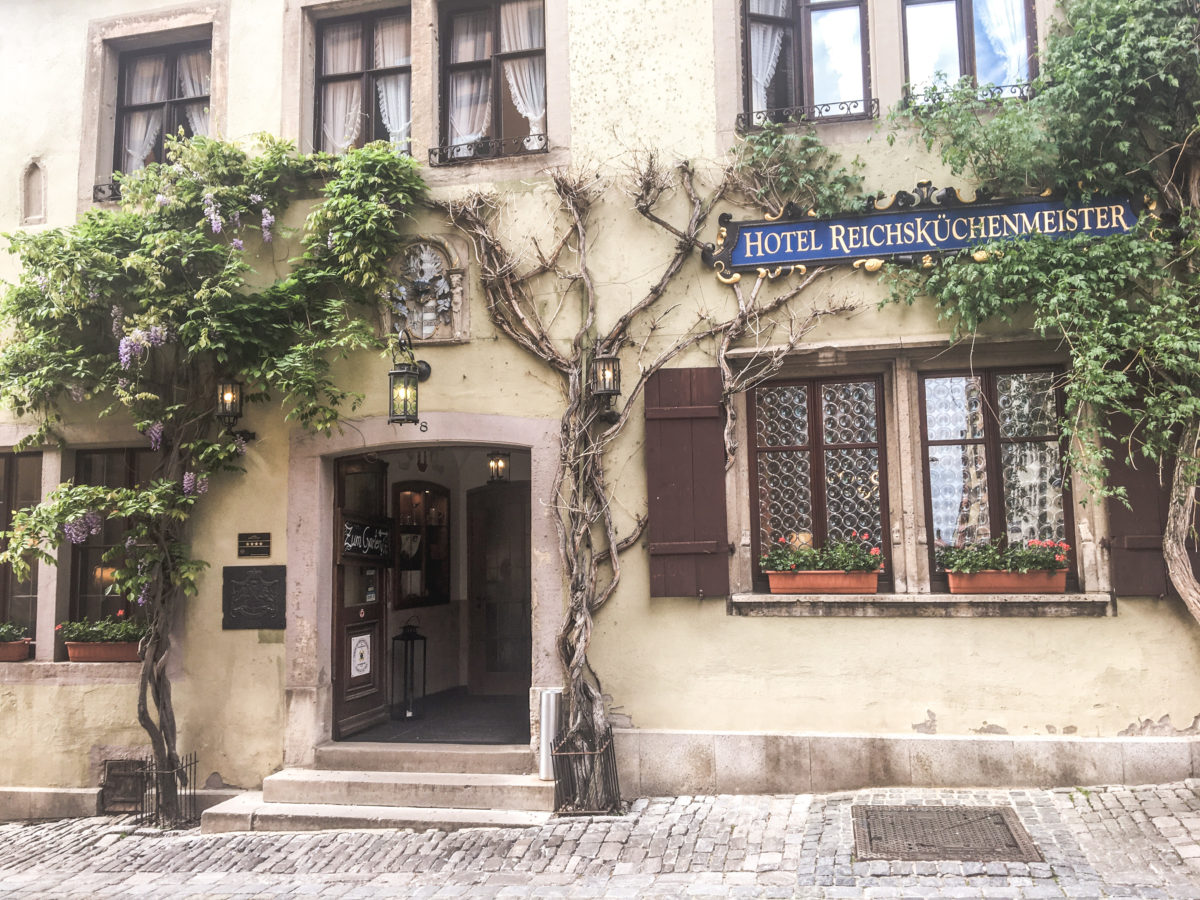

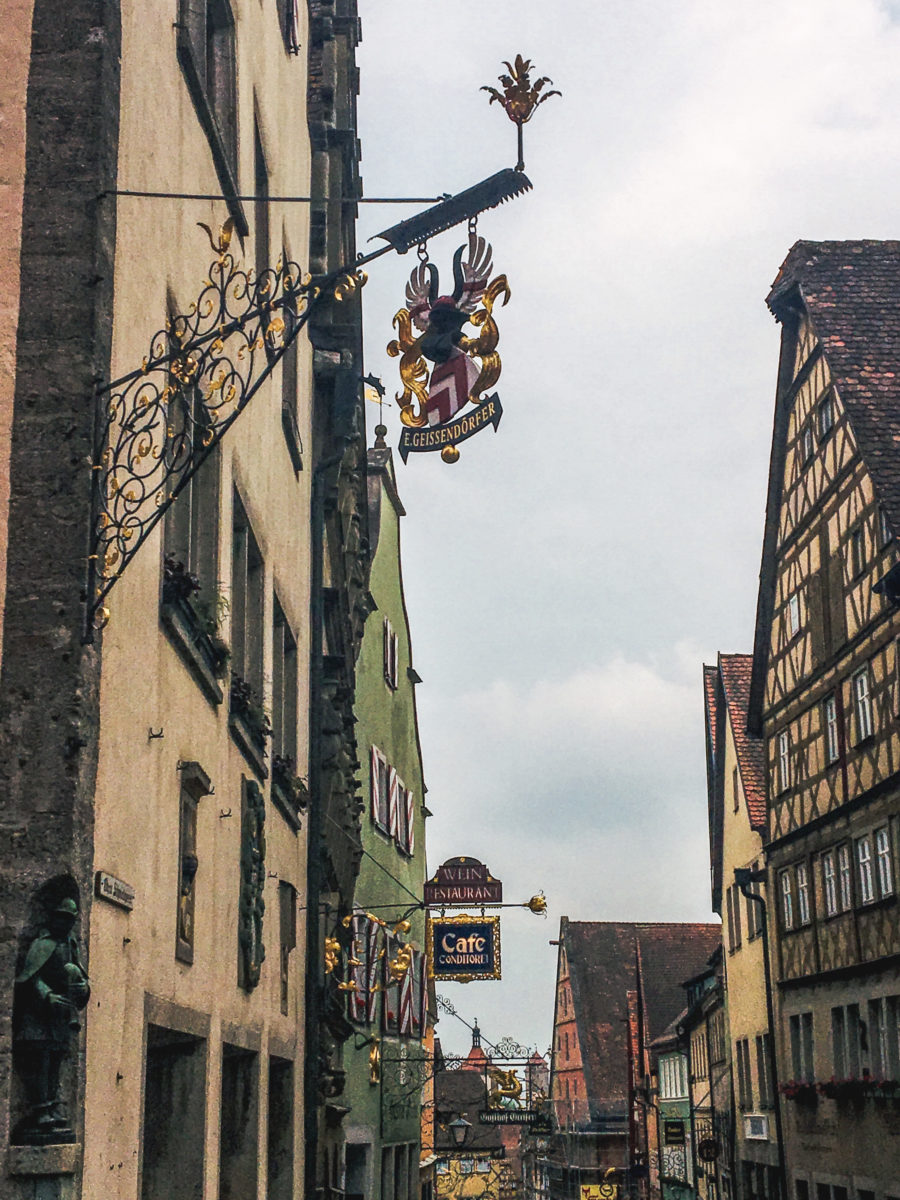
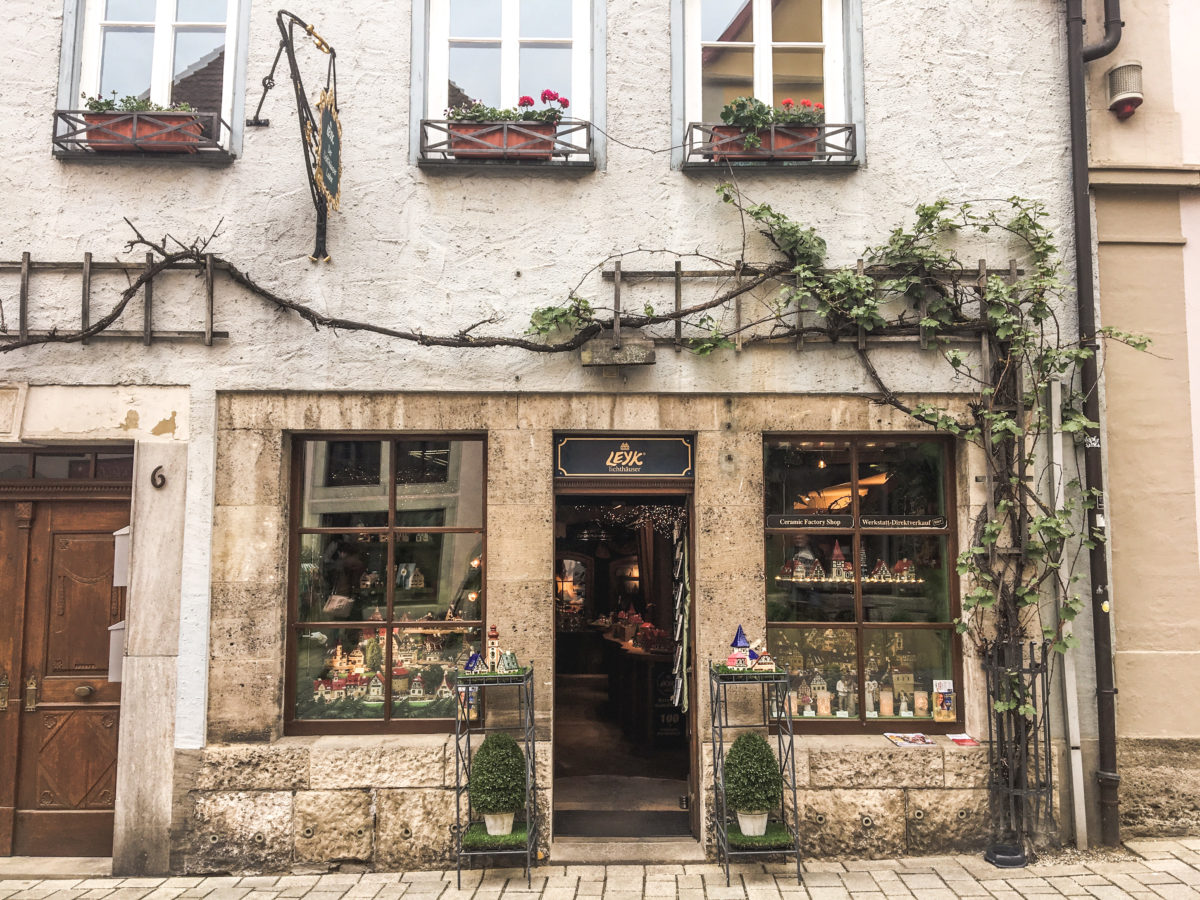

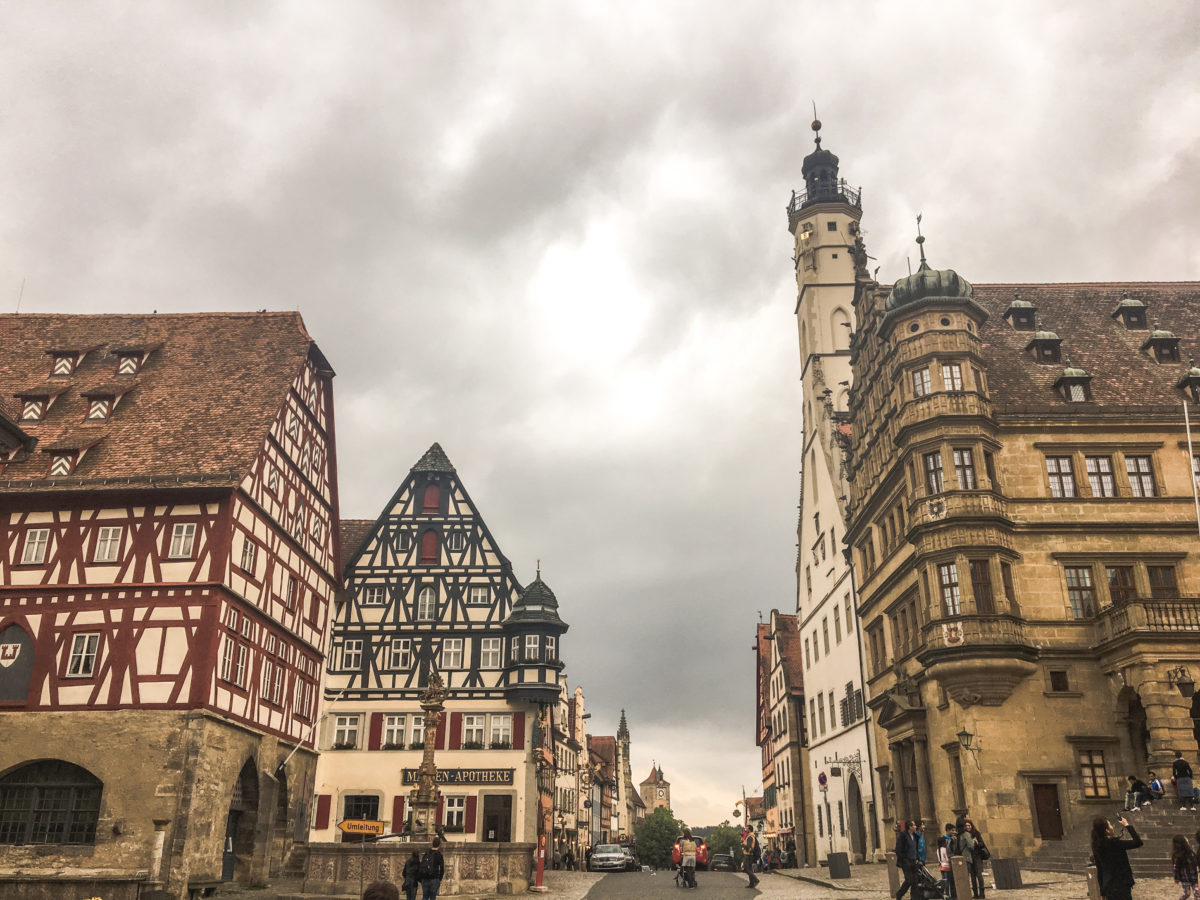
Apart from its medieval village setting, it was the Franconian friendliness that struck me most. In this landscape as a remnant of another time, the image of Rothenburg is one of friendly inhabitants, despite the hordes of tourists and delicious cuisine. The famous snowball, Schneeballen in German, can be enjoyed at any time of the day.

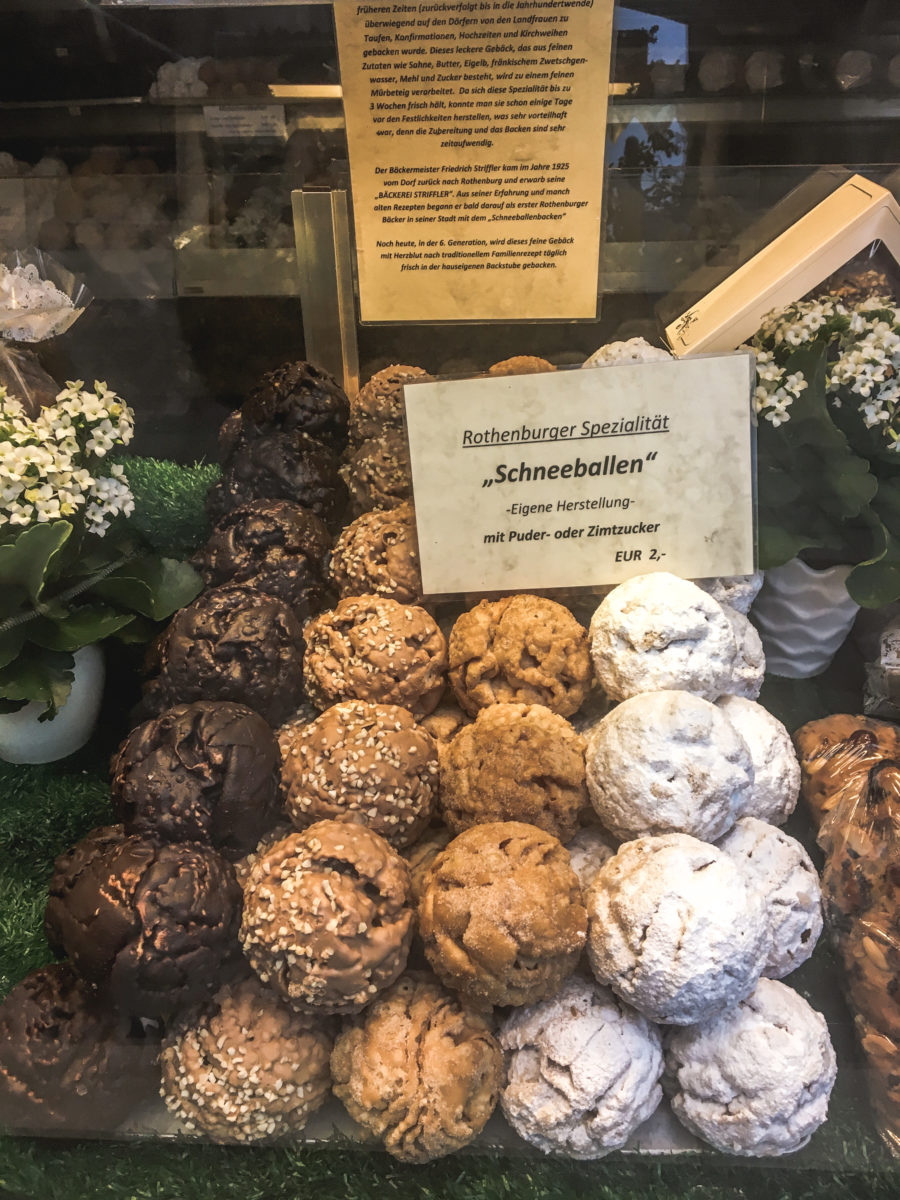
ROTHENBURG OB DER TAUBER TO NÖRDLINGEN – 74 KILOMETRES
We stopped for lunch in Neustädtlein, the neighbouring town of Dinkelsbühl (or is it a district, I didn’t really understand). It’s a nice place to stroll around and do a bit of shopping. Just like Rothenburg, the functions of the houses are written on the facades and give this town a charm.

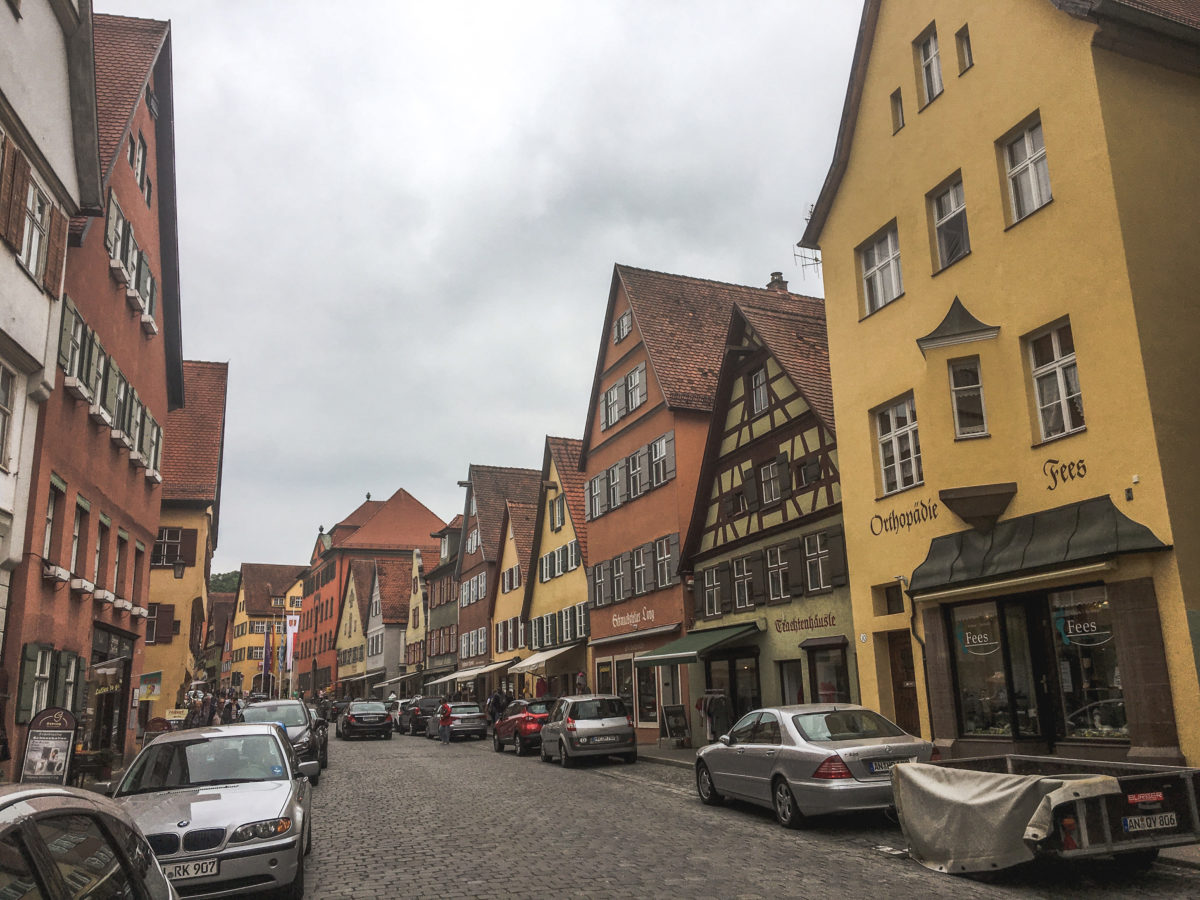
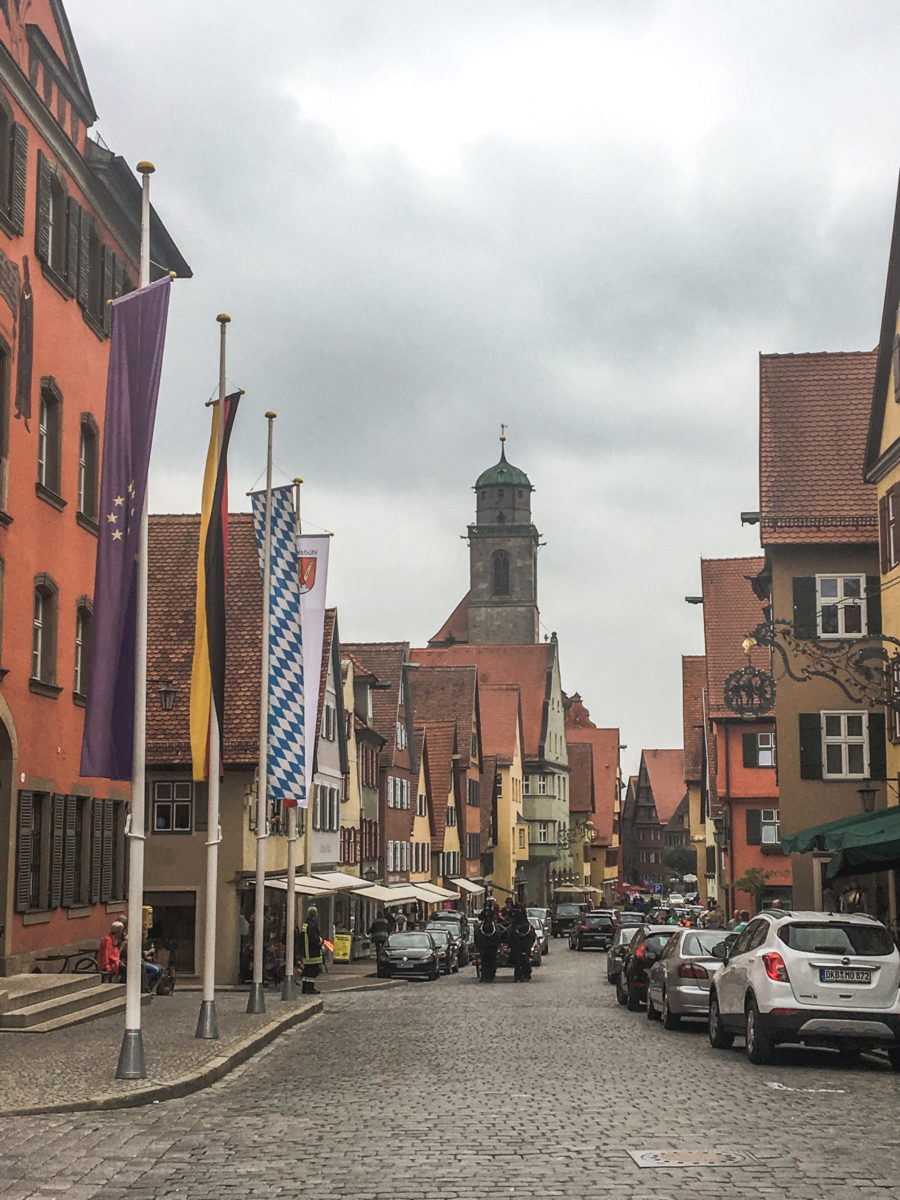
Neustädtlein’s “biggest attraction” is the apfelstrudel of the Hotel Vital Meiser. It was pure gluttony but it shows also the German charm (although the apfelstrudel is an Austrian tradition).
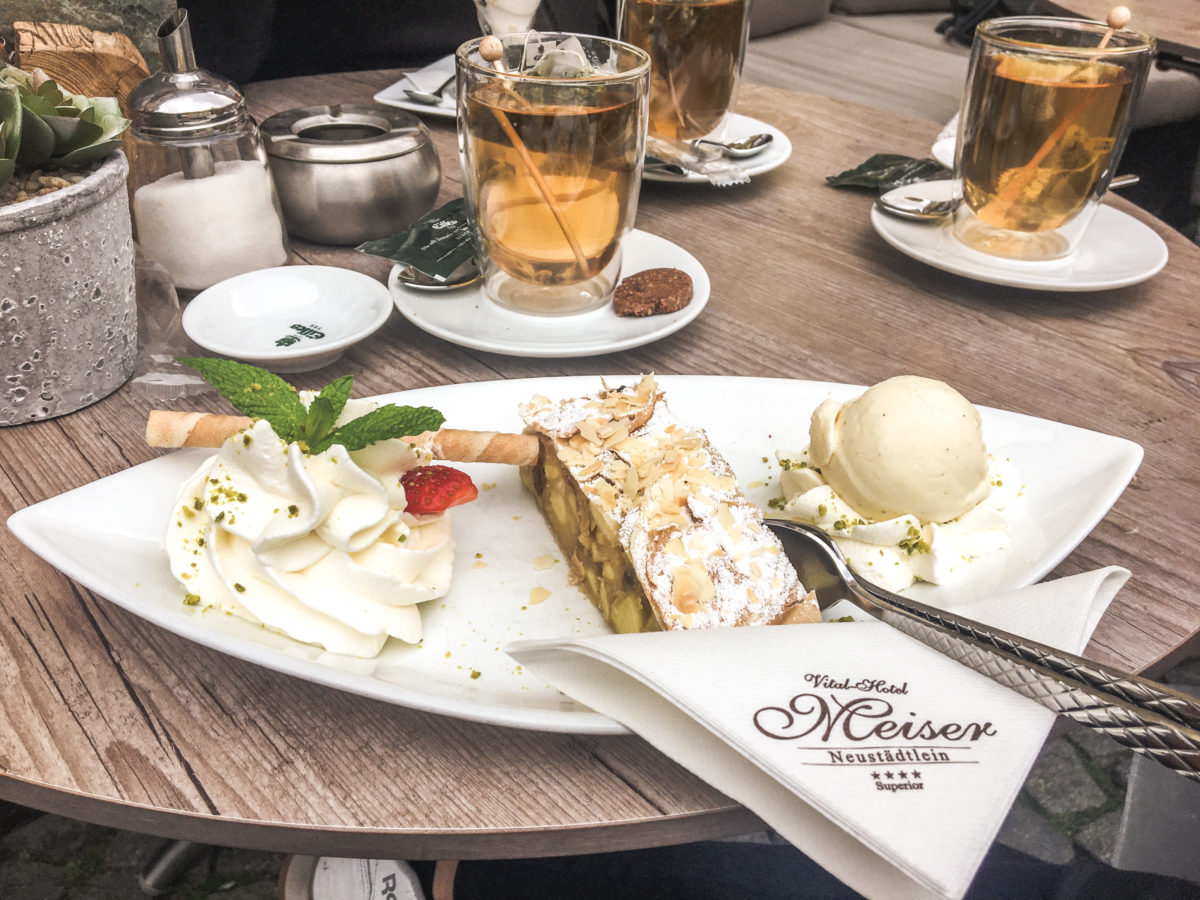
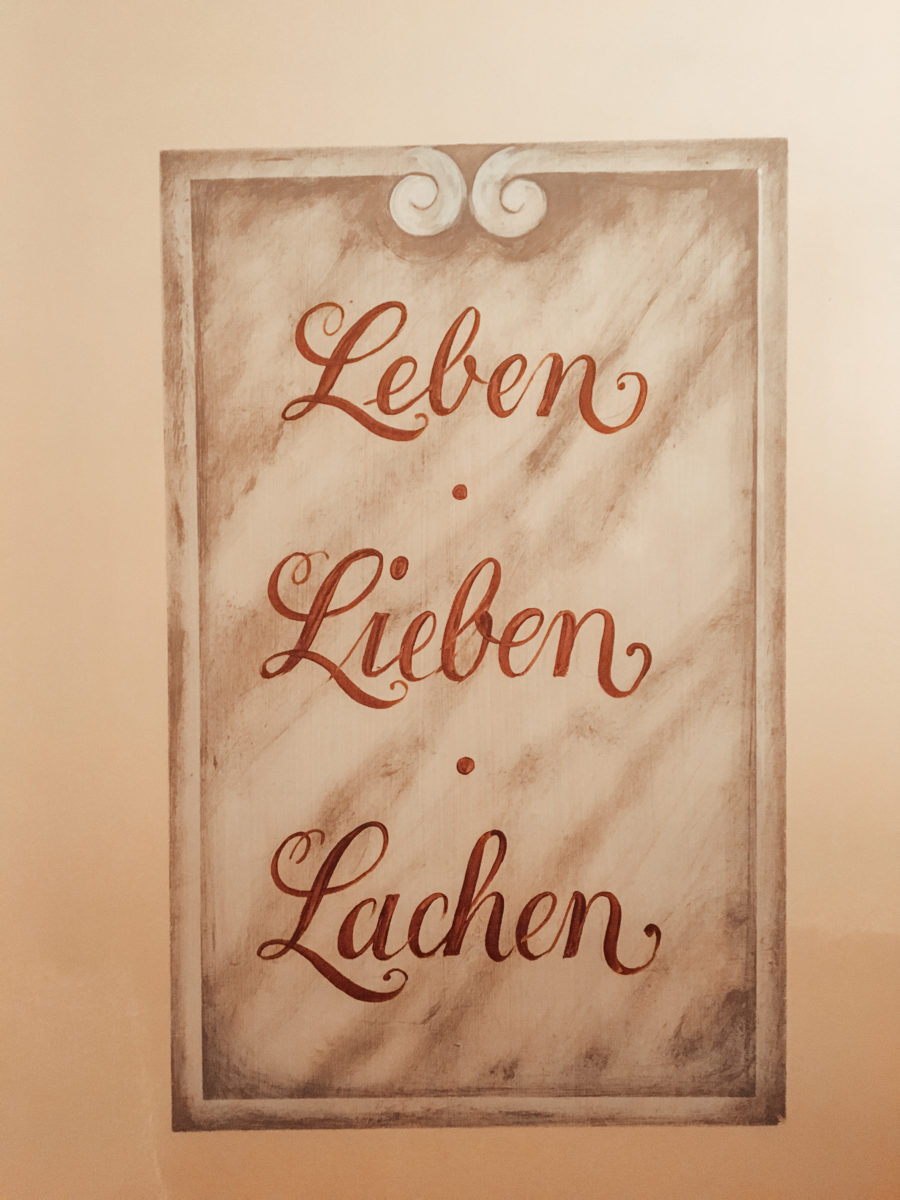
NÖRDLINGEN (172 KM)
It is a charming town, less touristy than its counterparts where the German Gemütlichkeit reigns (i.e. that friendly and welcoming German atmosphere) being in the region called Swabia. Perfect for a short stopover, there is nothing extraordinary to visit, so let yourself be carried away by the pretty atmosphere that will lead you to discover the beautiful places of Nördlingen. Since we were spending the night here, we spent the afternoon on the terrace of the most famous pizzeria in the area, the Fontana, where we enjoyed some good typical beers, played cards and soaked up the gentle way of life of this place.
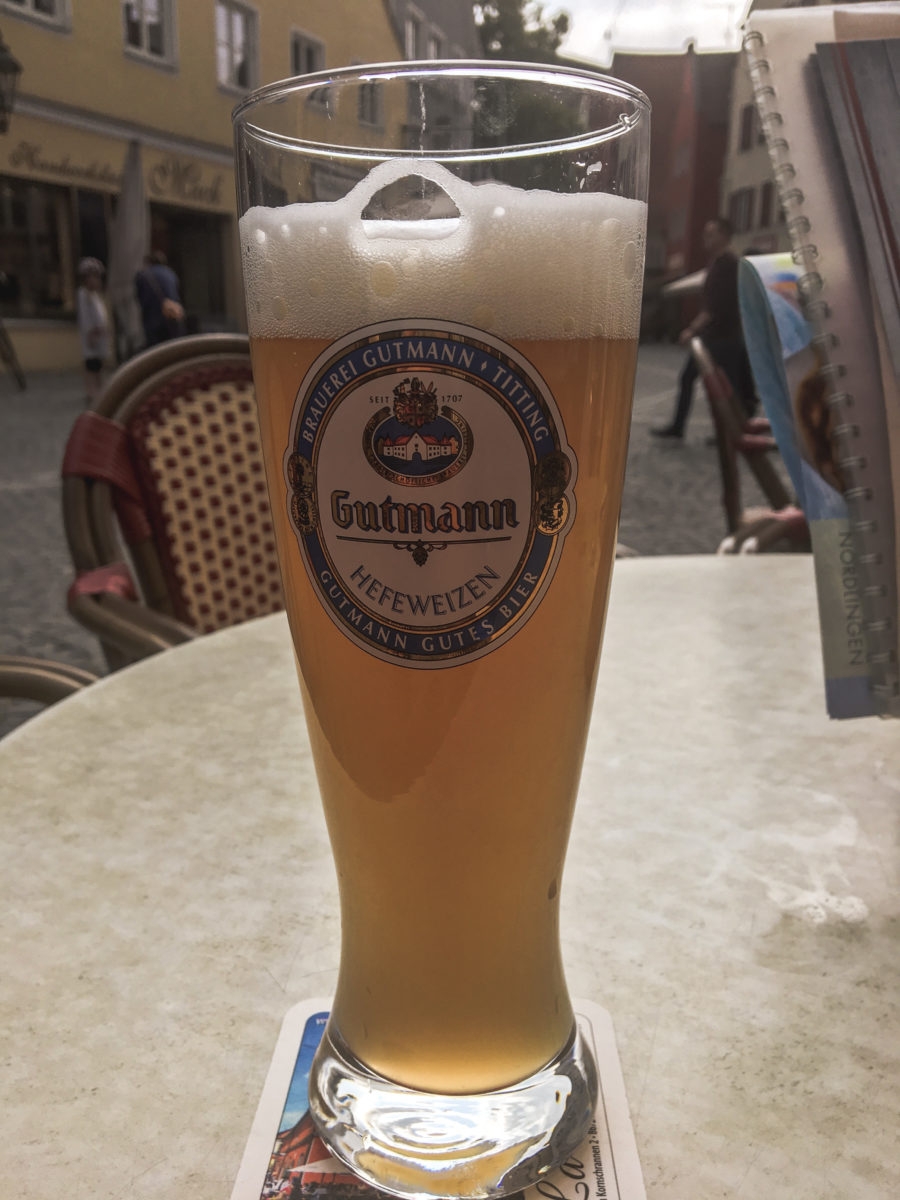
the Gutmann, there was nothing better than this German beer, or maybe a good man?
After I had exhausted the Gutmann’s barrel, I took a look at the history of Nördlingen and discovered a lot of interesting information. The town seems to have been drawn perfectly with a compass if you have a glimpse of the town from above. Moreover, the city walls are beautifully preserved and allow you to take a complete tour of the city, which is unique in Germany. What makes Nördlingen special is the fact that it was built in an ancient meteorite crater 15 million years ago. Indeed, the town is located in the middle of the crater, which is 12 km wide of a meteorite. It was in the 1960s that researchers realised that the rocks did not come from volcanic activity but from the impact of a meteorite whose power was equivalent to 250,000 times the Hiroshima bomb according to Le Routard guide. In addition, the American astronauts of Apollo 14 and then 17 came here to train to collect lunar rocks. For further information and to learn more about this history, you can visit the Rieskratermuseum.

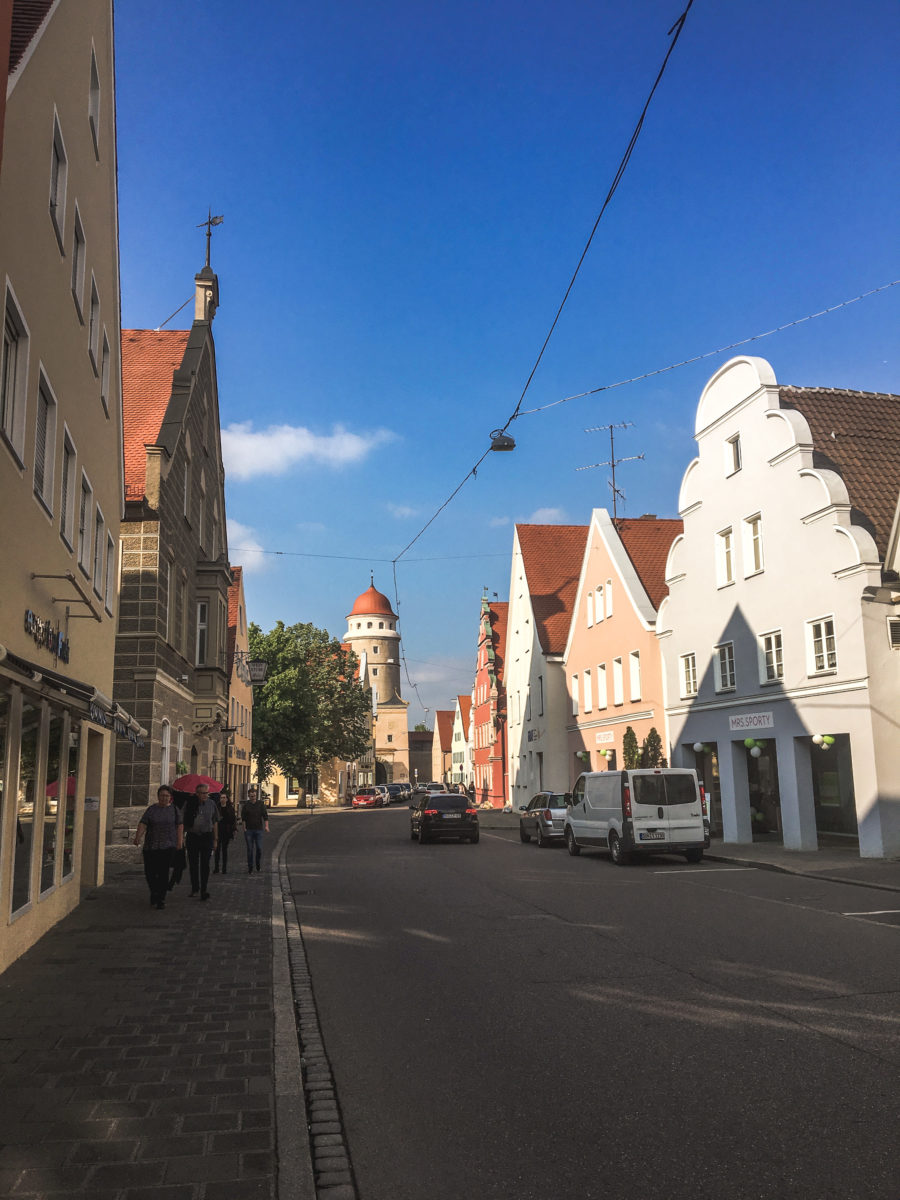
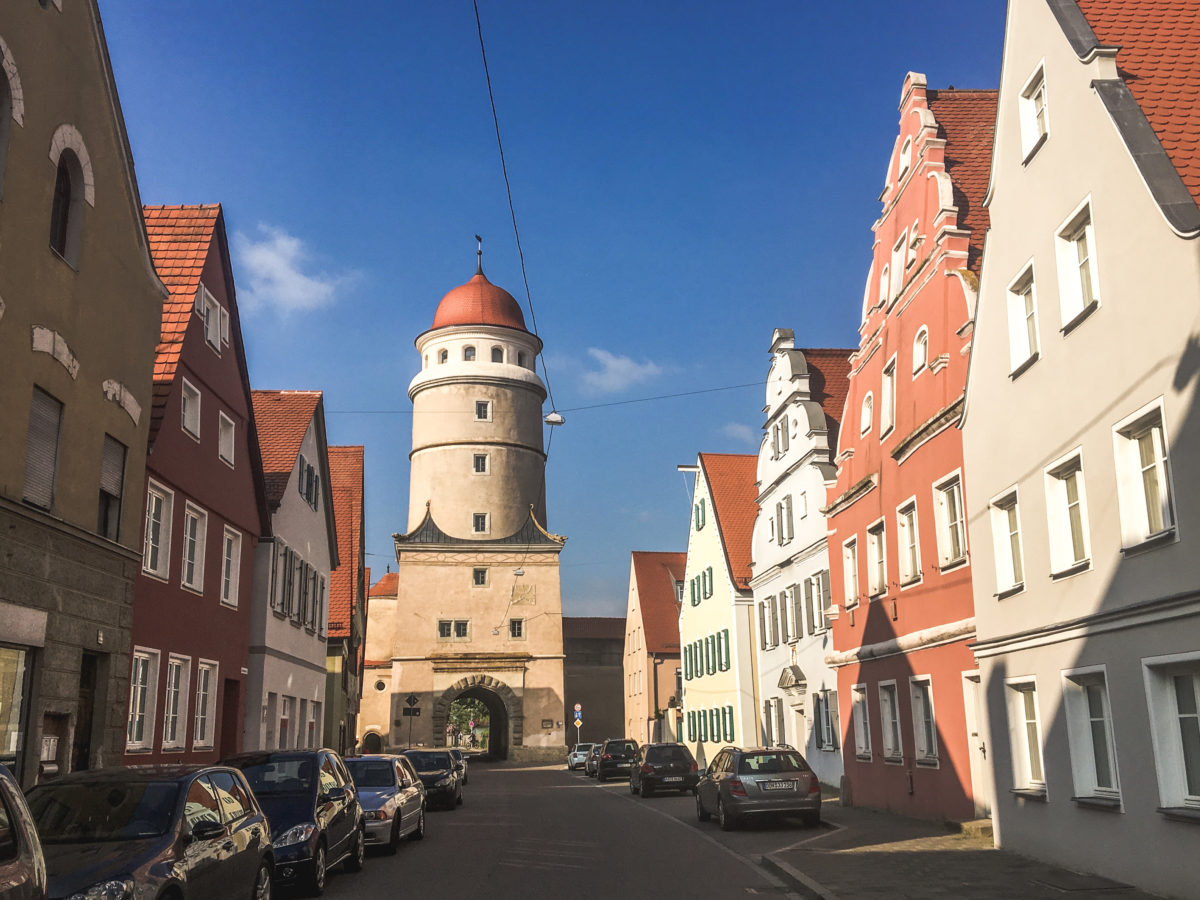


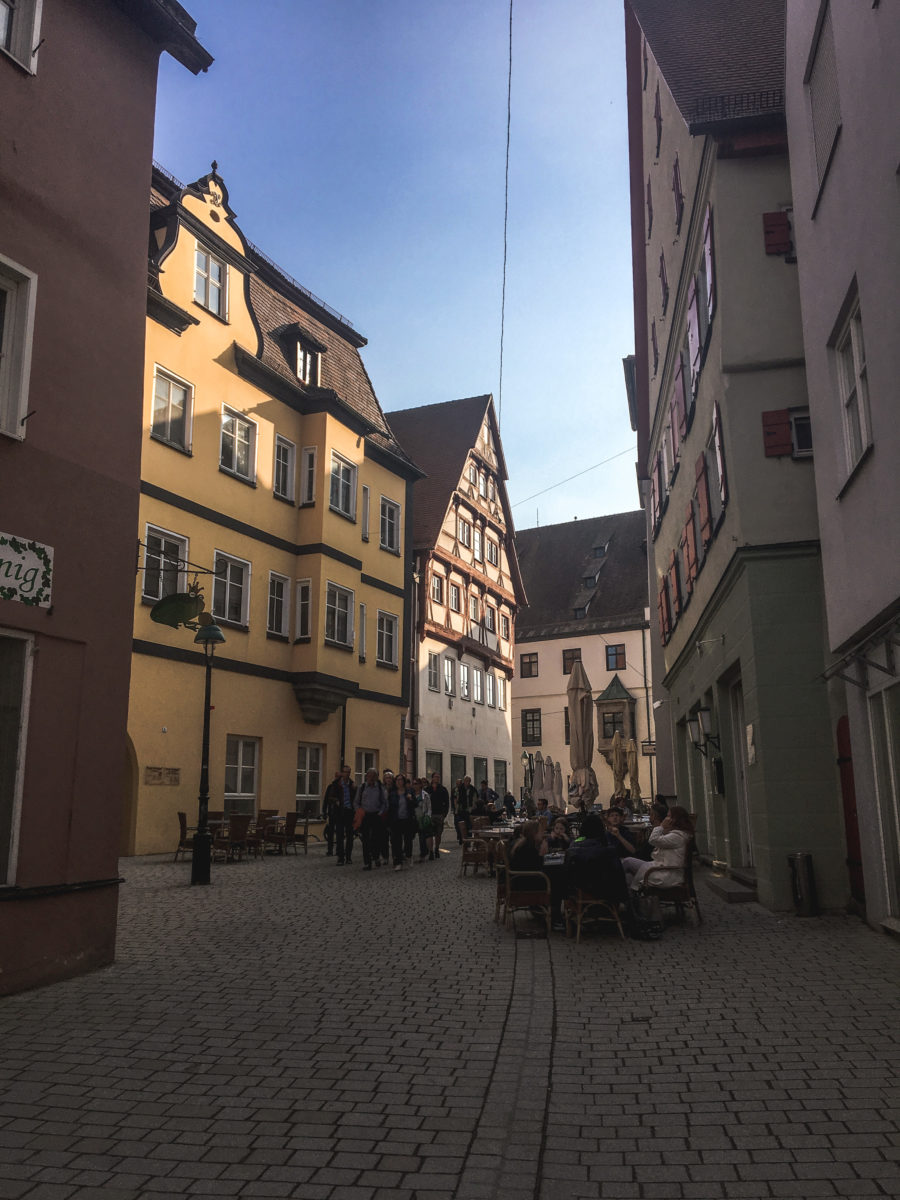
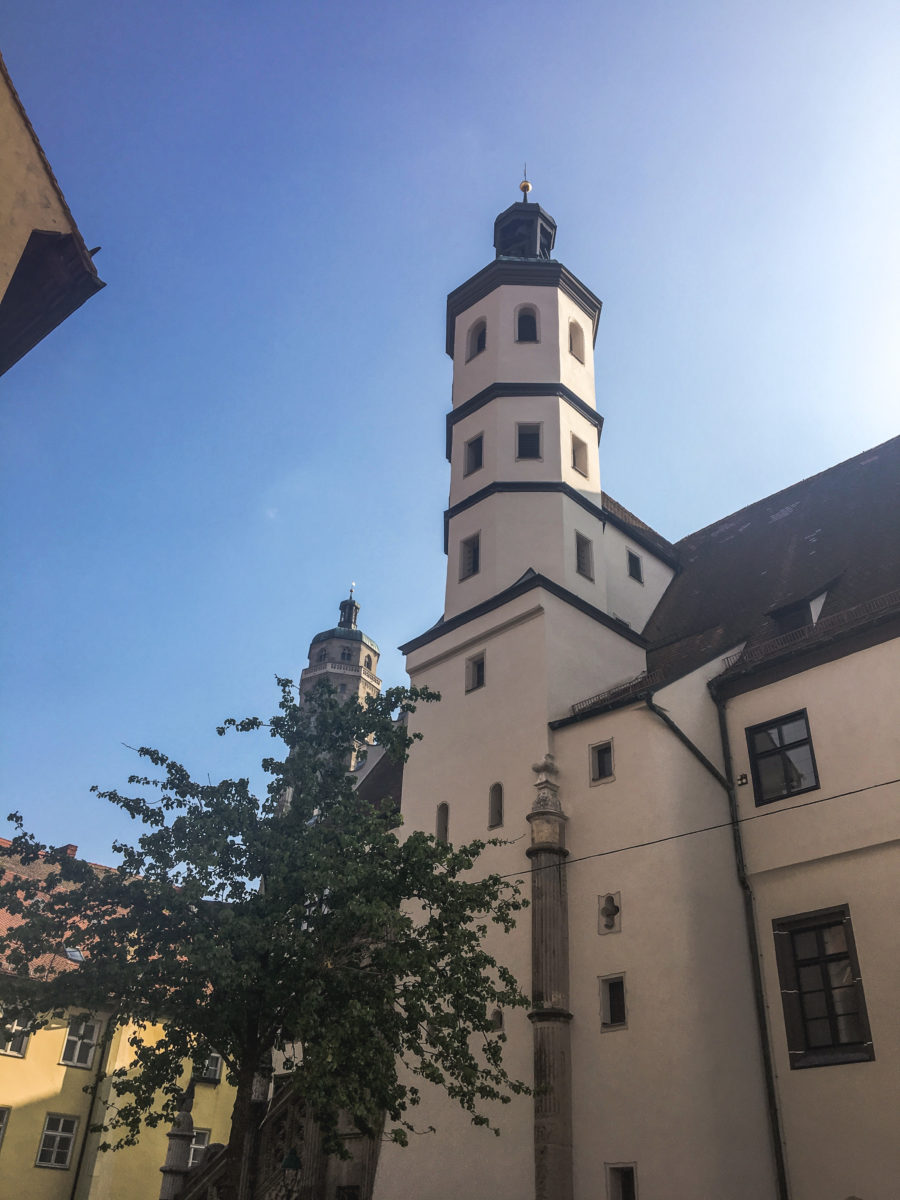
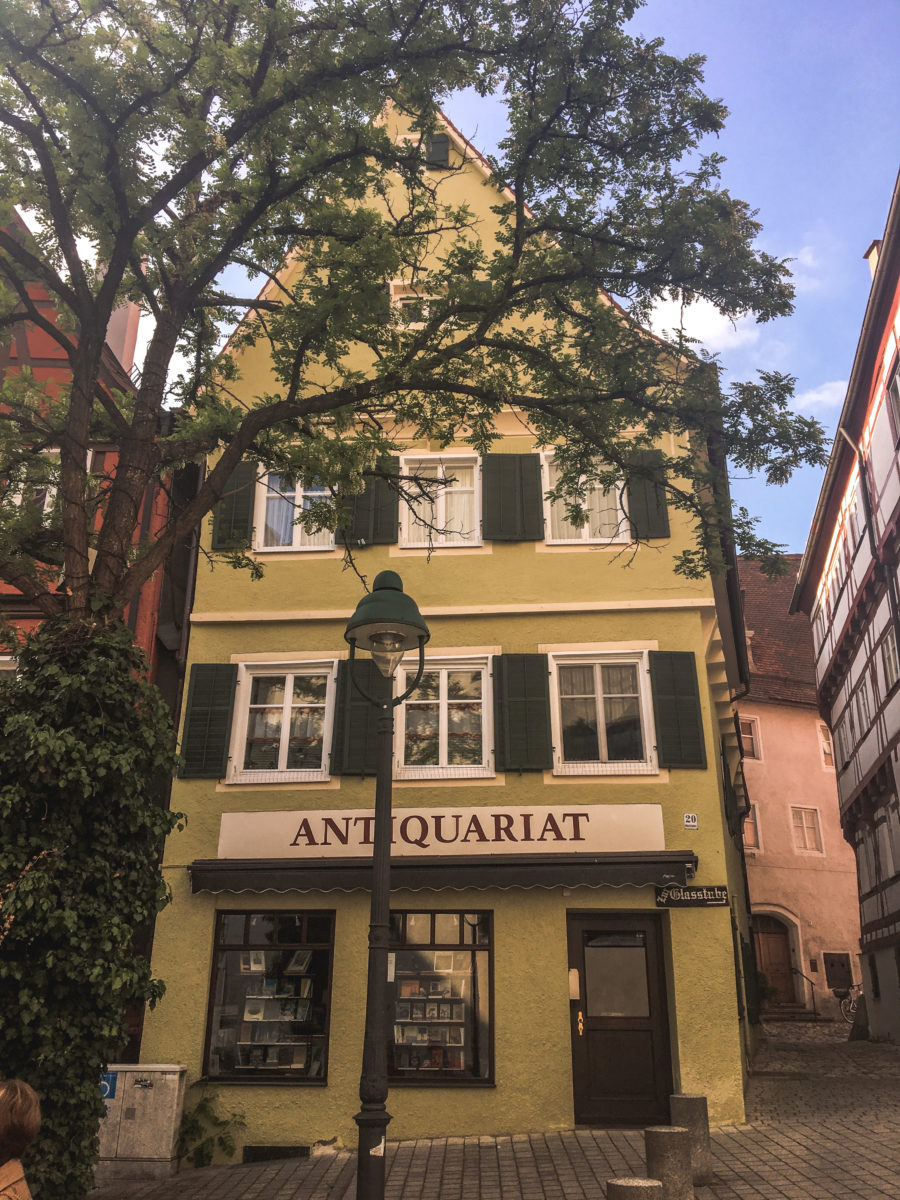

NÖRDLINGEN To AUGSBURG – 95 KILOMeTRES
At kilometre 192, we stopped in Harburg, a town known worldwide for its castle. It is said that even Michael Jackson wanted to buy it, without success.
This castle is one of the best-preserved in Germany and the view from the river Wörnitz is truly charming and romantic. I also recommend you to take a walk through the maze of small streets in the town and to rest by the river. A well-deserved break on the Romantic Road.
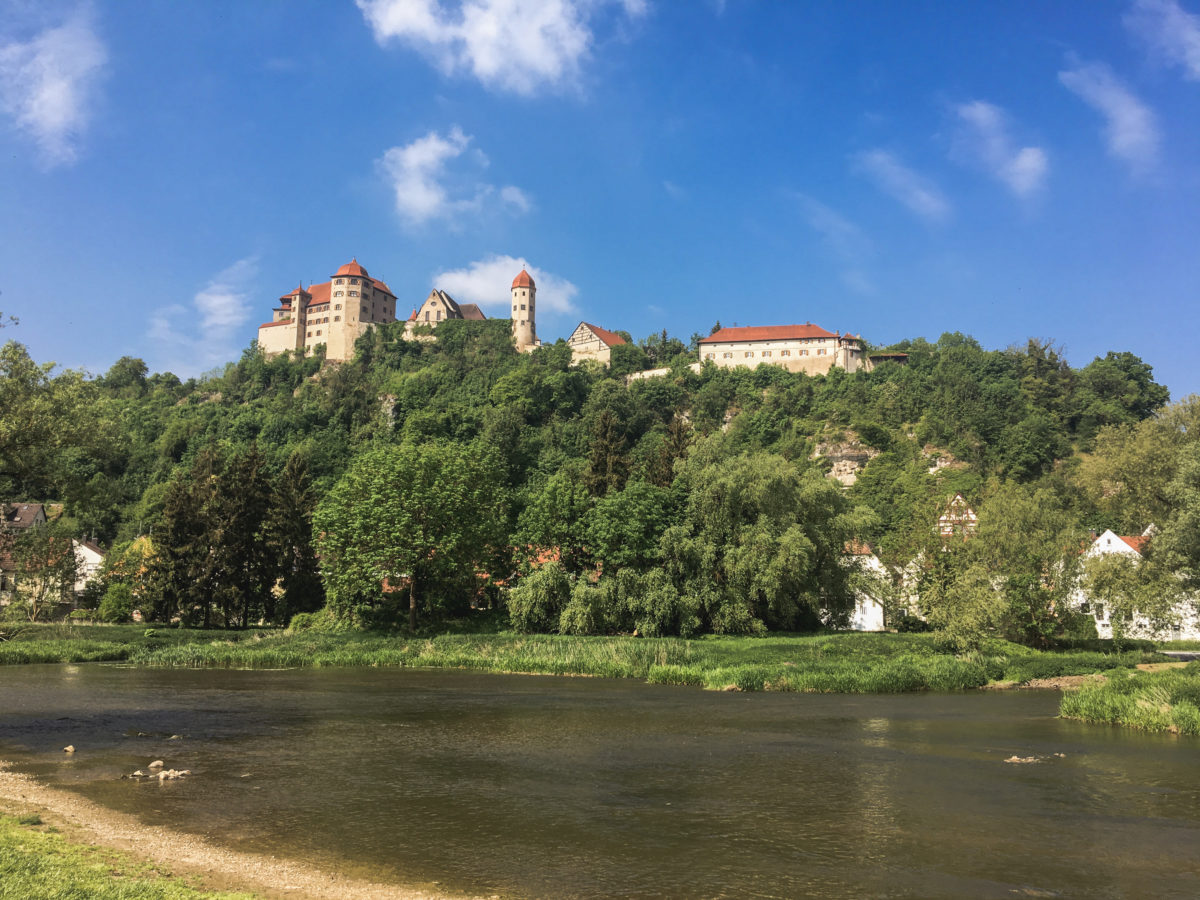
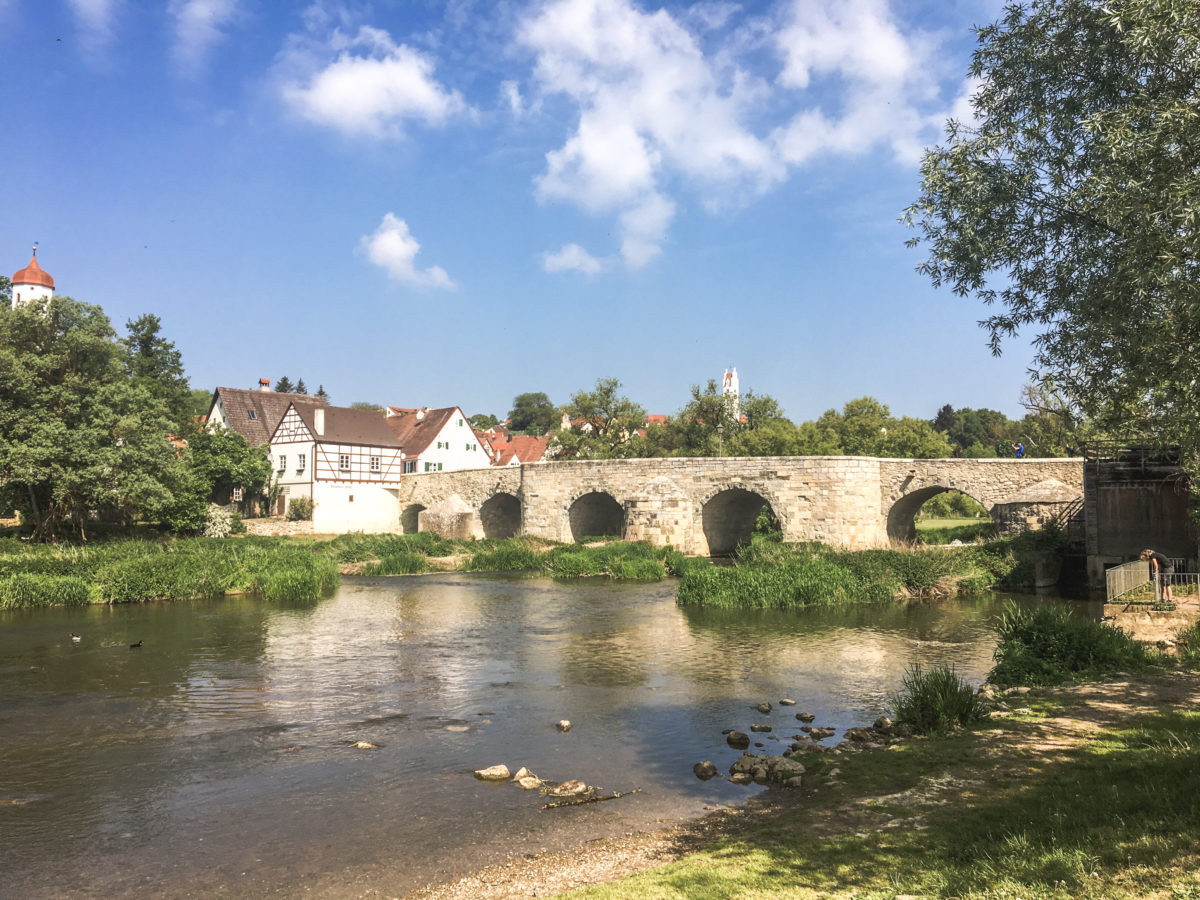
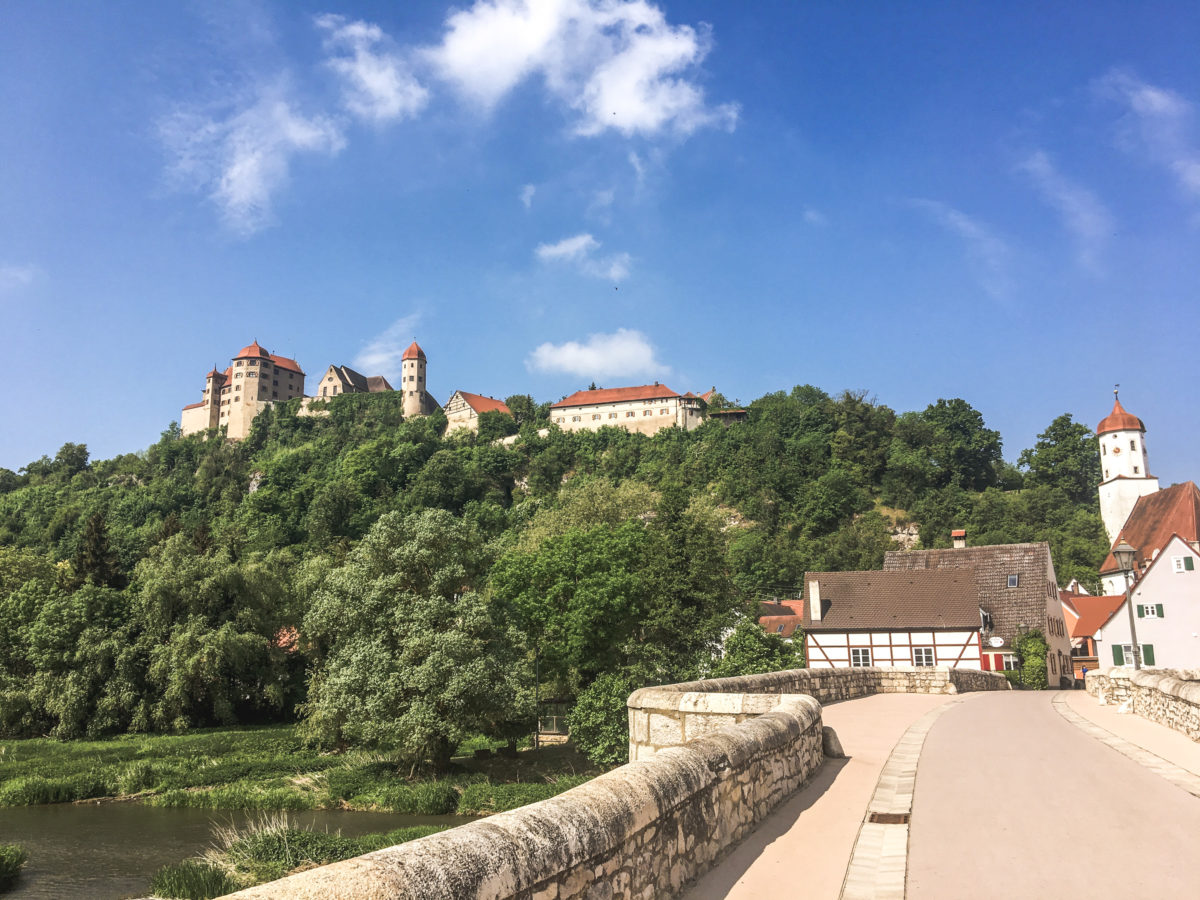
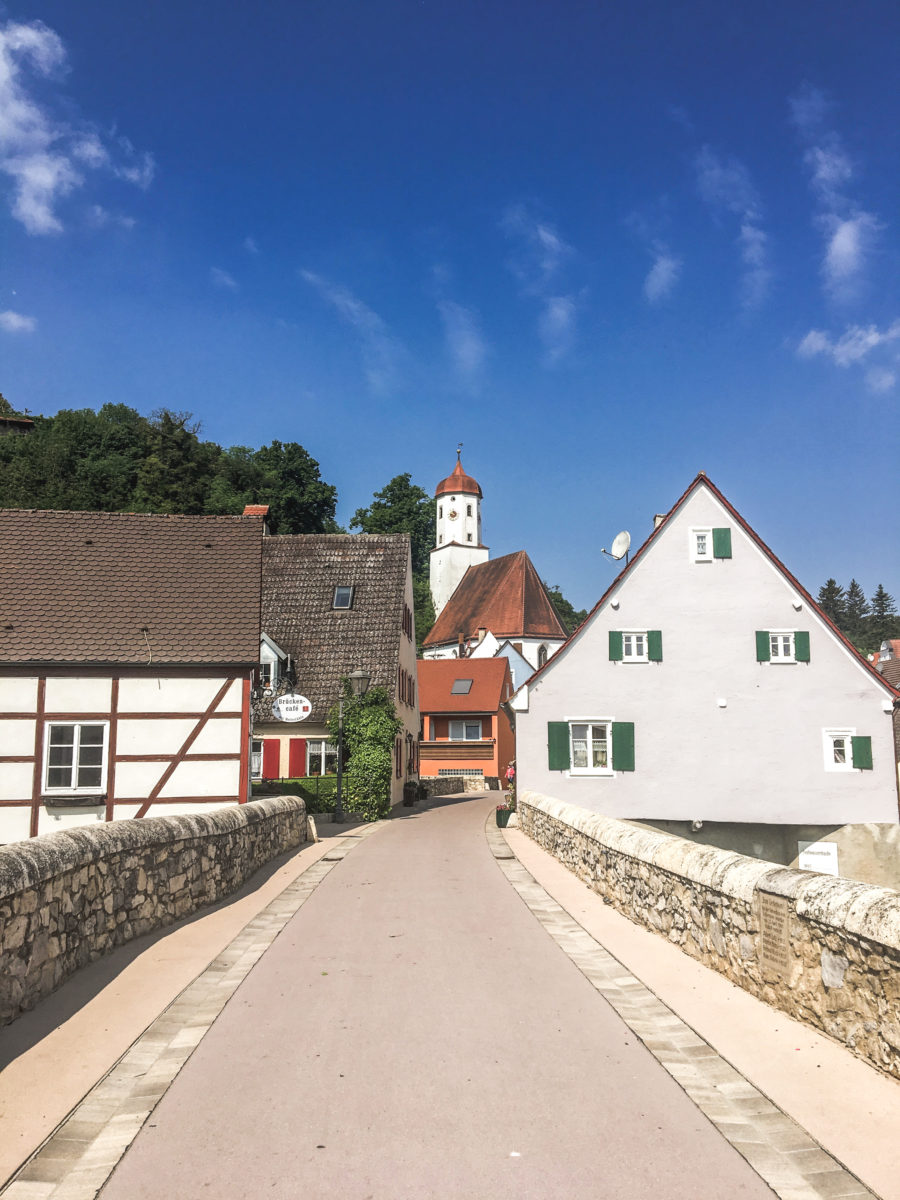

Afterwards, we passed through Donauwörth to make a small hello to the Danube before heading back to Augsburg. This city was 75% destroyed after the Second World War, although it was completely rebuilt. Its charm lies mainly thanks to the confluence of the Danube and the Wörnitz.
AUGSBURG (KM 267)
After this break, we took the car again, following the Romantic Road southwards towards Augsburg, the third oldest city in Germany (dating back to Roman times) and the third economic centre of Bavaria (after Munich and Nuremberg).
The city was founded by the sons of Emperor Augustus in 15 BC and was a free imperial city from 1156 until the beginning of the 19th century. This meant that the city was run independently of the Holy Roman Empire and could freely raise taxes. The city gradually became an economic and commercial centre until it eventually became the financial capital of the Holy German Empire.
If Augsburg is so famous, it is mainly due to one man, Jacob Fugger (1459-1525), a banker and above all the richest man in Europe at that time. Thanks to him, the city developed not only architecturally but also socially. We owe his Fugger family, the Fuggerei (I will tell you about them below), in particular.
Today the city has a rich culture and is positioned as a university centre with the new university founded in 1970. Charming, it is a pleasant passage on the road and deserves to linger there for a whole day as its many secrets are scattered all over the place. Shops, Renaissance palaces, fountains and even banks (including the Fugger’s still in business), it is a perfect city to stroll around.
While wandering one afternoon, we could discover some of them, such as the small canals that are hidden in the maze of pedestrian streets. The inhabitants call this area the lower city, being a city within the city. If you would like to discover this aspect of Augsburg, do not hesitate to take one of the many stairs along Maximilienstrasse (main street). The heart of the city is the Rathausplatz, a large square where the town hall is located, a magnificent building in Renaissance style. It is the perfect place to eat at a terrace and enjoy the good weather.
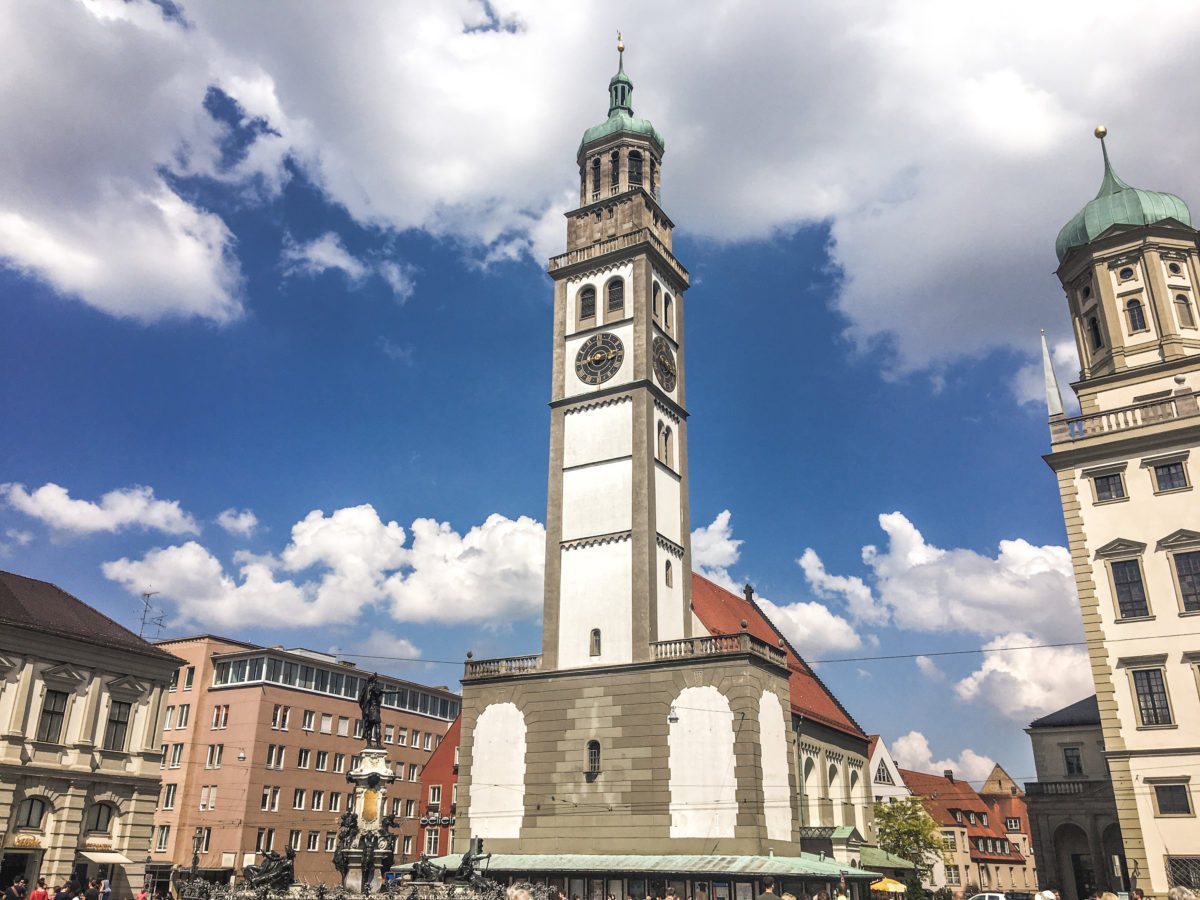
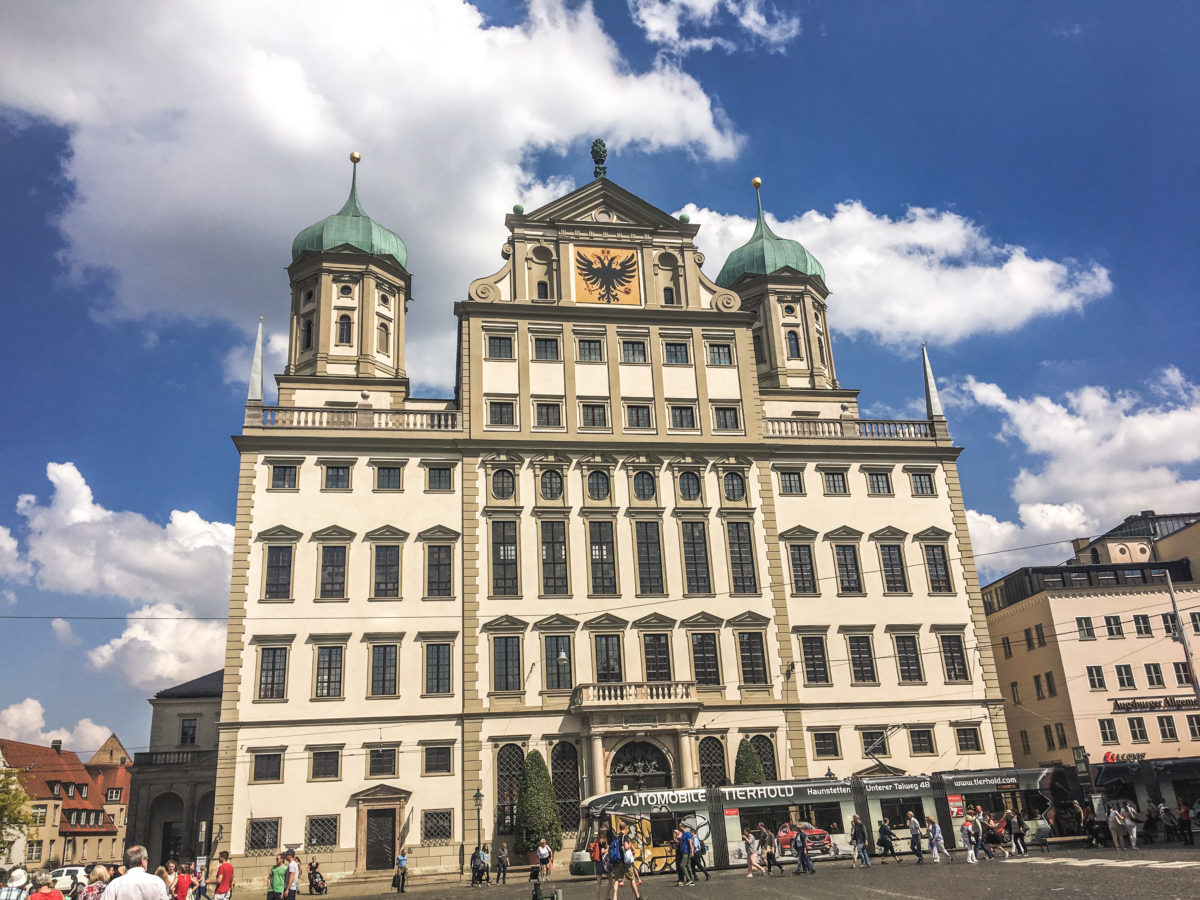

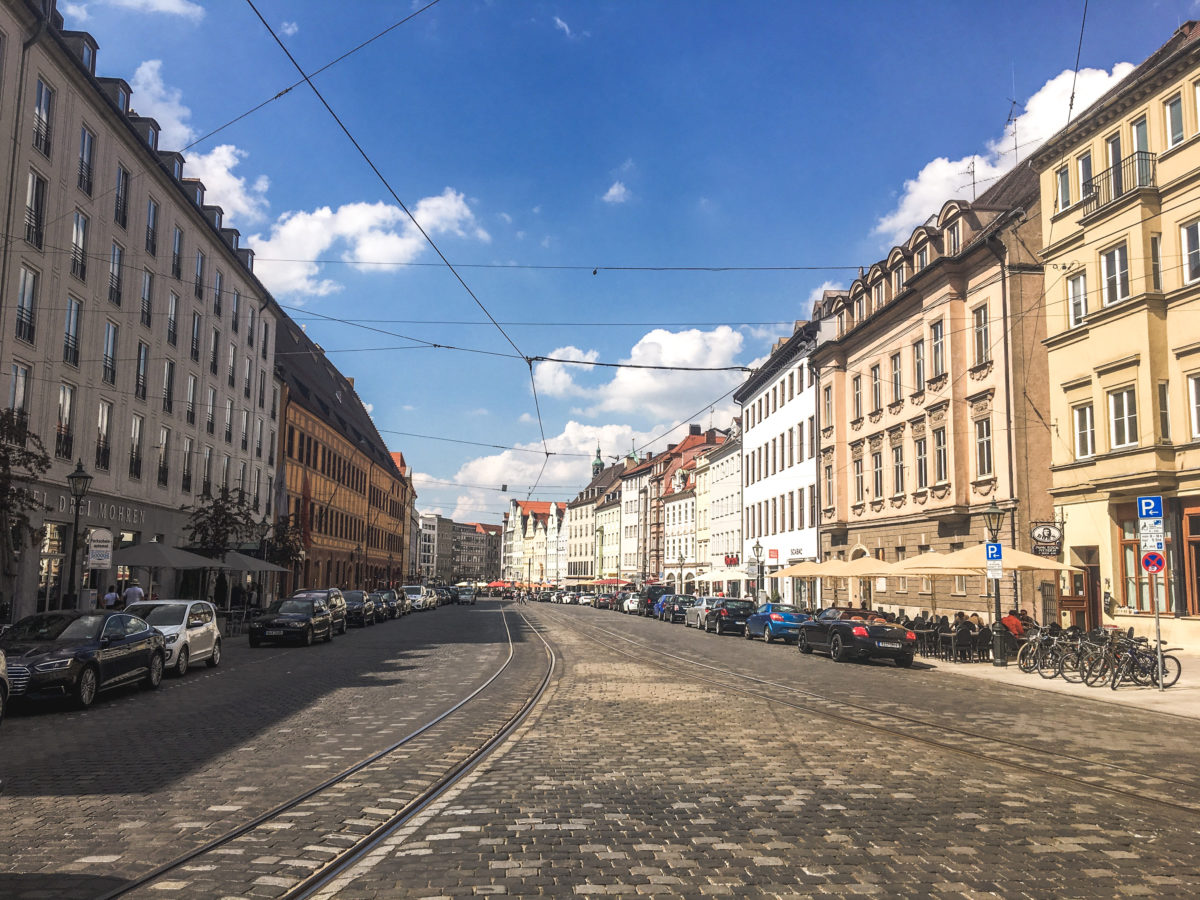
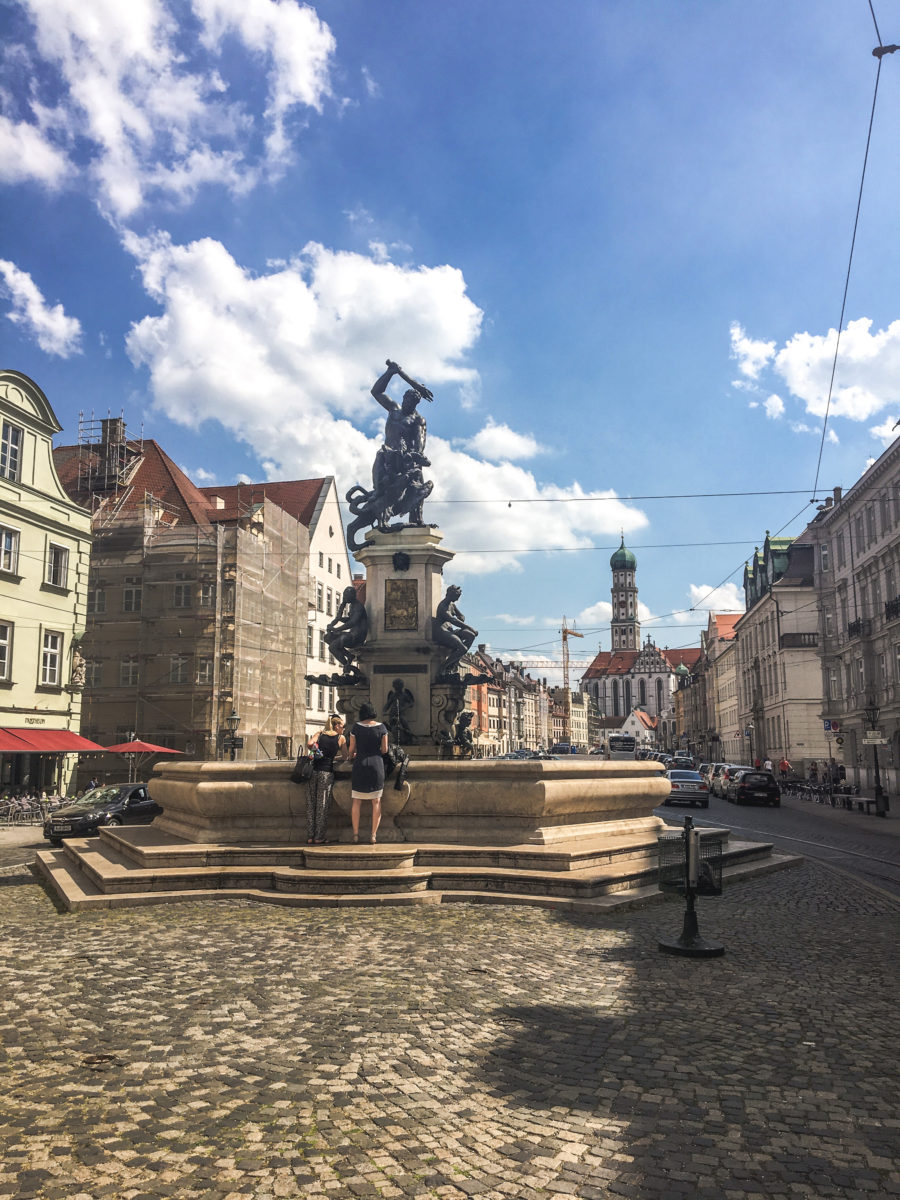

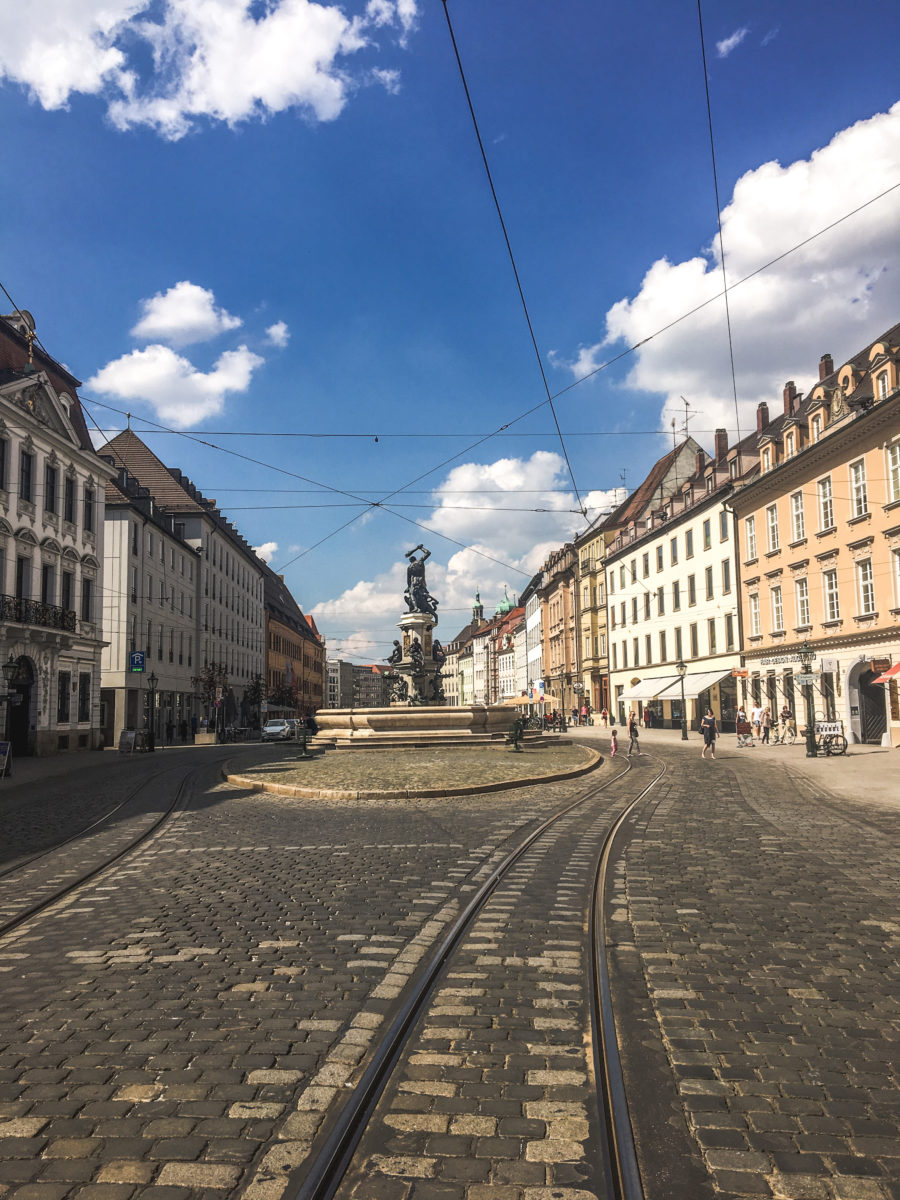
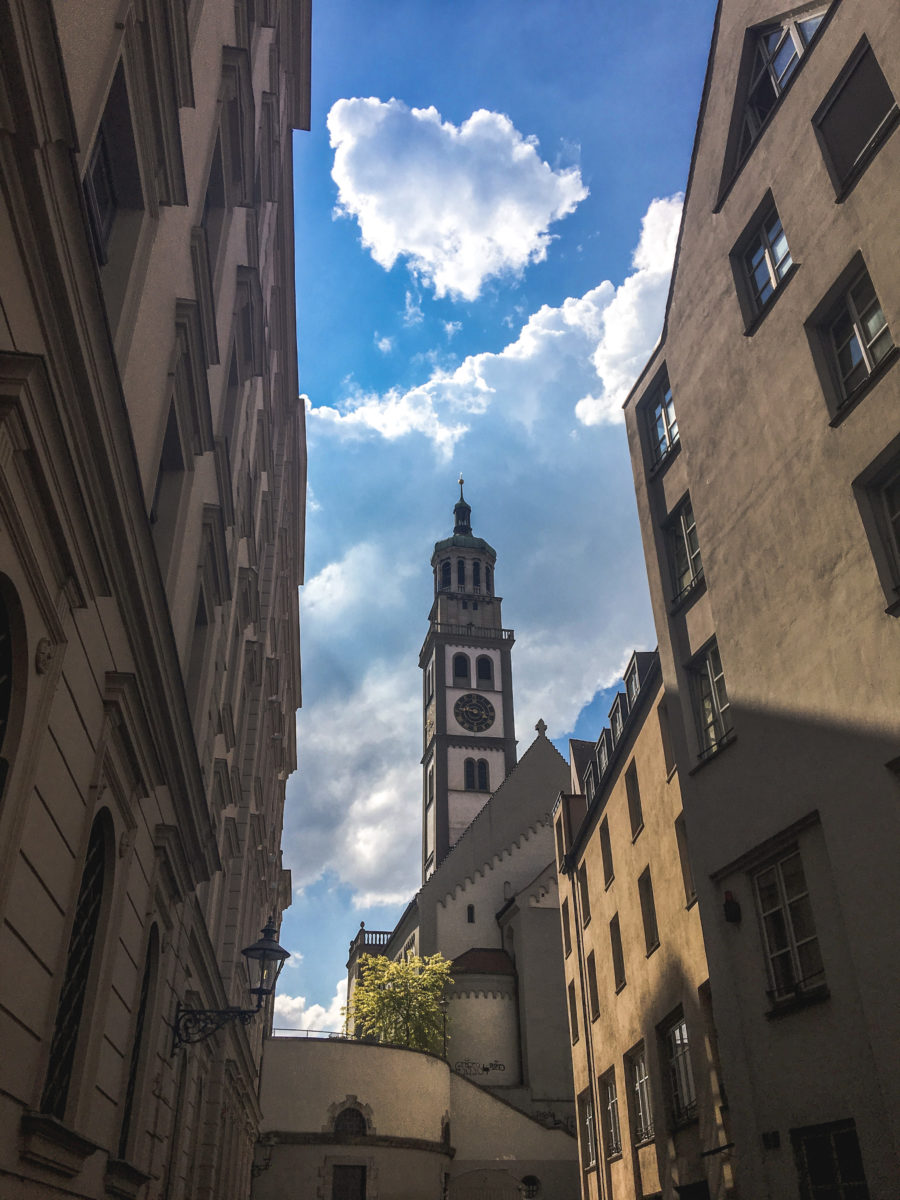
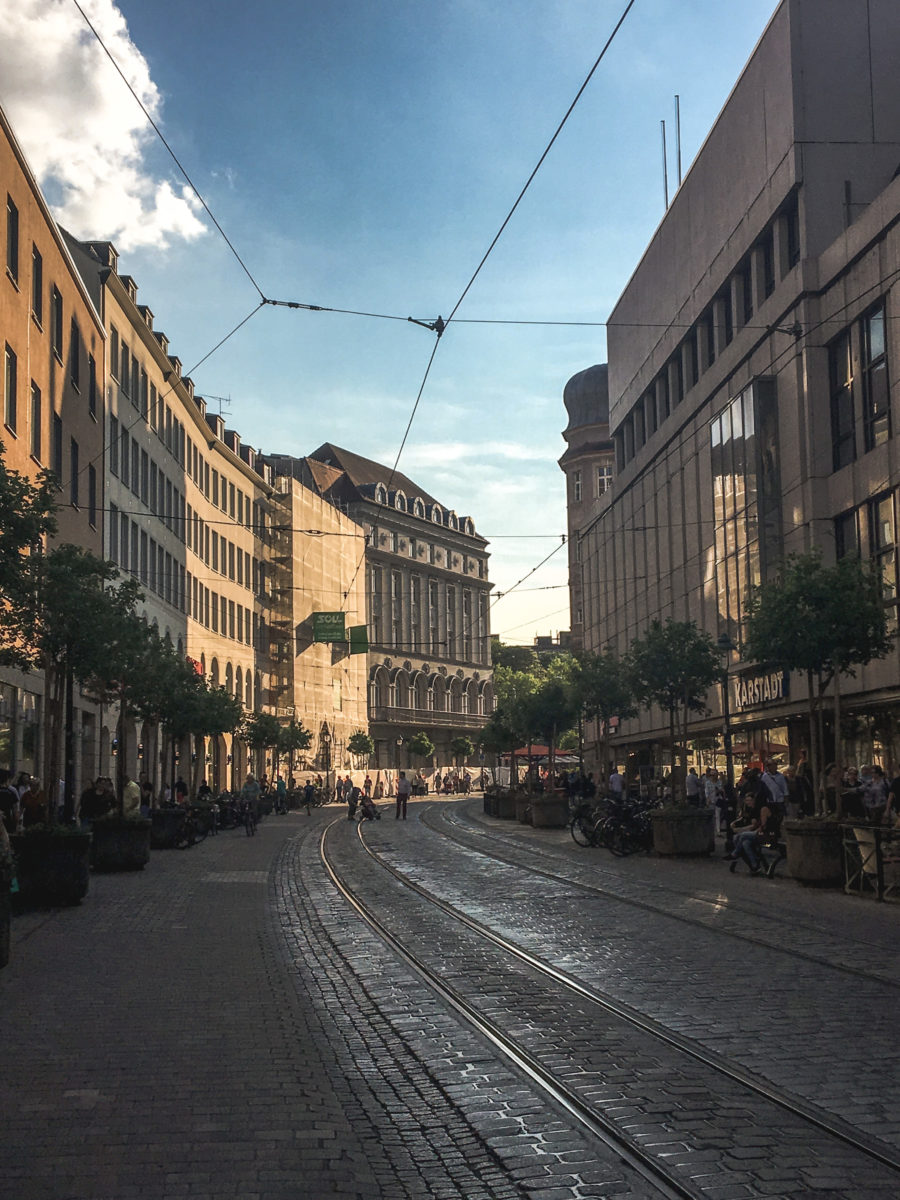
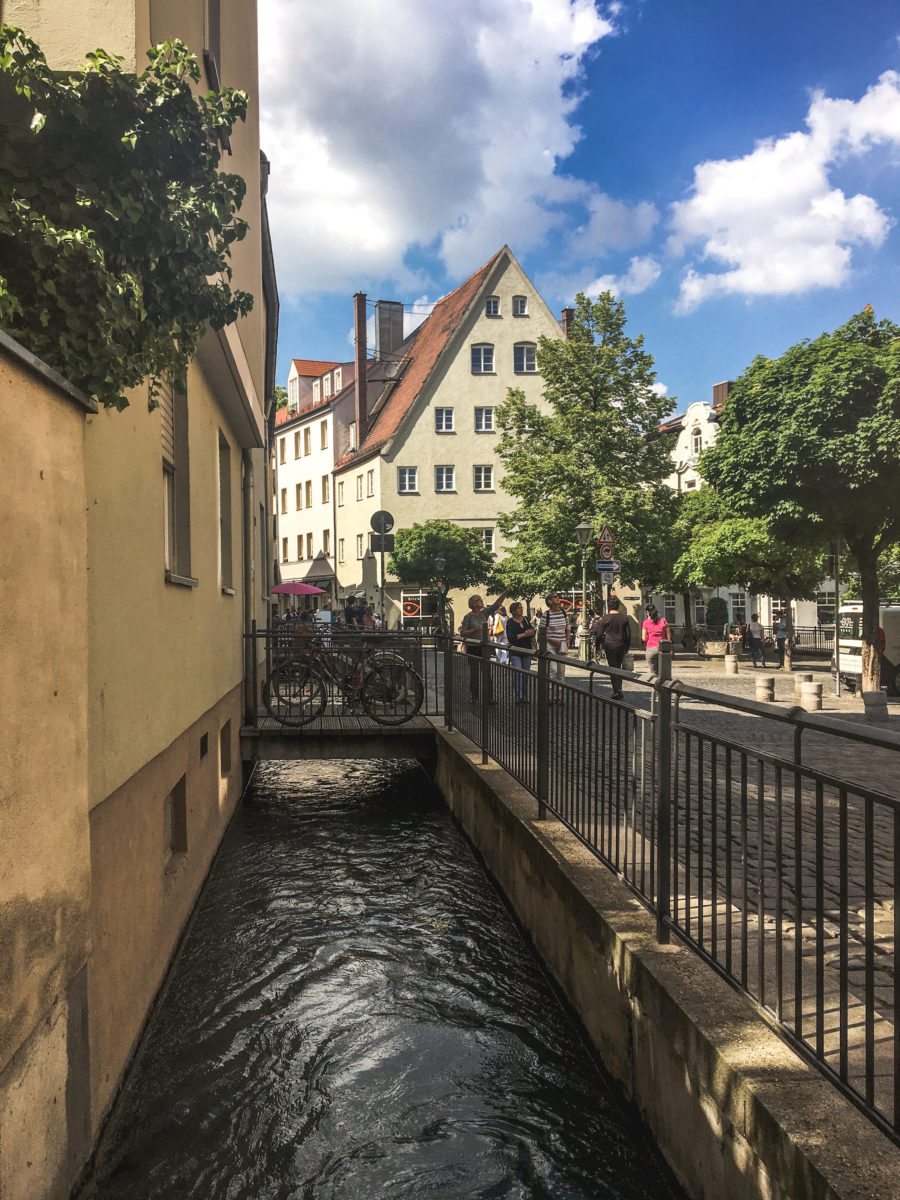
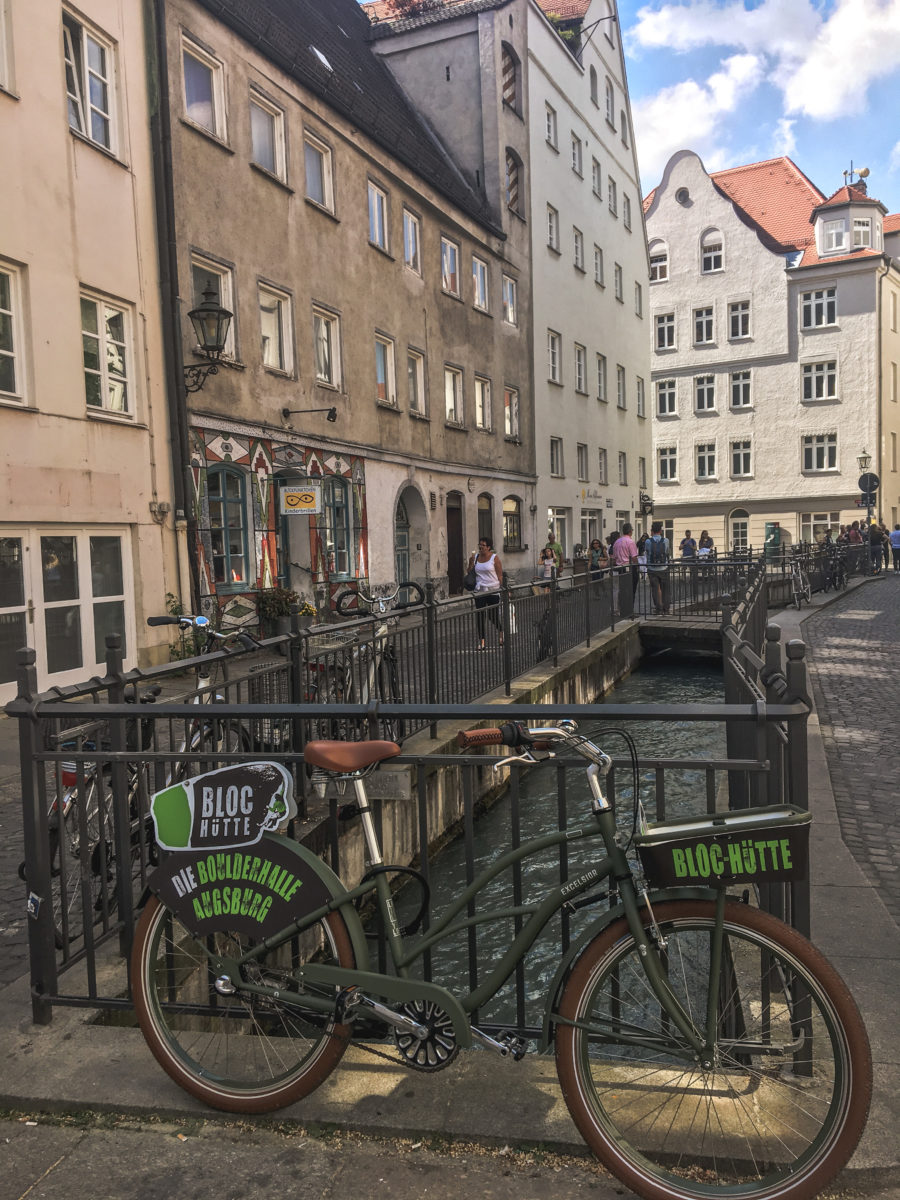
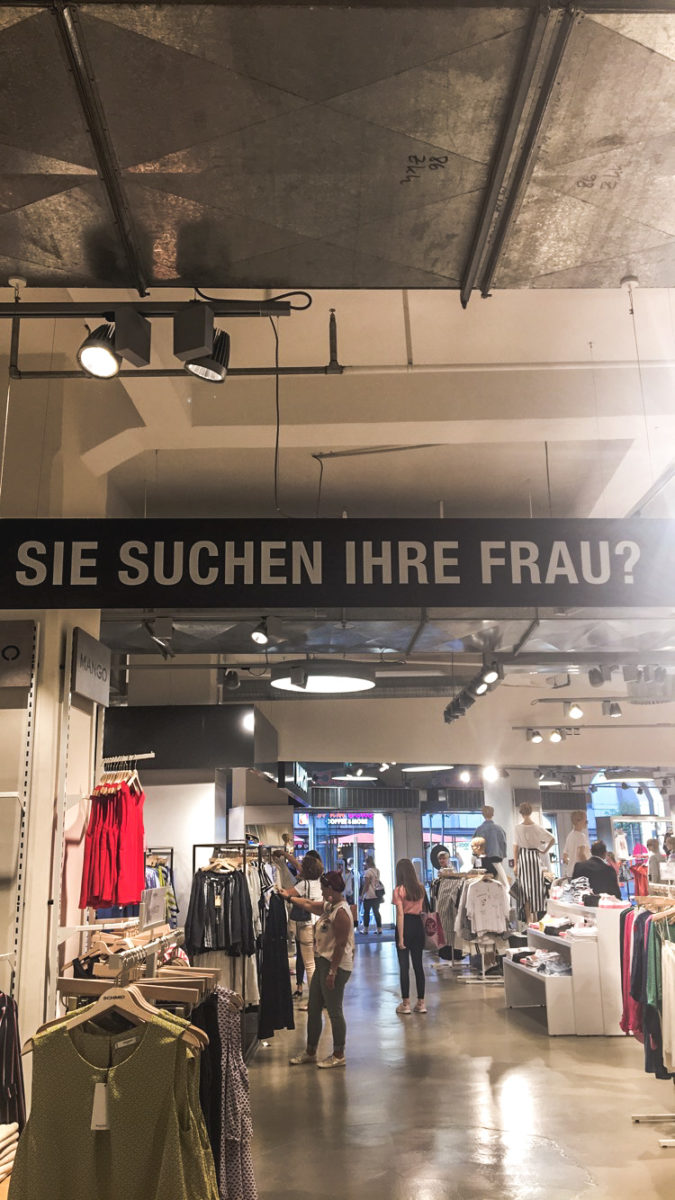
In the lower town, you will also discover the Fuggerei, the social housing estate created in 1516 by Jacob Fugger. Although destroyed by the war and completely rebuilt afterwards, these social housing units are still in use. Furthermore, you can visit them and understand how one of the first social housing estates in the world has developed.

AUGSBURG to FÜSSEN – 118 KILOMeTRES
After spending the night in Augsburg, on the way to Füssen we stopped in Landsberg am Lech (km 313) and it was a wonderful surprise. This town, full of patrician houses with pastel charms, is absolutely worth a visit, especially in good weather. In addition to the 500 houses, the imposing town gates, the symbols of the old city walls, are also noteworthy.

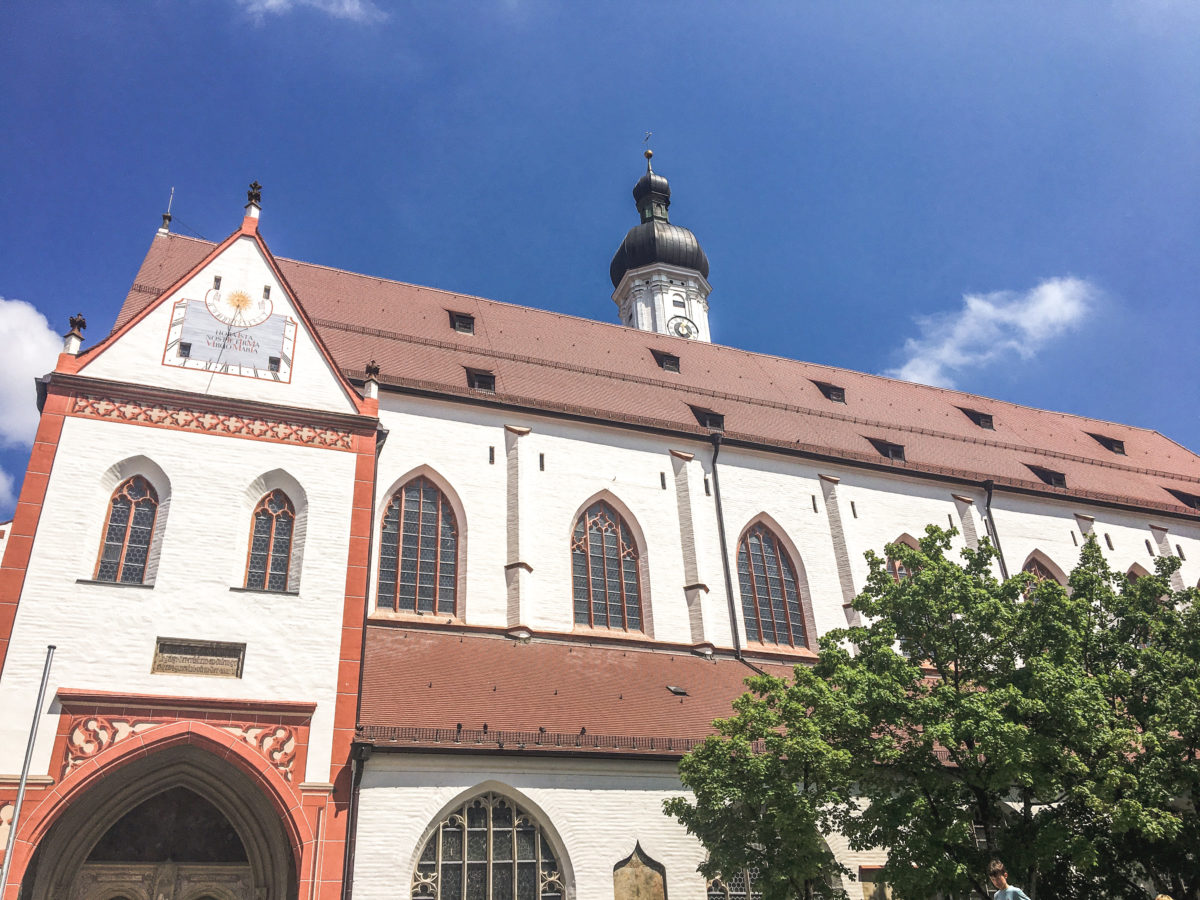
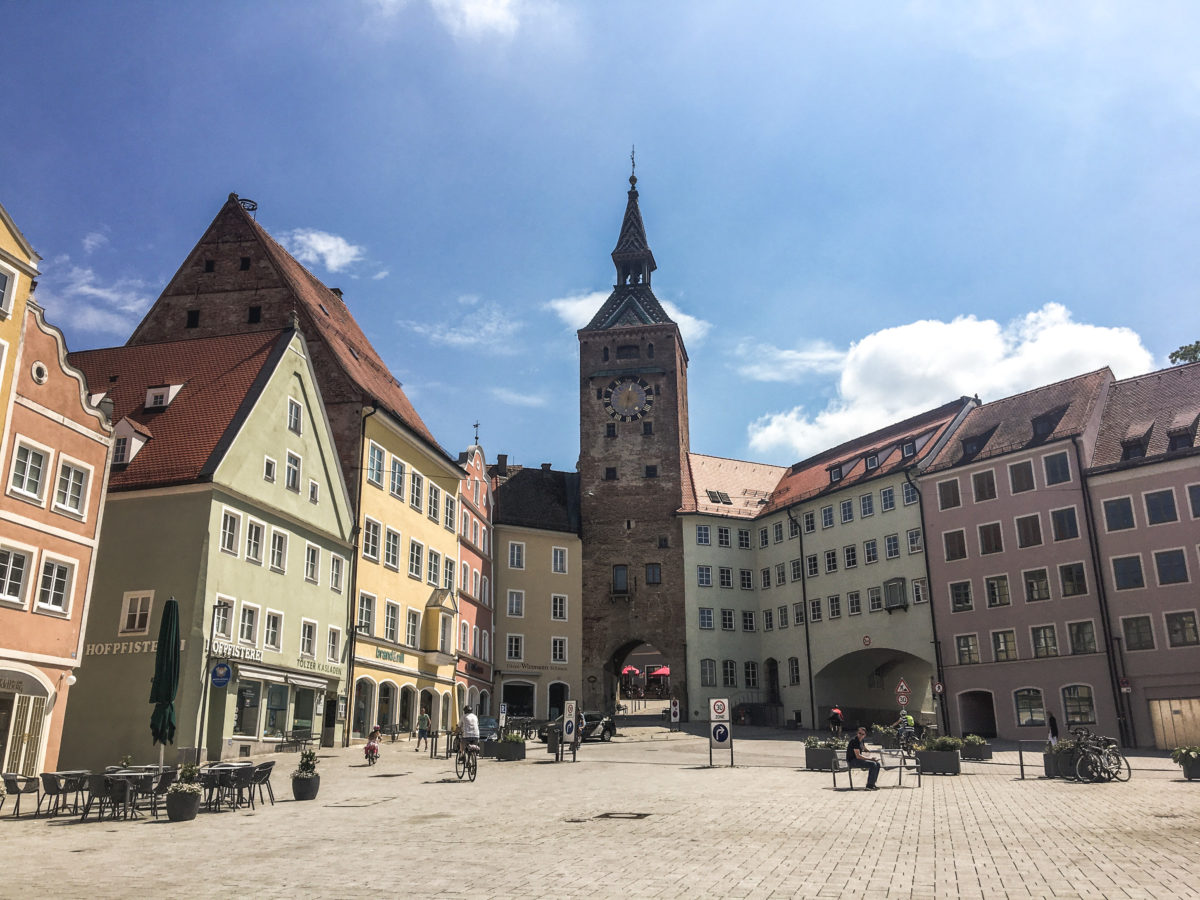
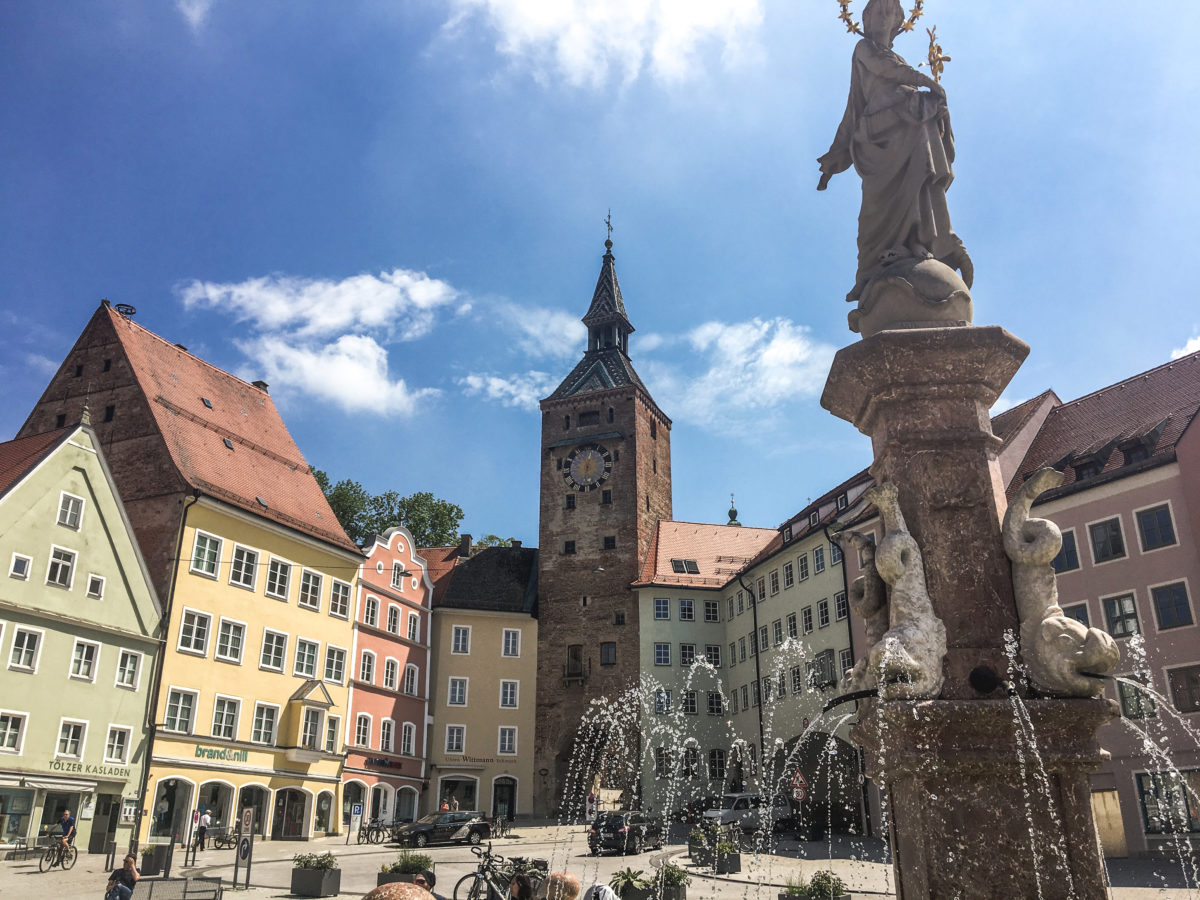
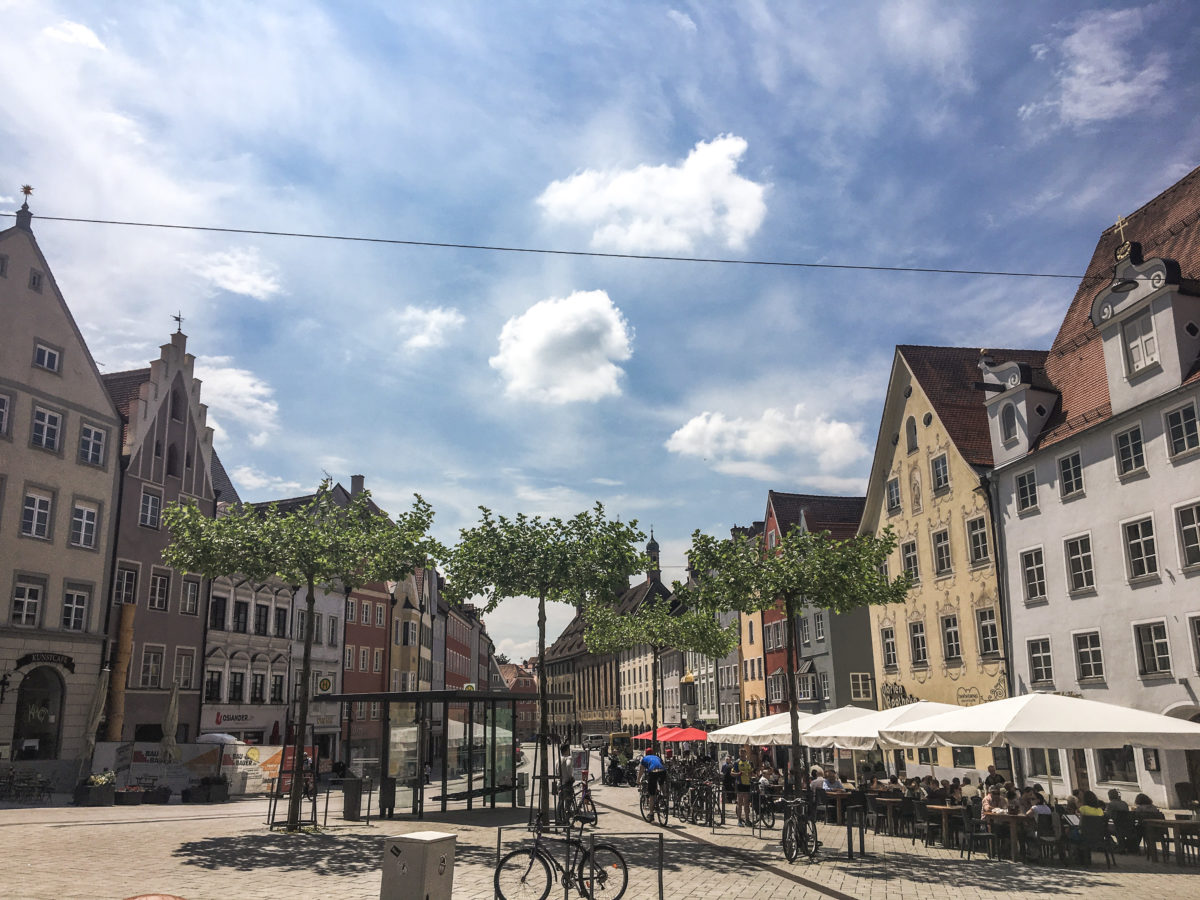
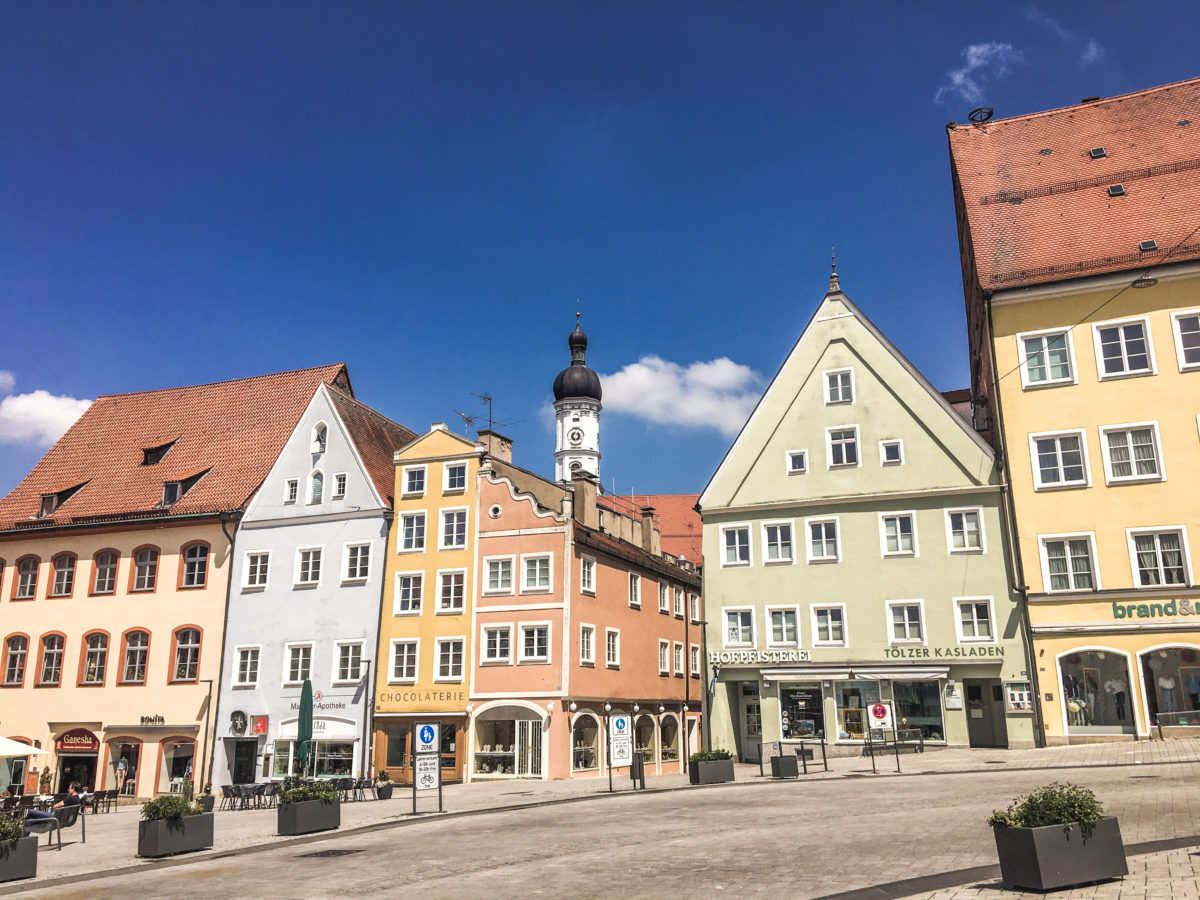
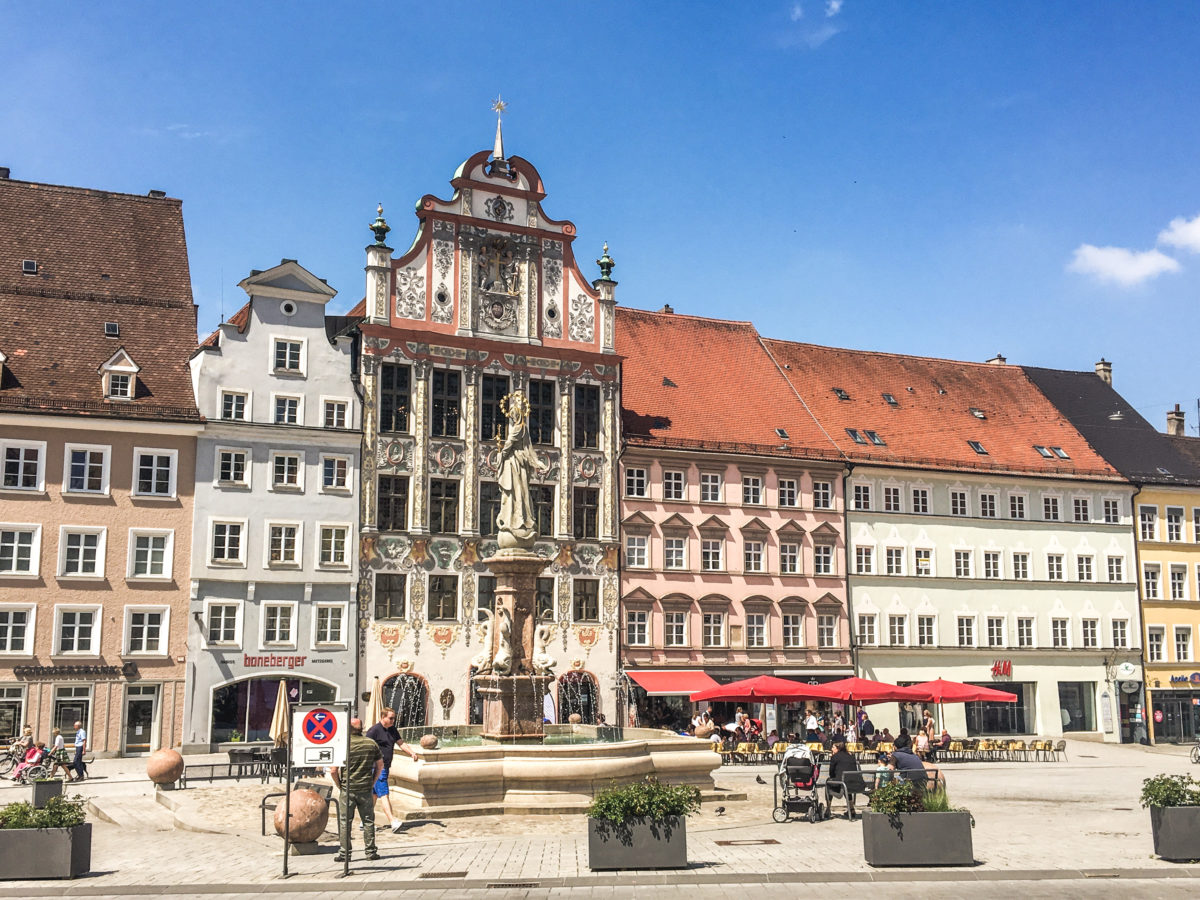
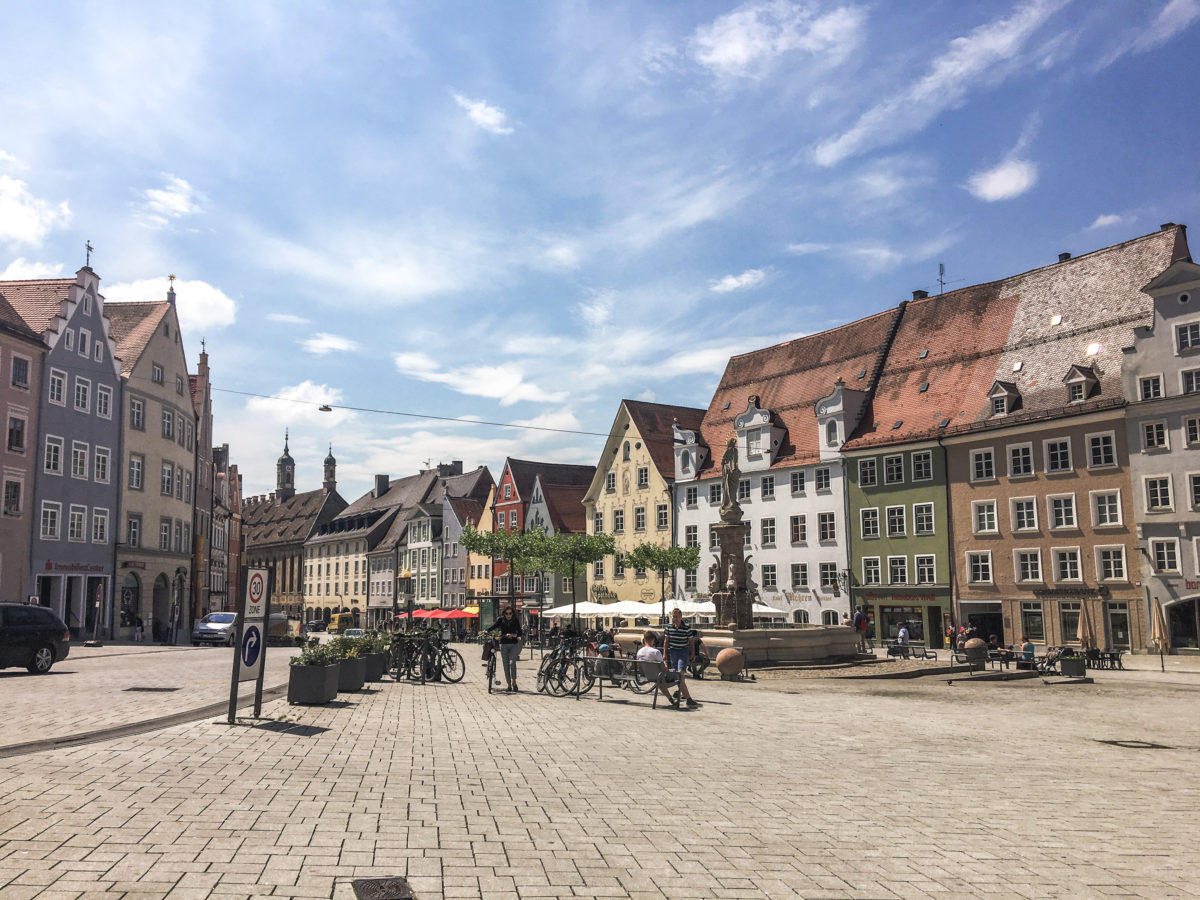
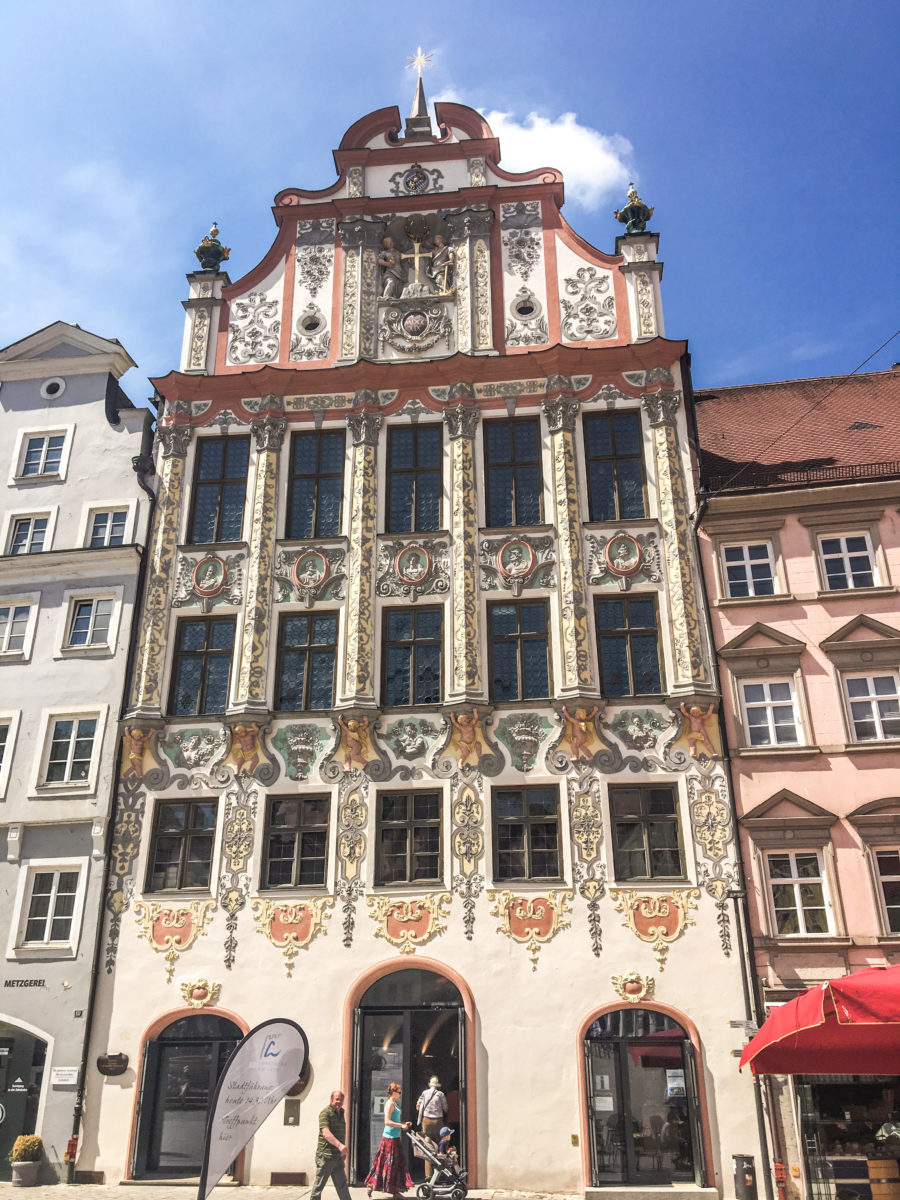
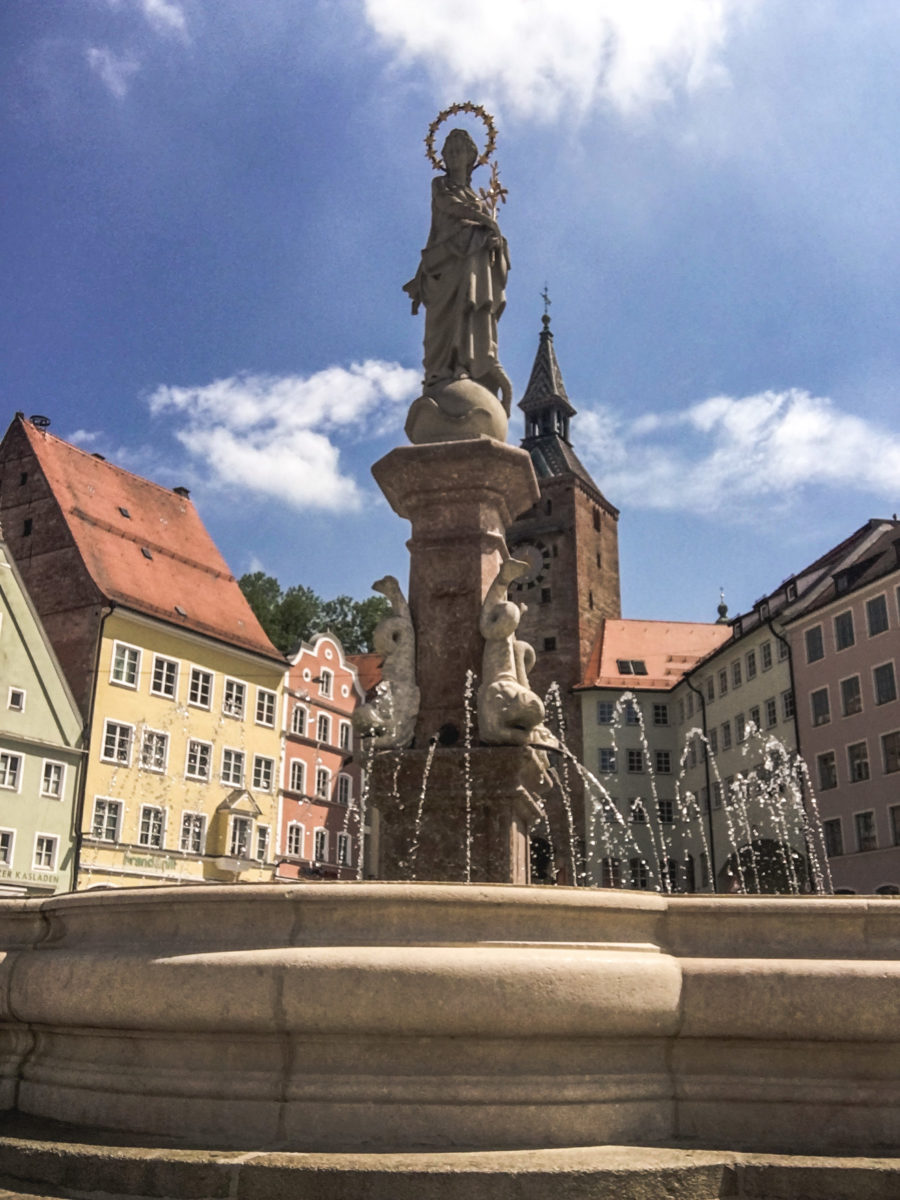
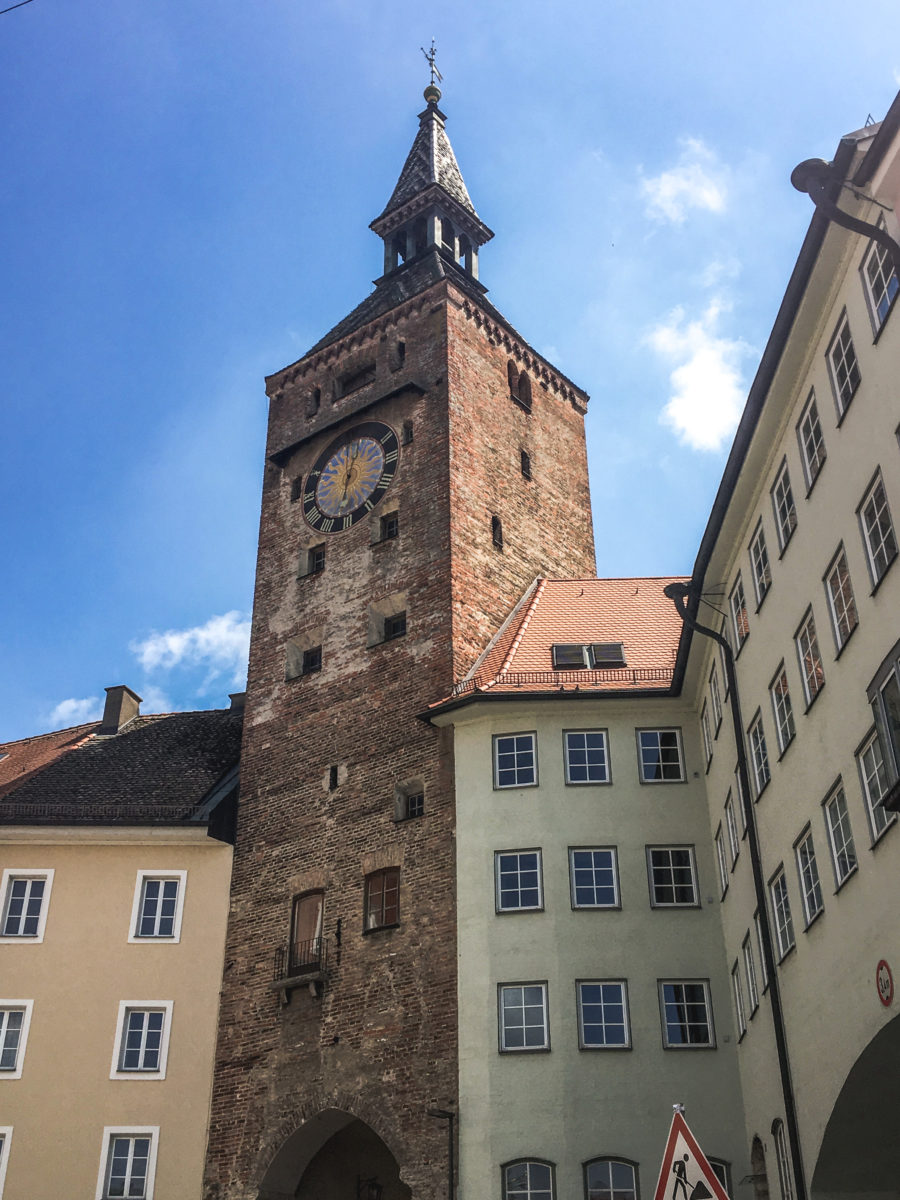
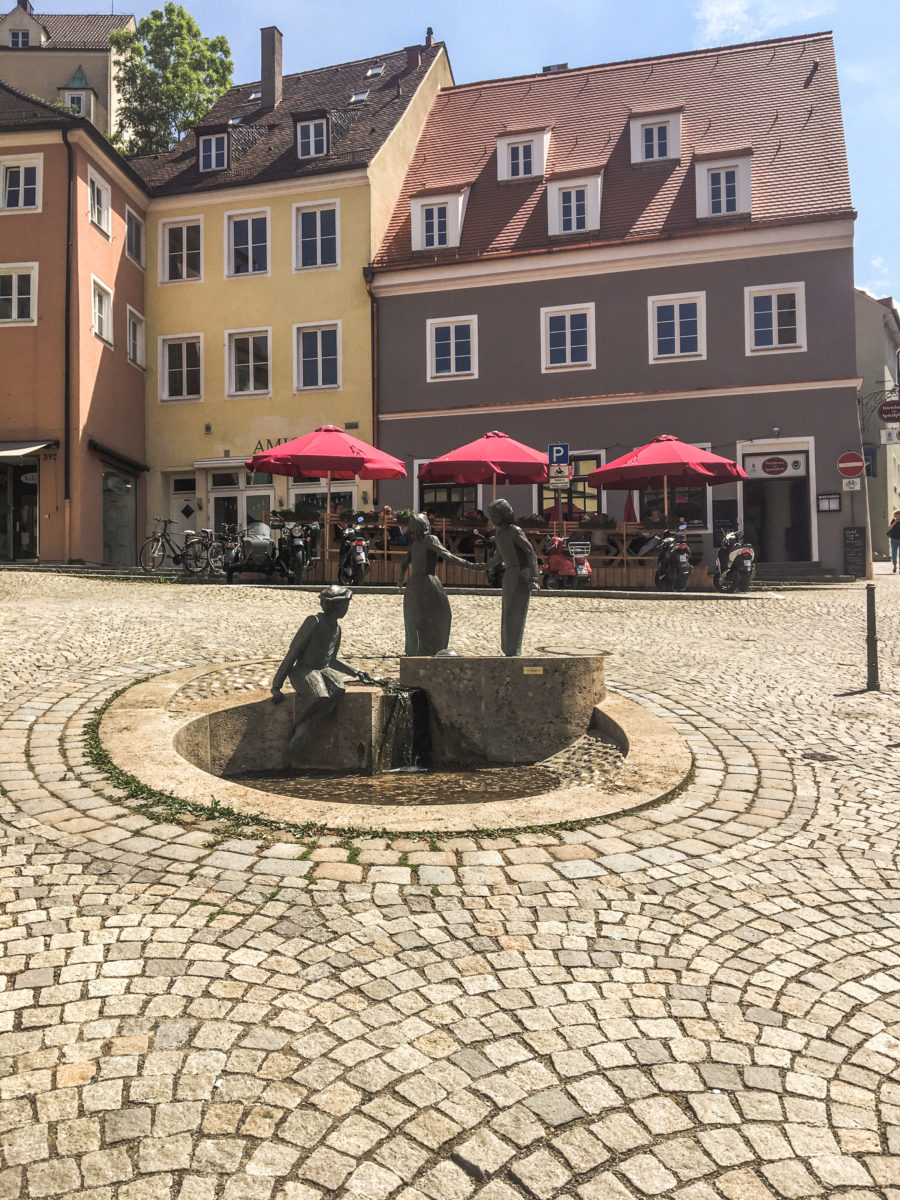
Much less fantastic but still quite intriguing, it was in Landsberg prison that Adolf Hitler was held for 8 months in 1924 and where he wrote his hateful manifesto, Mein Kampf (My Fight in English). The prison is now run by the Bavarian Ministry of Justice, but it also served as an American prison for war criminals. Moreover, the accused from the Nuremberg and Dachau trials were imprisoned there between 1945 and 1946.
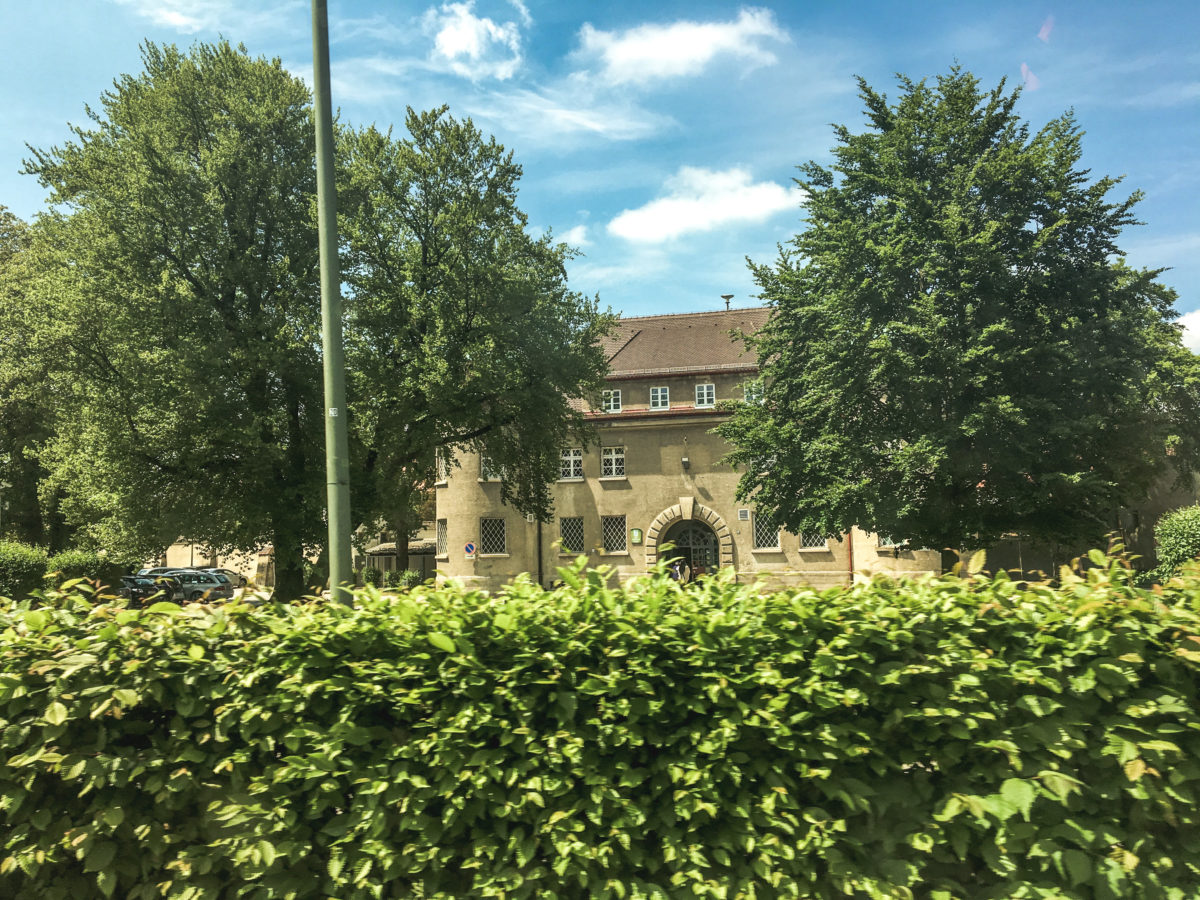
During a previous stay in Munich, we had rented a car to drive to Füssen and discover the castles of Ludwig II of Bavaria. During this trip, we drove on another famous German road, the Deutsche Alpenstrasse, the German Alpine Road, which runs through southern Bavaria. We first discovered Linderhof Castle, the smallest but most sumptuous of Ludwig II’s castles. We visited it in bad weather, which did not do justice to this magnificent castle and its incredible park, inspired by Versailles.

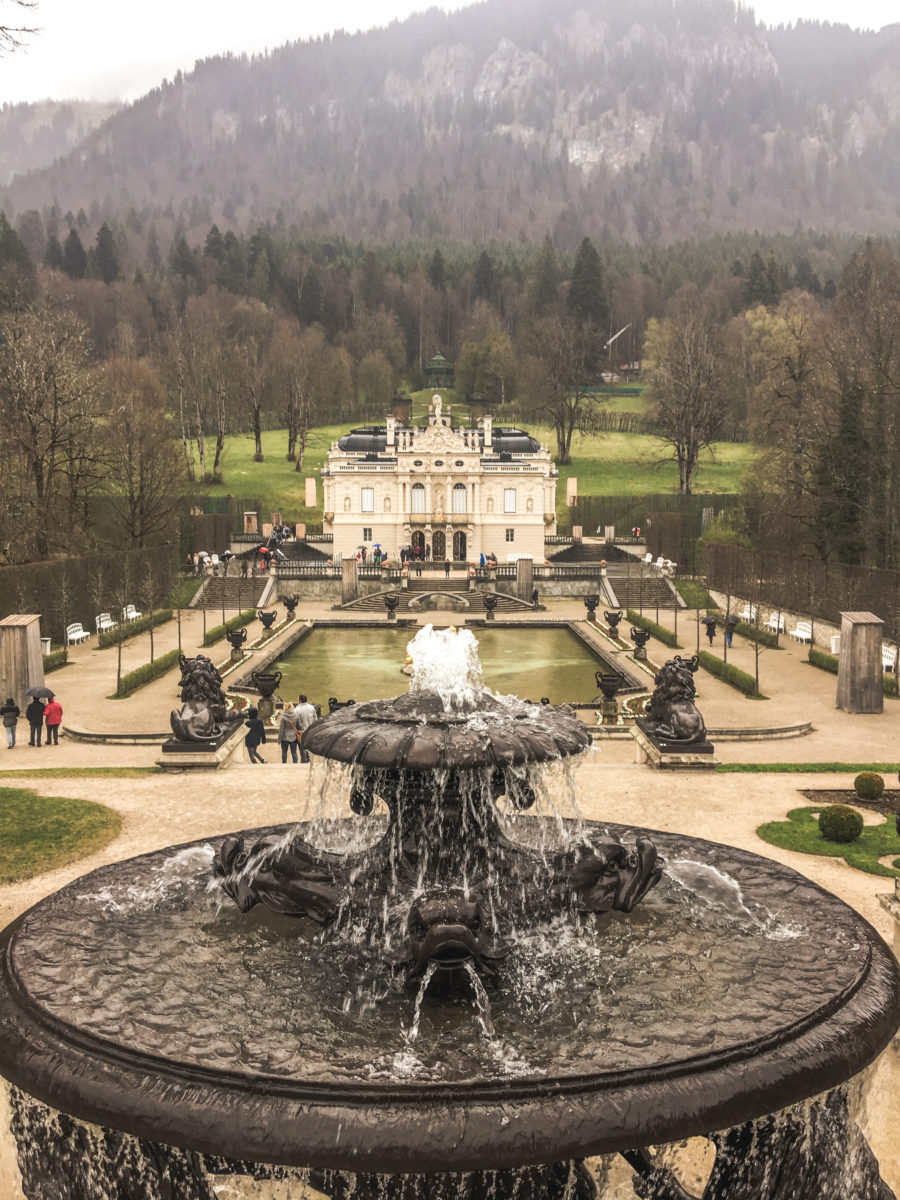
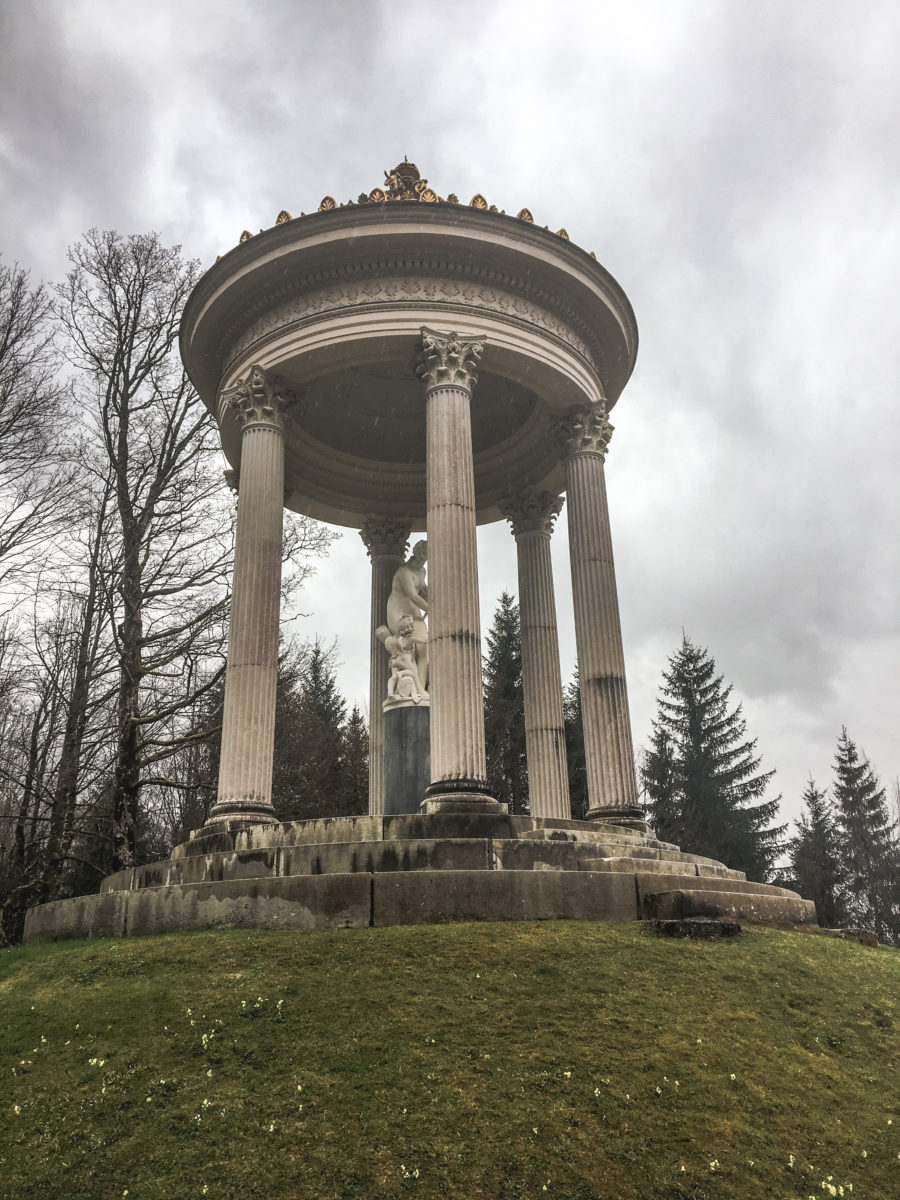
The Deutsche Alpenstrasse is a unique opportunity to discover the foothills of the German Alps. It promises a magnificent road trip, to be put on the bucket-list!
During this previous trip, I discovered another splendour of Bavaria in Steingaden (which is also on the Romantic Road): the church of Wies.

It is one of the most beautiful rococo churches in the world and was added to the UNESCO World Heritage List in 1983. As usual, I don’t visit a church for spiritual reasons but rather out of a desire to discover masterpieces and the one in Wies is absolutely superb. For me, the highlight of a church is the organ, and this one is absolutely worth the trip.
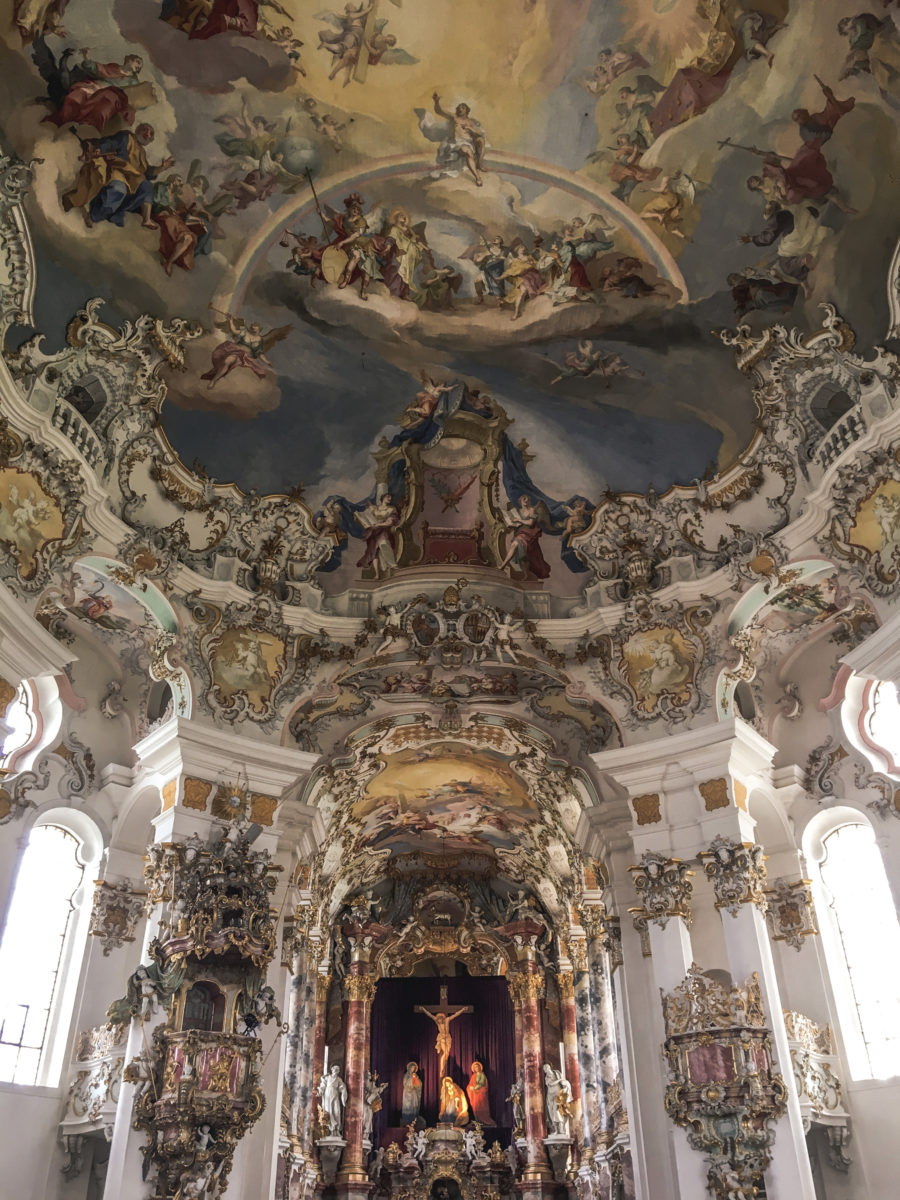

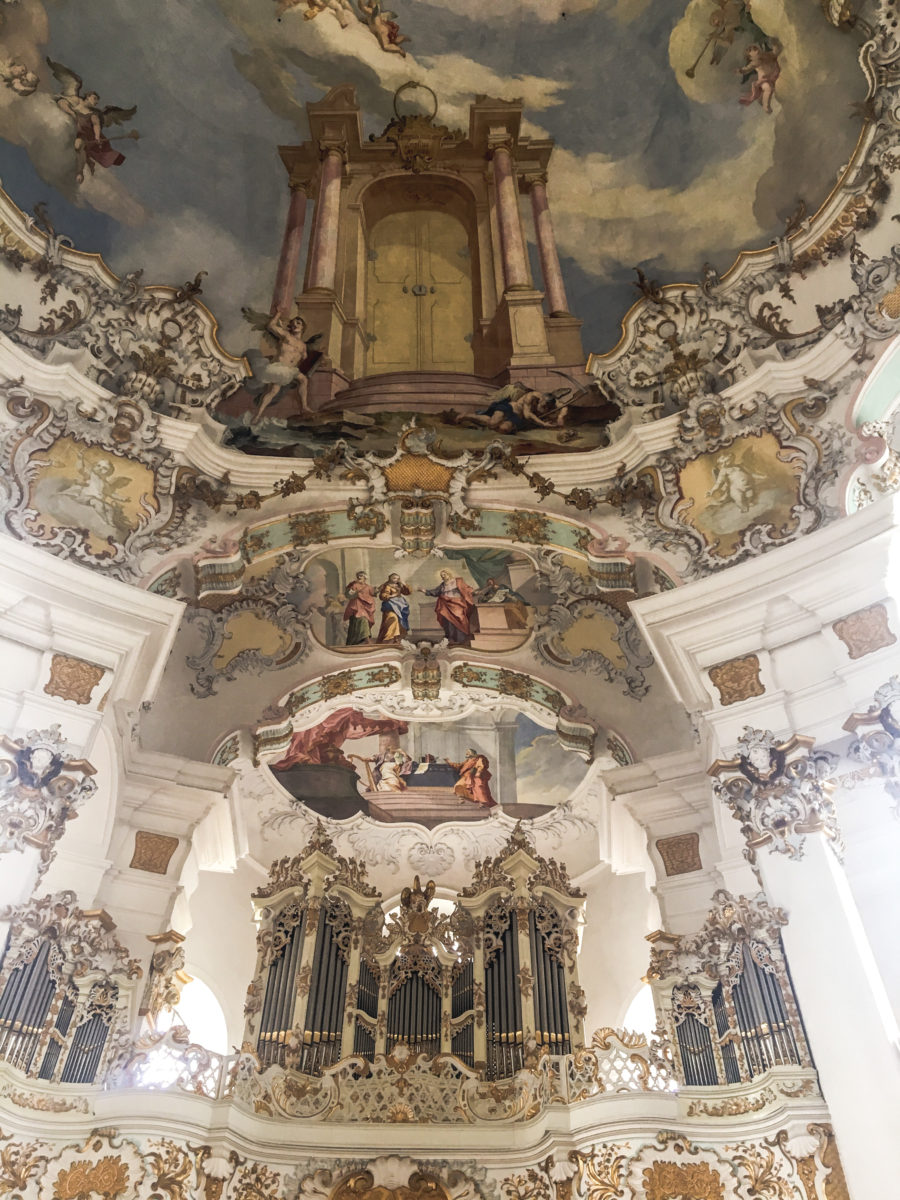
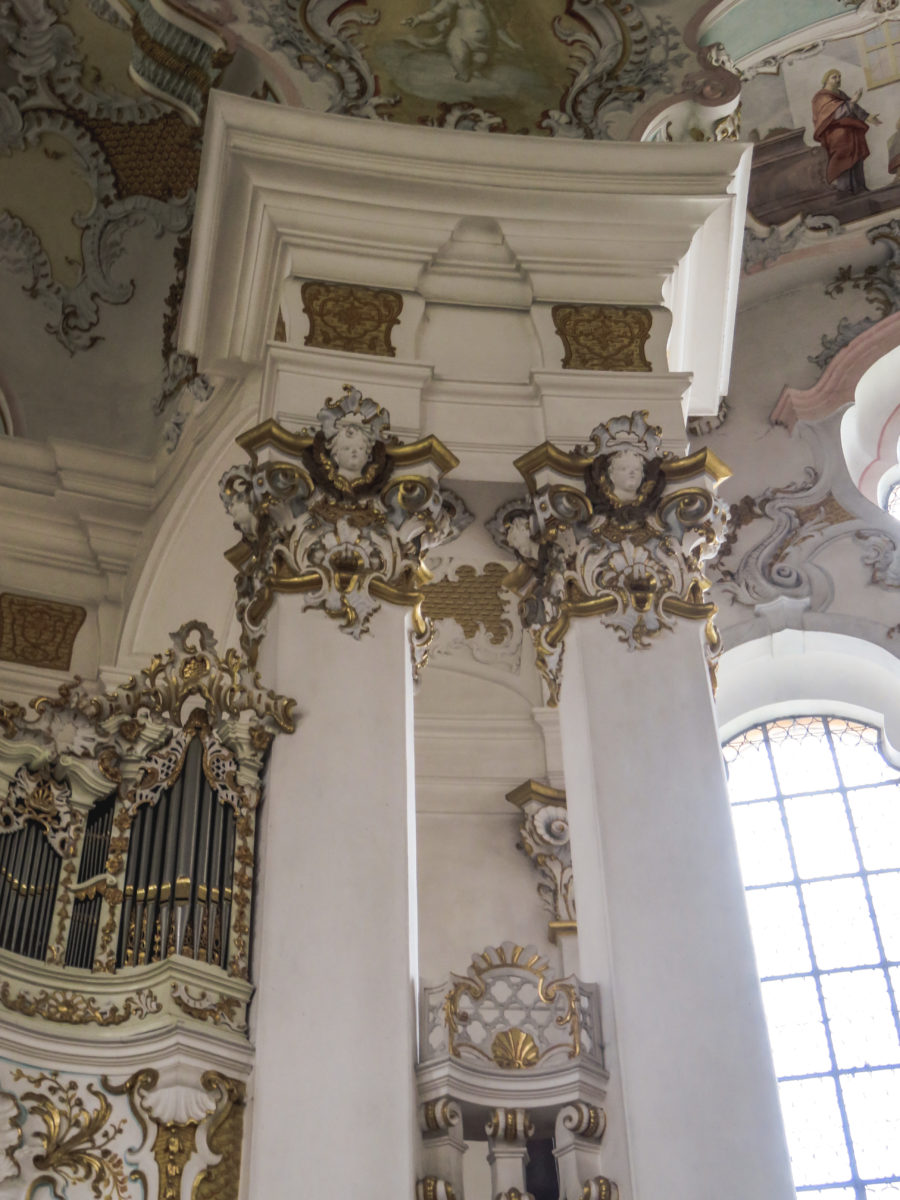
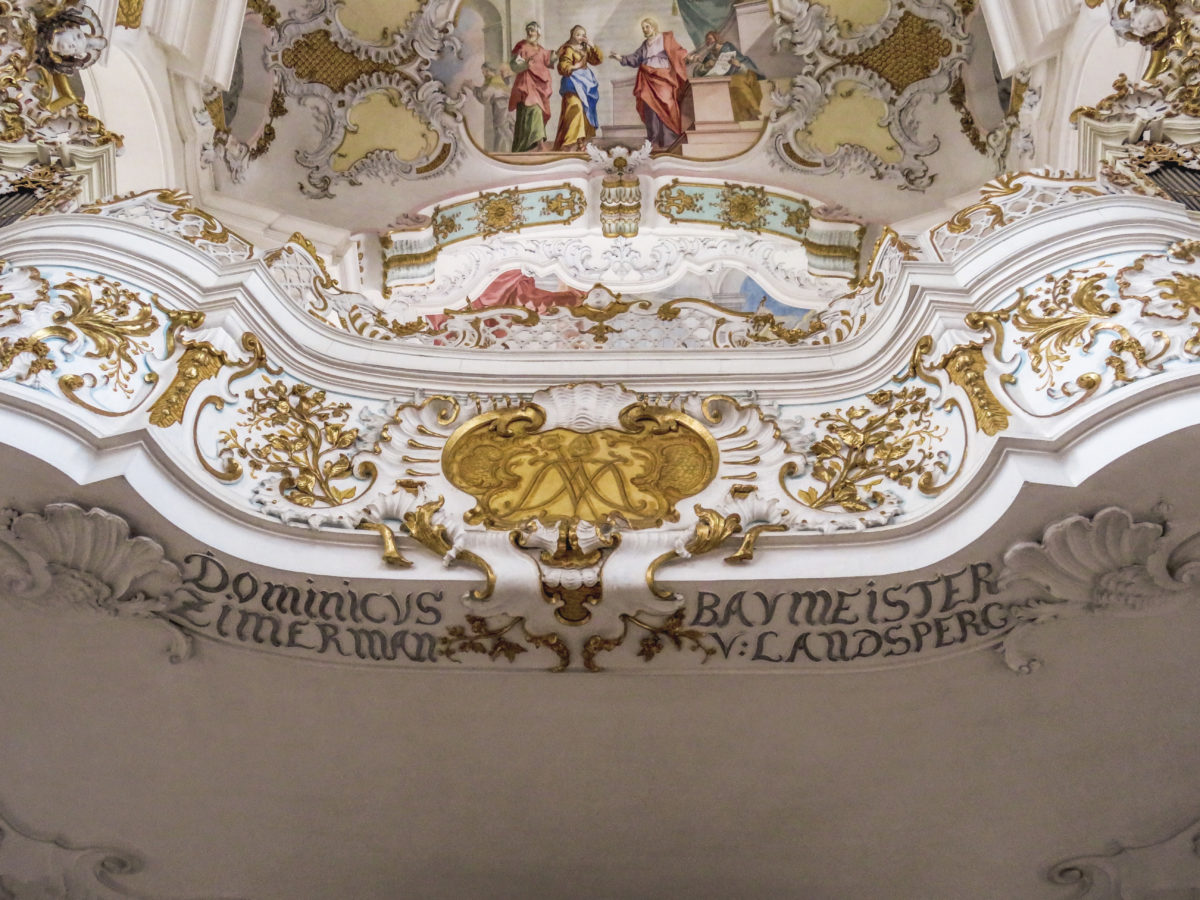
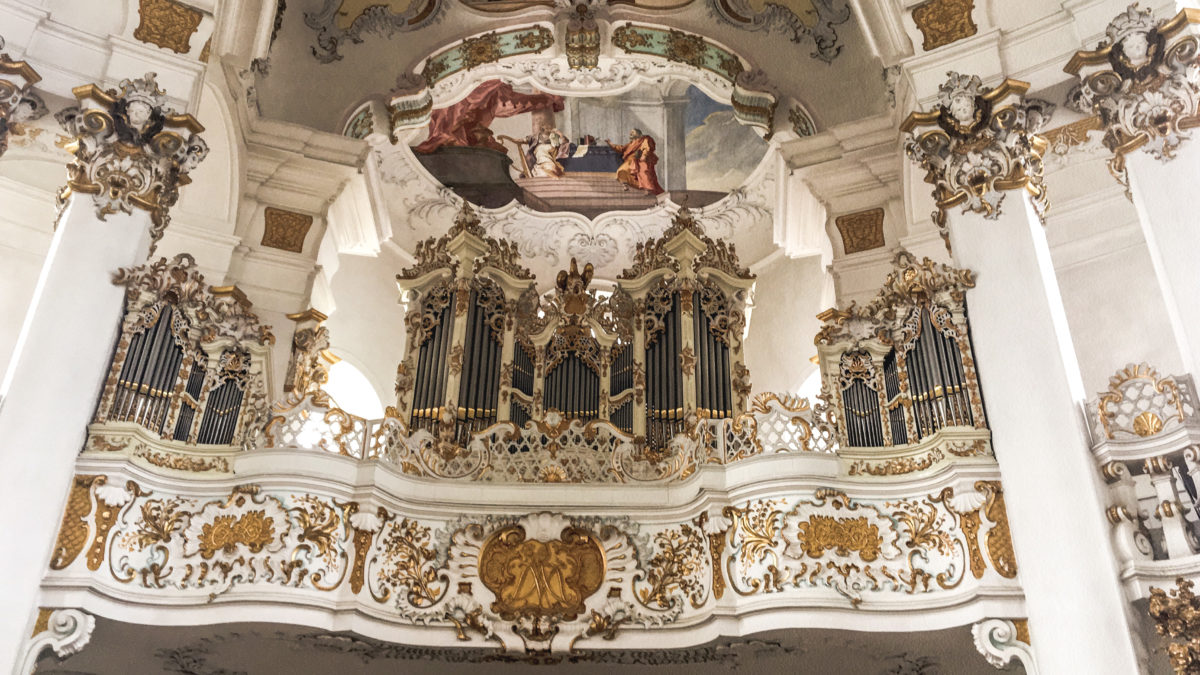
SCHWANGAU (KM 381)
Schwangau is a popular tourist destination for Bavarians and Germans, thanks above all to Neuschwanstein, but another curiosity is inextricably linked to the landscape of the region, the church of St. Coloman, which dates from the 17th century and was named after St. Coloman, an Irish pilgrim who stayed here in the summer of 1012.
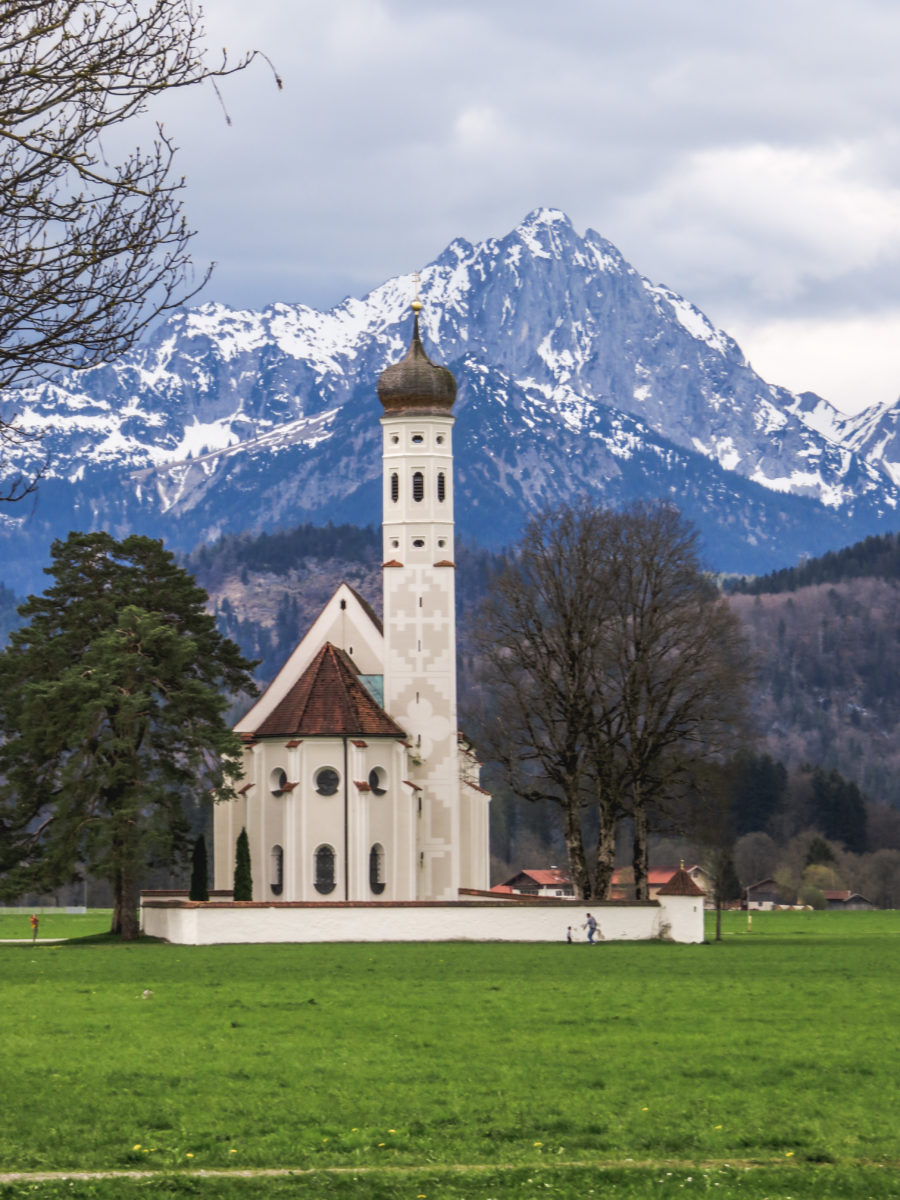
NEUSCHWANSTEIN CASTLE
Of all the splendours of Europe, Germany has an impressive choice of castles, the most famous of which is Neuschwanstein Castle. According to the official web page, “every year 1.4 million people visit the castle of the fairy-tale king”, making it one of the most popular sites in the world.
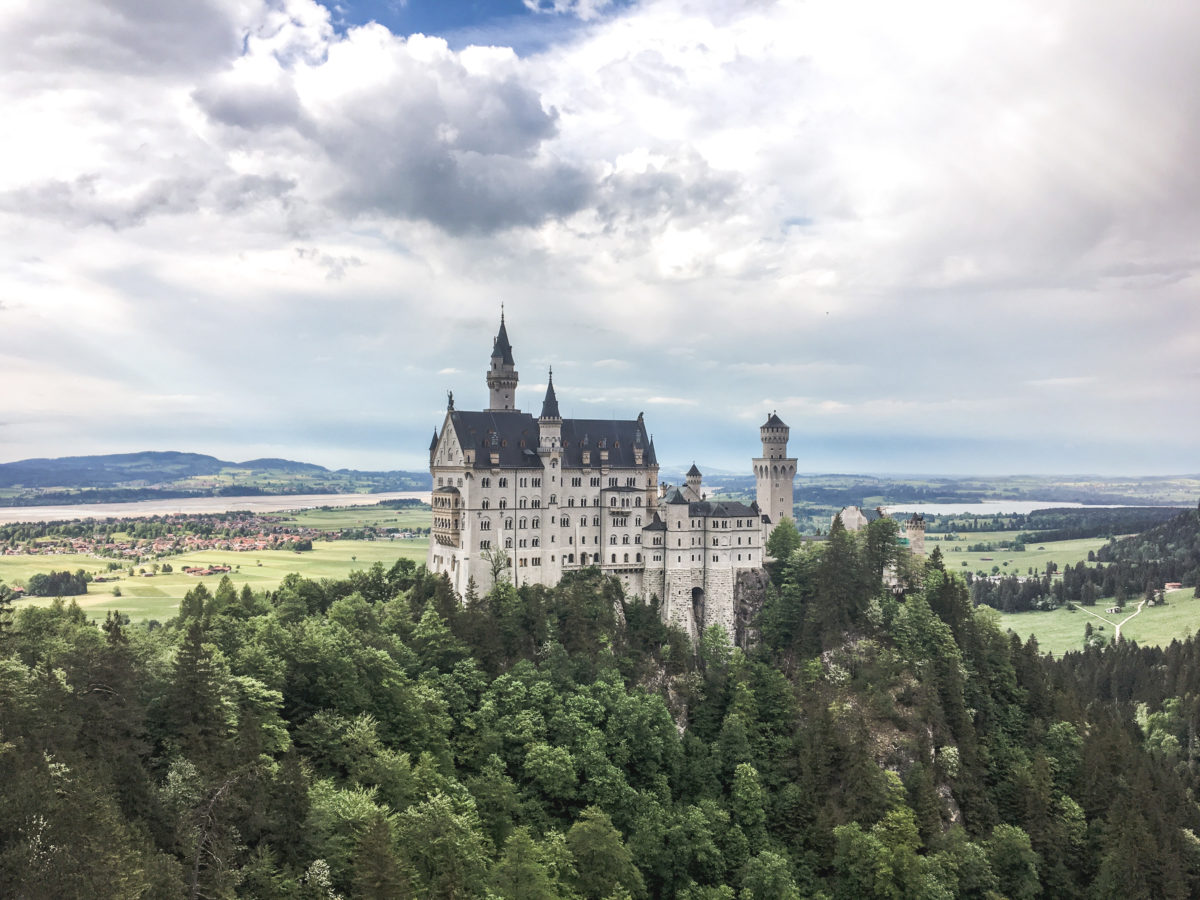
This place has been the source of great inspiration over the centuries as even Walt Disney used it as a model for the Sleeping Beauty castle at Disneyland. It could not be more idyllic despite the sad story behind its construction. In fact, the palace was commissioned by the eccentric Ludwig II of Bavaria in honour of Richard Wagner, but he never saw the finished castle because he died six years before the work was completed. Nevertheless, a few weeks after the unexpected death of the king, the magnificent residence opened its doors to the public. The king himself drew up the plans for this building with the help not of an architect, but of a theatre decorator, since he saw his masterpiece as a huge stage designed to recreate the world of German mythology by drawing inspiration from the lyrical works of his friend Wagner.
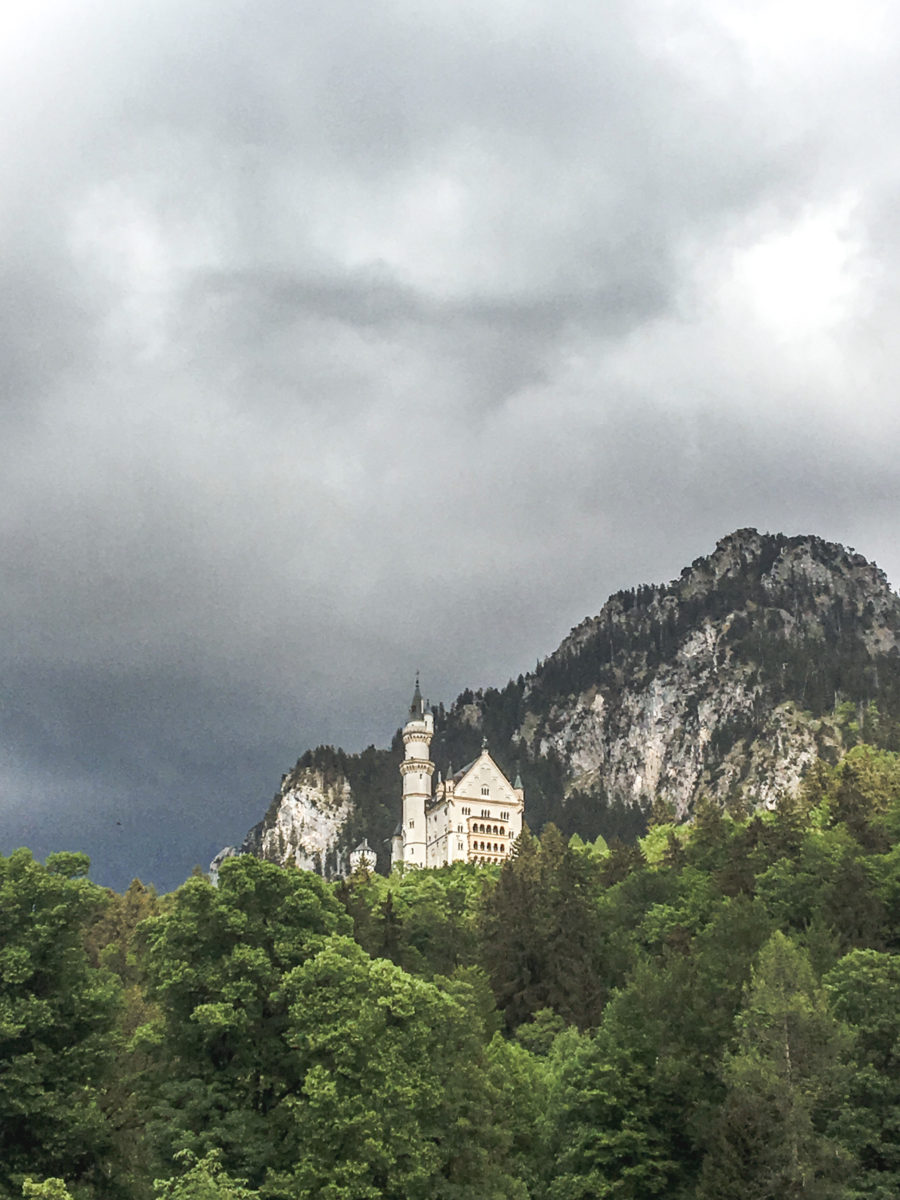
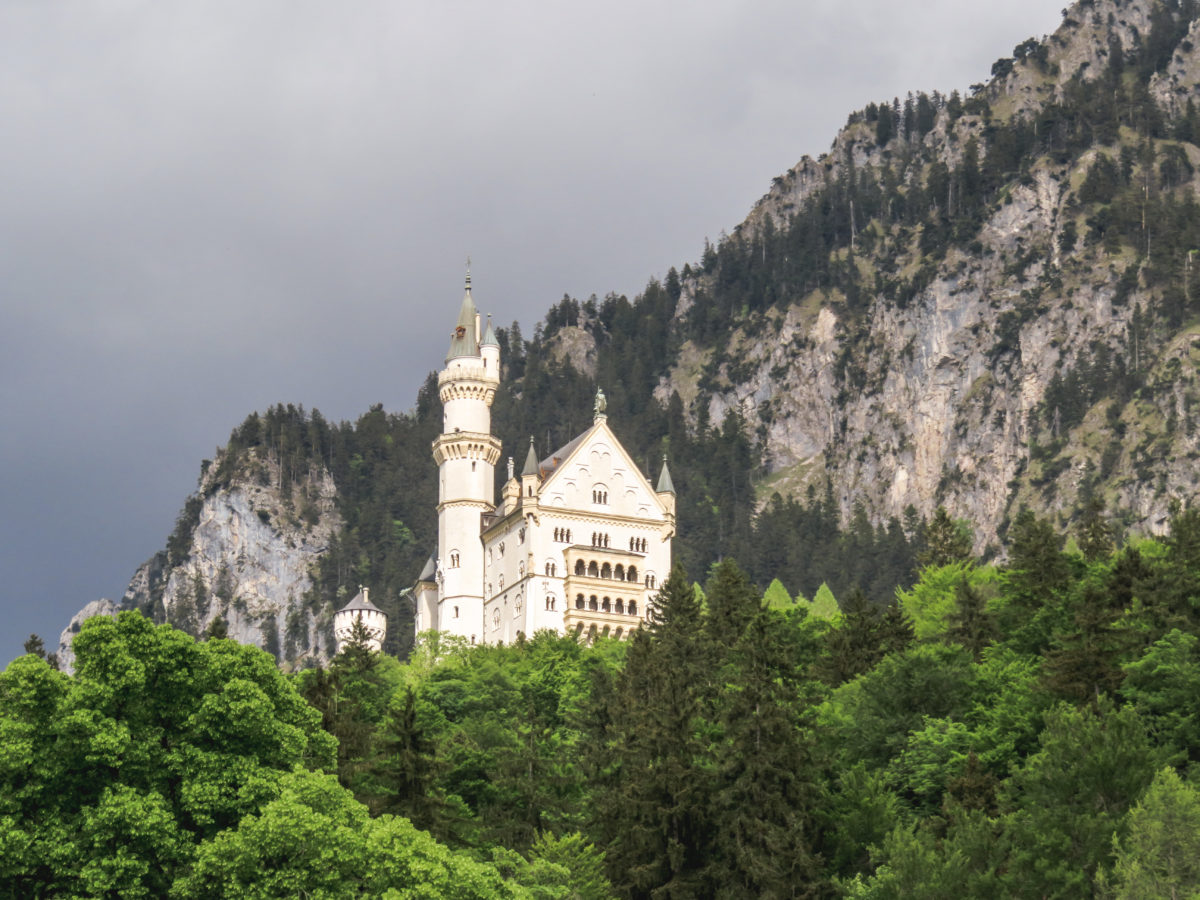
Thanks to its white limestone façade and deep blue towers, curiosity is present to discover what is hidden inside. However, you can only visit the palace by taking a guided tour. Furthermore, it is advisable to book tickets well in advance due to the crowds of tourists that flock to the palace every day.
Personally, I have never been inside as I prefer to explore the forest paths around the castle. Every season, the landscape varies even though the castle still radiates with grace and presence.
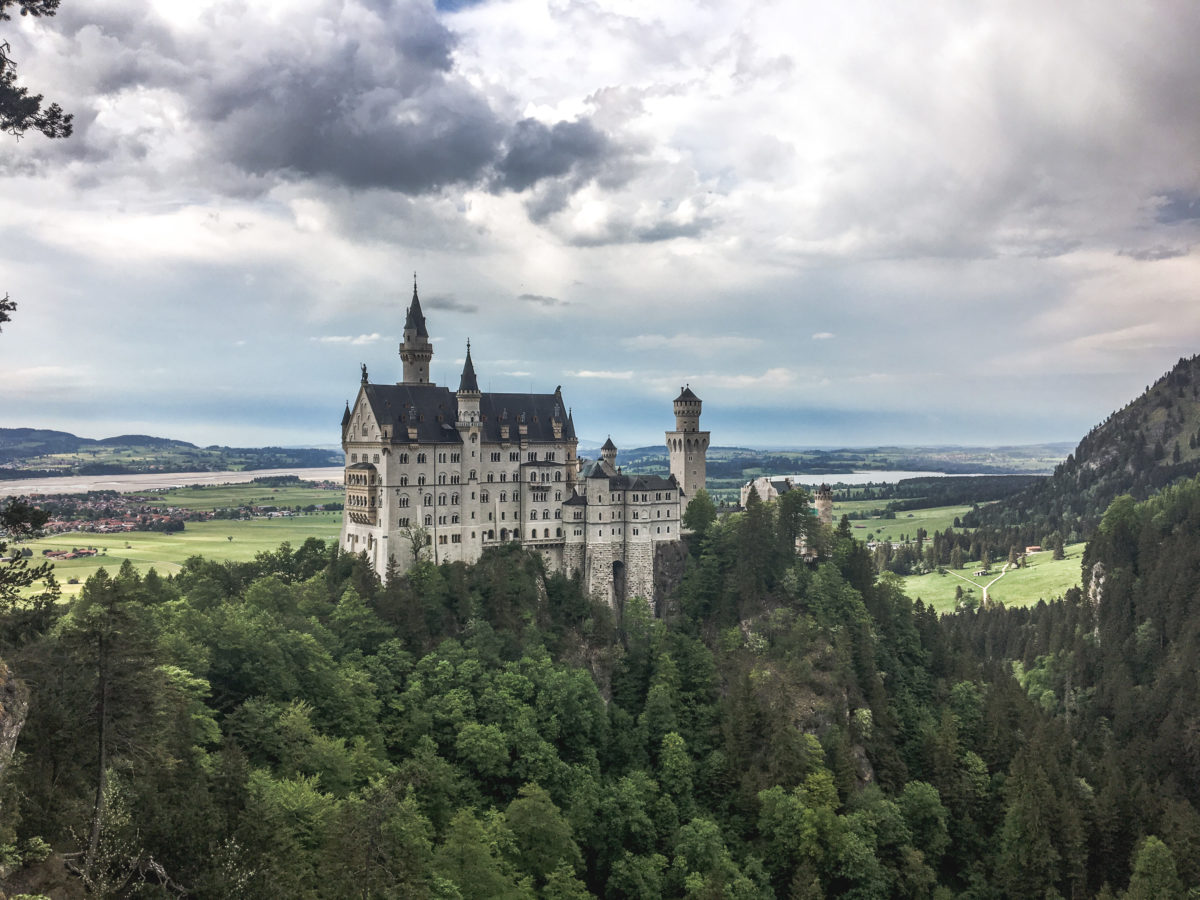

The best viewpoint is the Marienbrücke, the bridge over the Pollät Gorge, which offers the spectator the most emblematic view of Neuschwanstein and allows him or her to admire the Bavarian Alps. You can also venture a little further along this path, but make sure you have good shoes to avoid slipping.
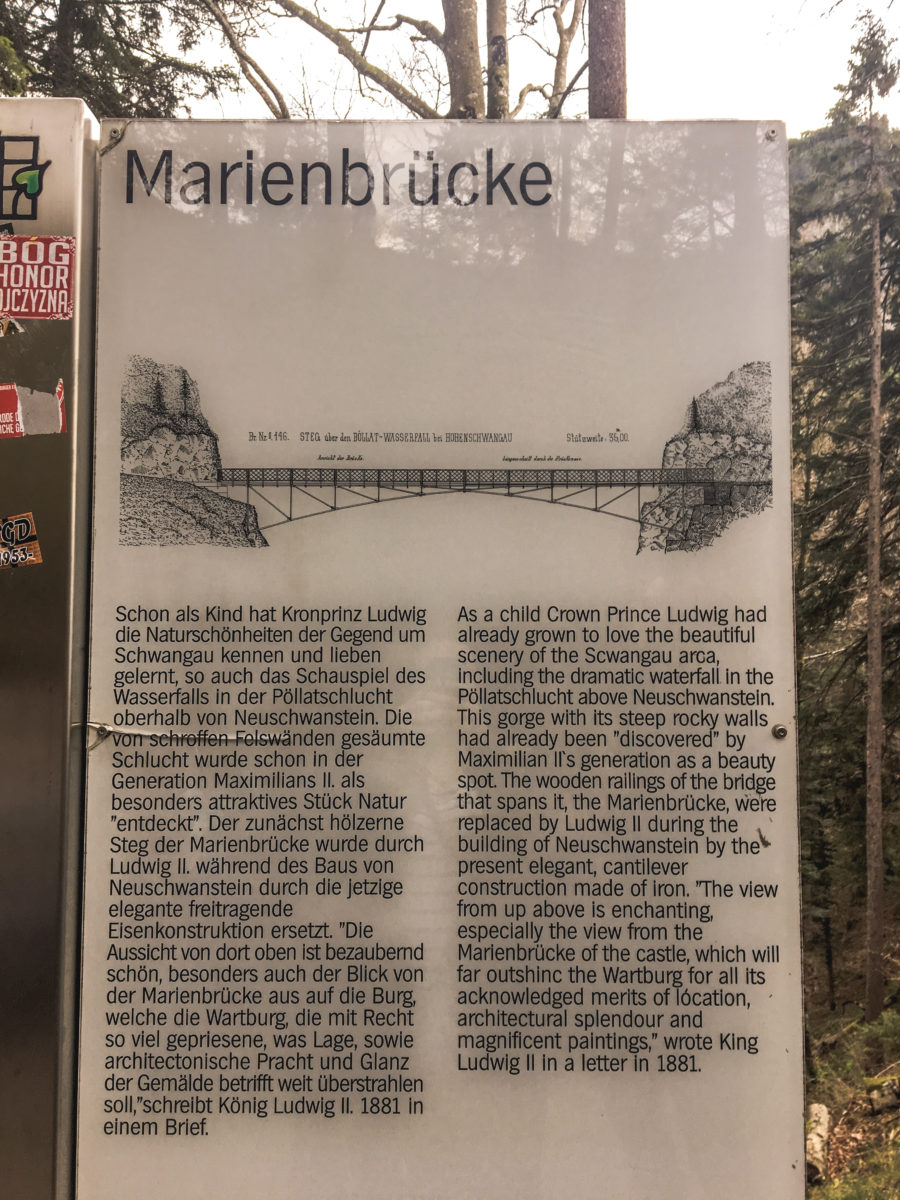
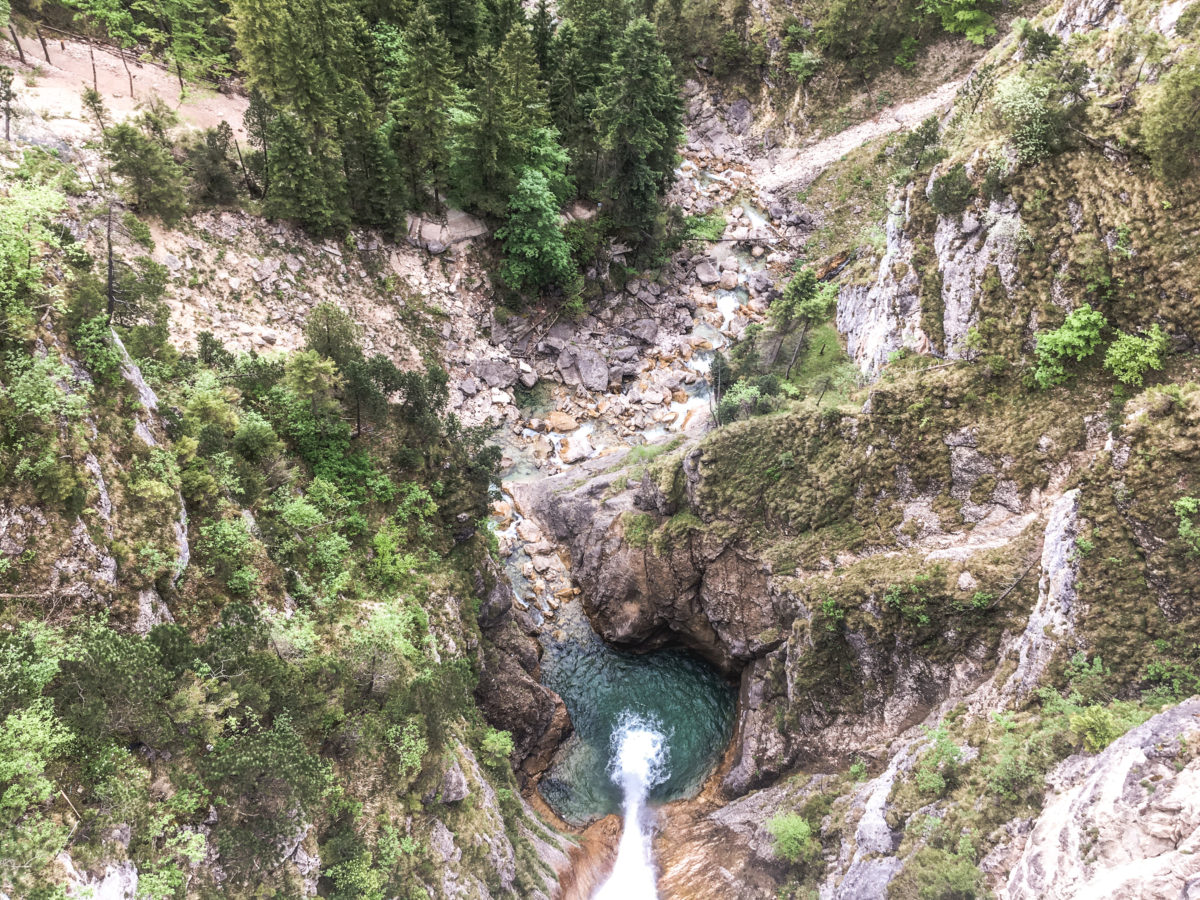
HOHENSCHWANGAU CASTLE
Much less famous and flamboyant than its neighbour Neuschwanstein, Hohenschwangau remains a place steeped in history, but its characteristic glittering yellow facade nevertheless gives it a special appeal.
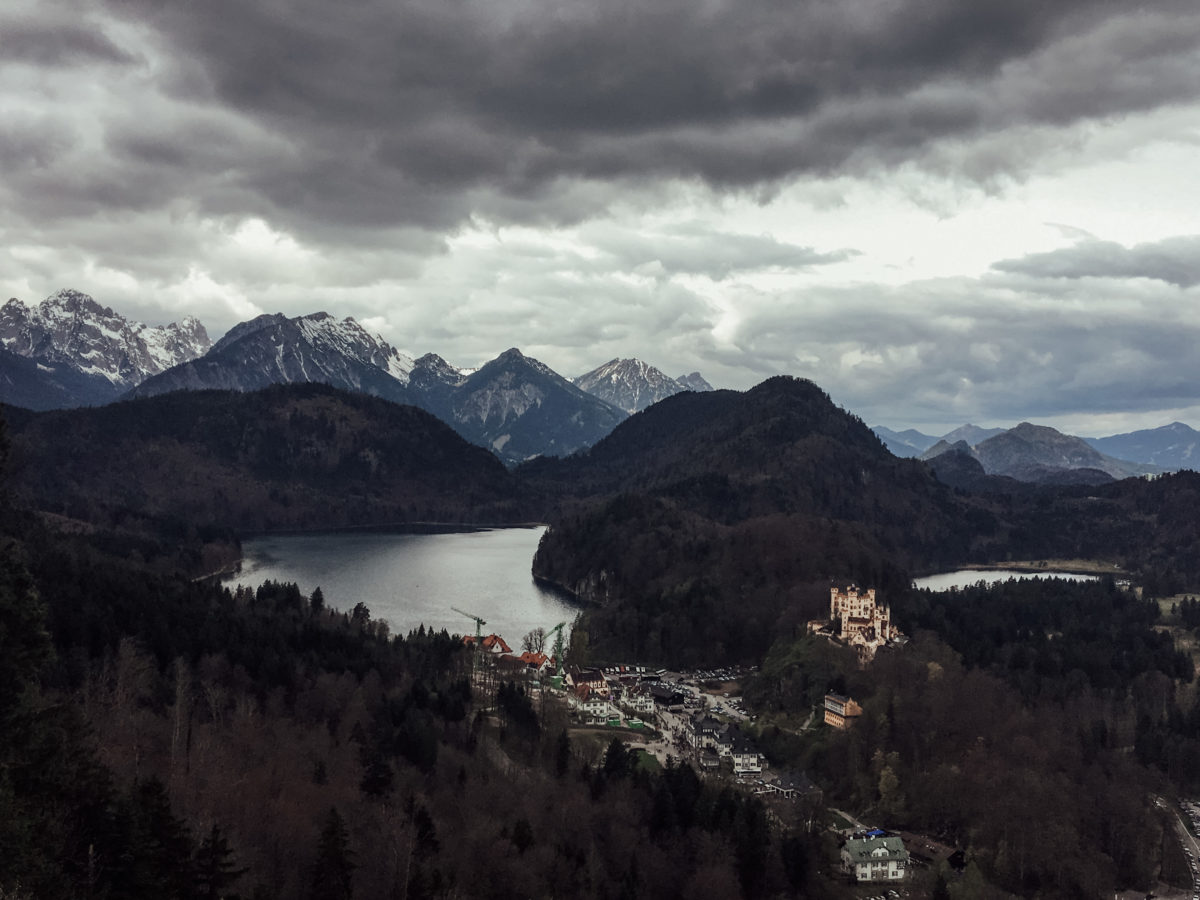
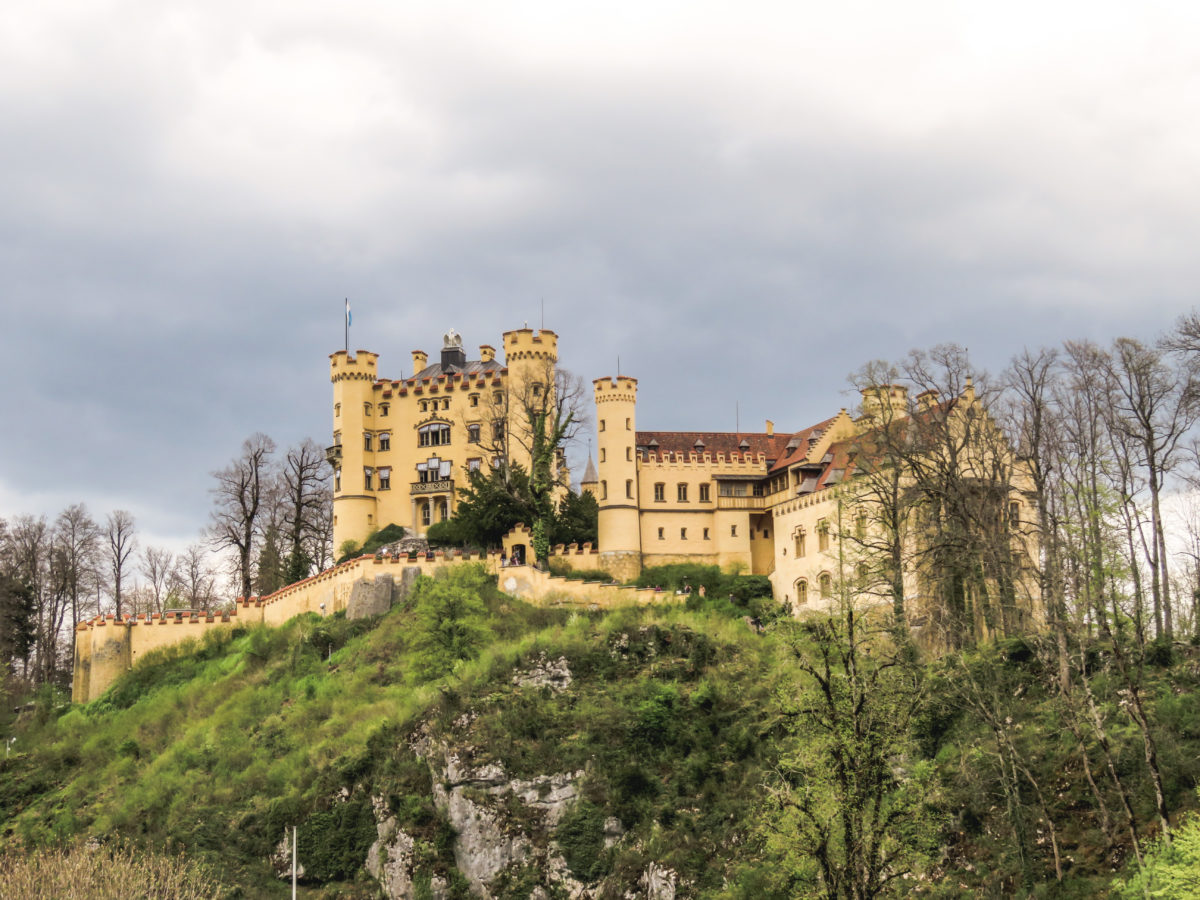
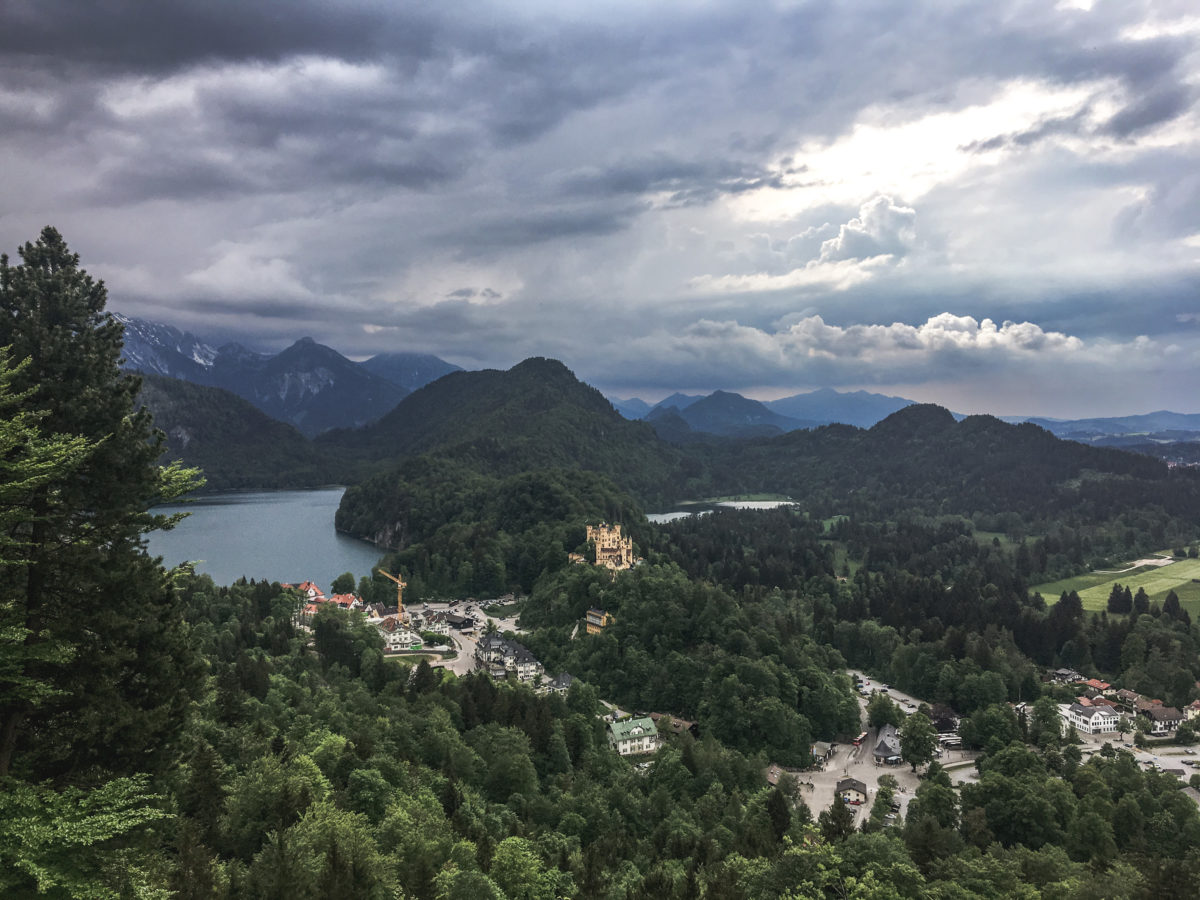
Without this castle, there would be no Neuschwanstein. Indeed, Ludwig II grew up in Hohenschwangau, built by his father King Maximilian II, and spent his summers there afterwards. It was also here that the king met Richard Wagner for the first time. It is also said that you can visit this place and discover some very magical places, which were not only part of the king’s imagination, but also remind you of its neighbour. Thereafter, a short walk around the lake is welcome before climbing up to Neuschwanstein.
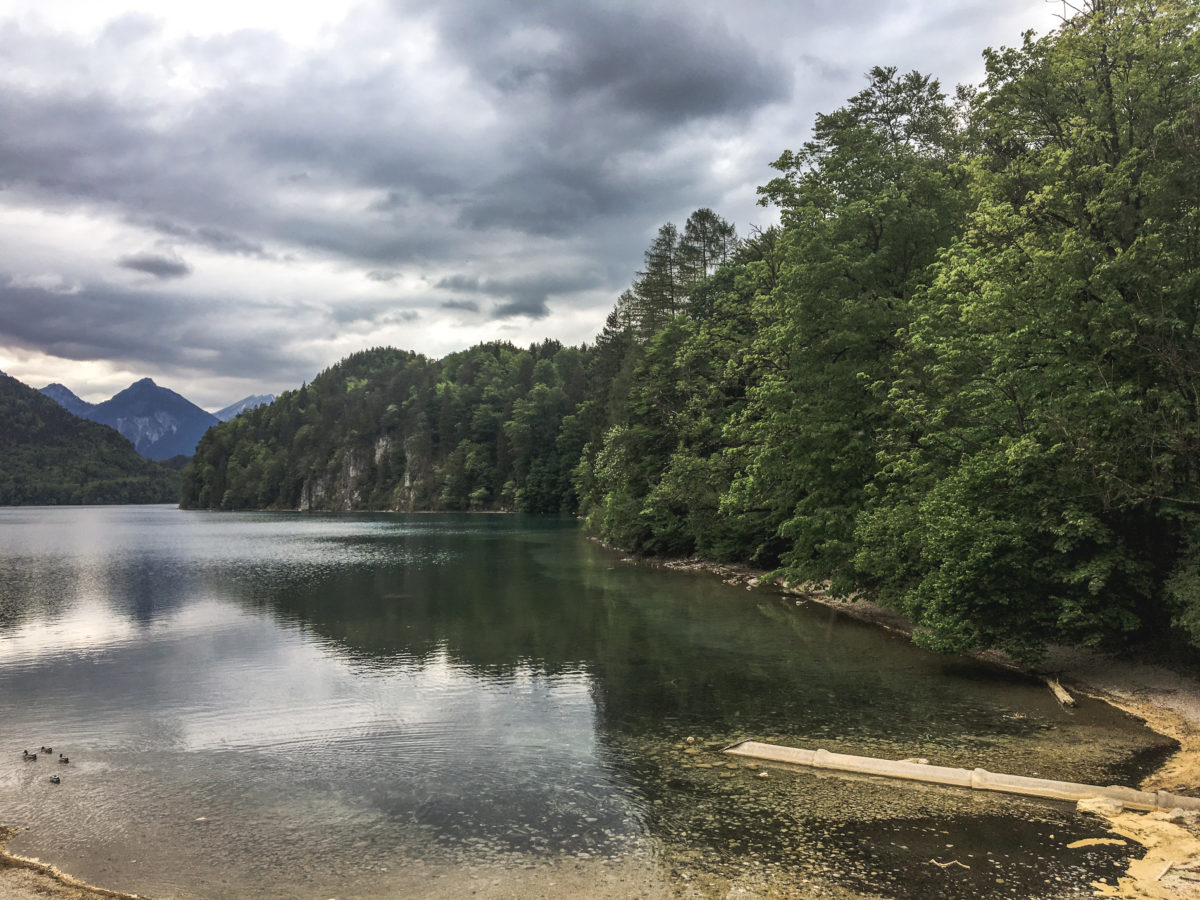

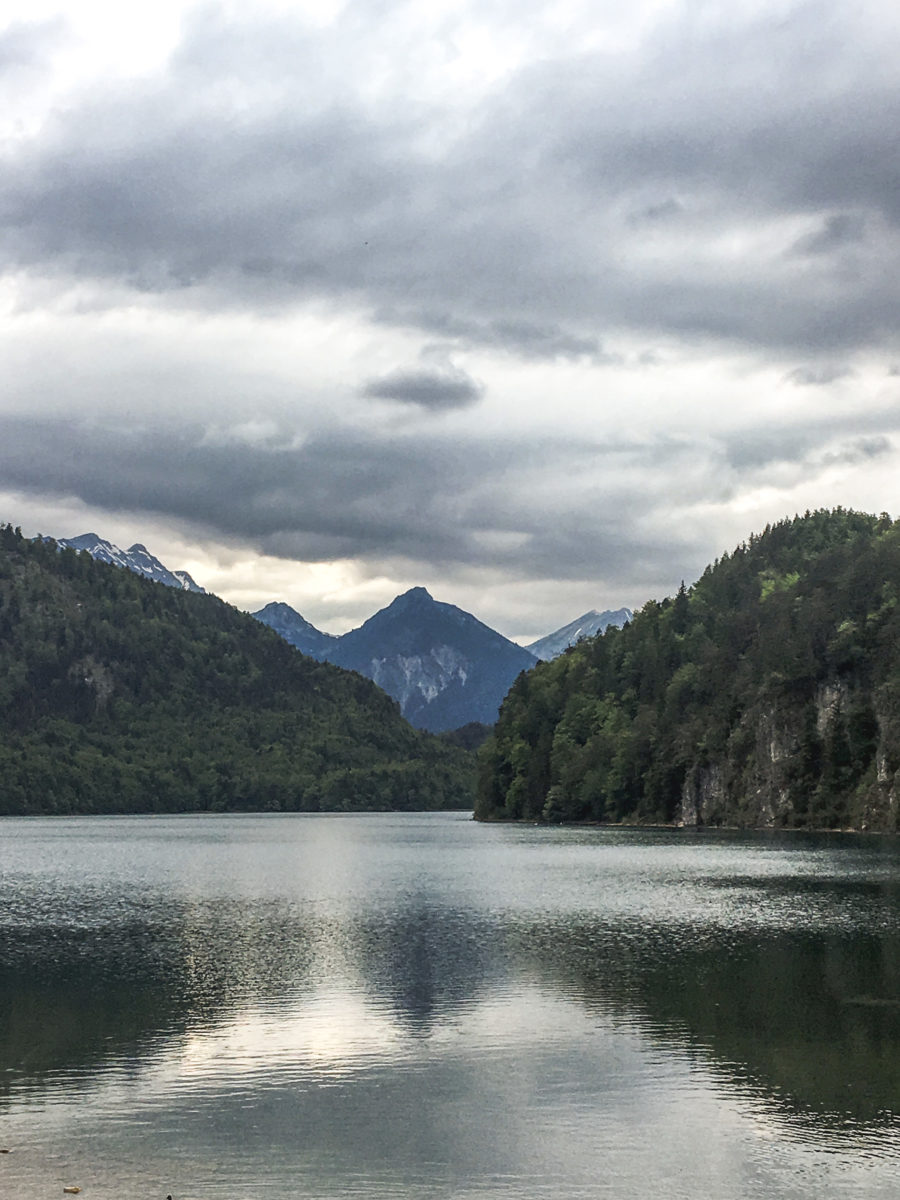
To get a magnificent view of the castle, you really have to be in Neuschwanstein. You won’t be able to miss this little yellow spot.
To get to the castles, you will have to leave your vehicle at one of the many car parks at the foot of the hill where Neuschwanstein is situated. You can then venture on foot to the castle and walk around the surroundings free of charge. However, the ticket office for Neuschwanstein and Hohenschwangau is located at the beginning of the path to the fairy-tale castle. In addition, a bus can take you to the castle free of charge (on both my visits), although a short walk will do you no harm. Above all, avoid riding in a horse-drawn carriage! Certainly, the romantic aspect could make you want to, but in view of the treatment given by the coachmen to the horses, this is a tourist practice that should clearly be abolished (in my humble opinion…)!
More on Ludwig II :
Extravagant, idealistic, romantic, crazy, the descriptions are numerous to characterise King Ludwig II and his character has since entered German legends. He was initially a young man fascinated by music, art and romantic tales and was not understood by his parents Maximilian II and Mary. As a result, he spent a very lonely and sad childhood. In 1864 Otto Ludwig Friedrich Wilhem became Ludwig II of Bavaria. Having a preference for men, he was, however, engaged to the sister of Sissi, the incredible empress of Austria, with whom he was very close, but he broke off his engagement in 1867.
Living out of step with his world, Ludwig II admired Richard Wagner, who made him his benefactor. Taking advantage of the king’s love for his work, Wagner led him to spend considerable sums of money for his benefit. For example, Ludwig II financed the construction of the Bayreuth Festspielhaus, which the musician had wanted and designed for the presentation of his operas. The development of Germanic culture and the promotion of a cultural ideal were part of the king’s goals of greatness, as was King Ludwig XIV, his absolute model. As a reminder, his Linderhof Palace was greatly inspired by Versailles.
The story of his death is, among other things, an integral part of his legend. Declared insane following a request for a psychiatric examination by his ministers, he was interned at Berg Palace, where he died the same month of his internment in Lake Starnberg, located on the outskirts of the castle. He was found with his doctor, drowned in barely a few centimetres of water… Mystery, no witnesses, no investigation, they used the death of the sovereign to open Neuschwanstein to pay off the royal debts. This is when the myth was born, which is maintained today for the purposes of tourist exploitation.
FÜSSEN (KM 385)
Füssen is the gateway to the Bavarian Alps and the word romantic really takes on a whole new meaning in this town. To end this route in style, you will arrive in the romantic soul of Bavaria, although in half a day you will have done a tour of the town. As a Bavarian holiday resort with its close proximity to castles, you will have the opportunity to rest after having travelled the longest tourist route in the country. This is also the time for sightseeing, strolling and shopping.
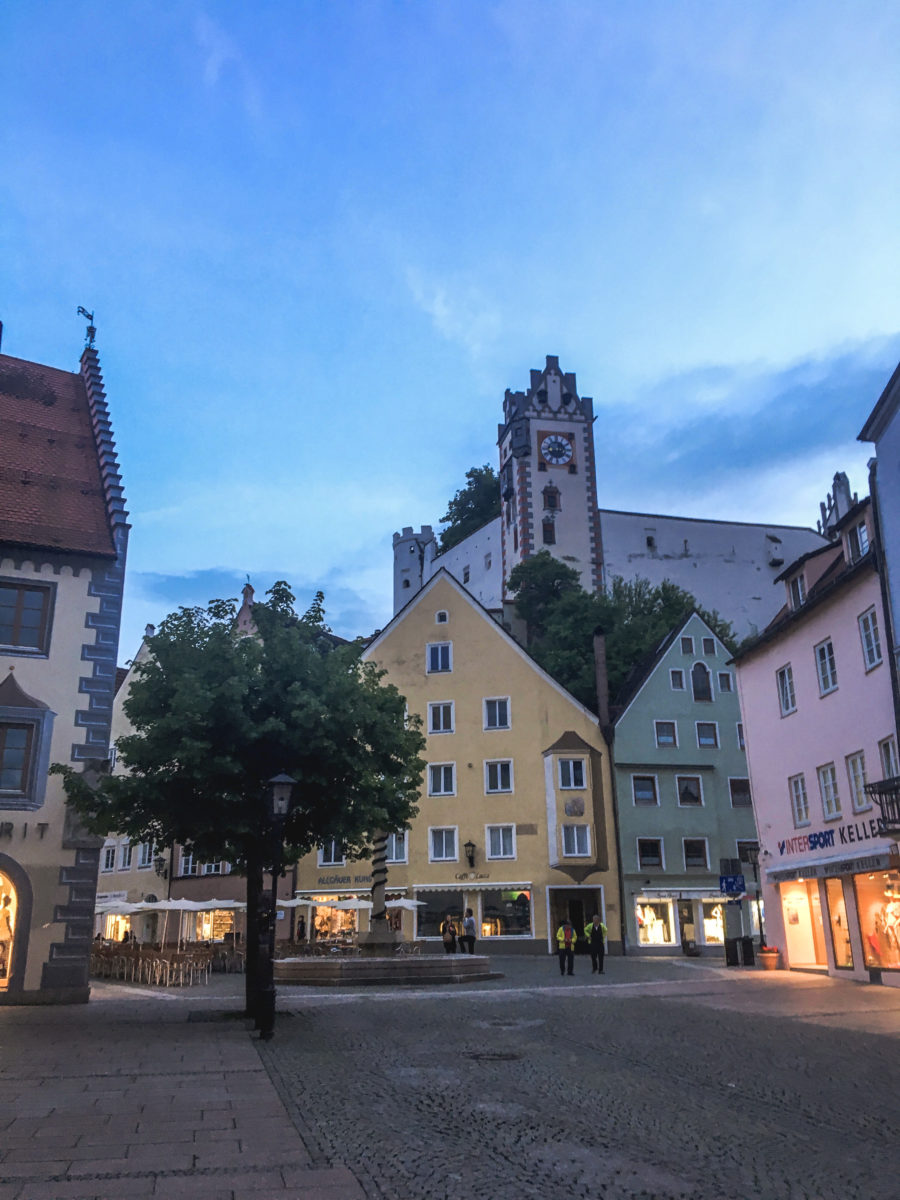
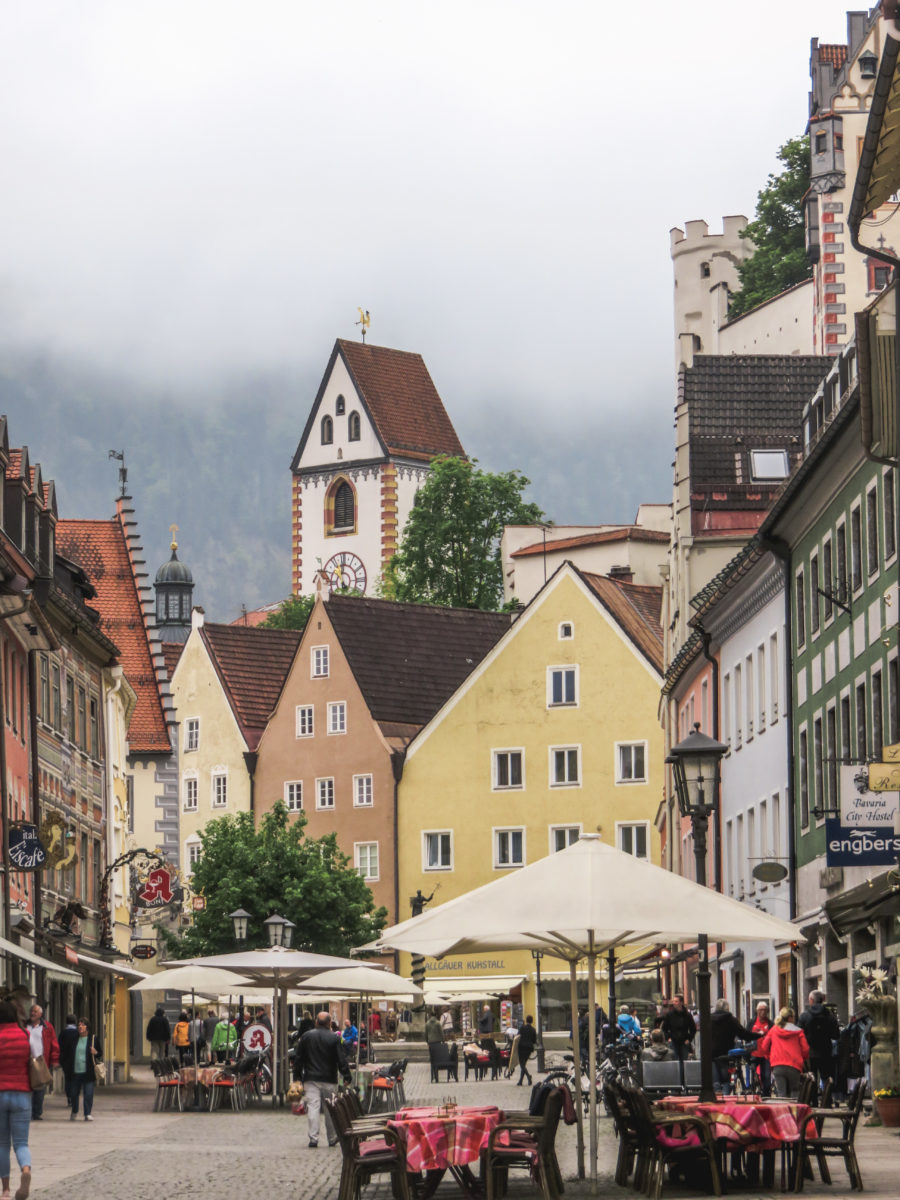
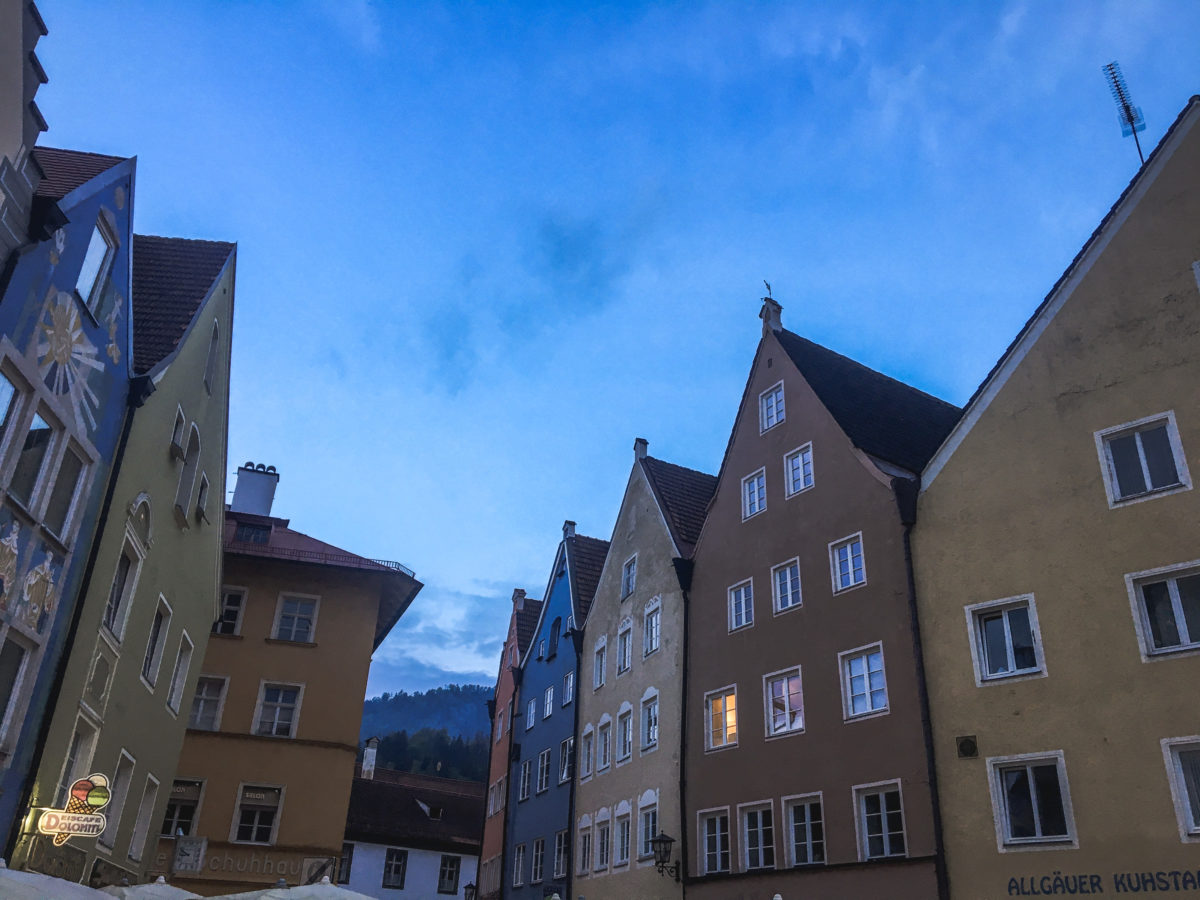
If you are for other sympathetic German gateways, please click here.
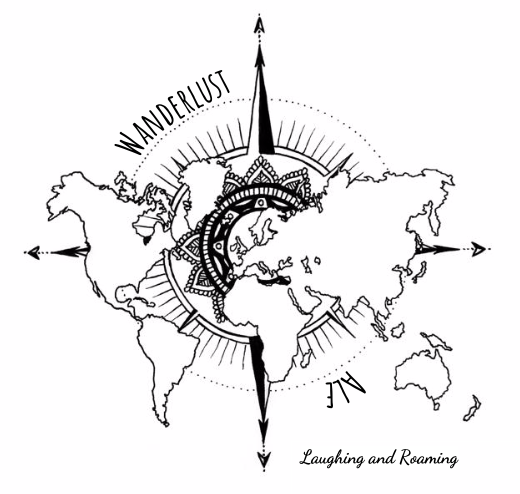
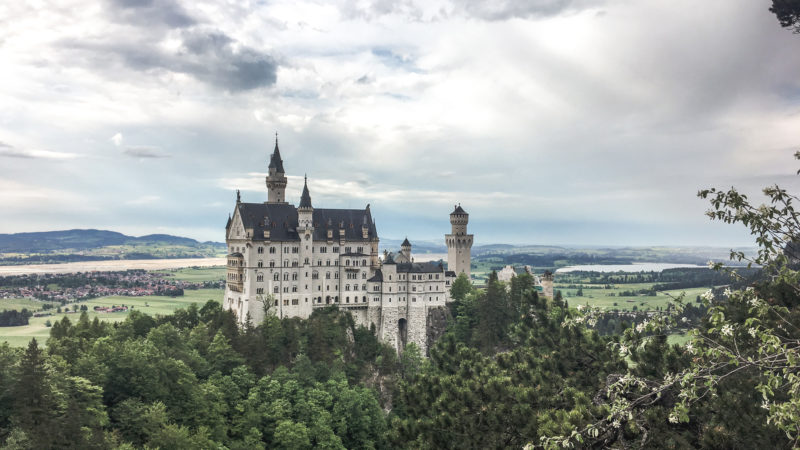
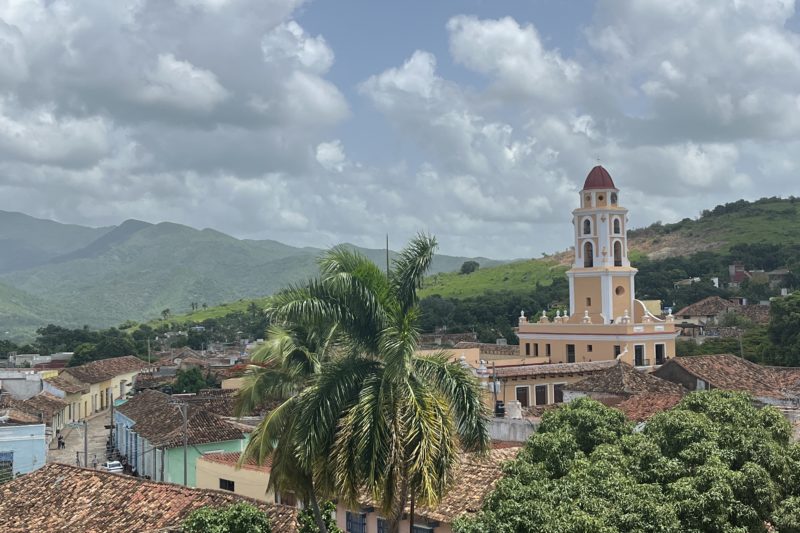
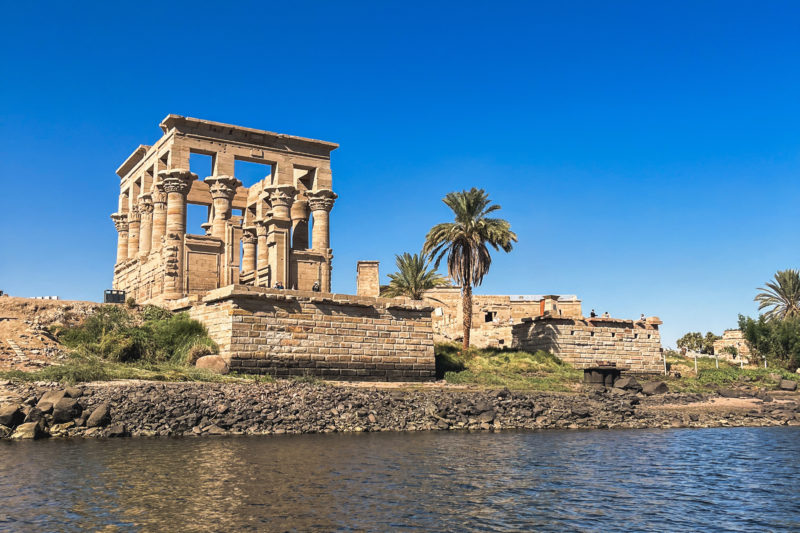
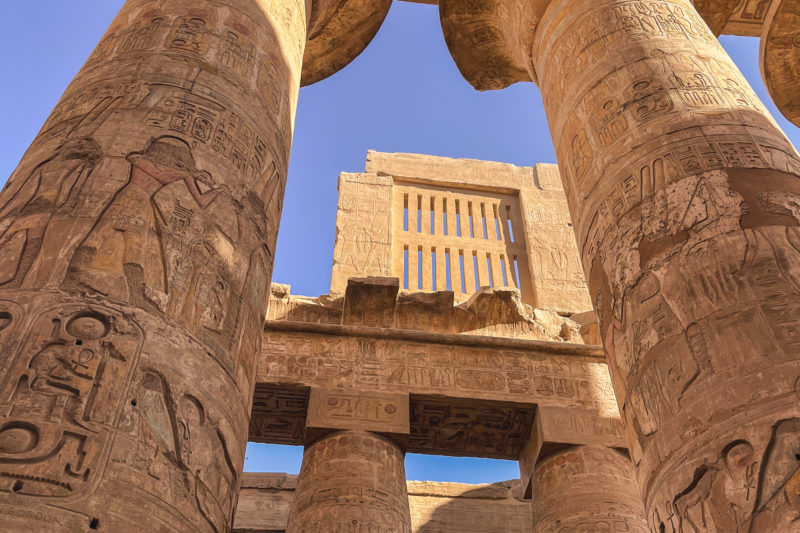
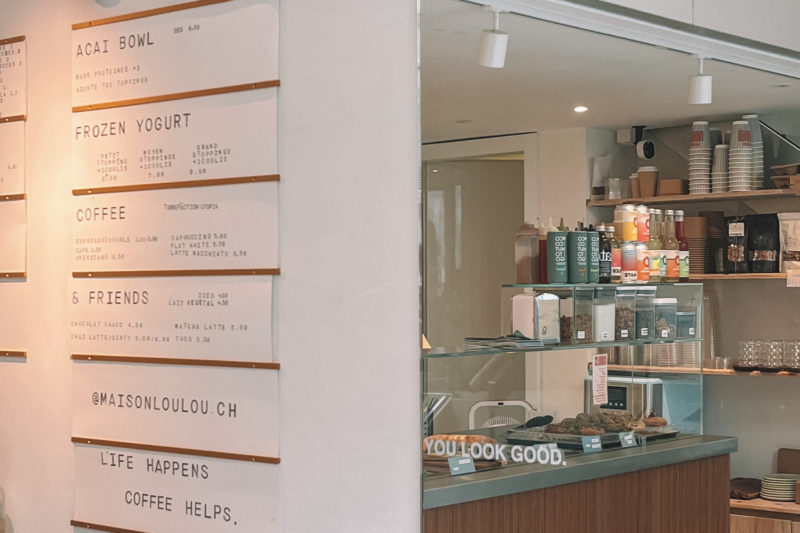
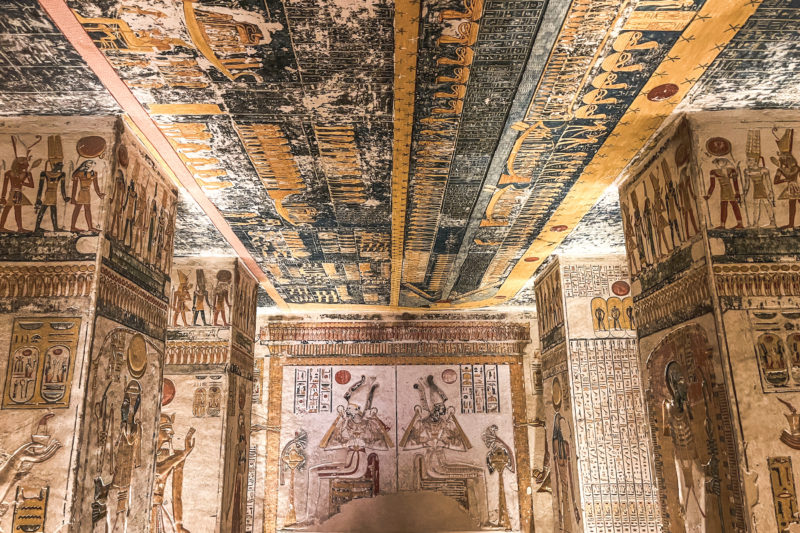
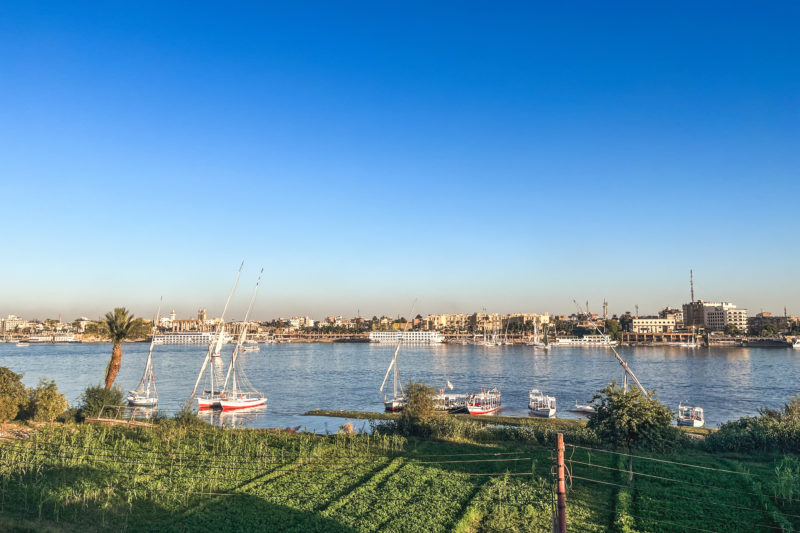
It’s an remarkable post for all the web visitors; they will get
advantage from it I am sure.